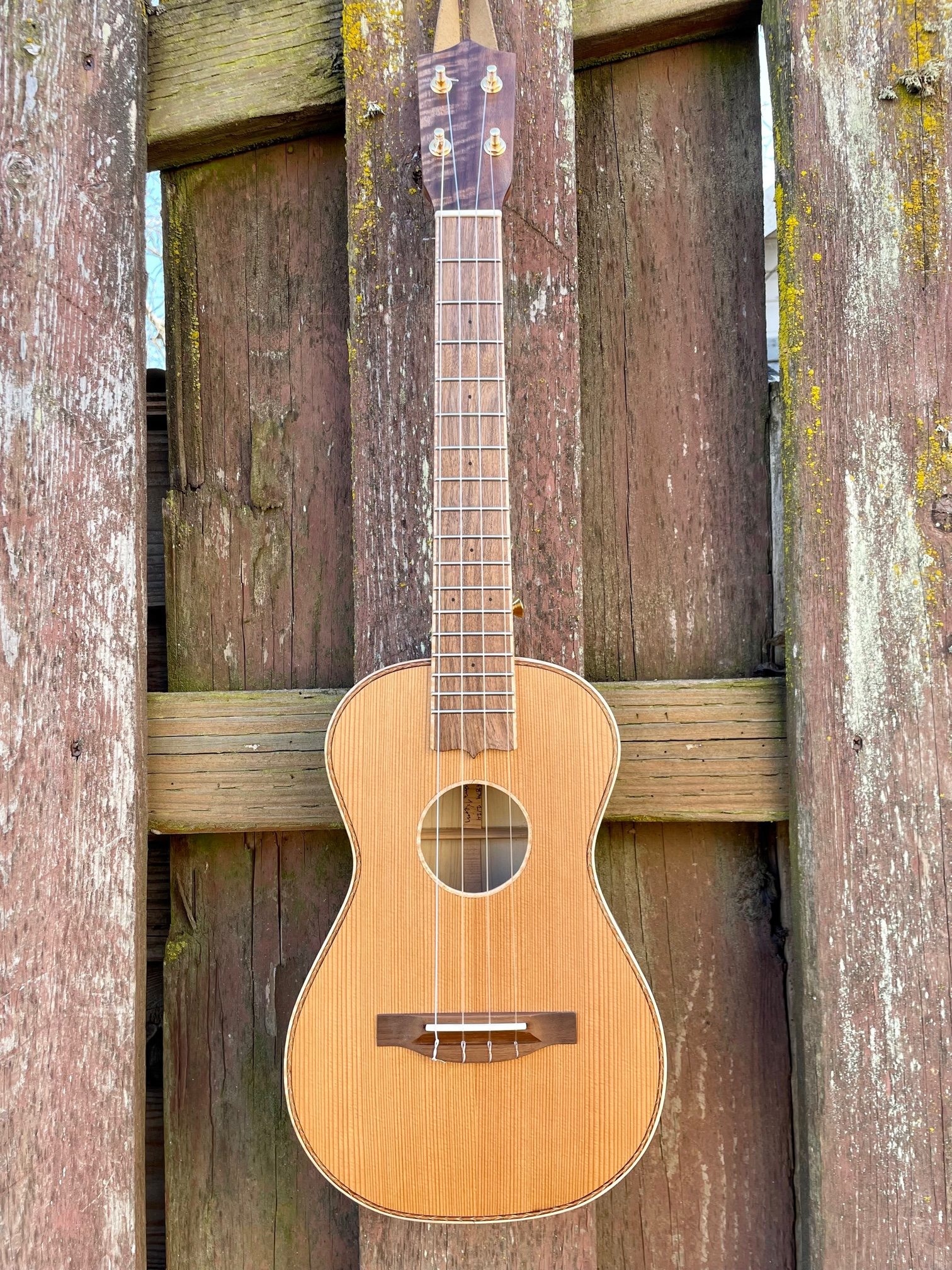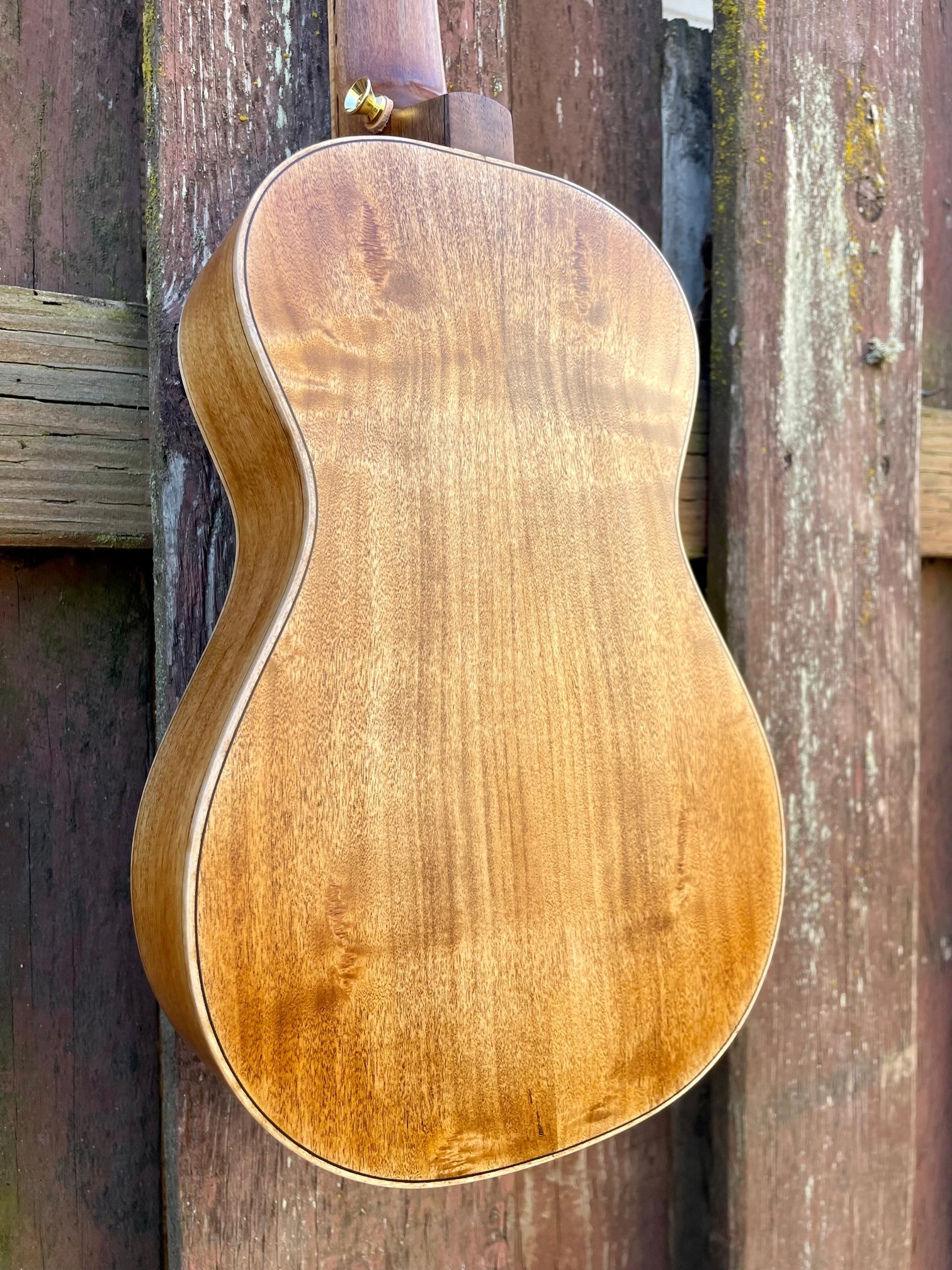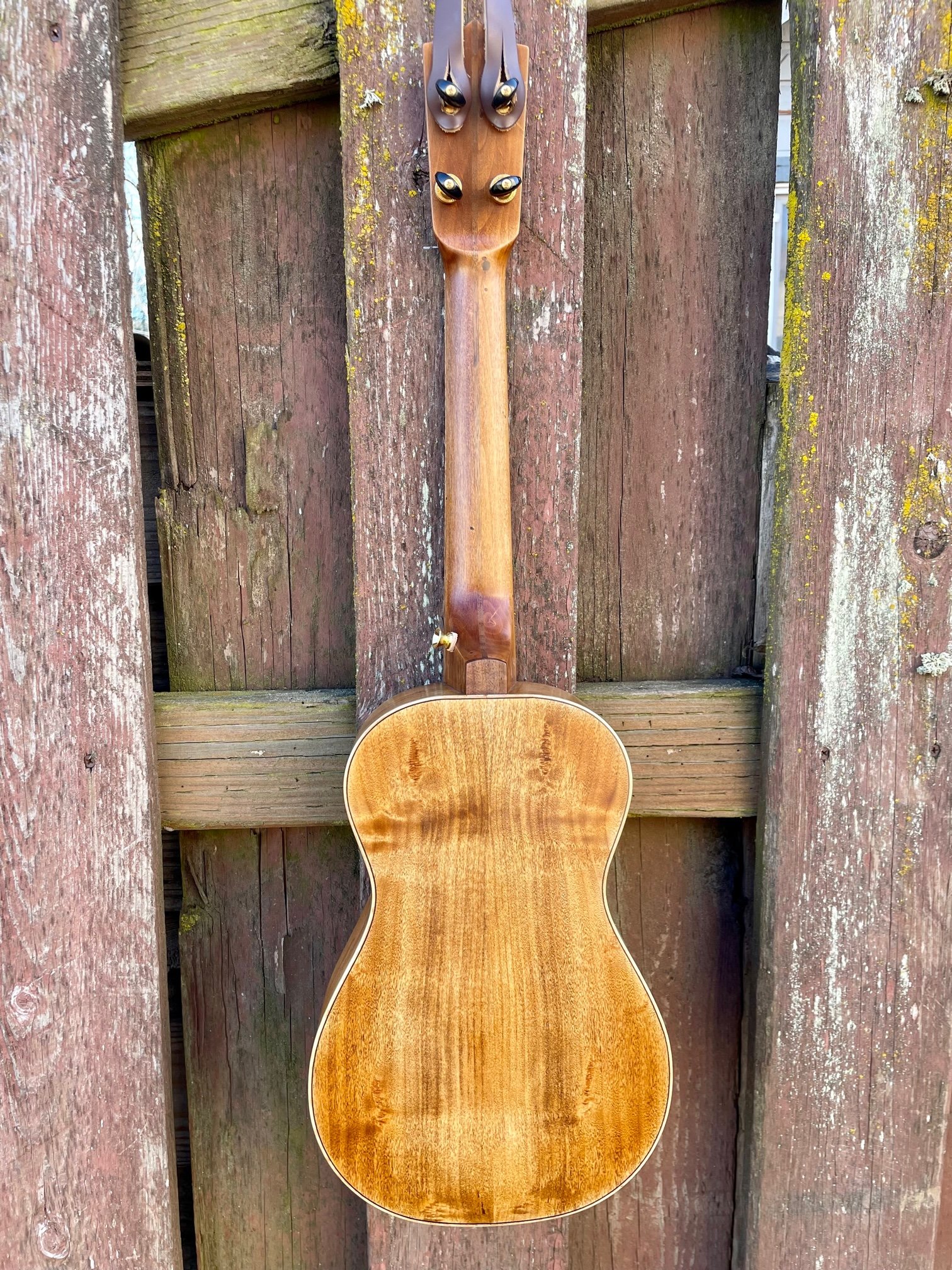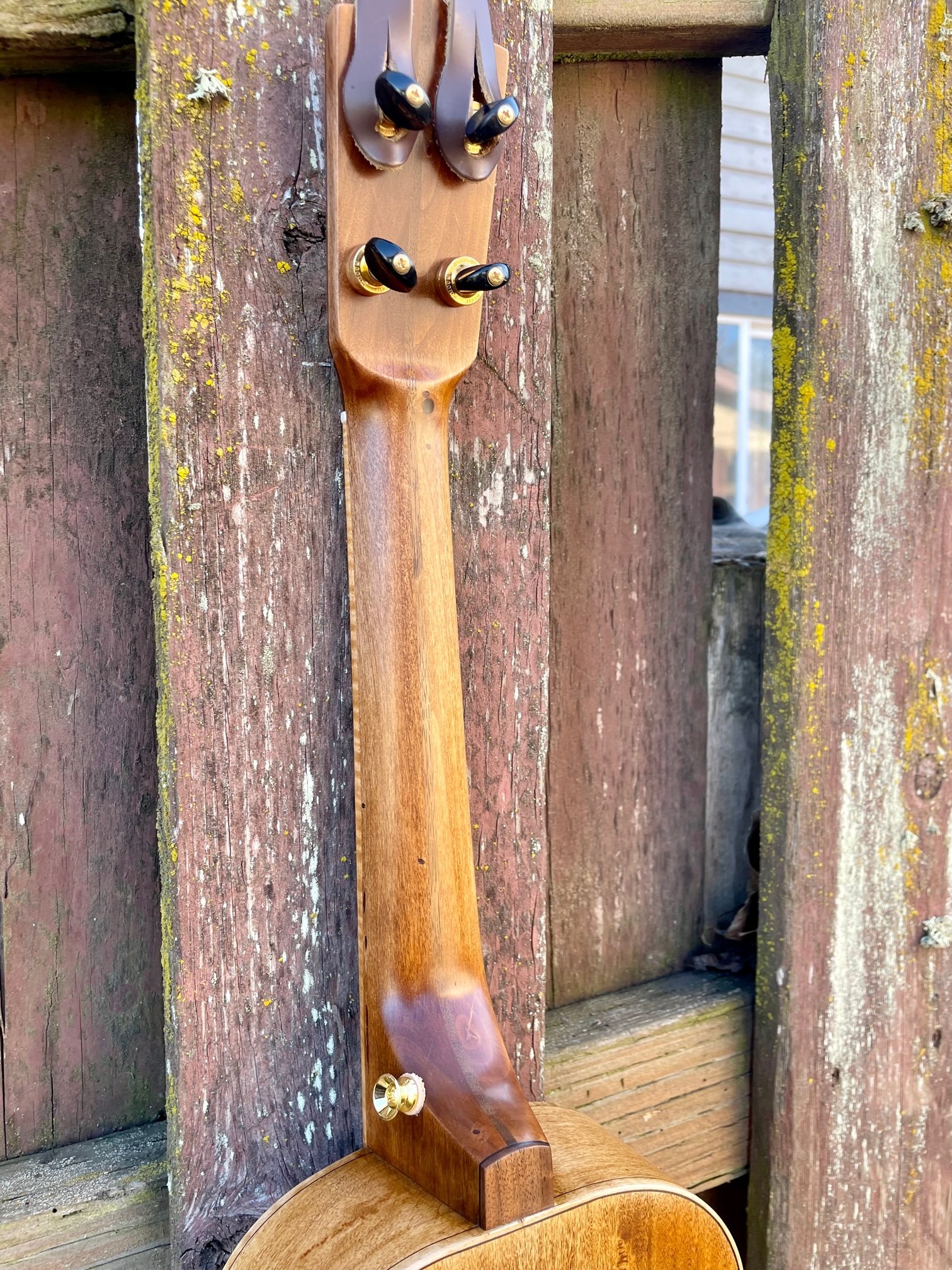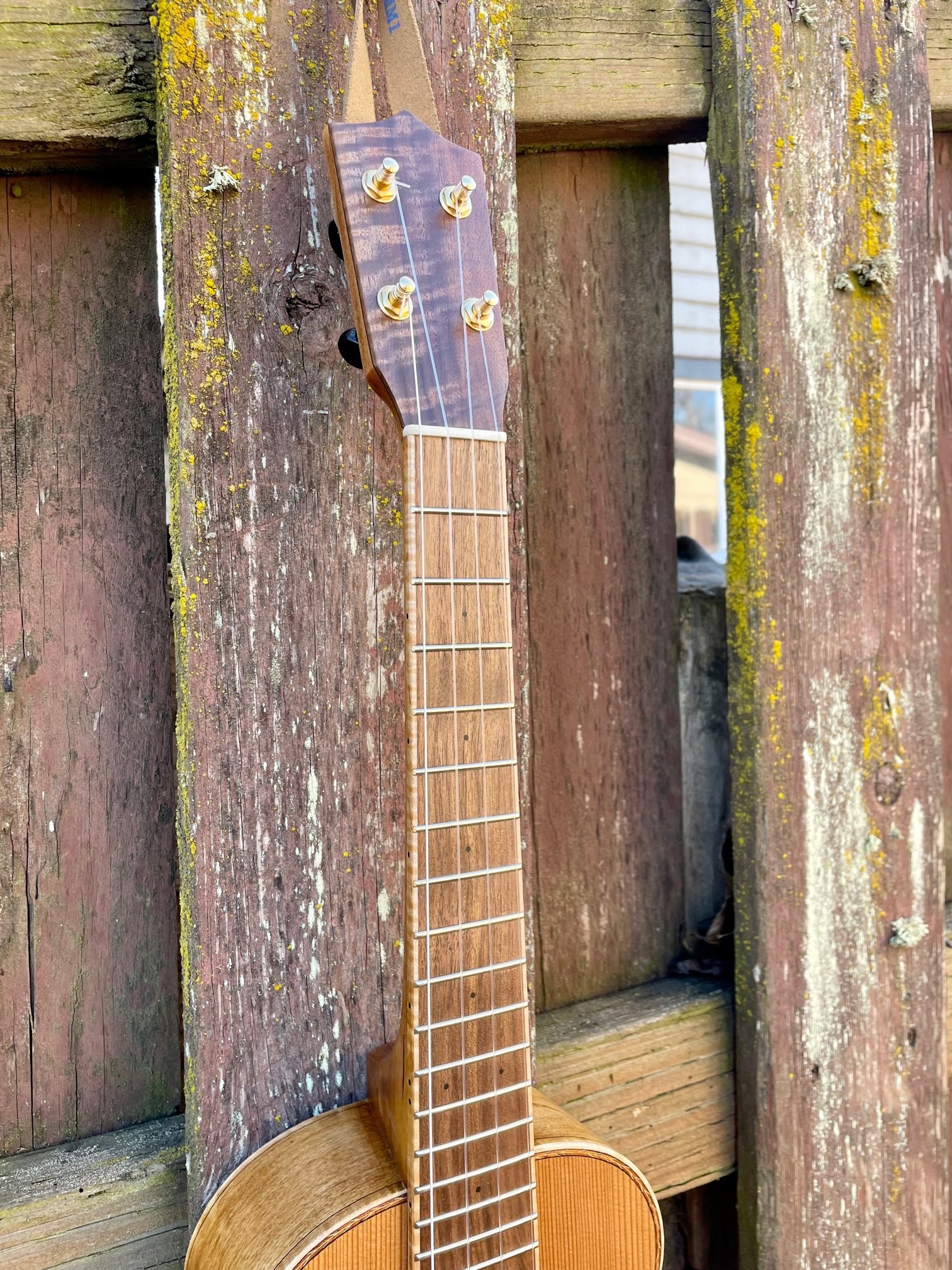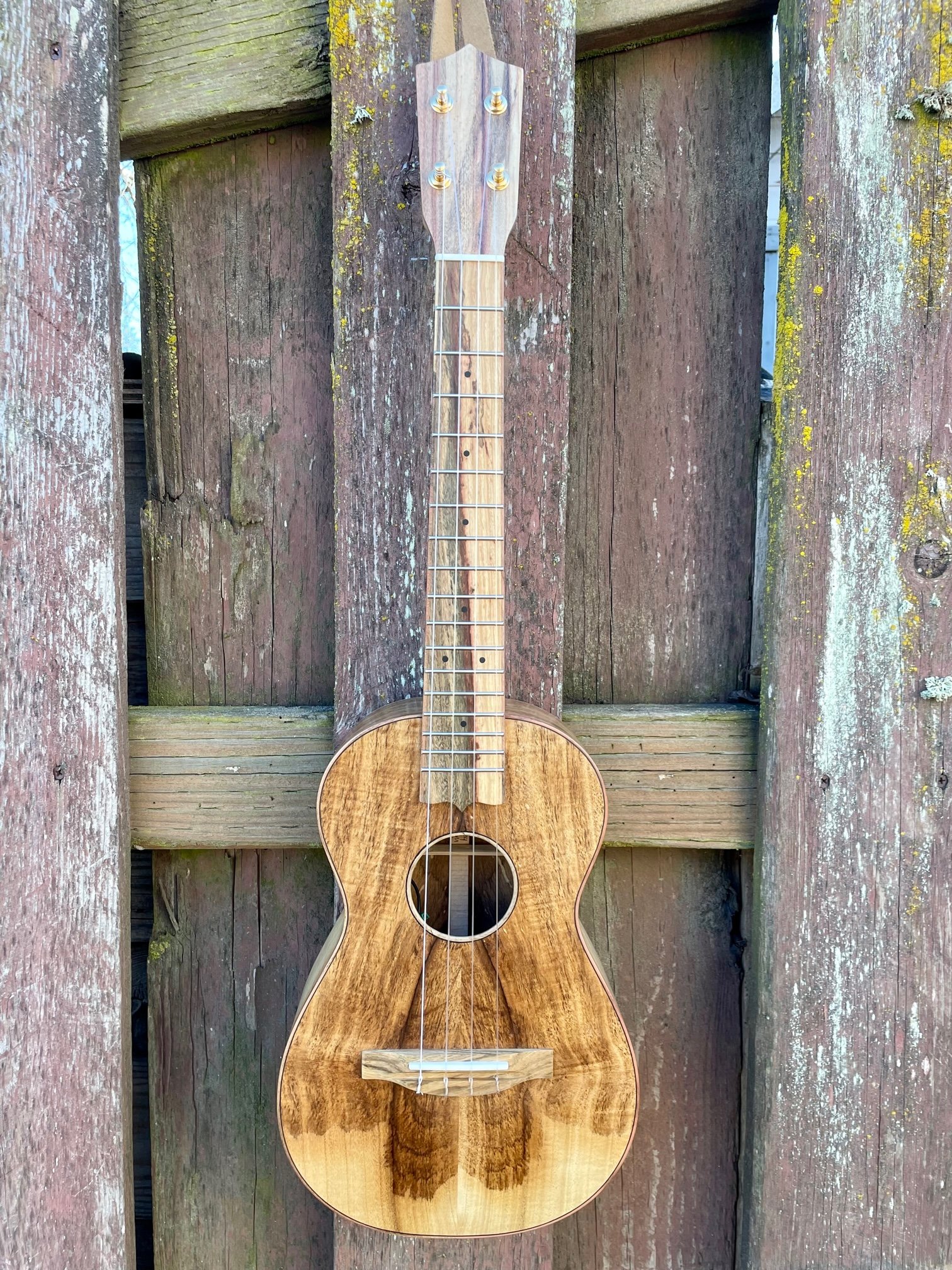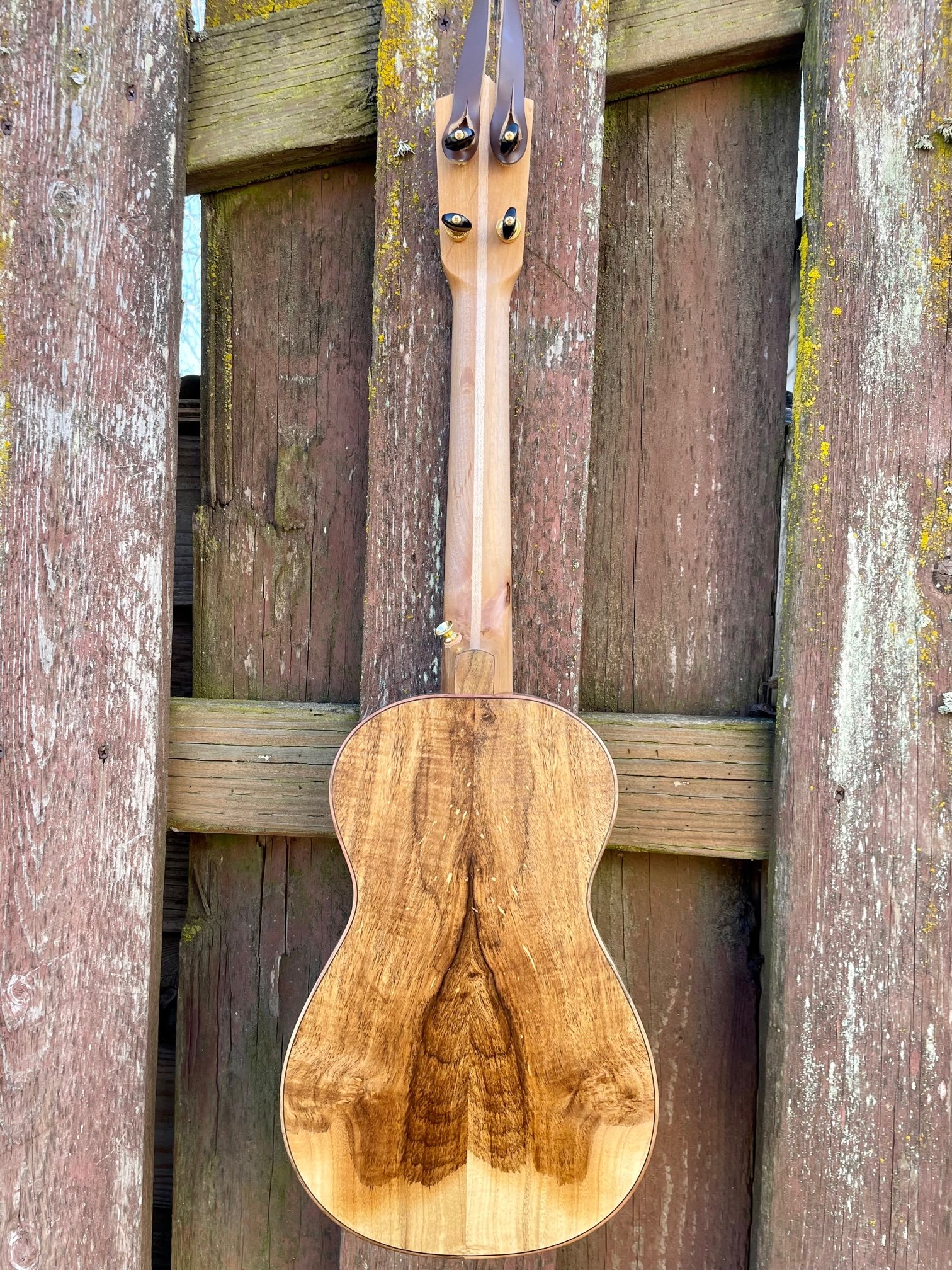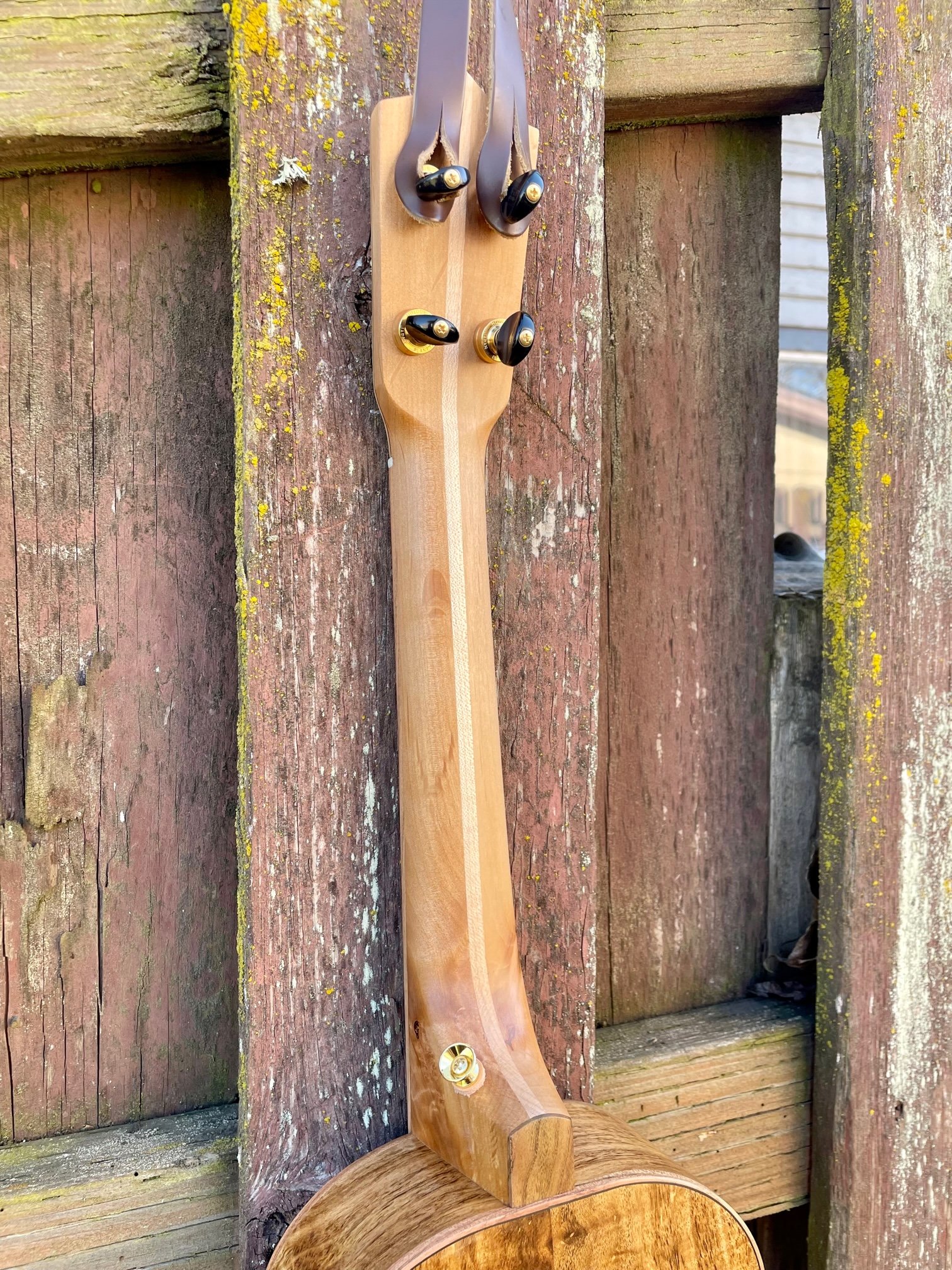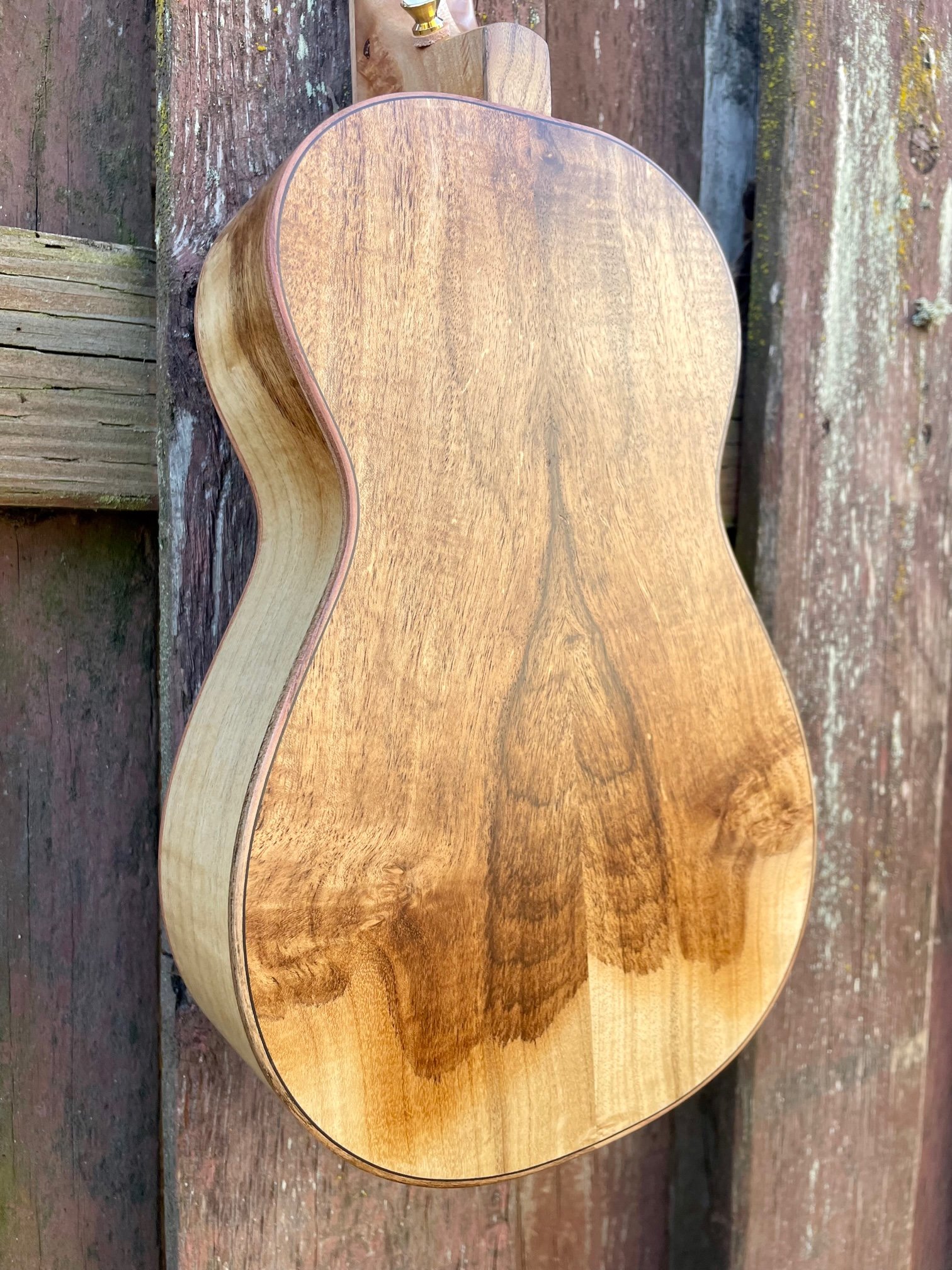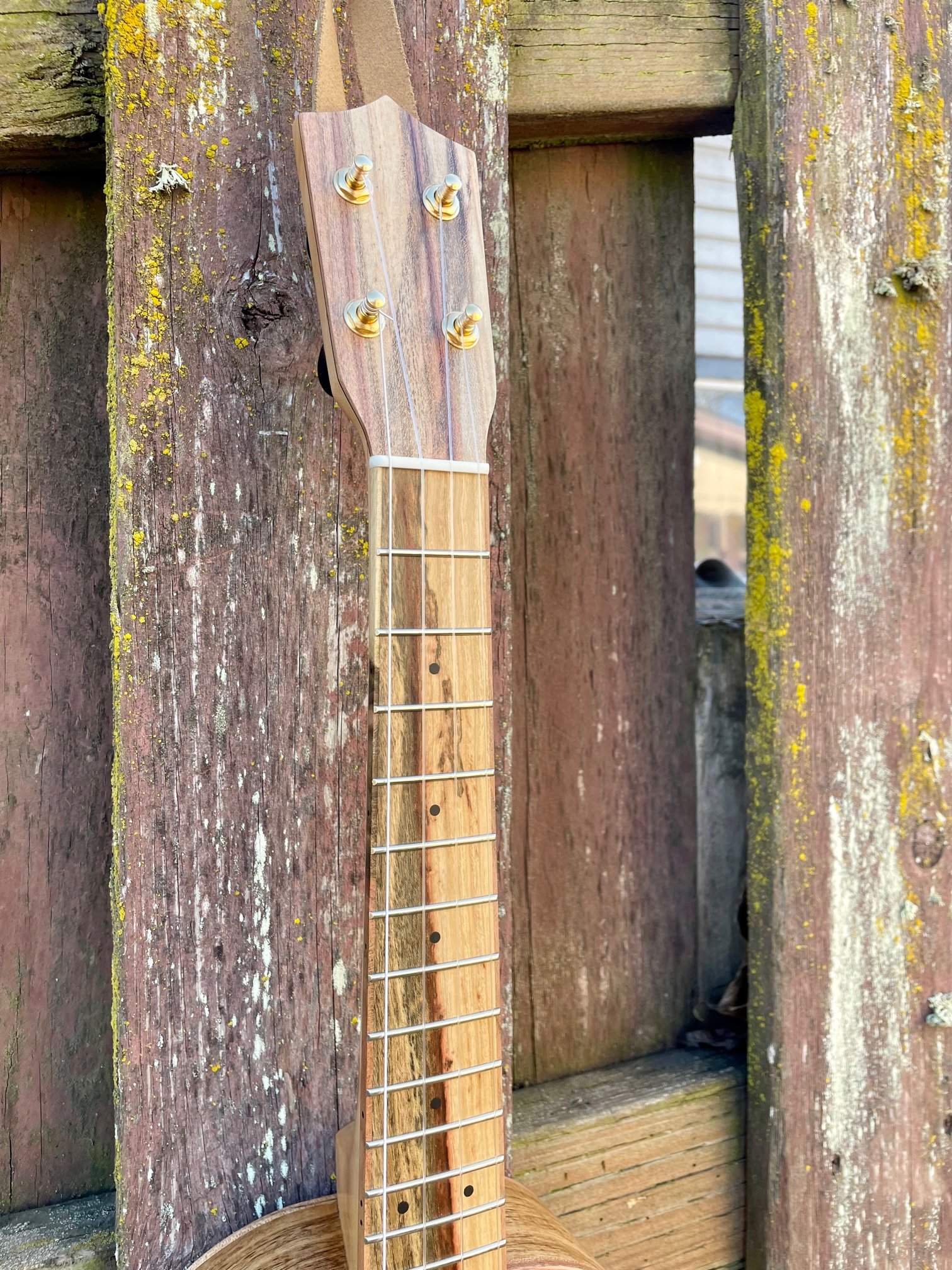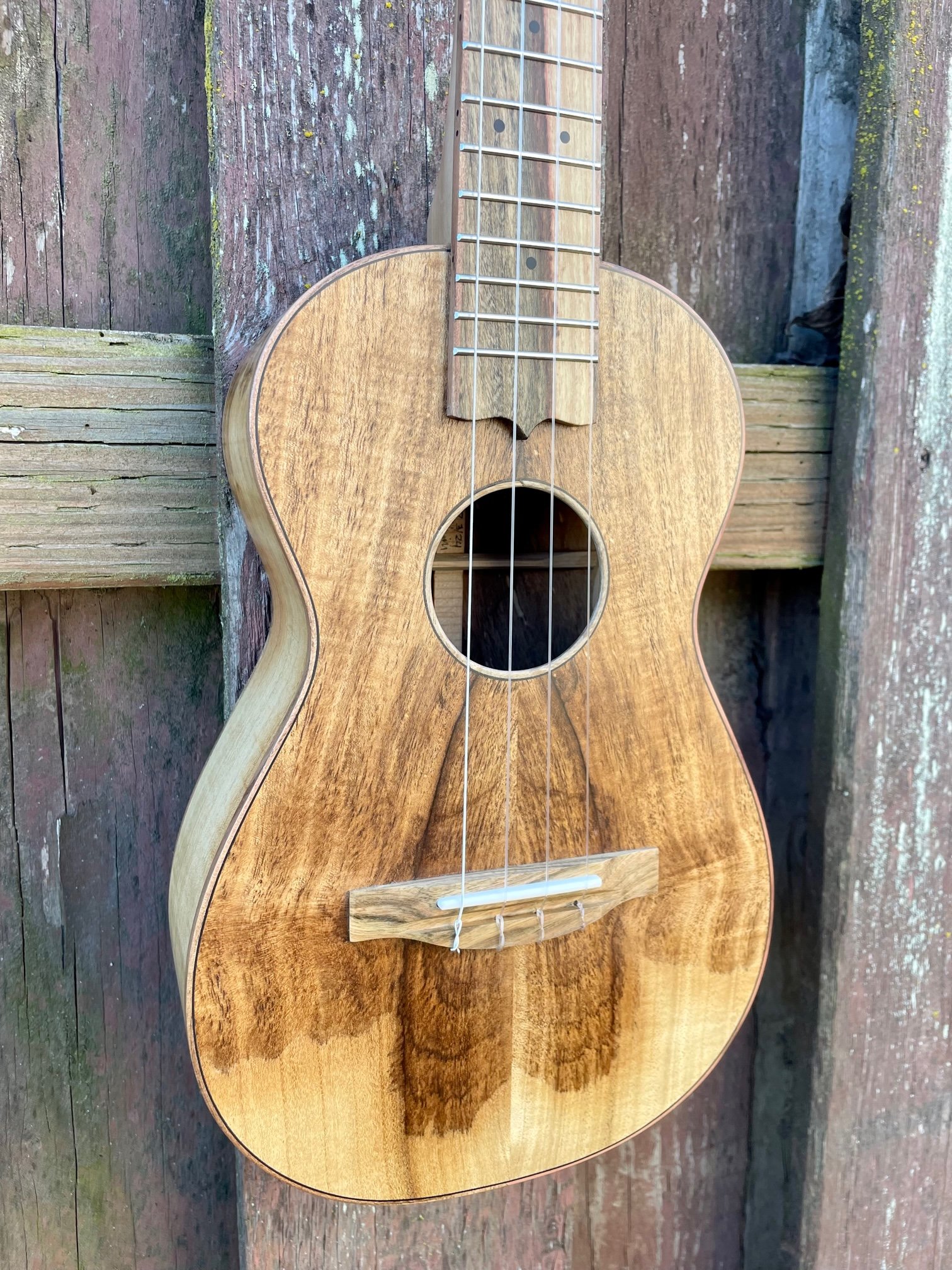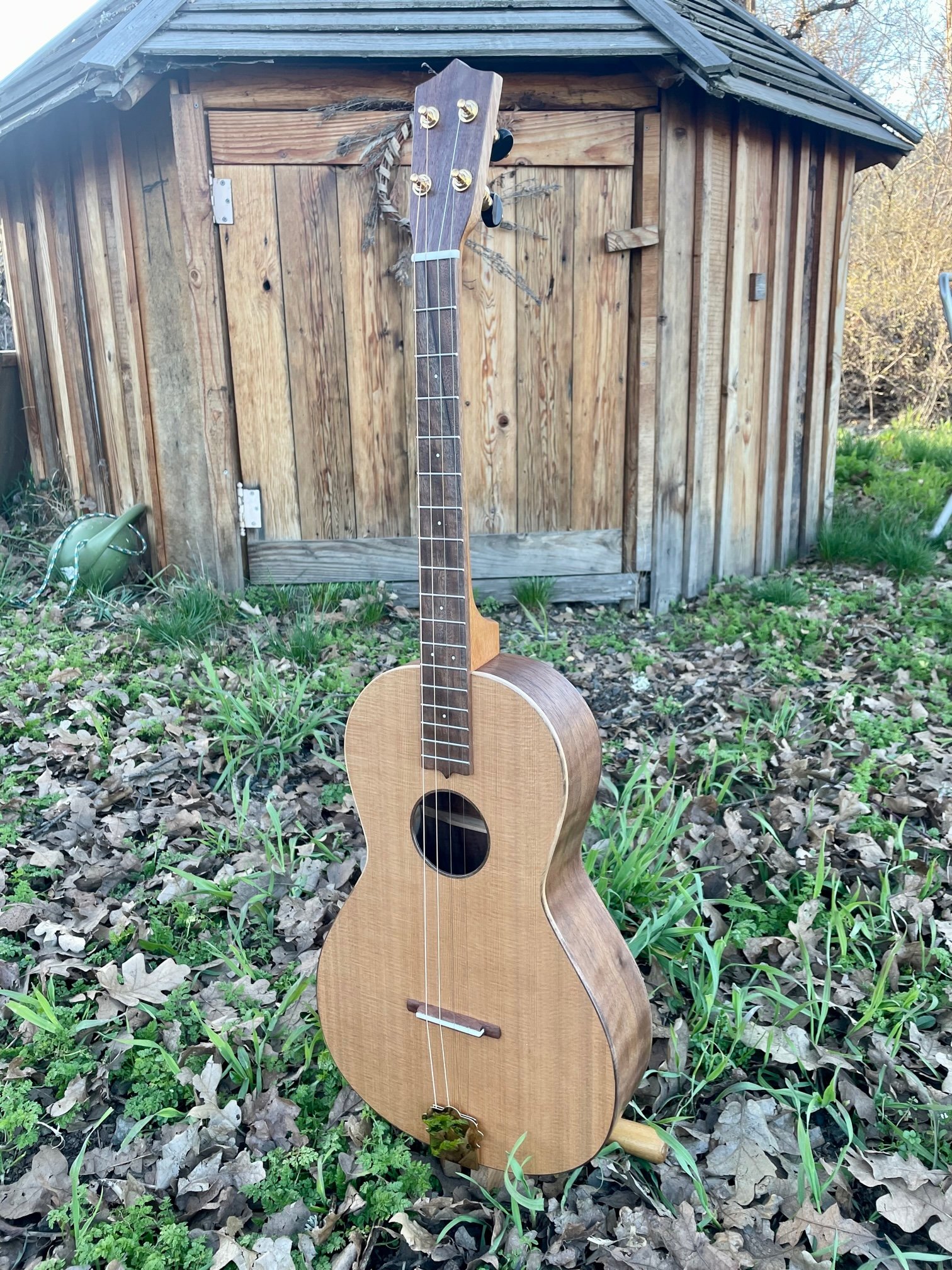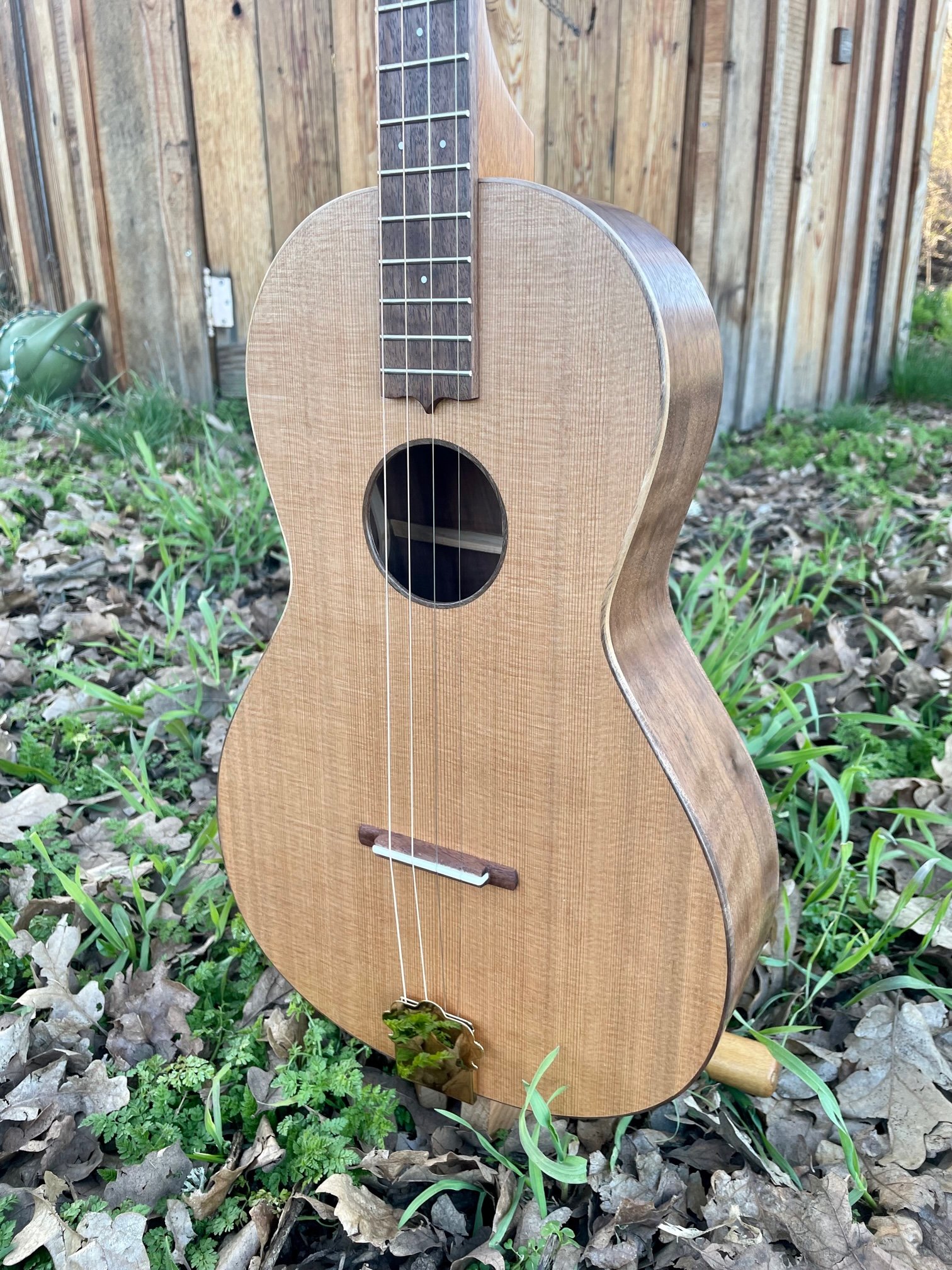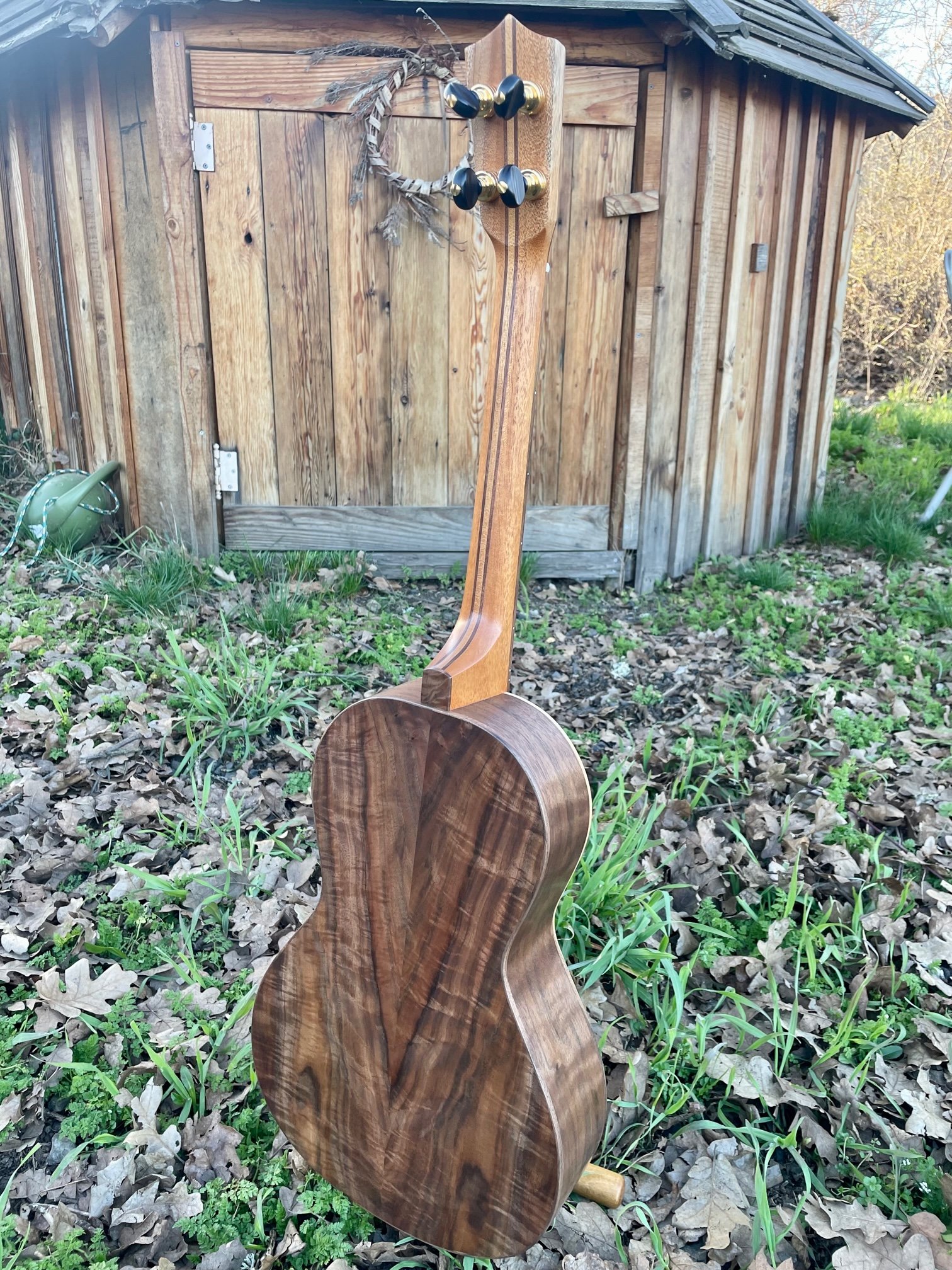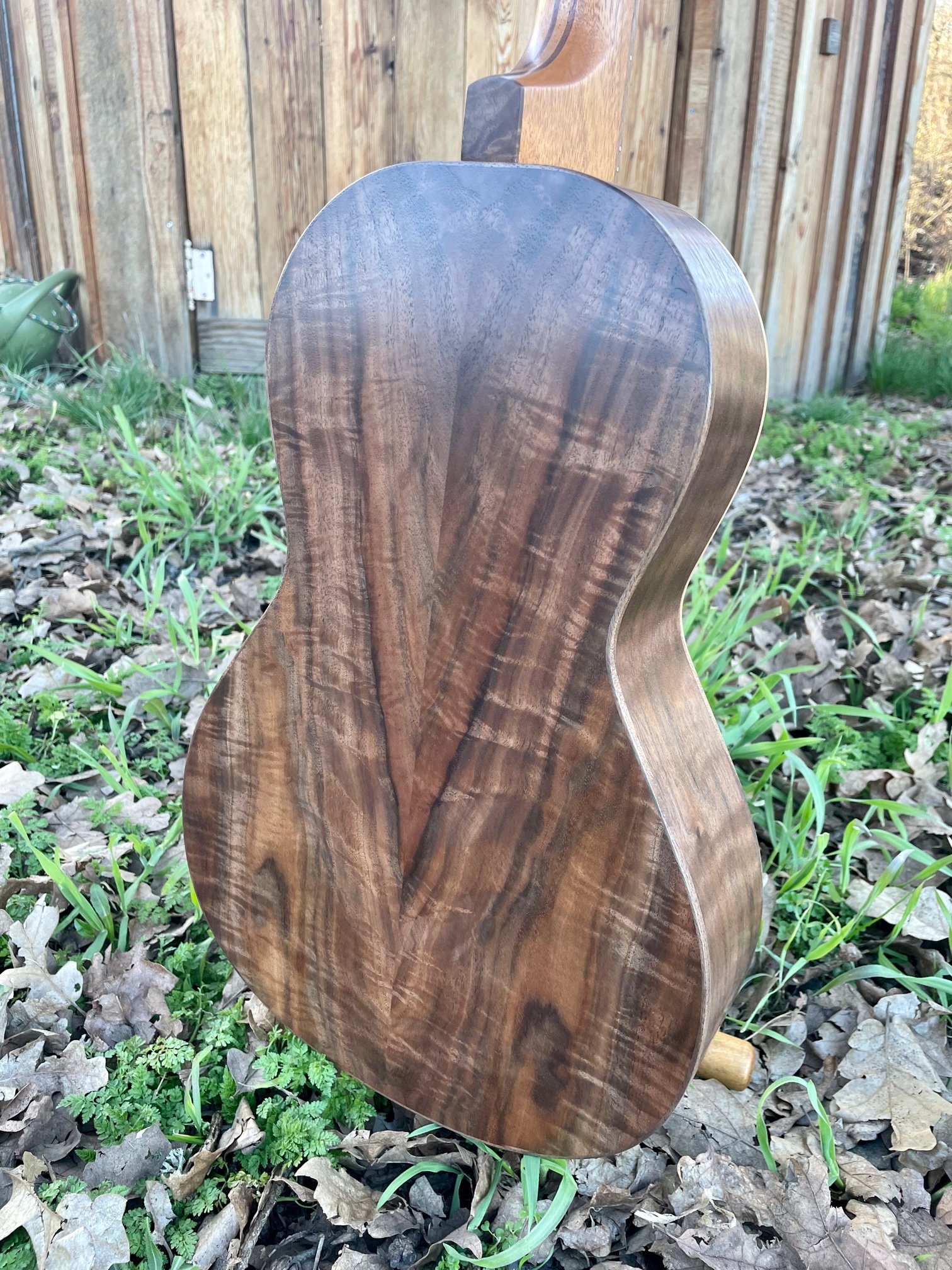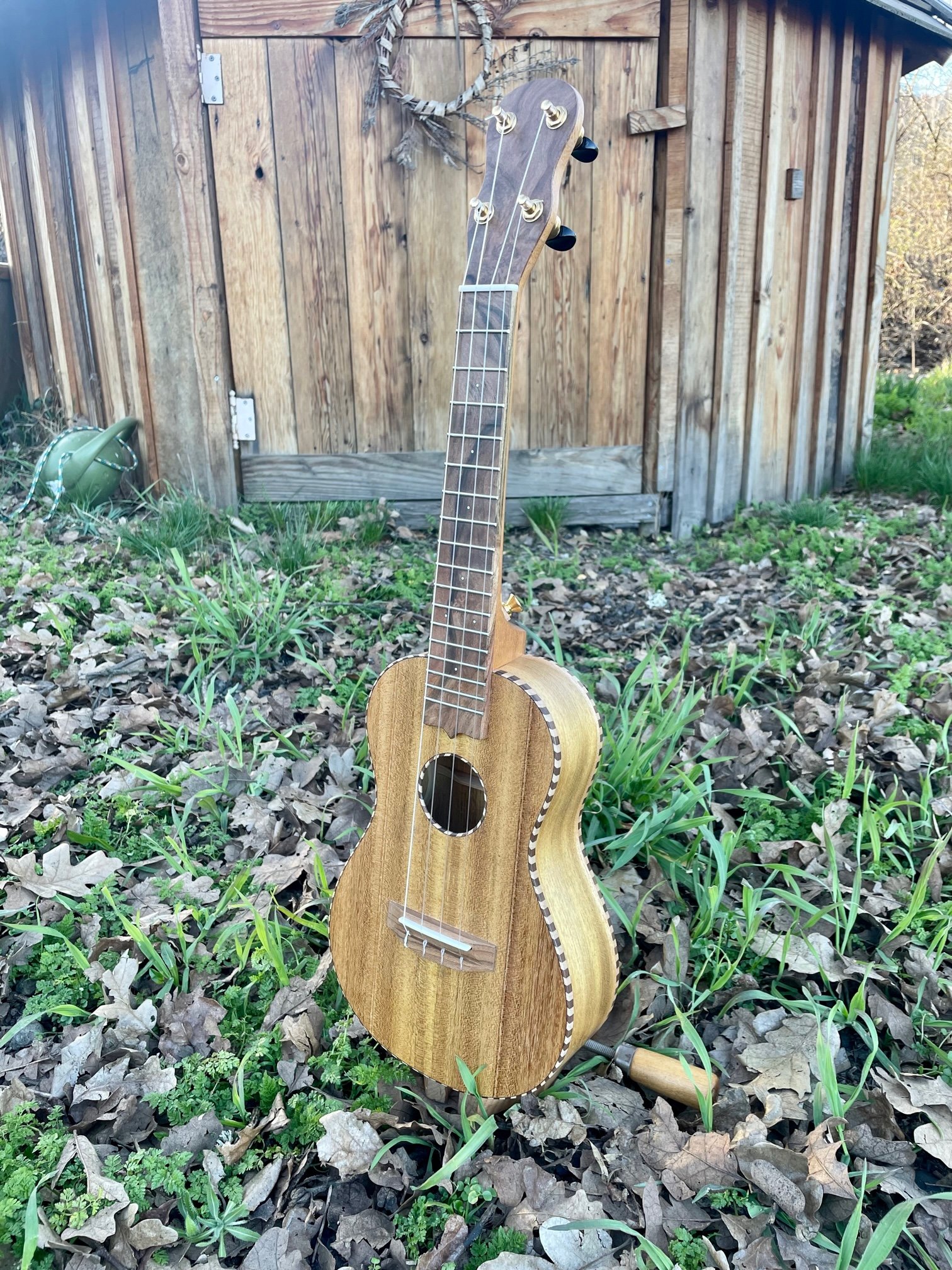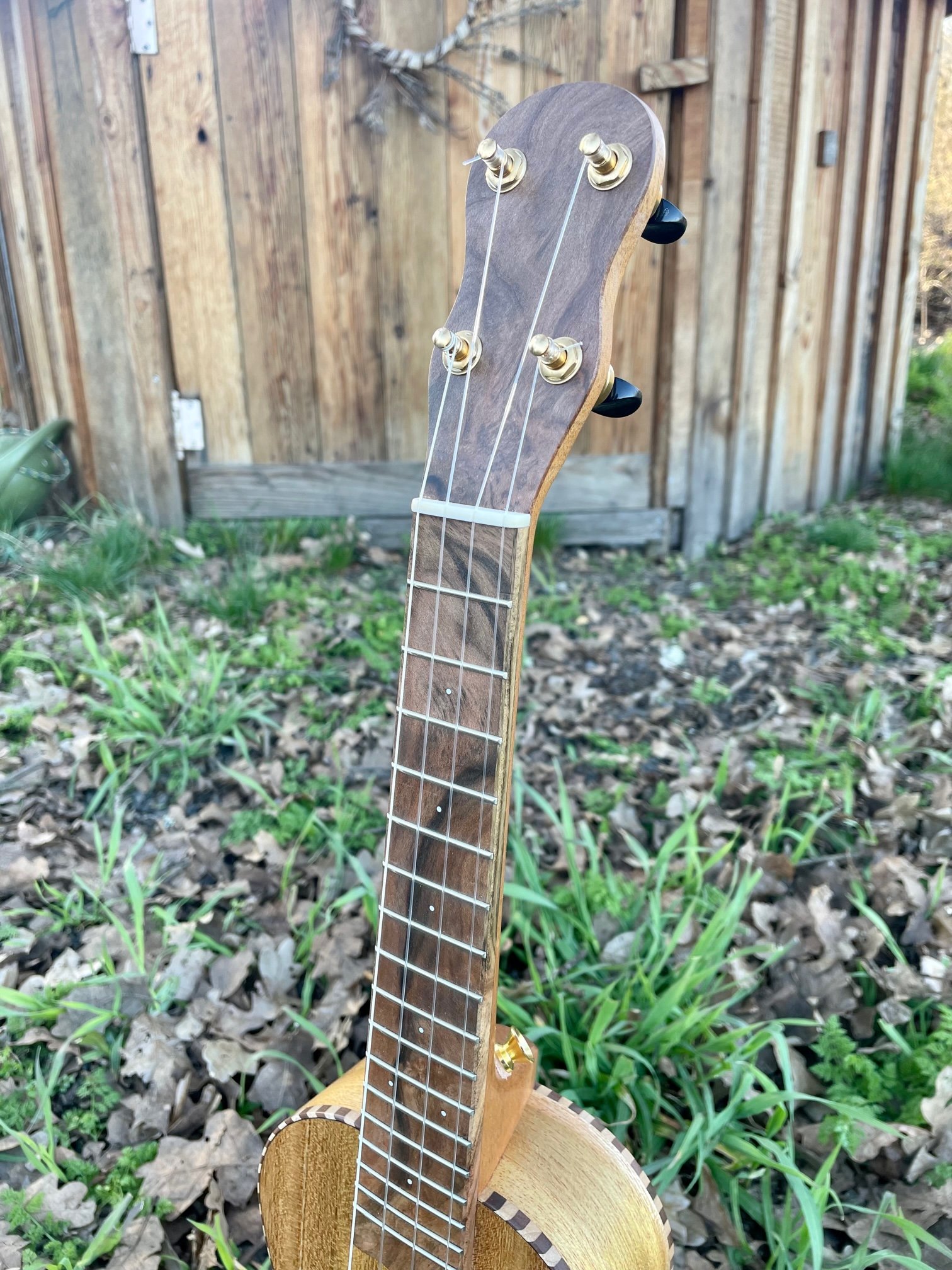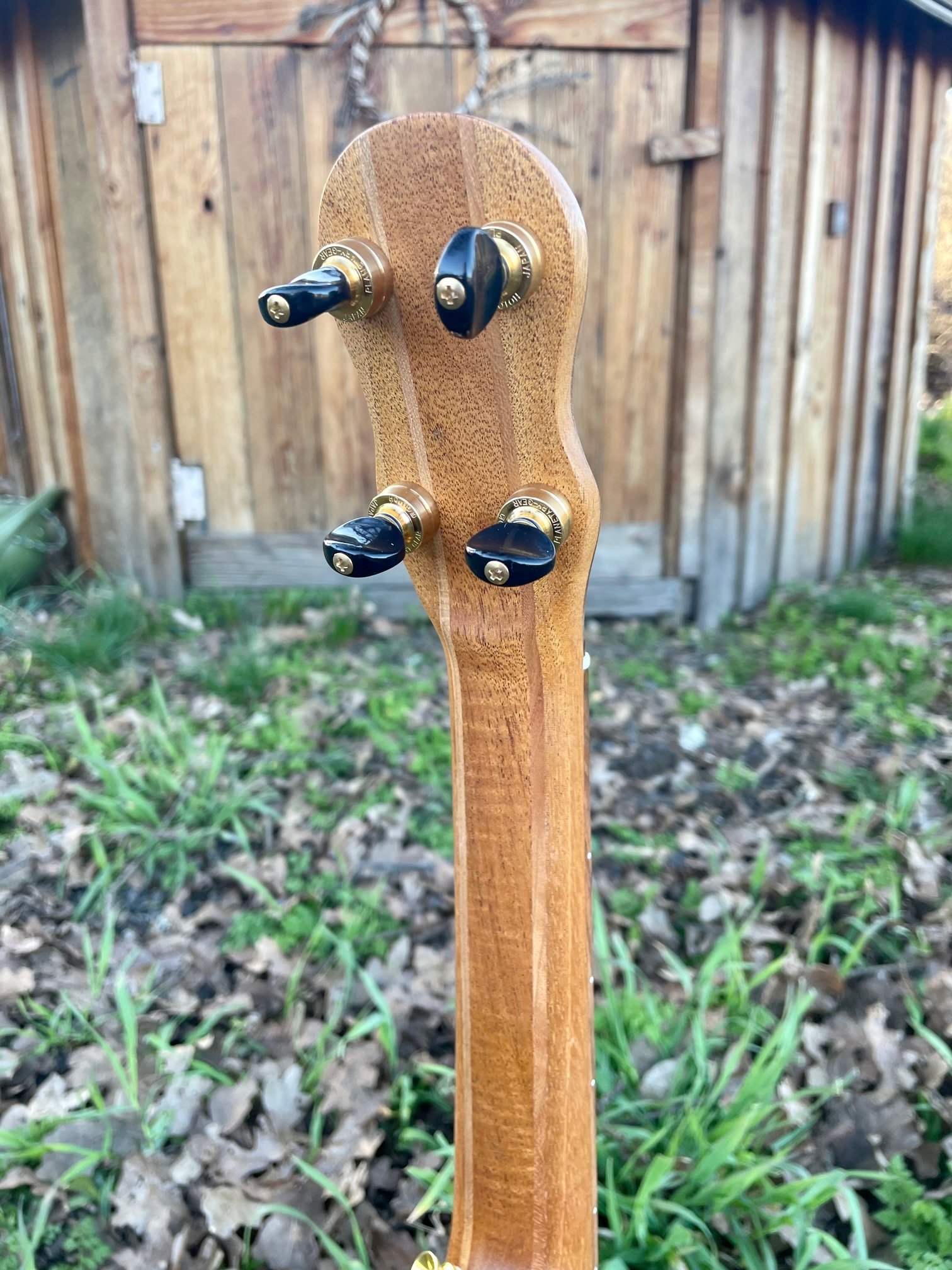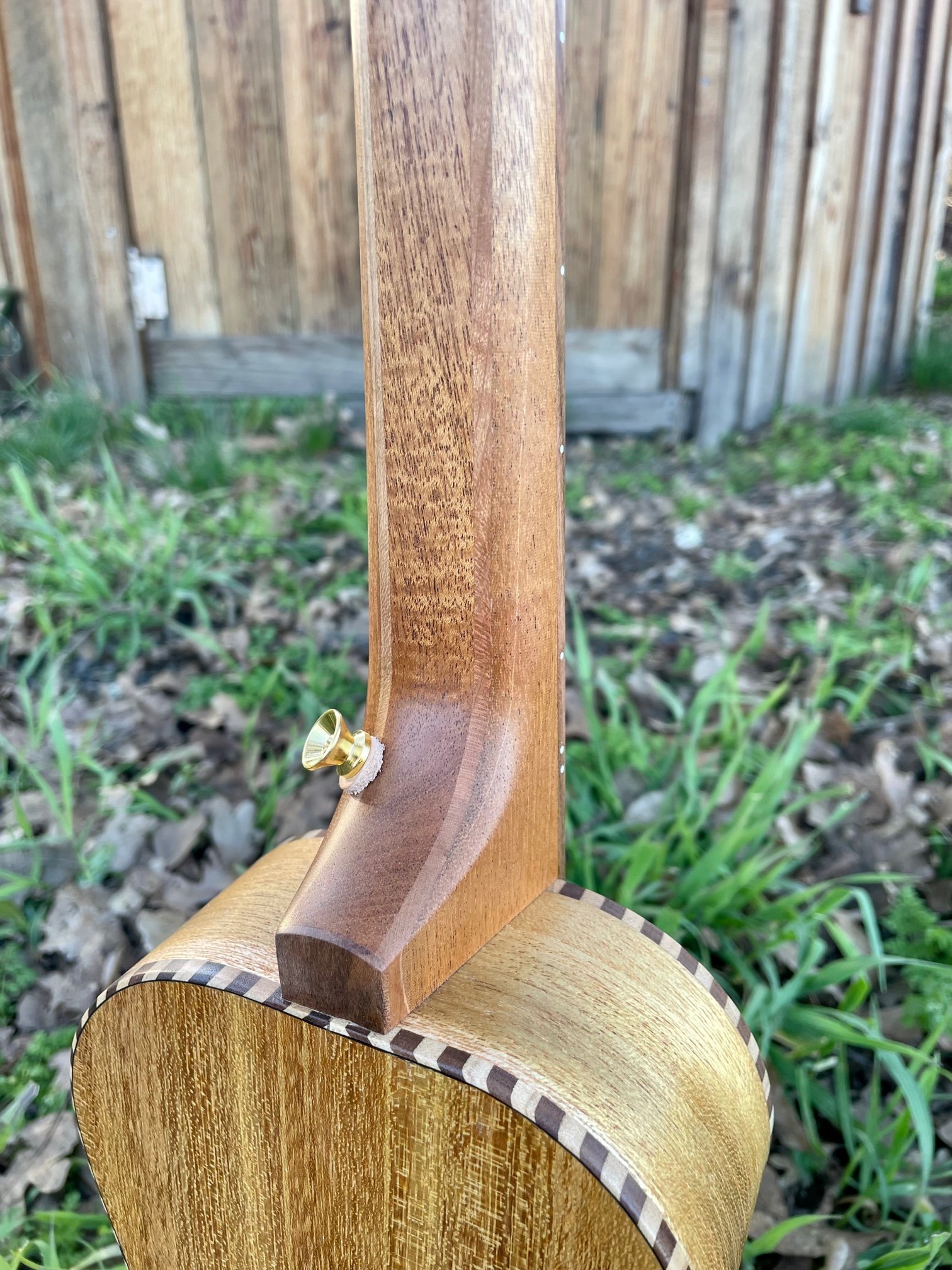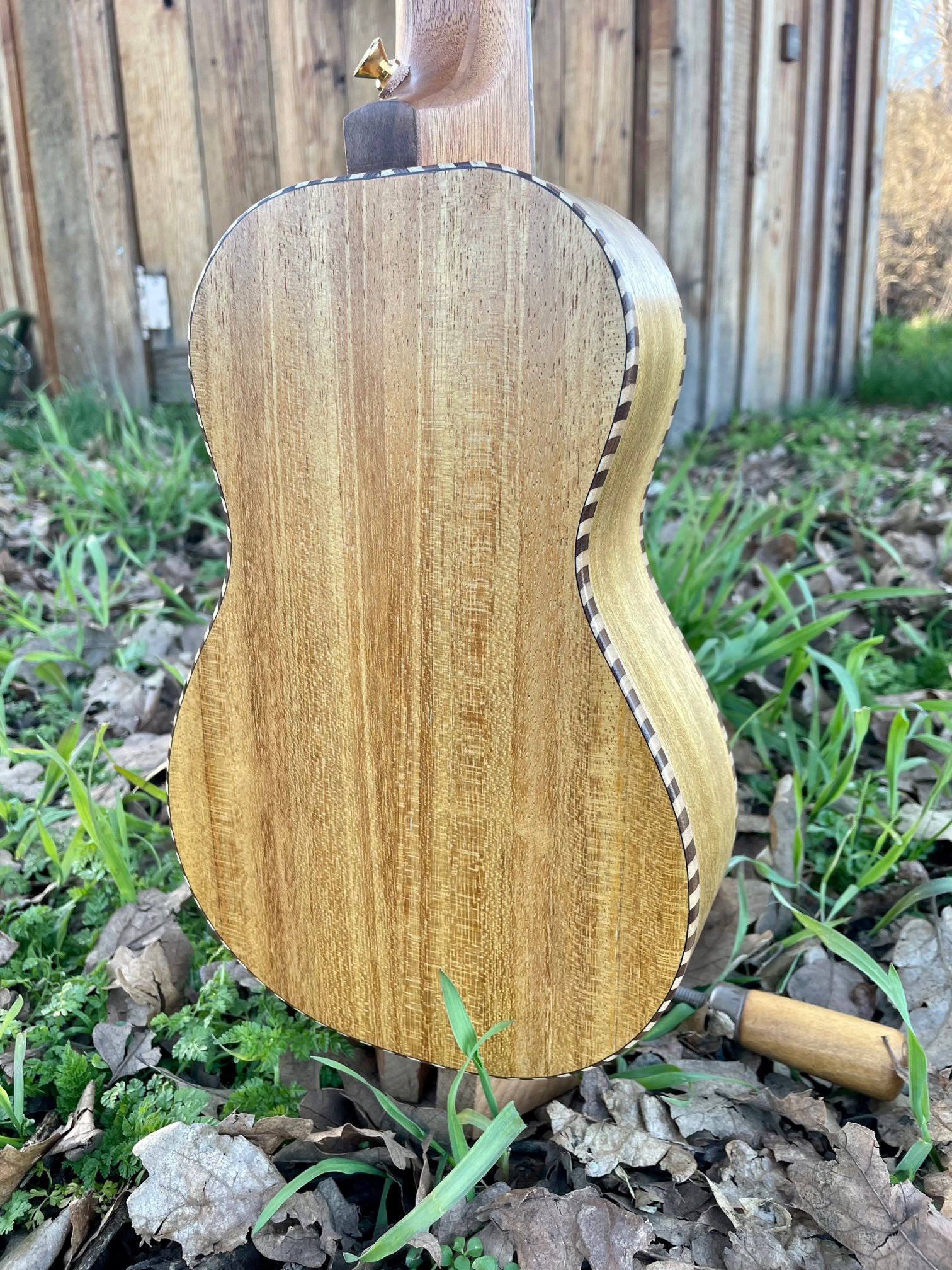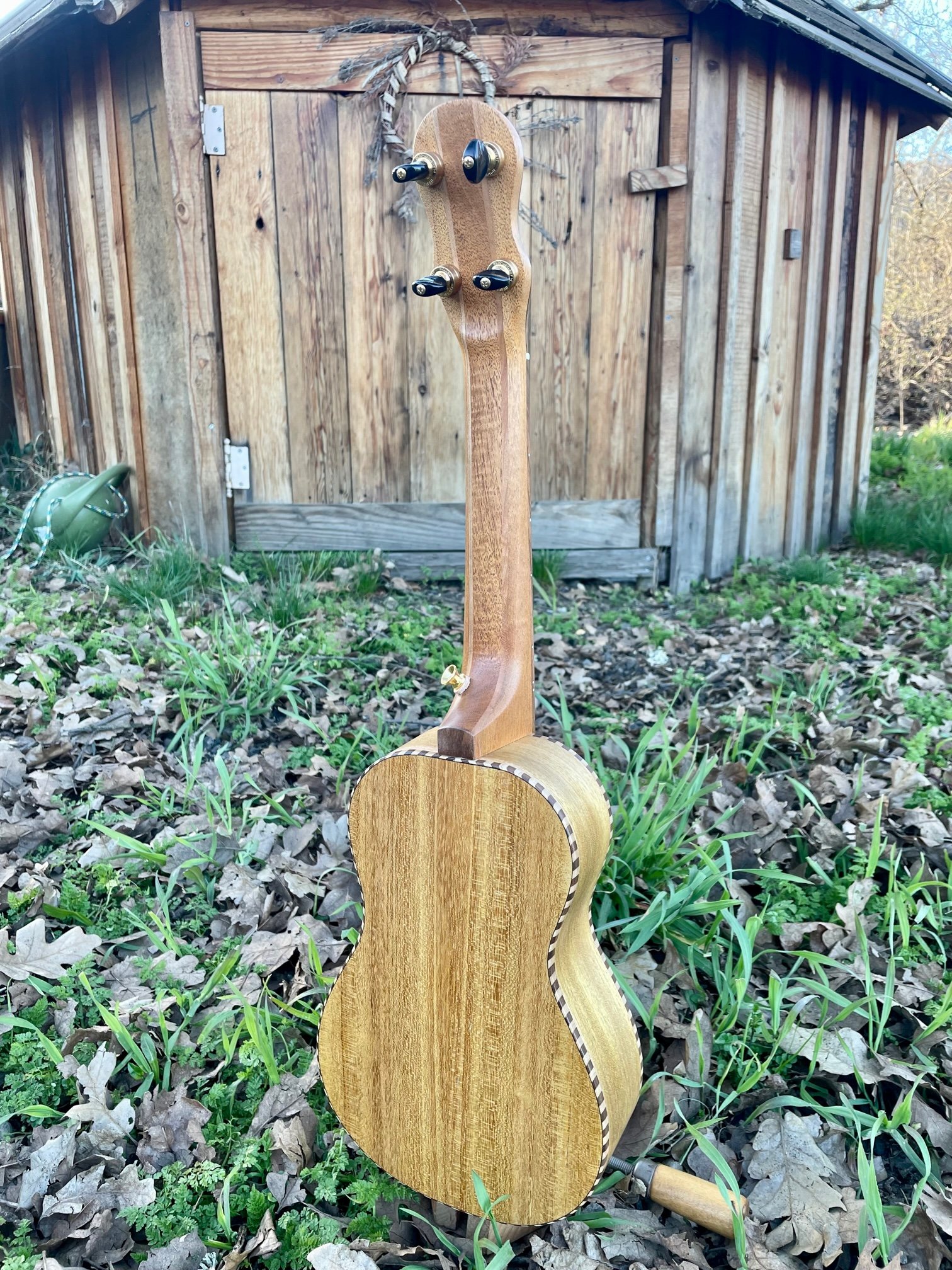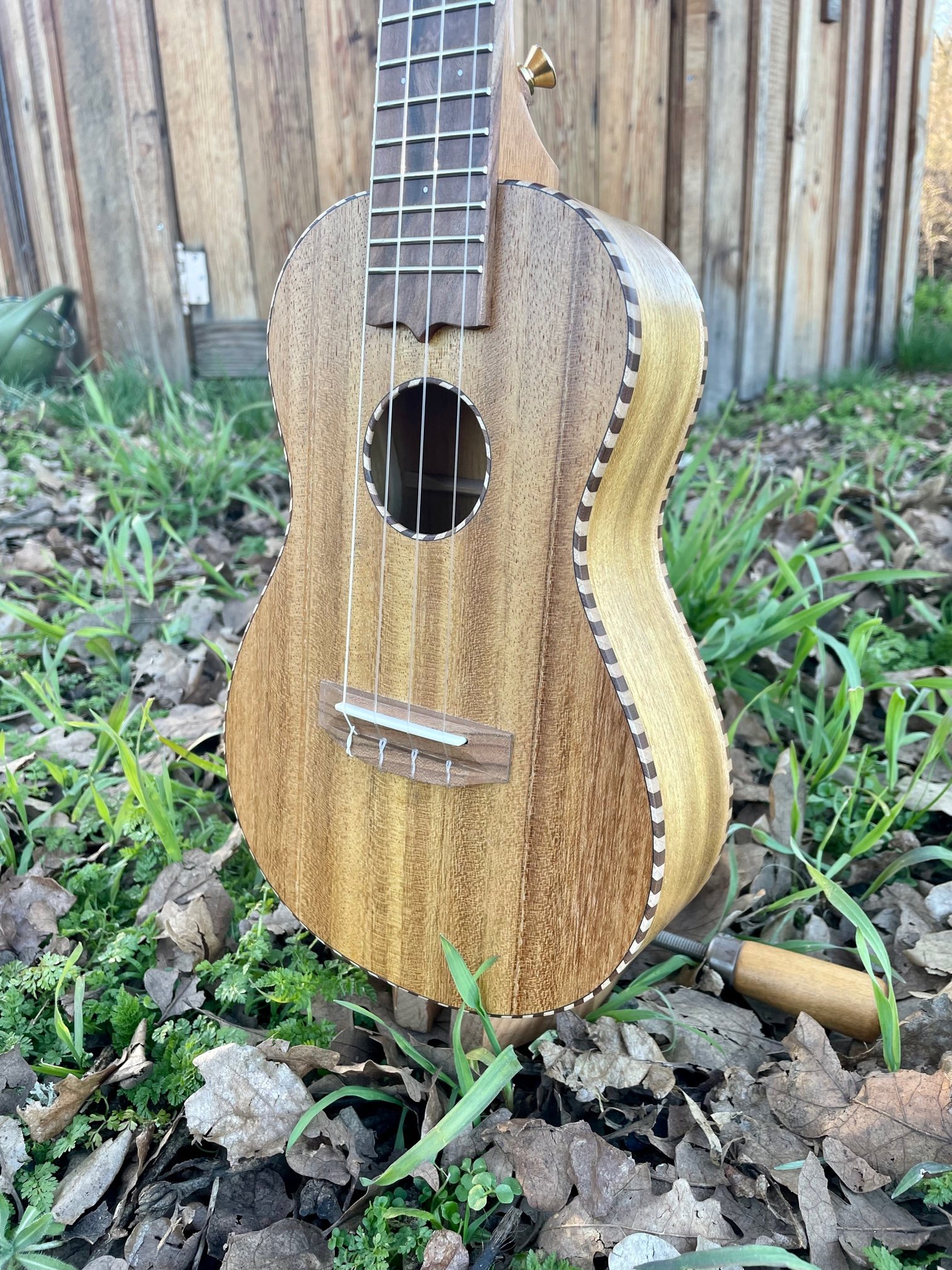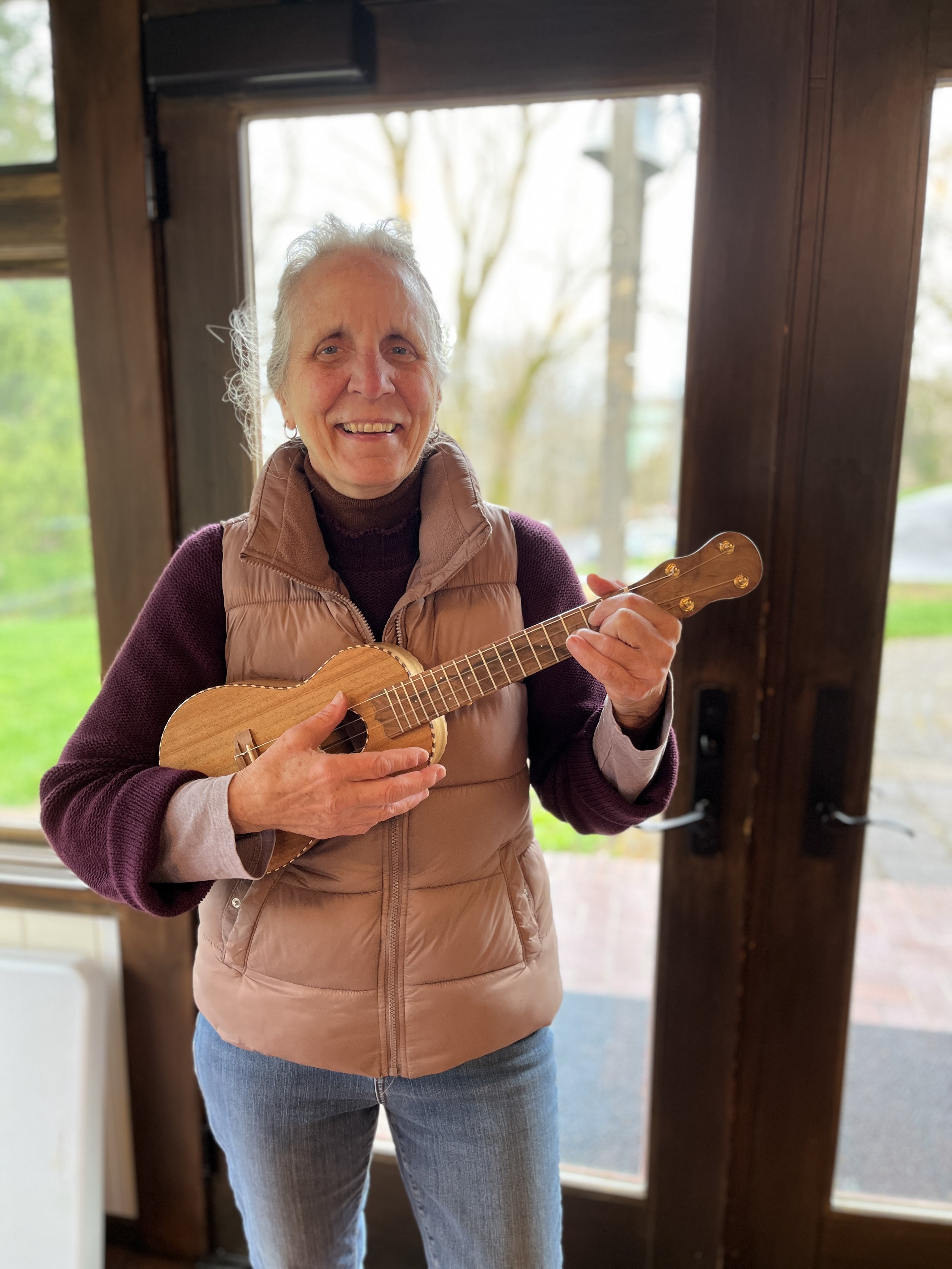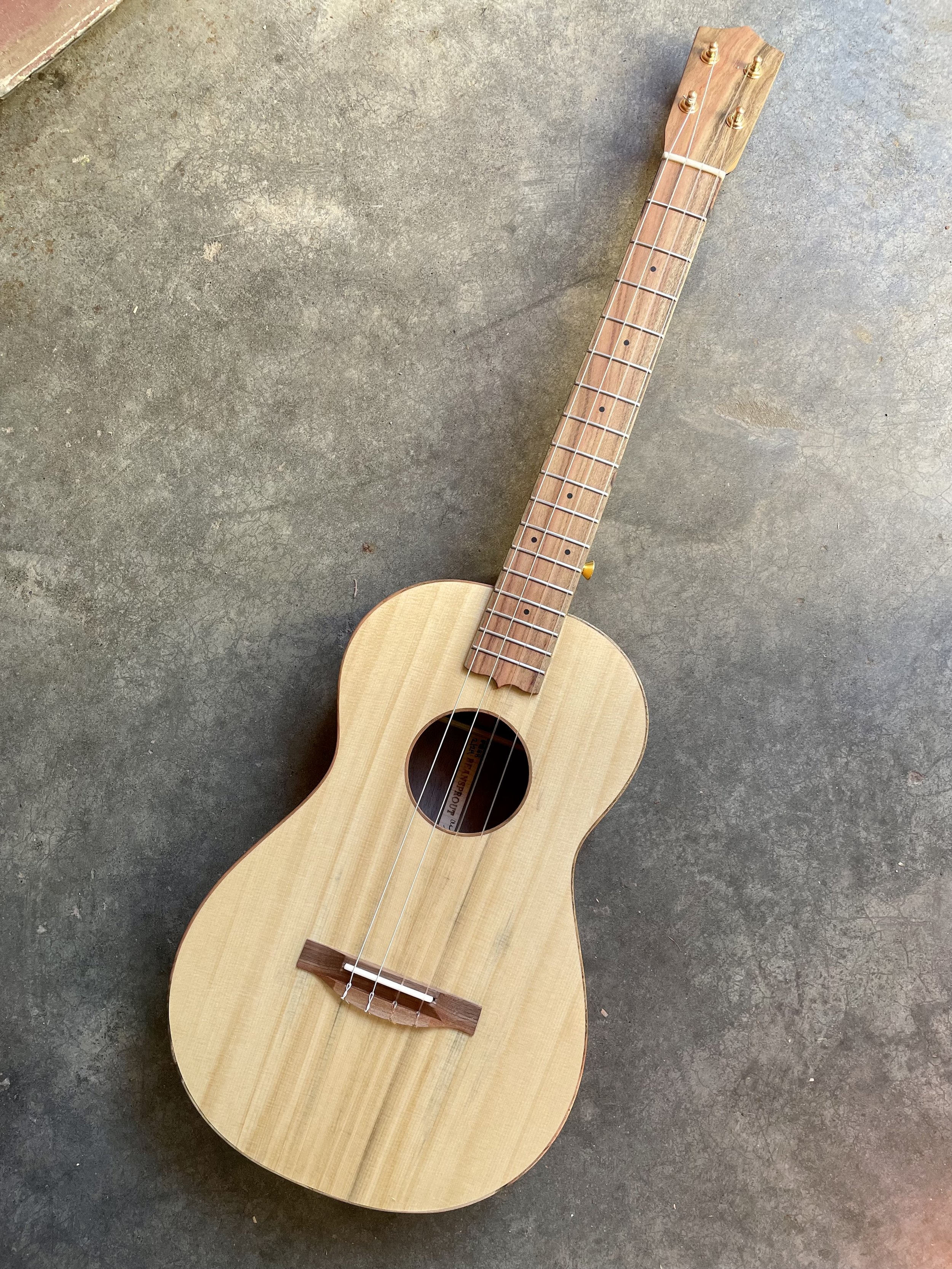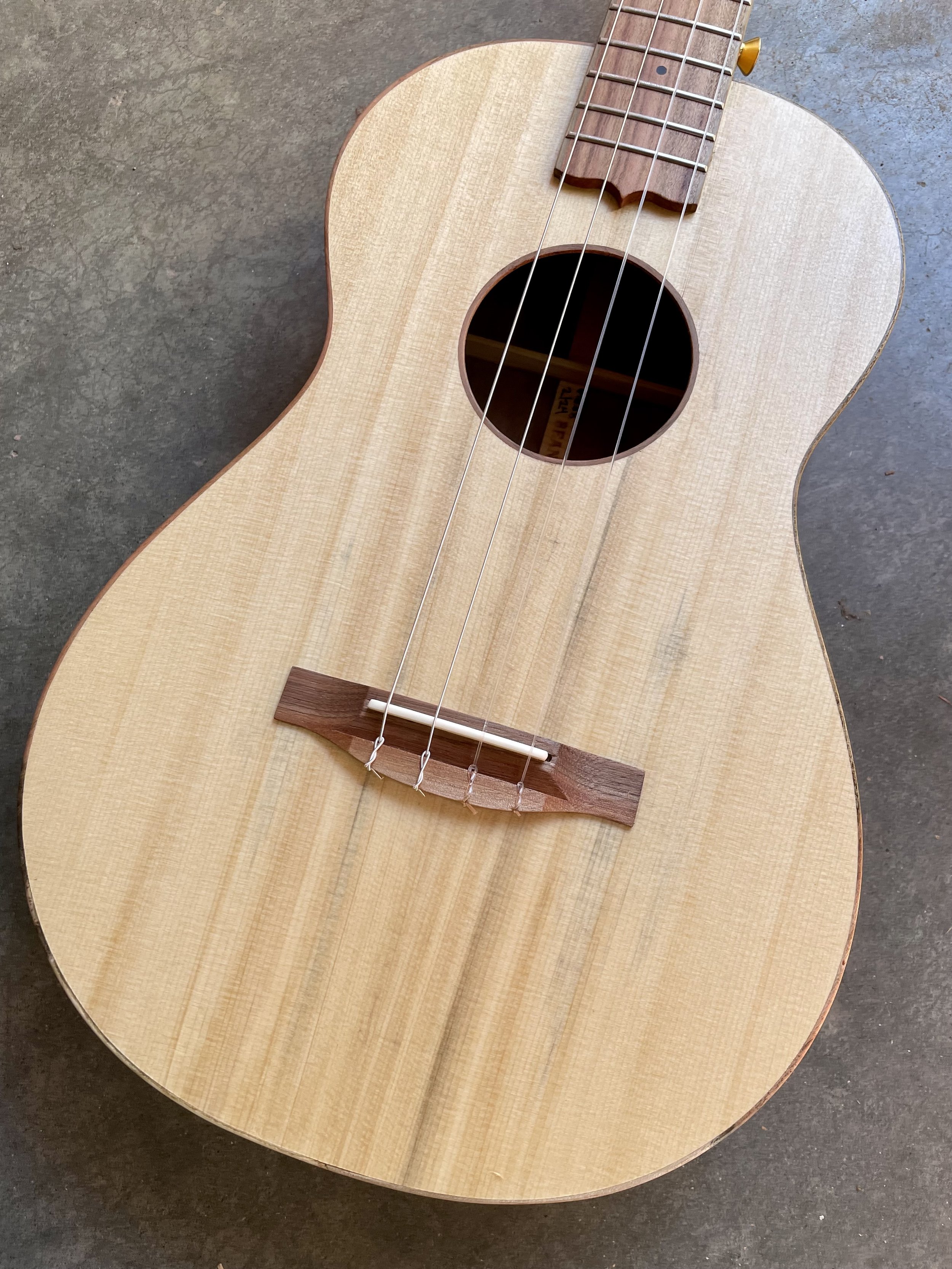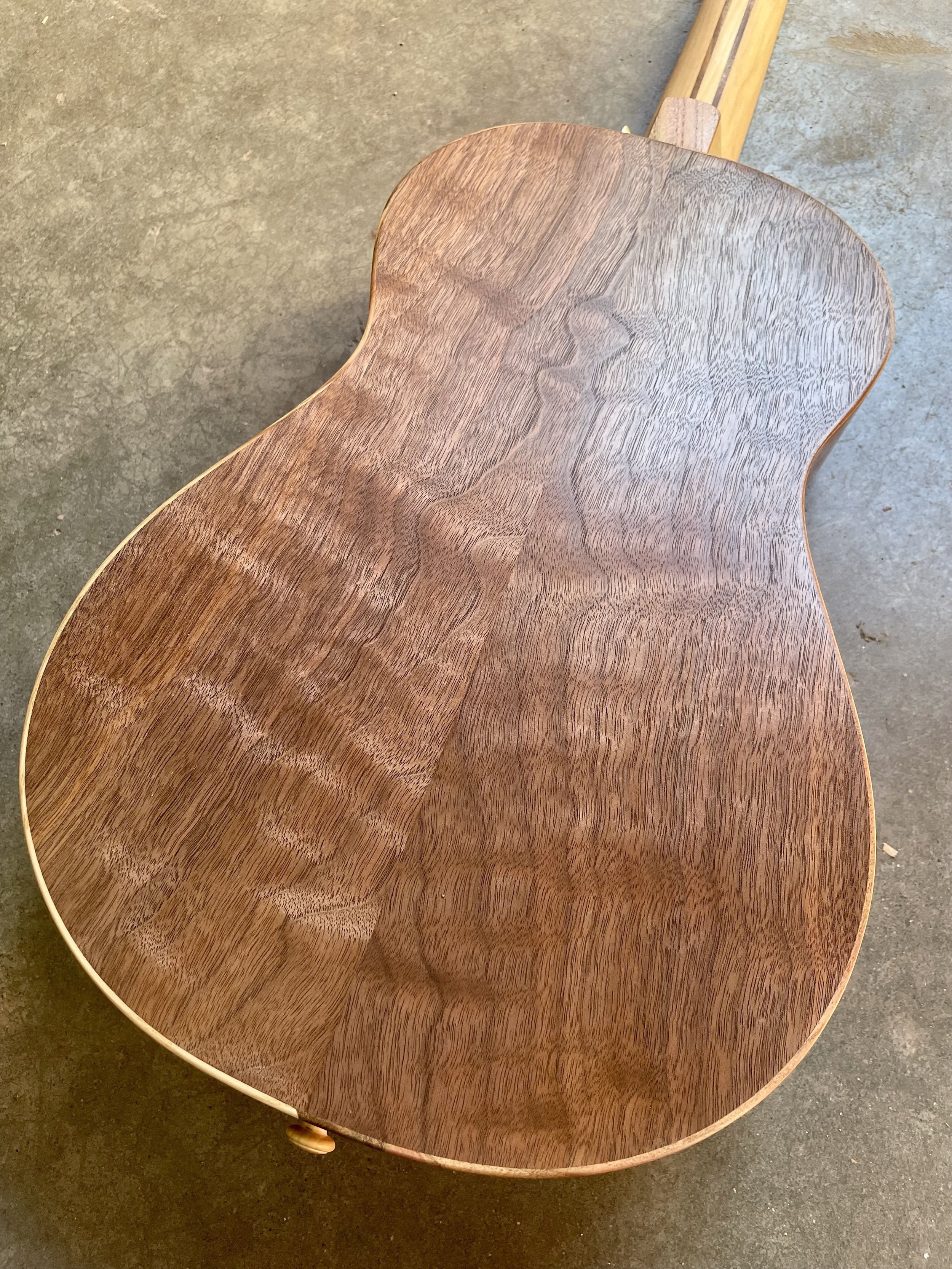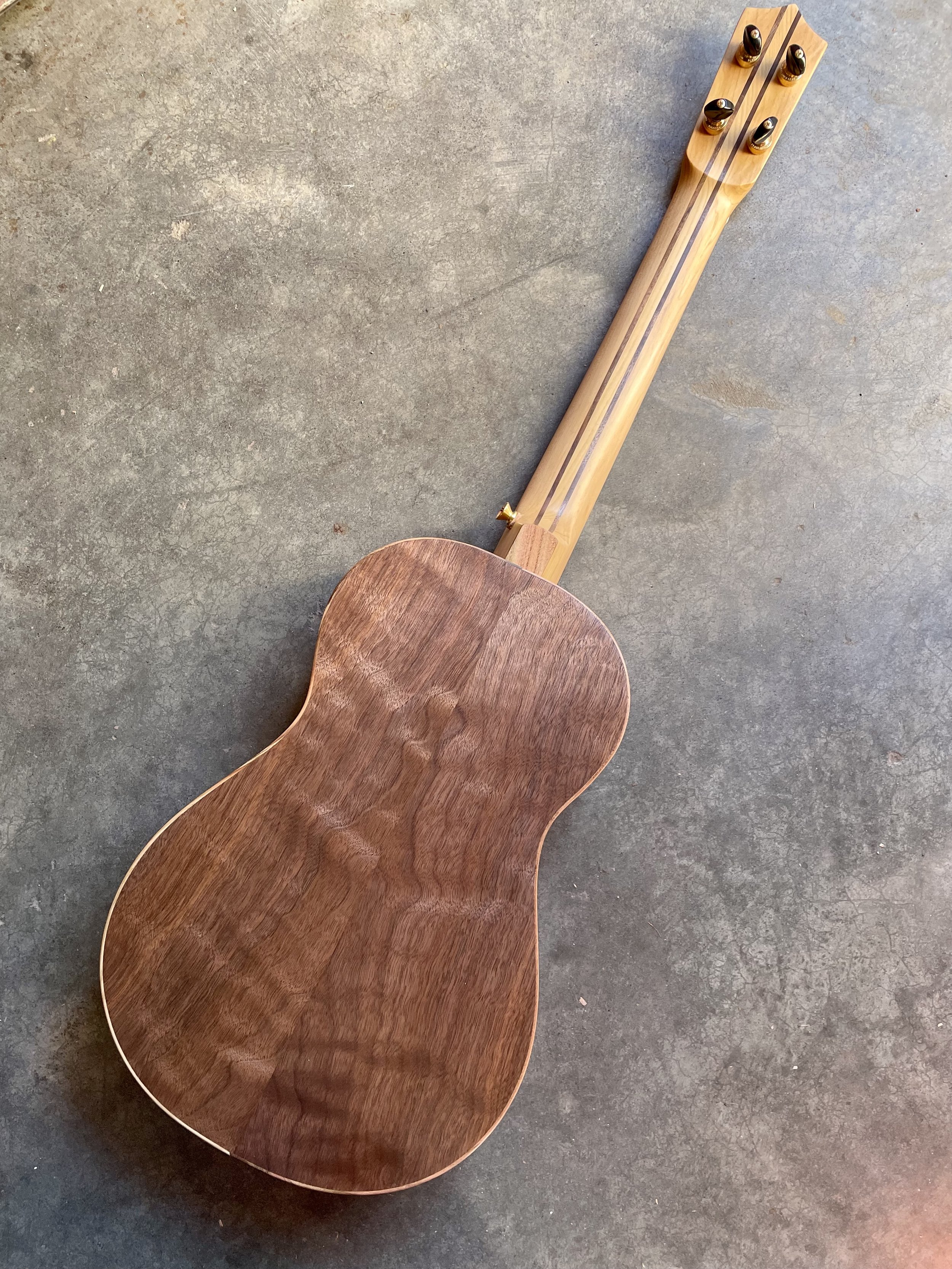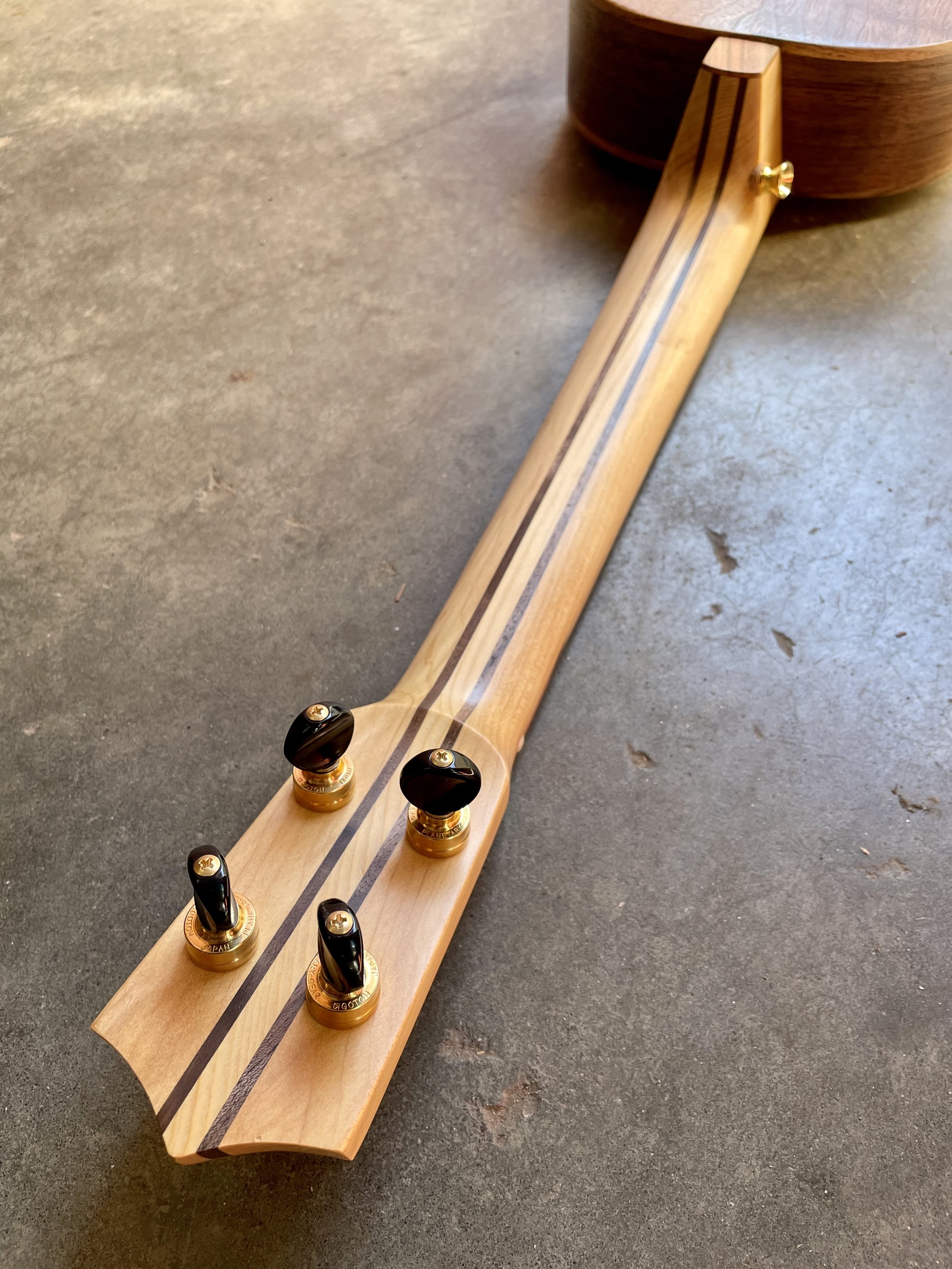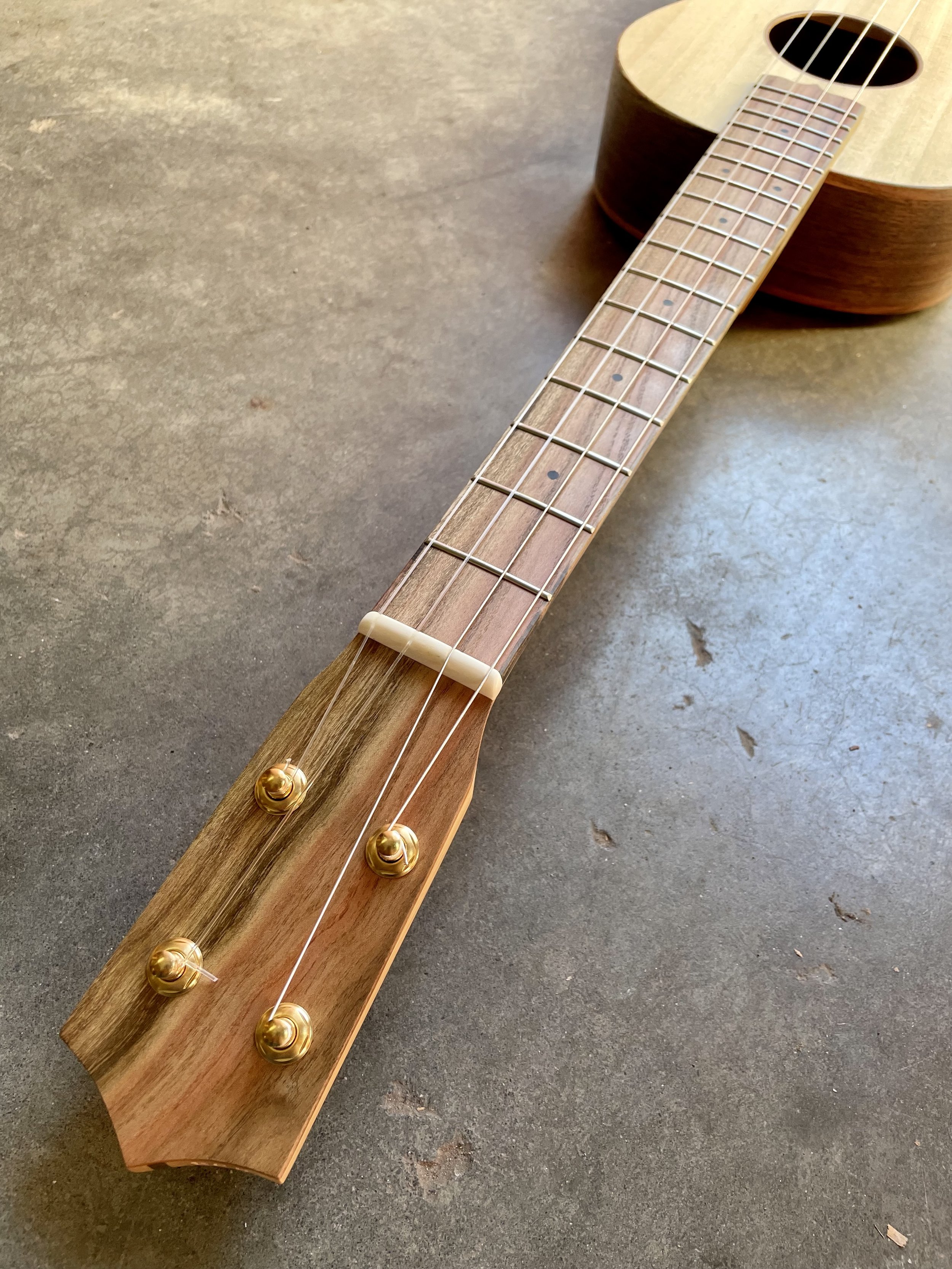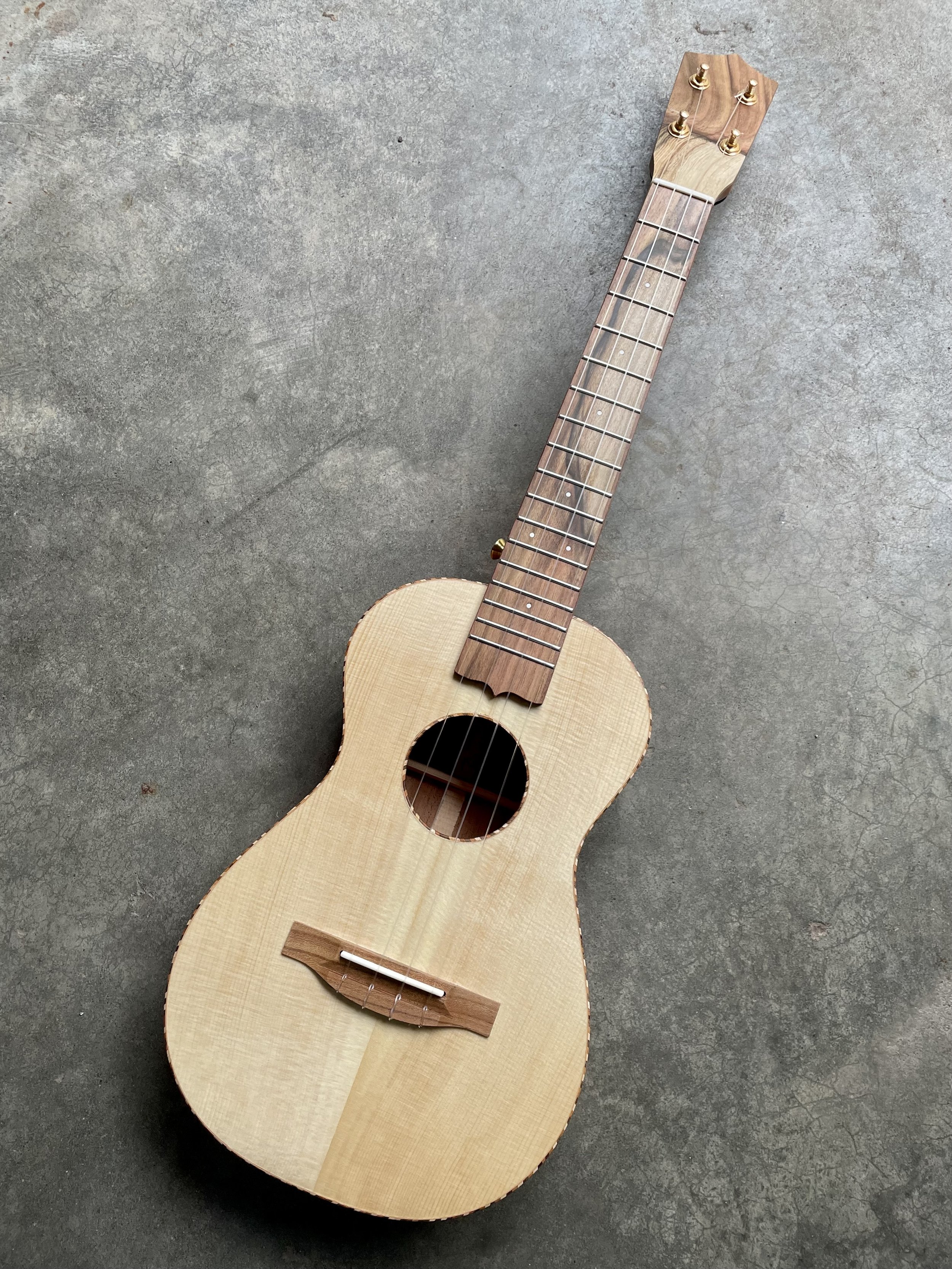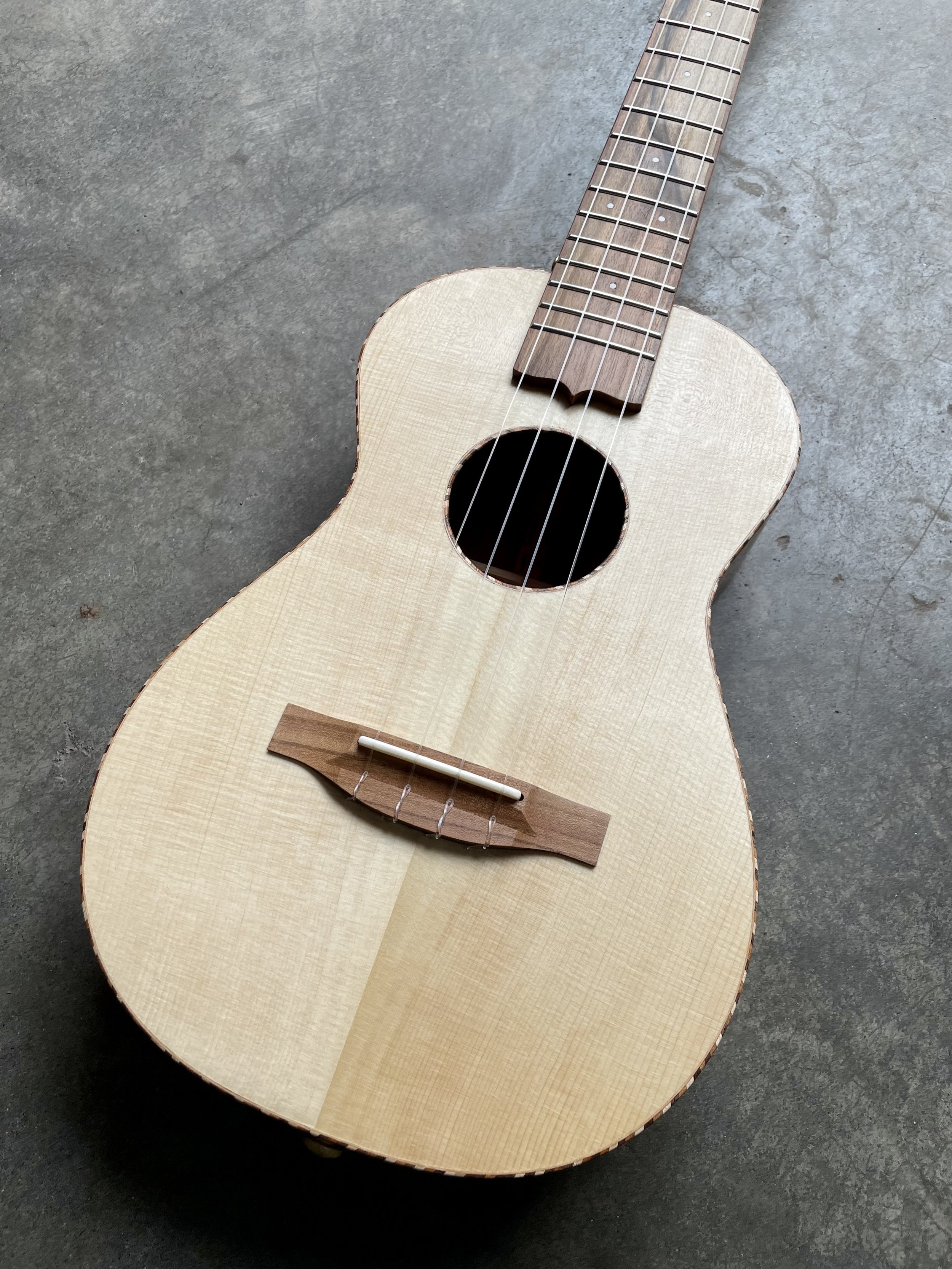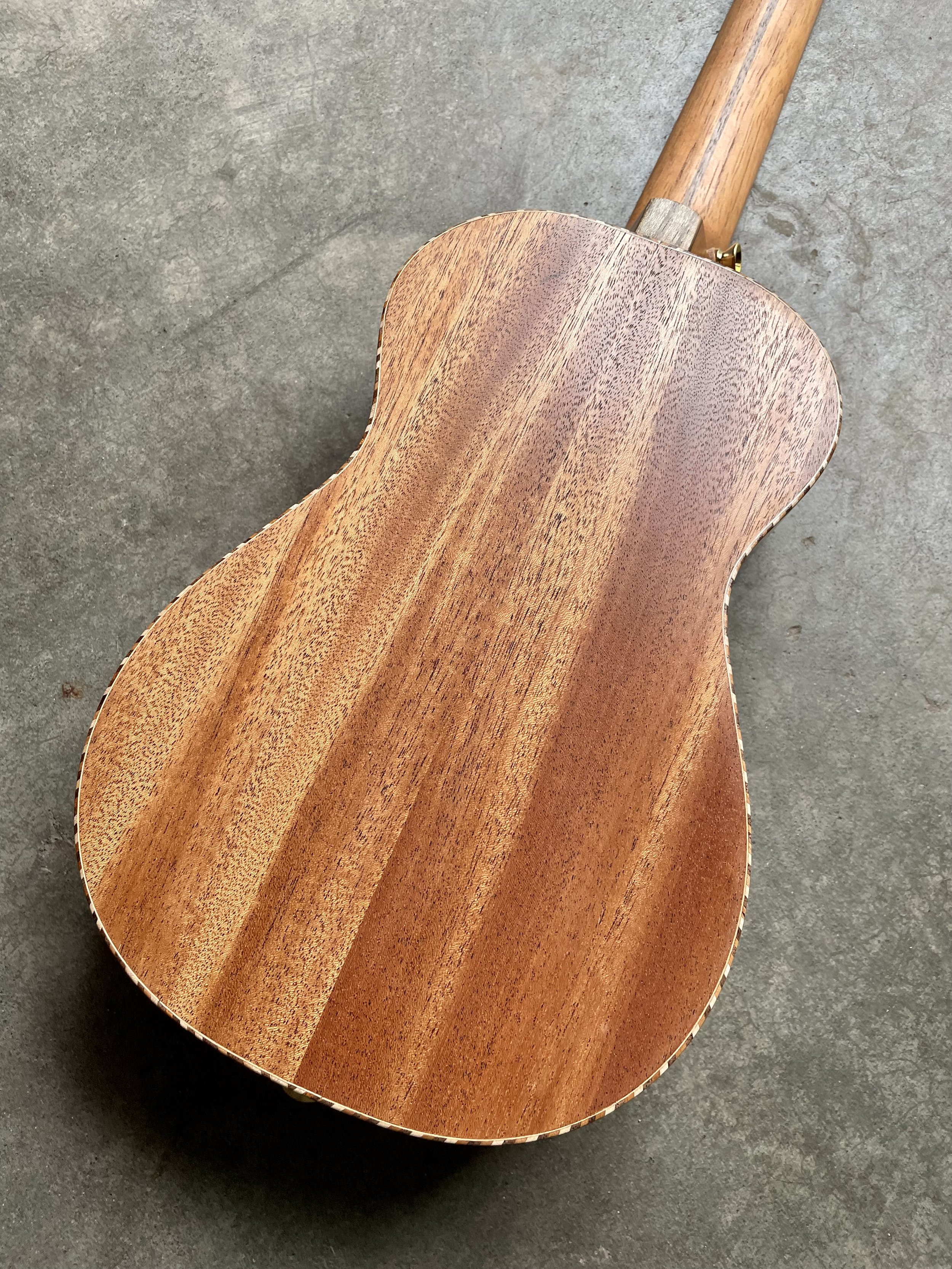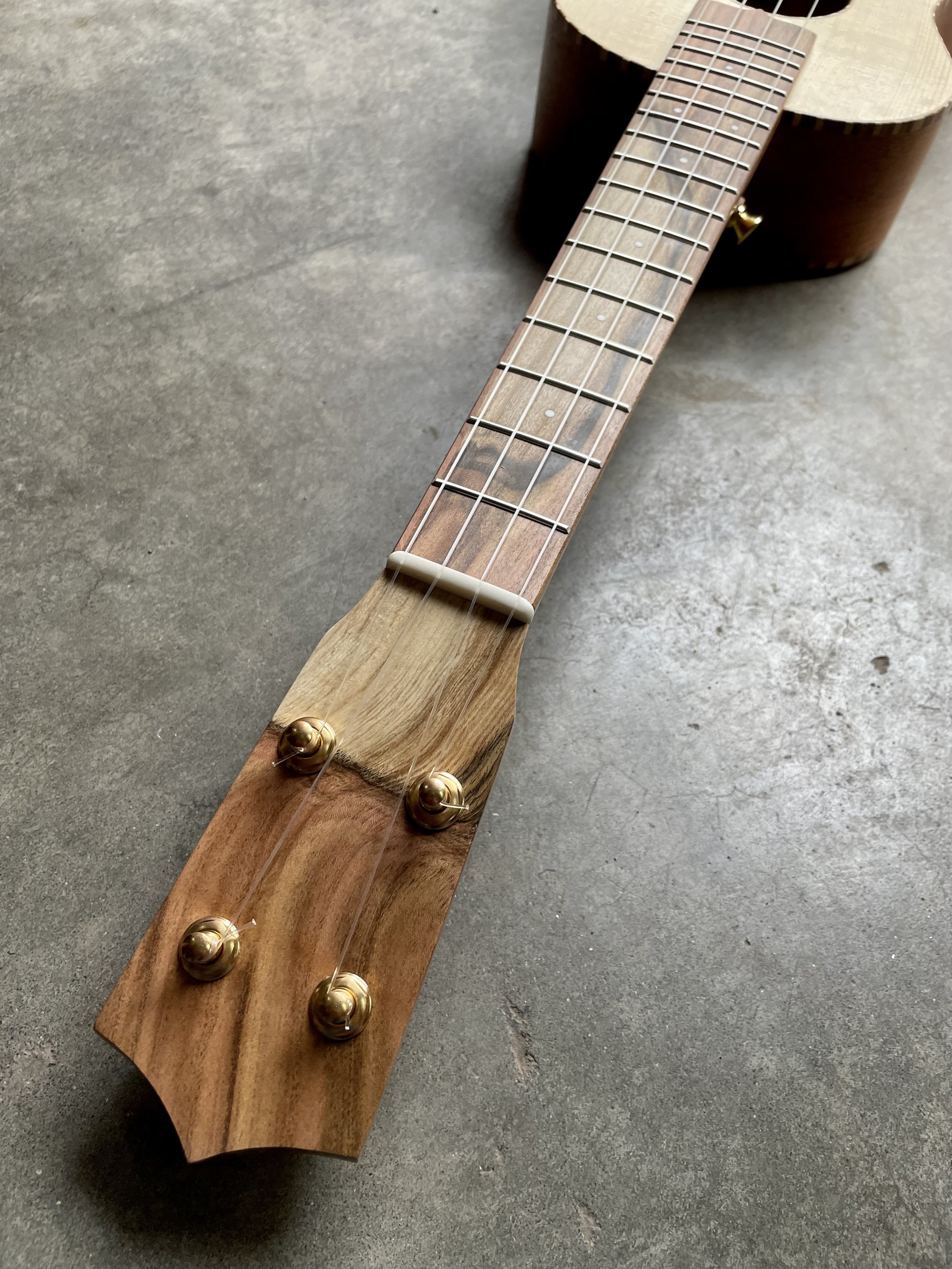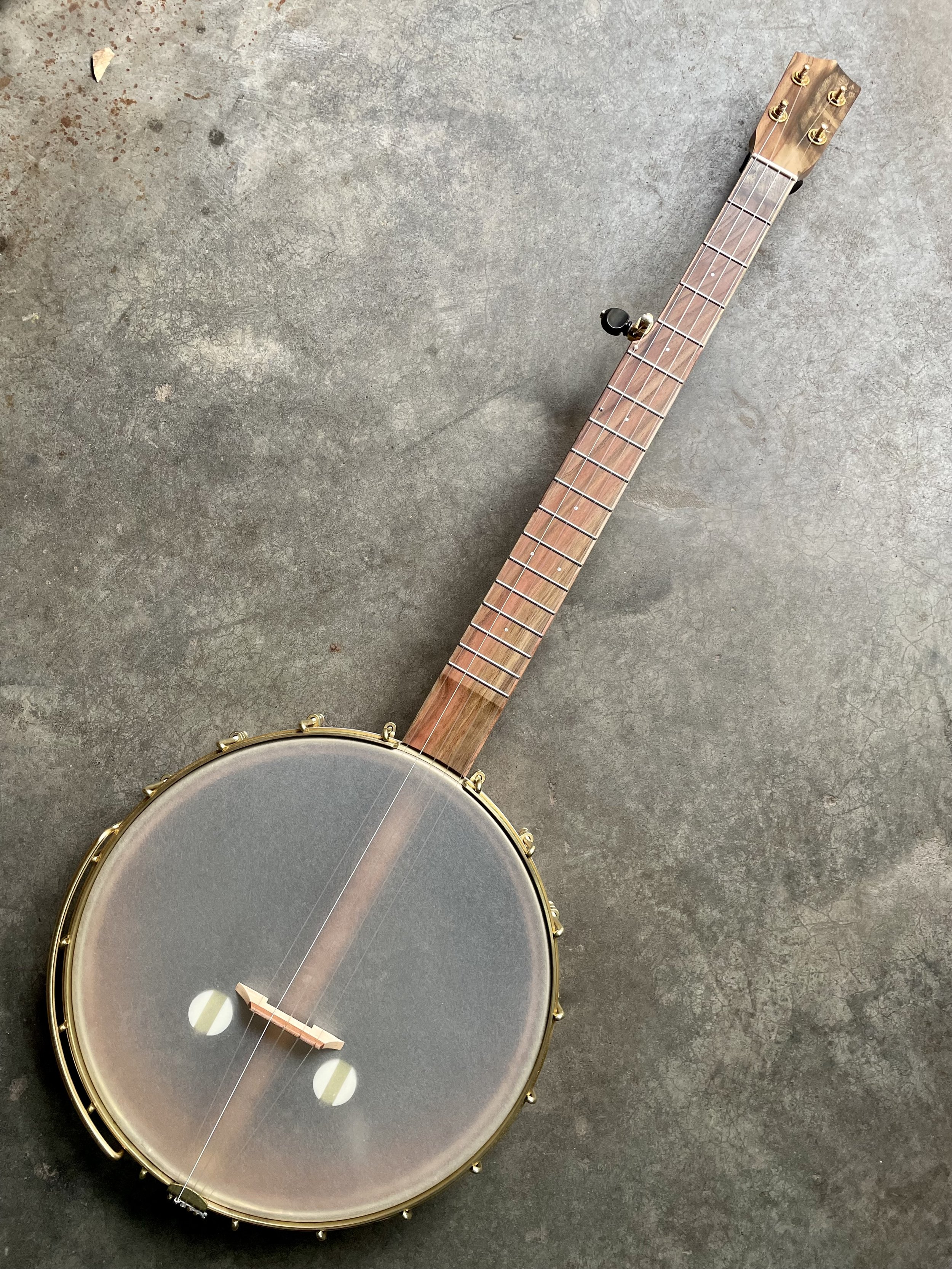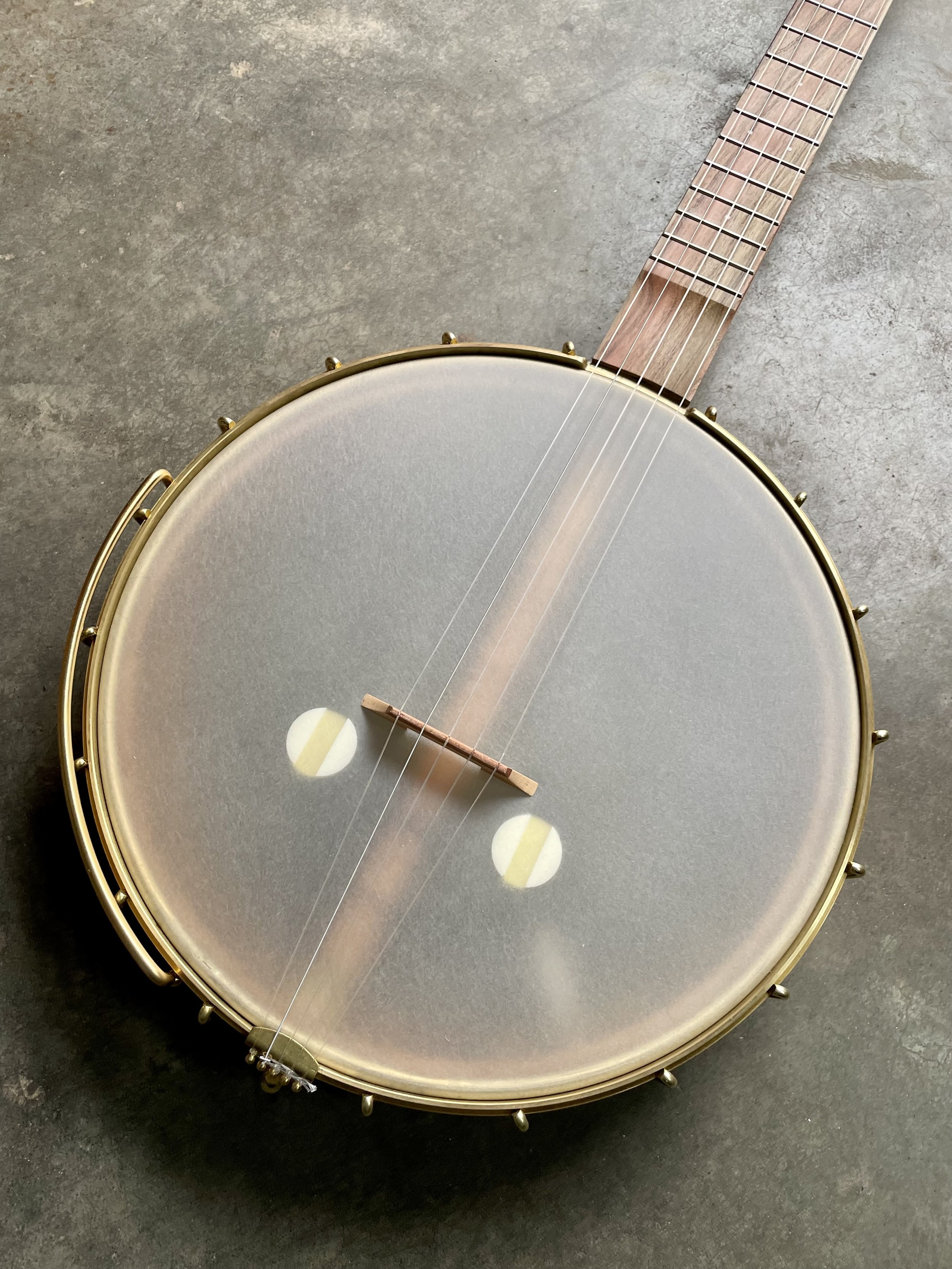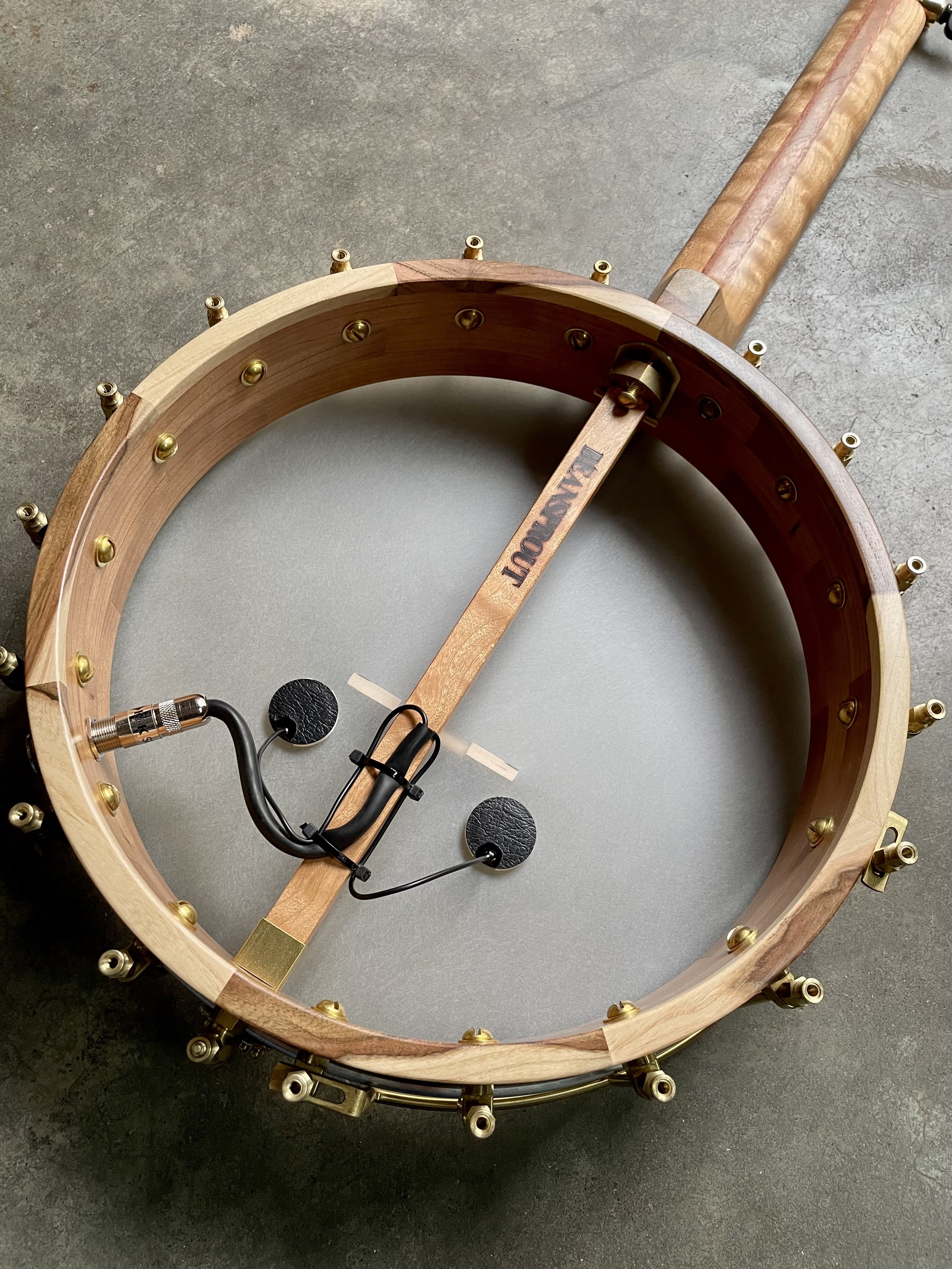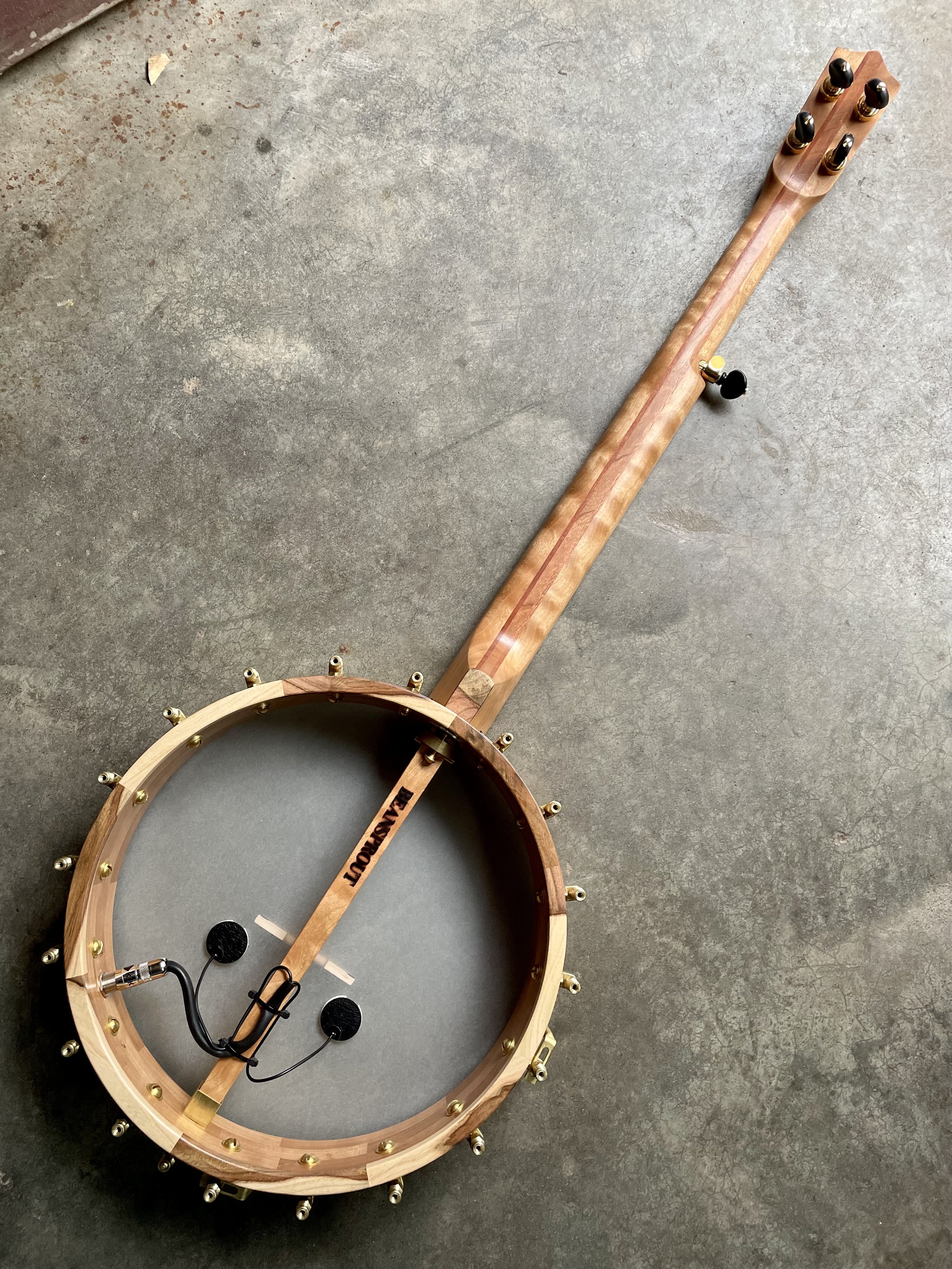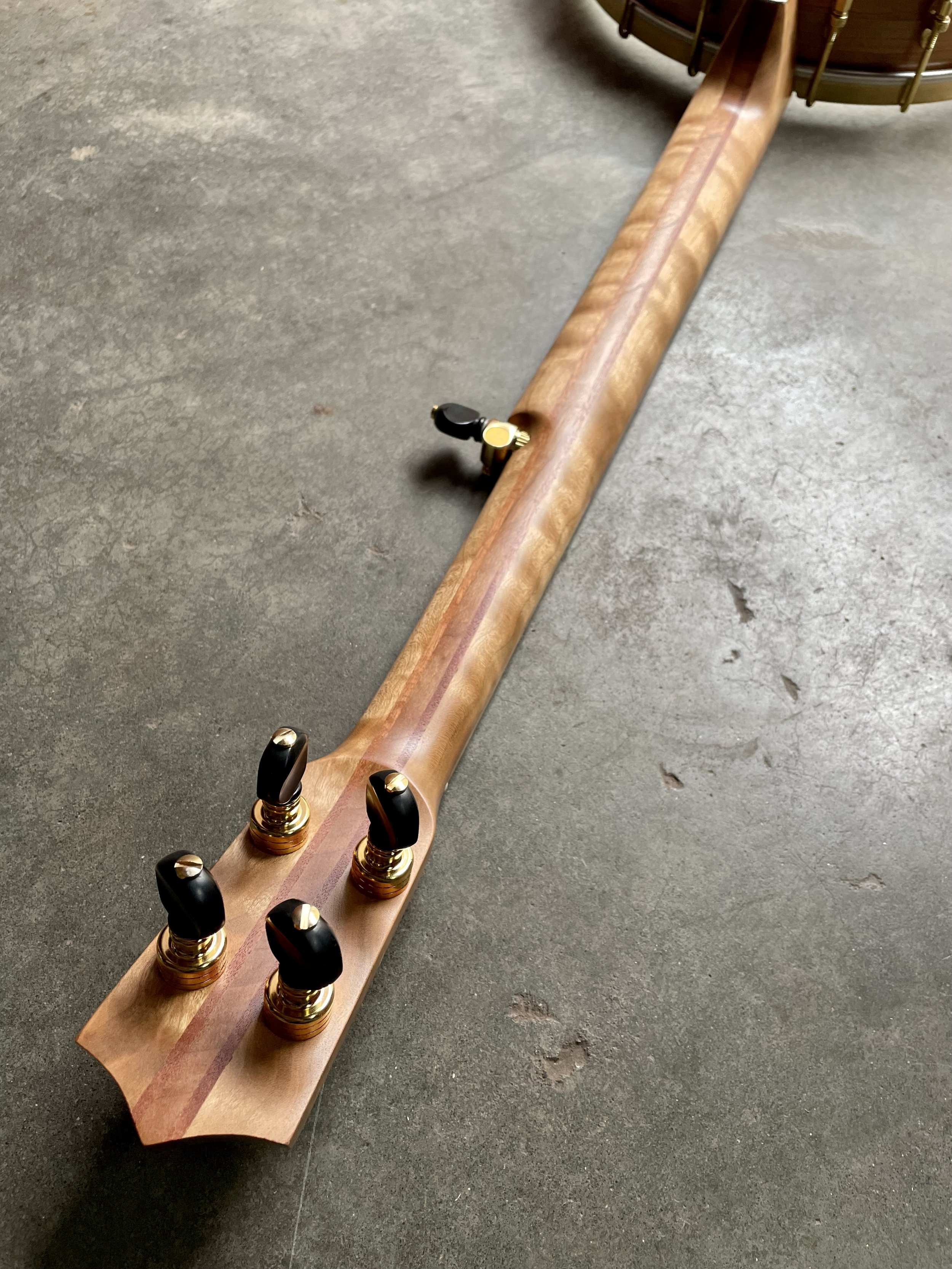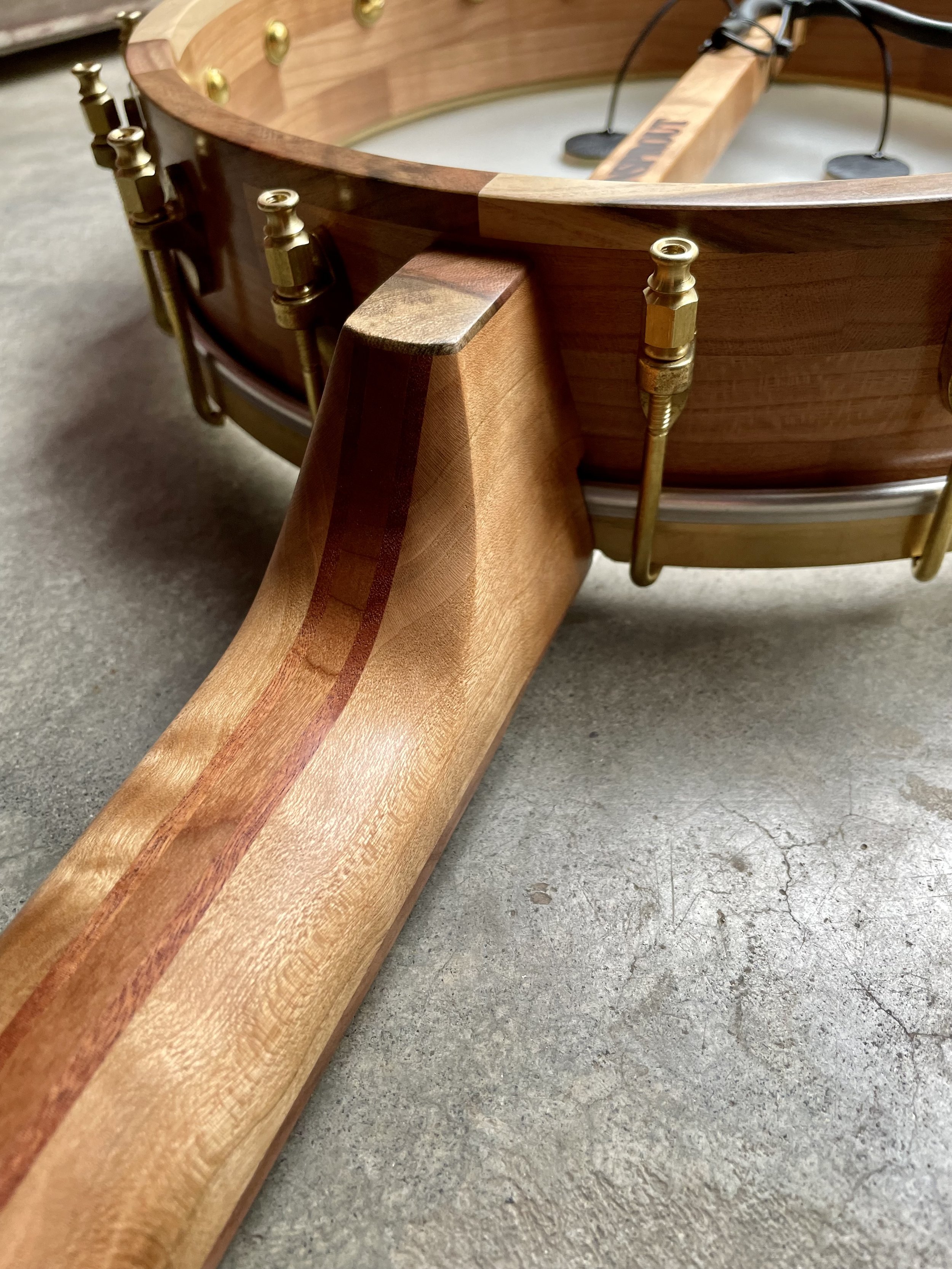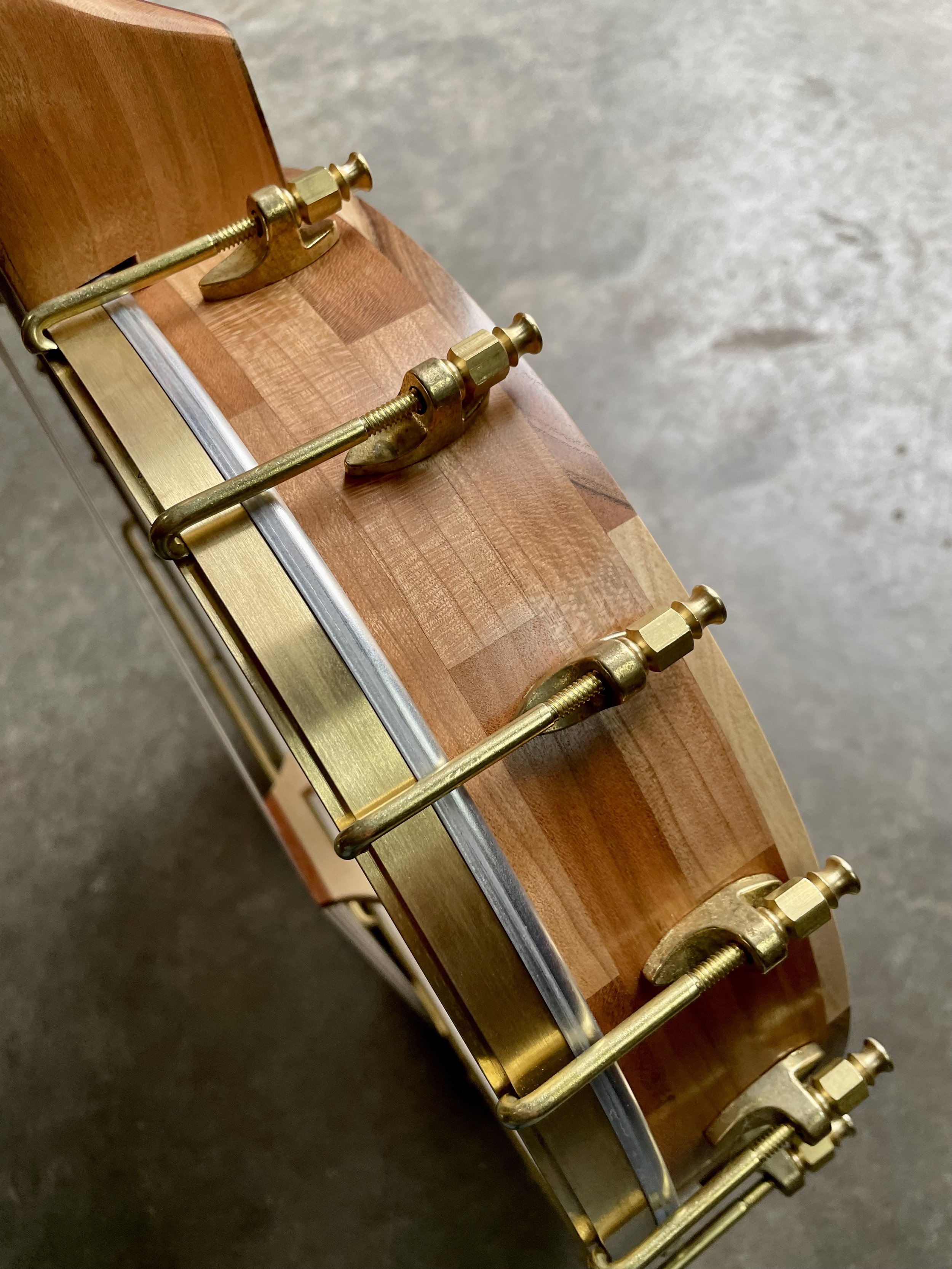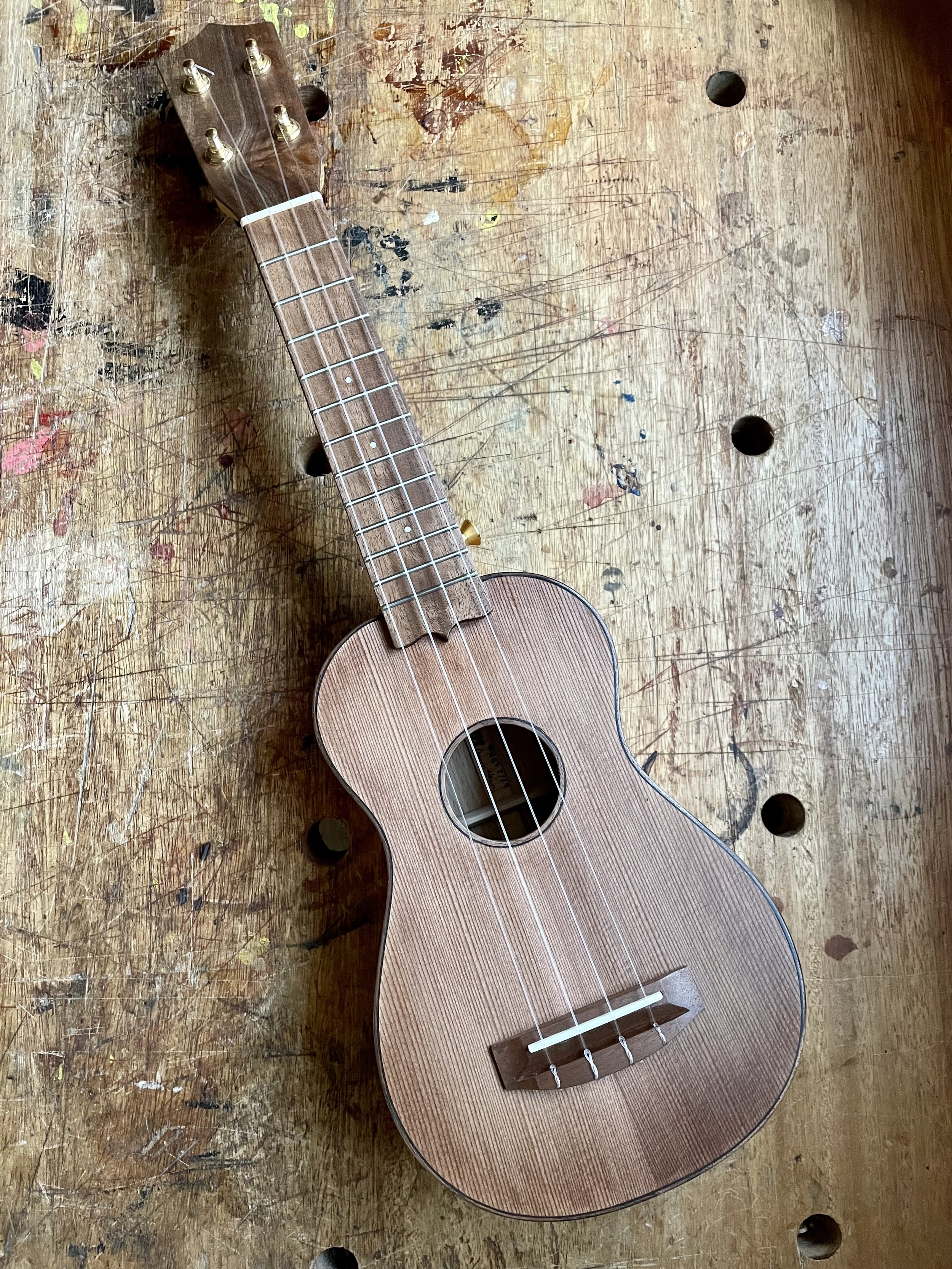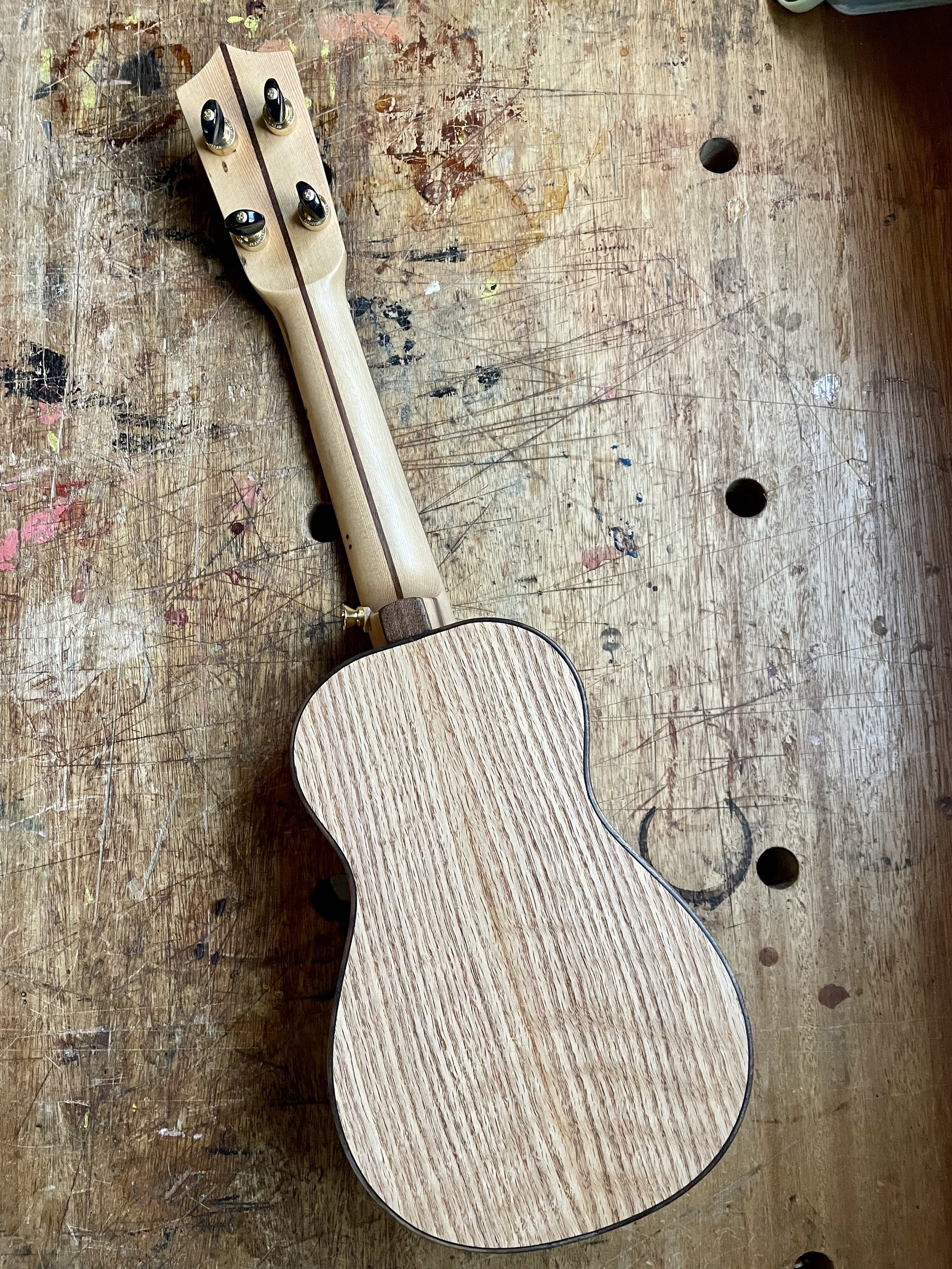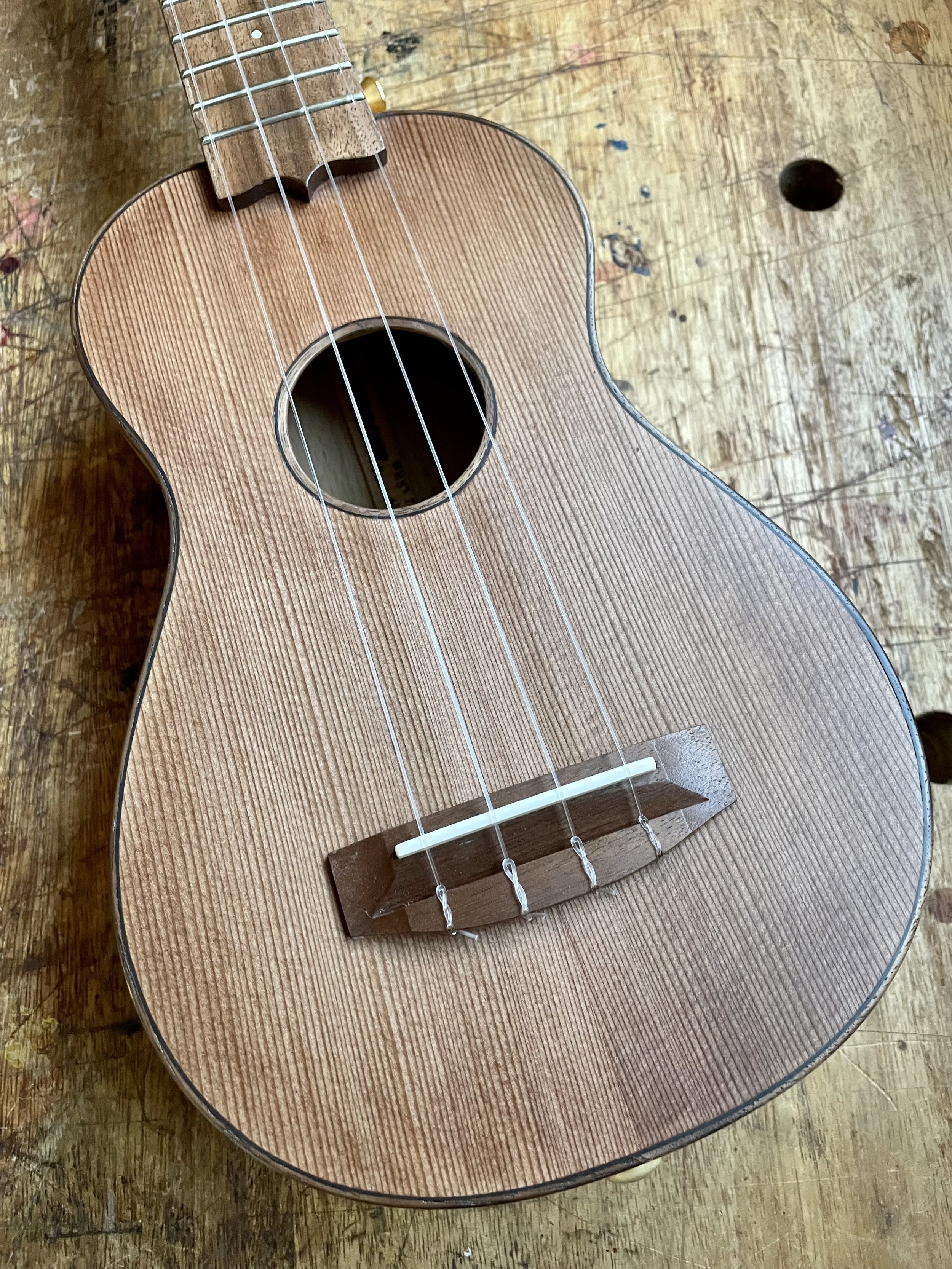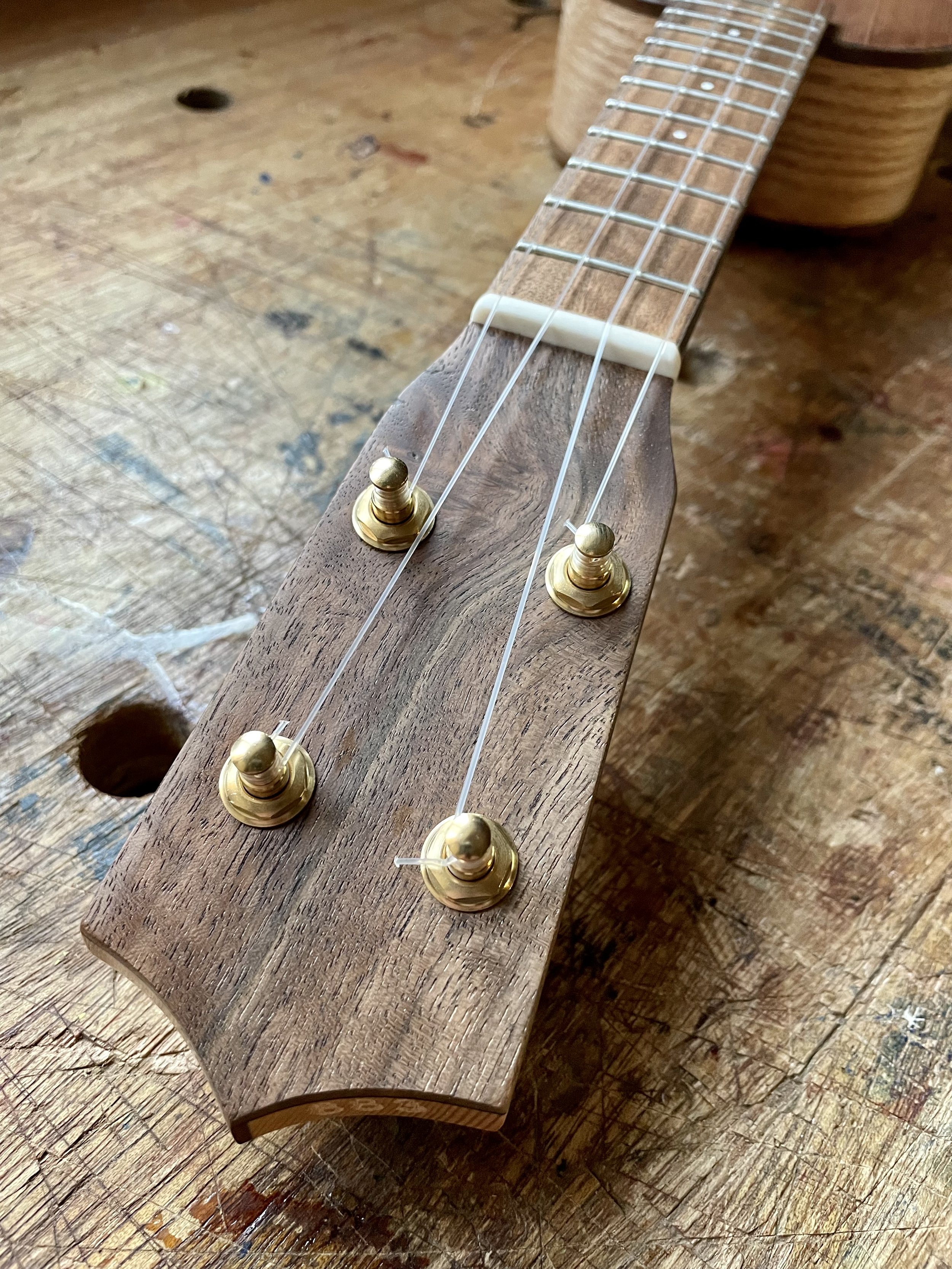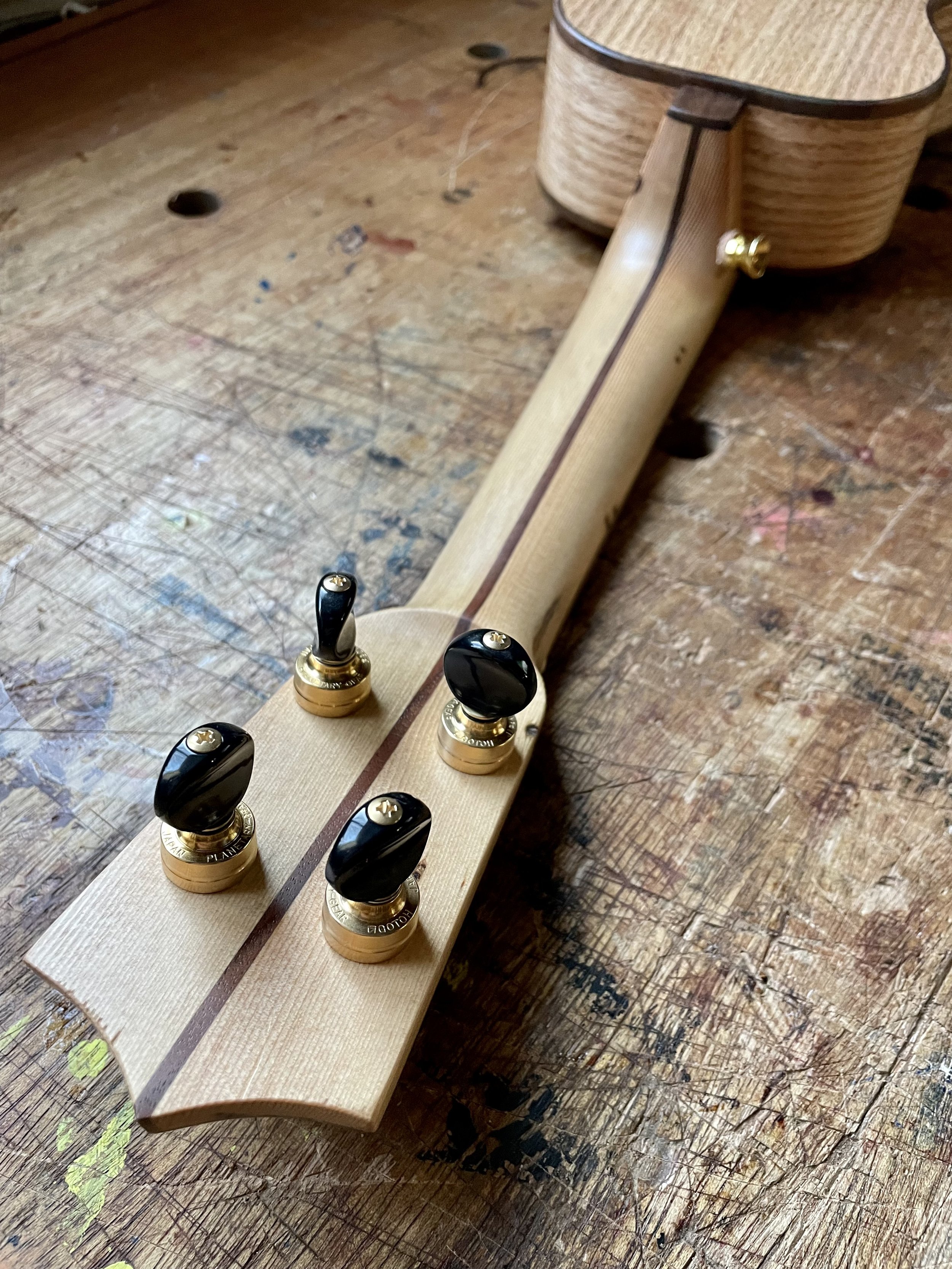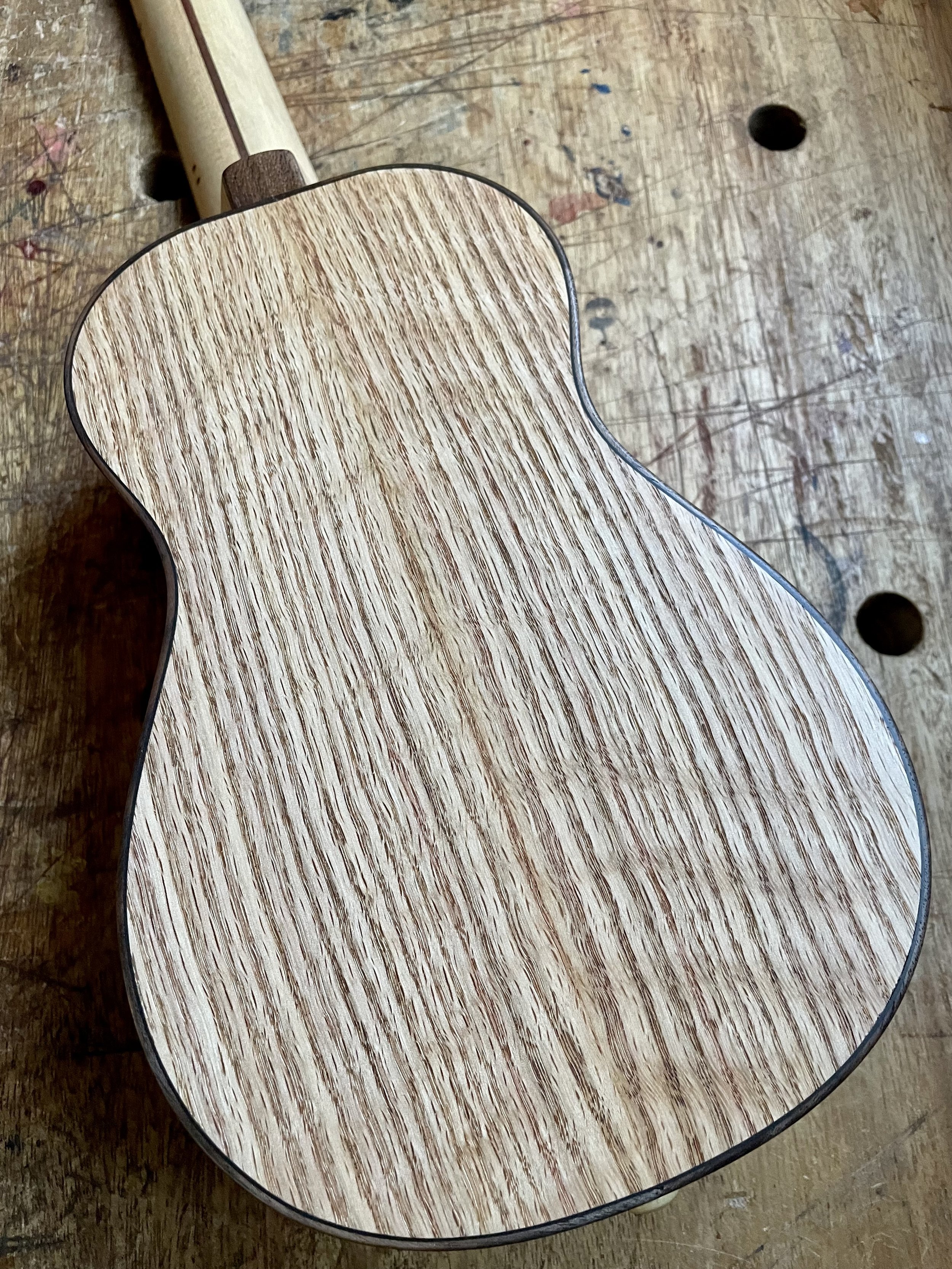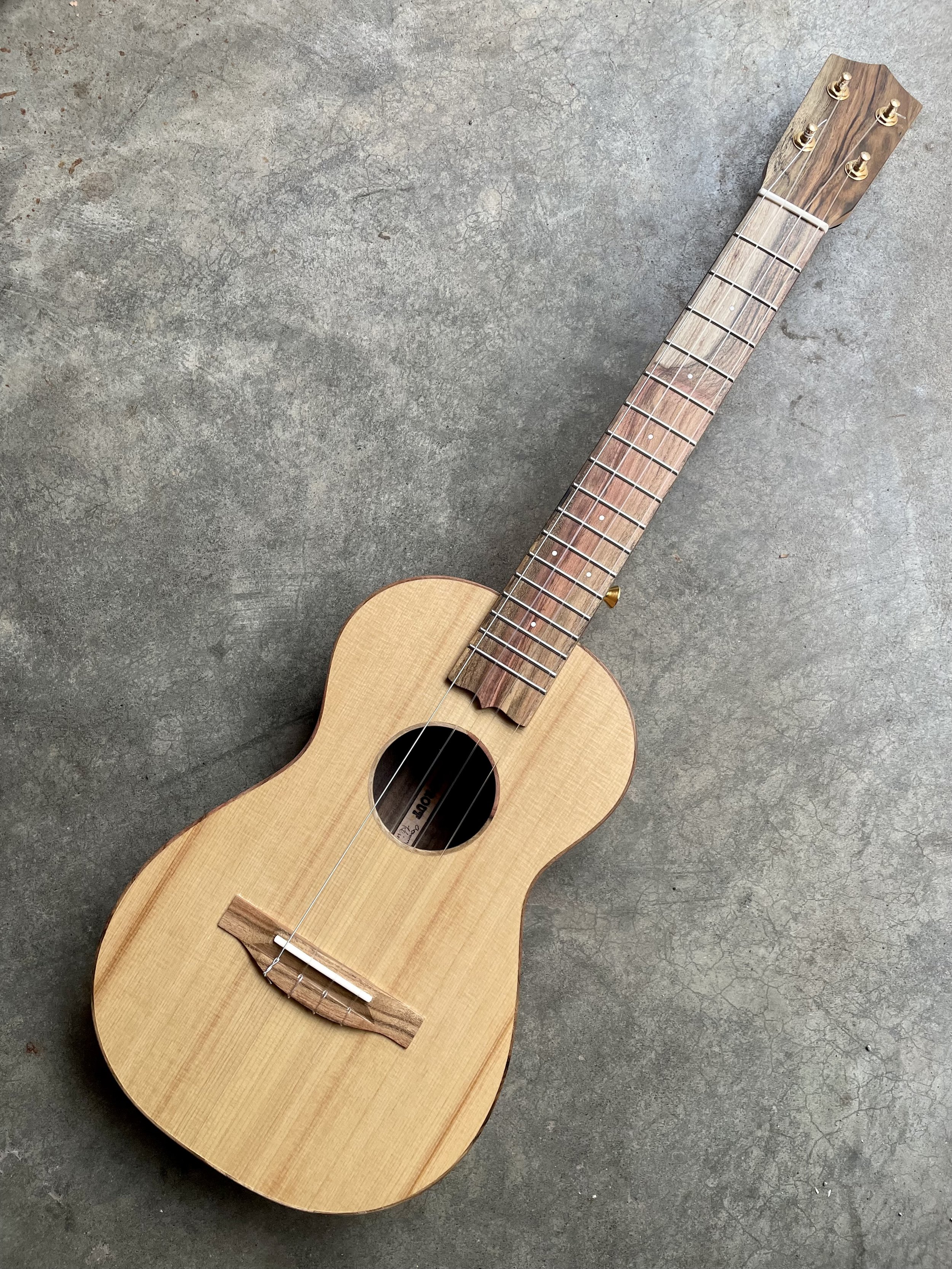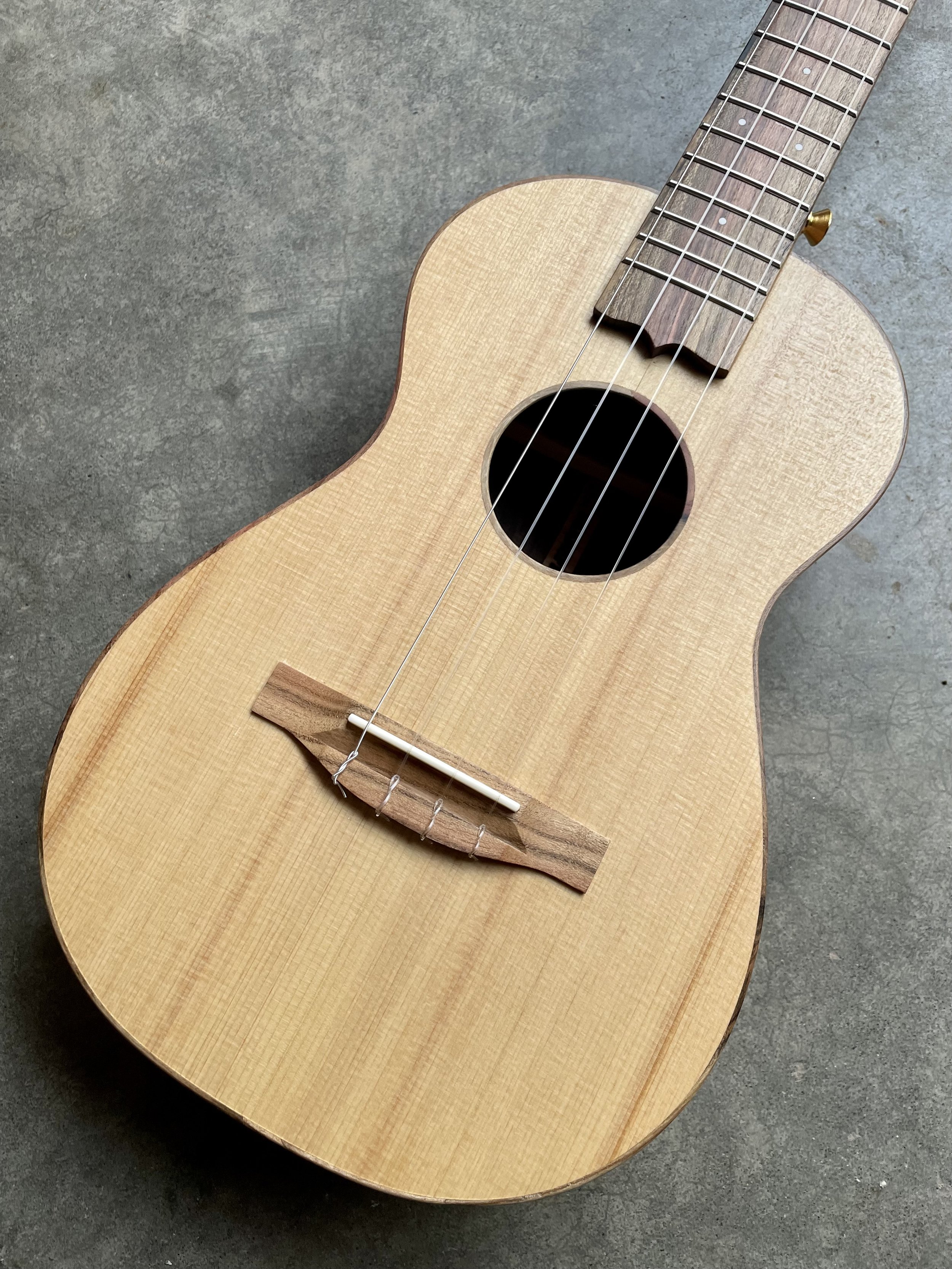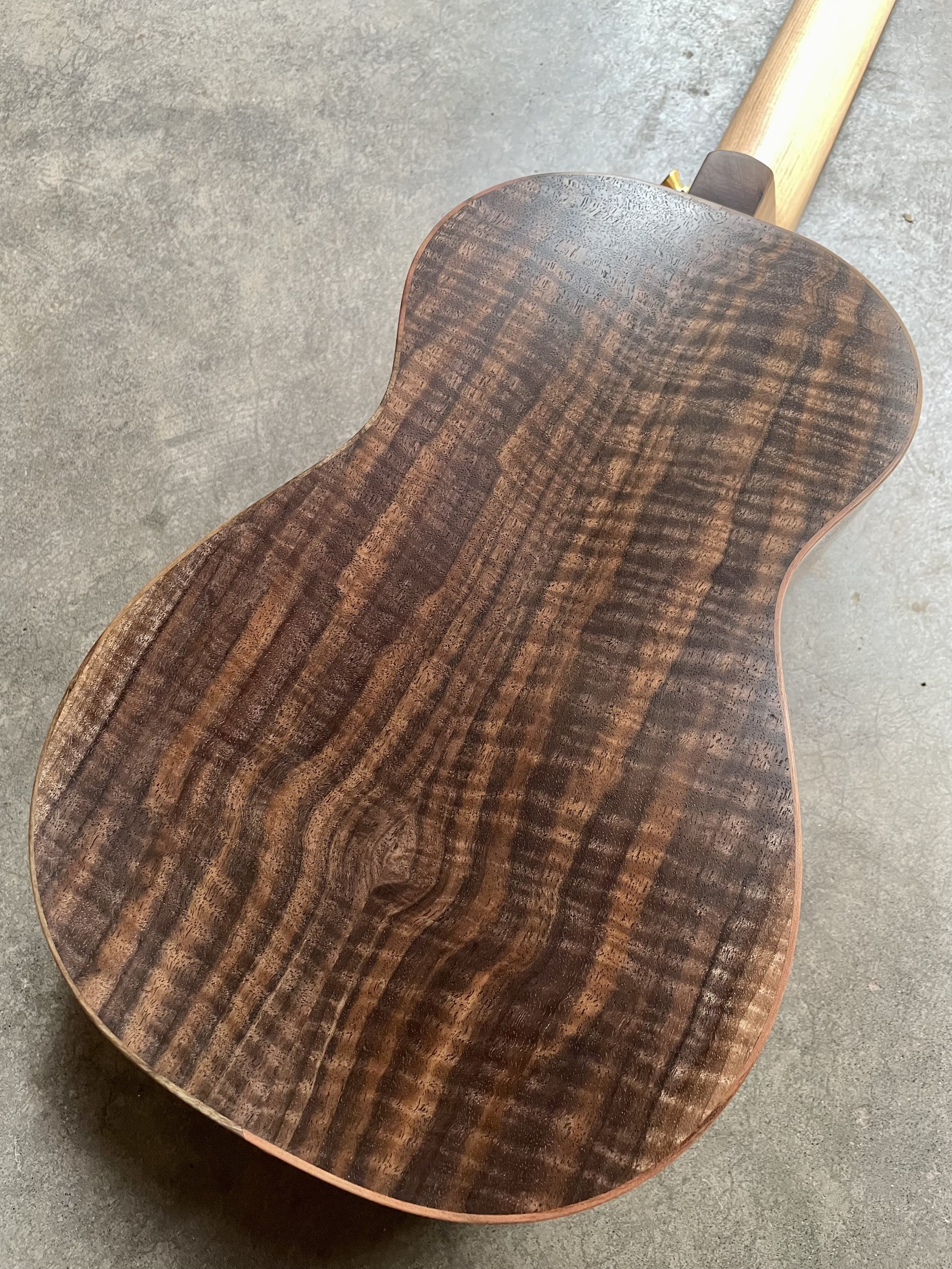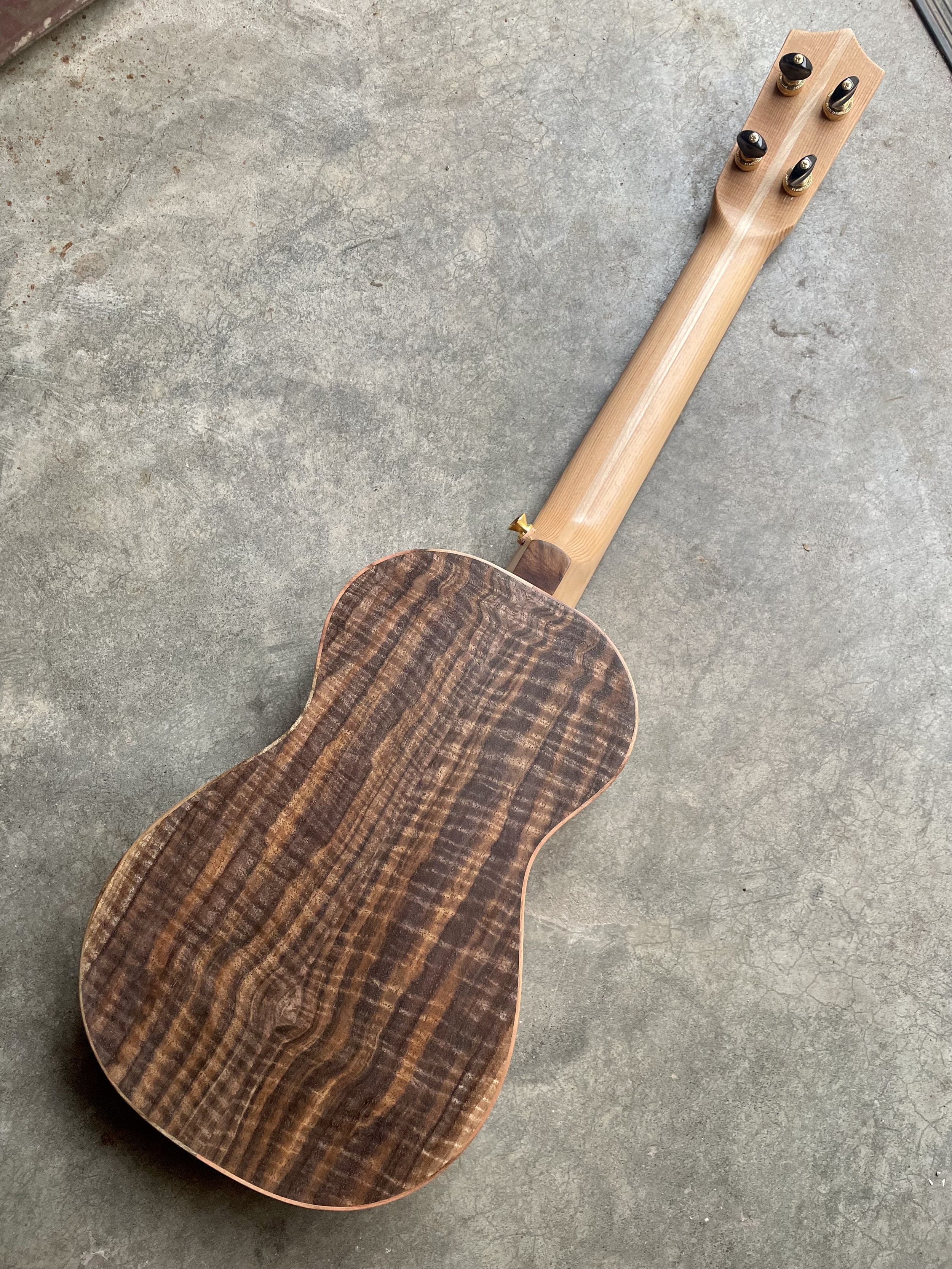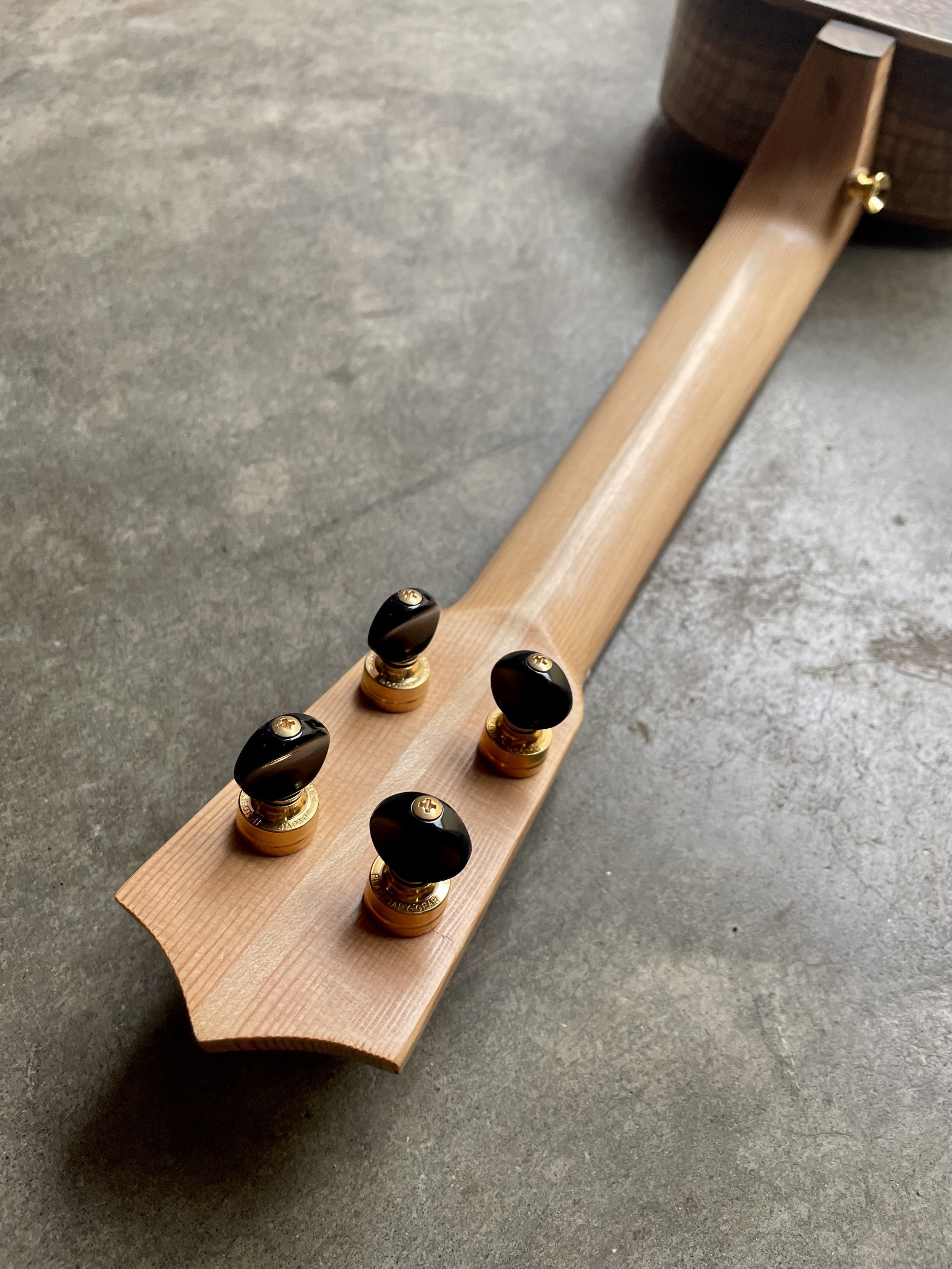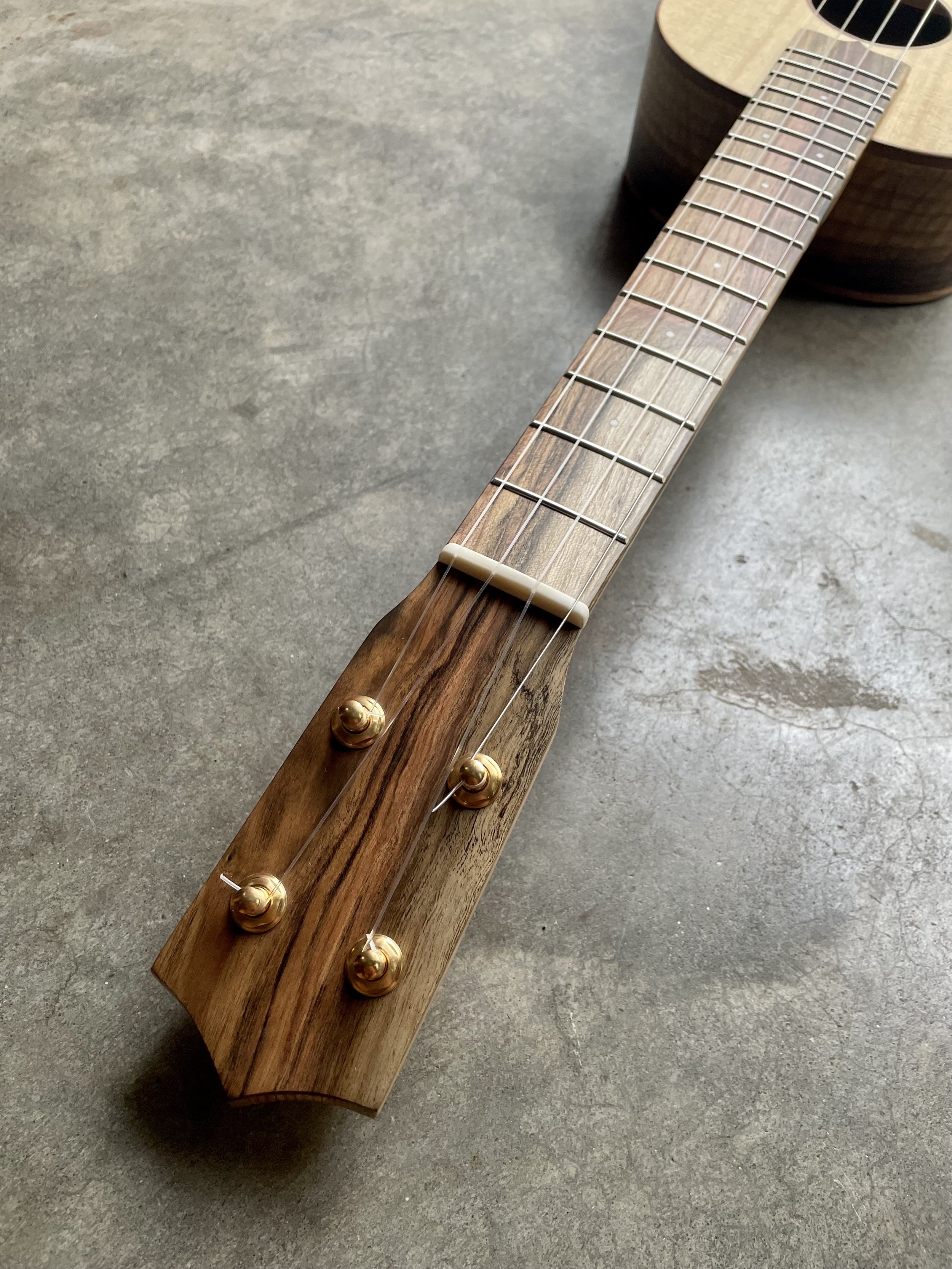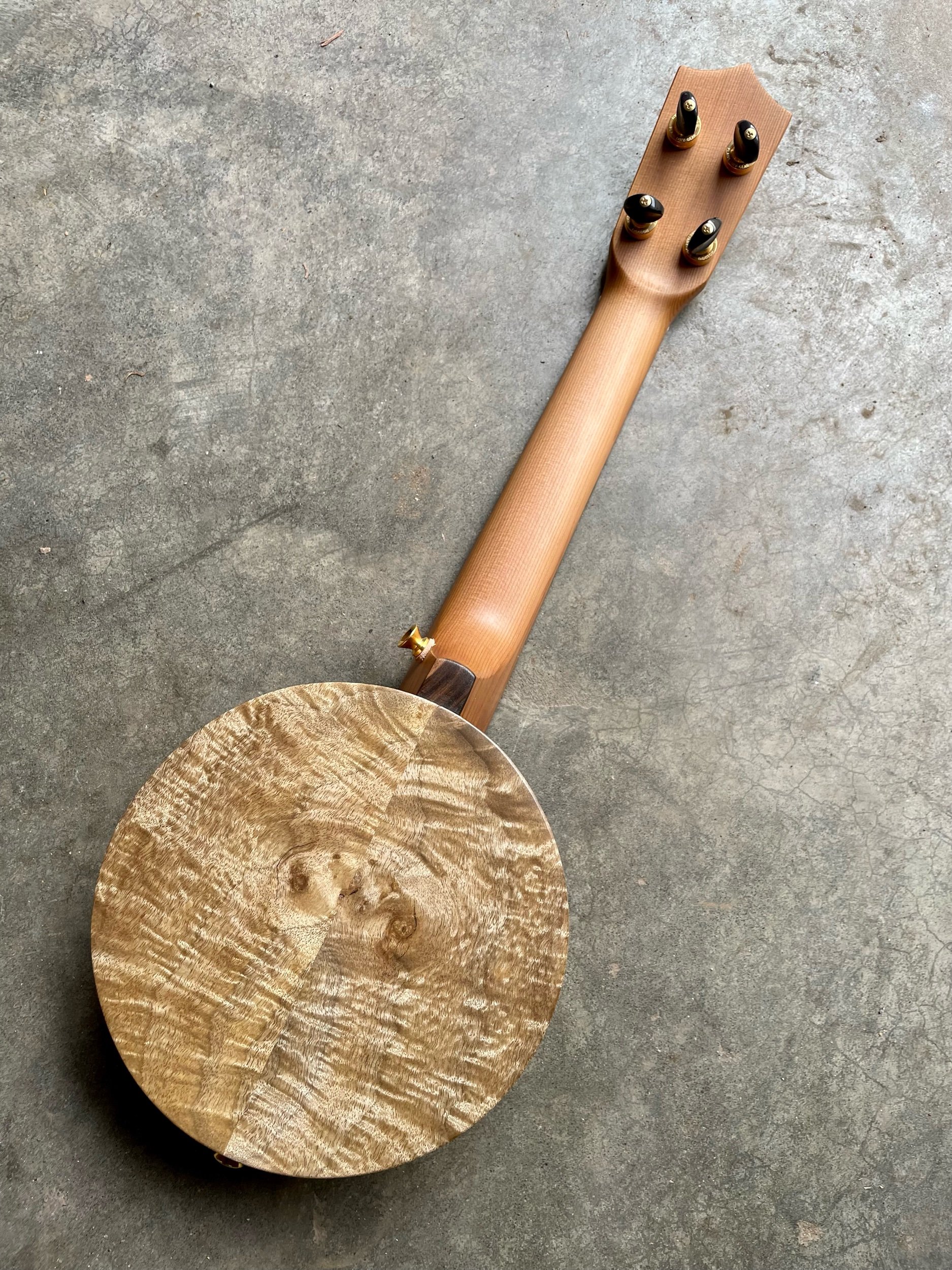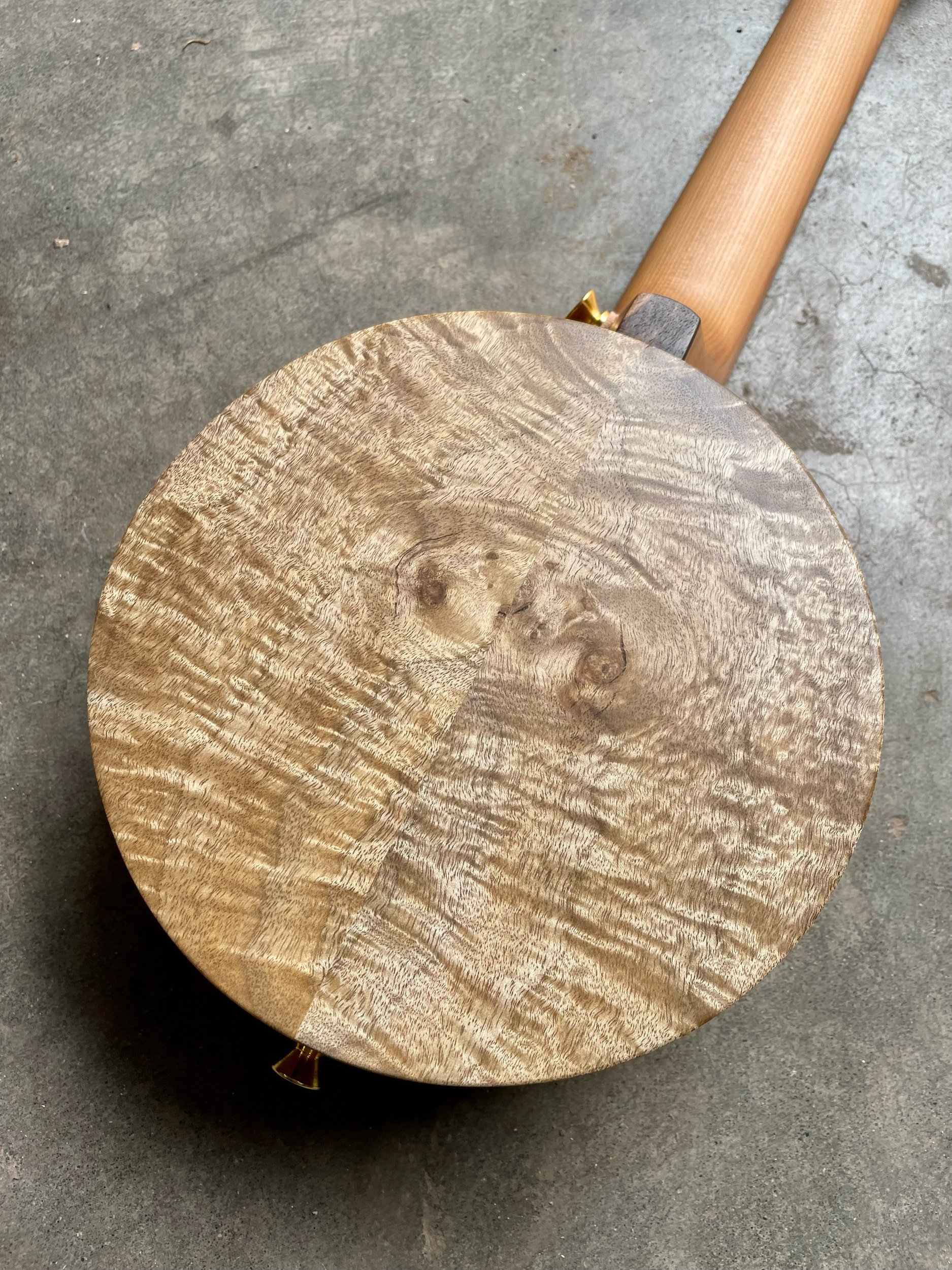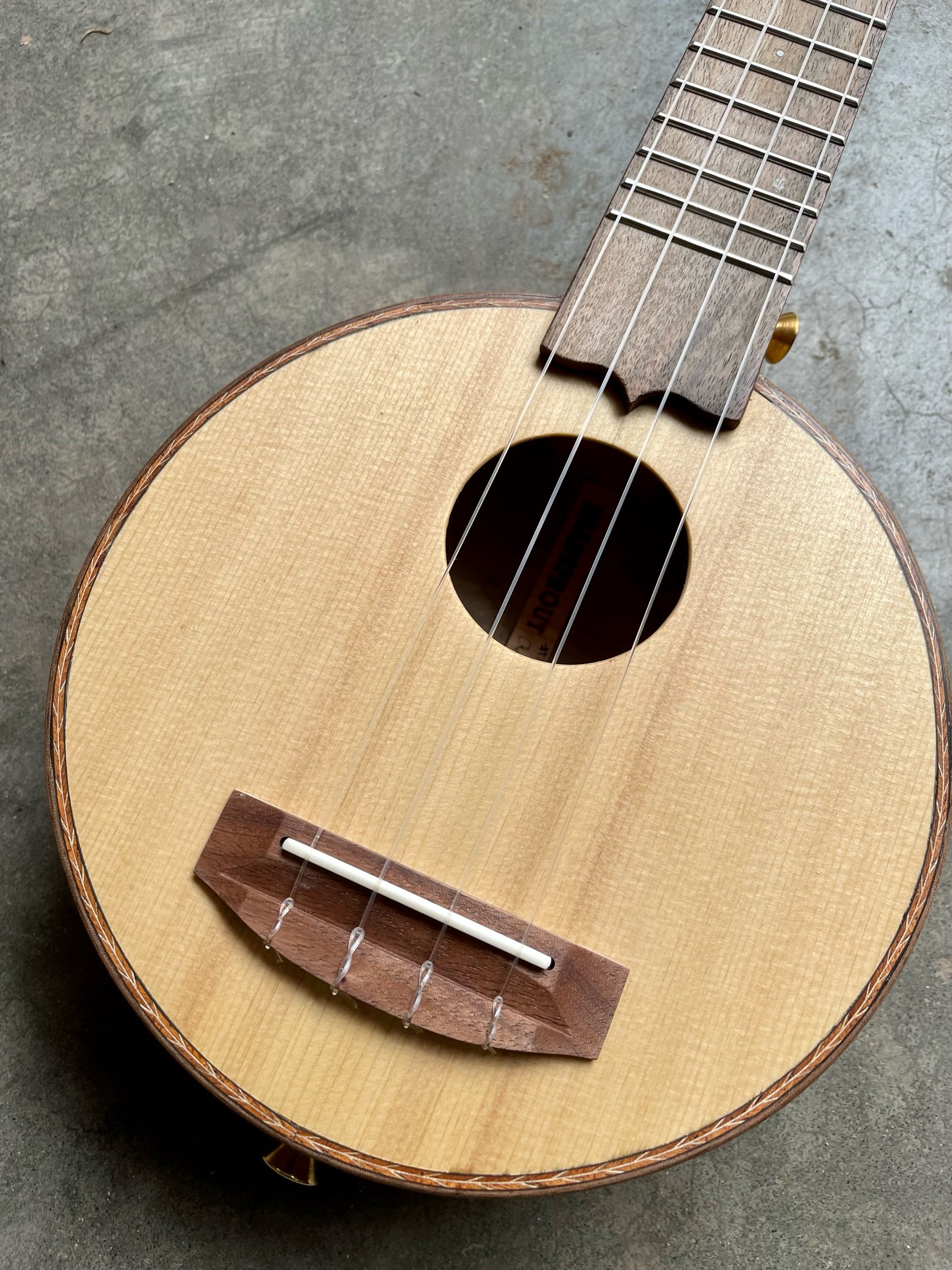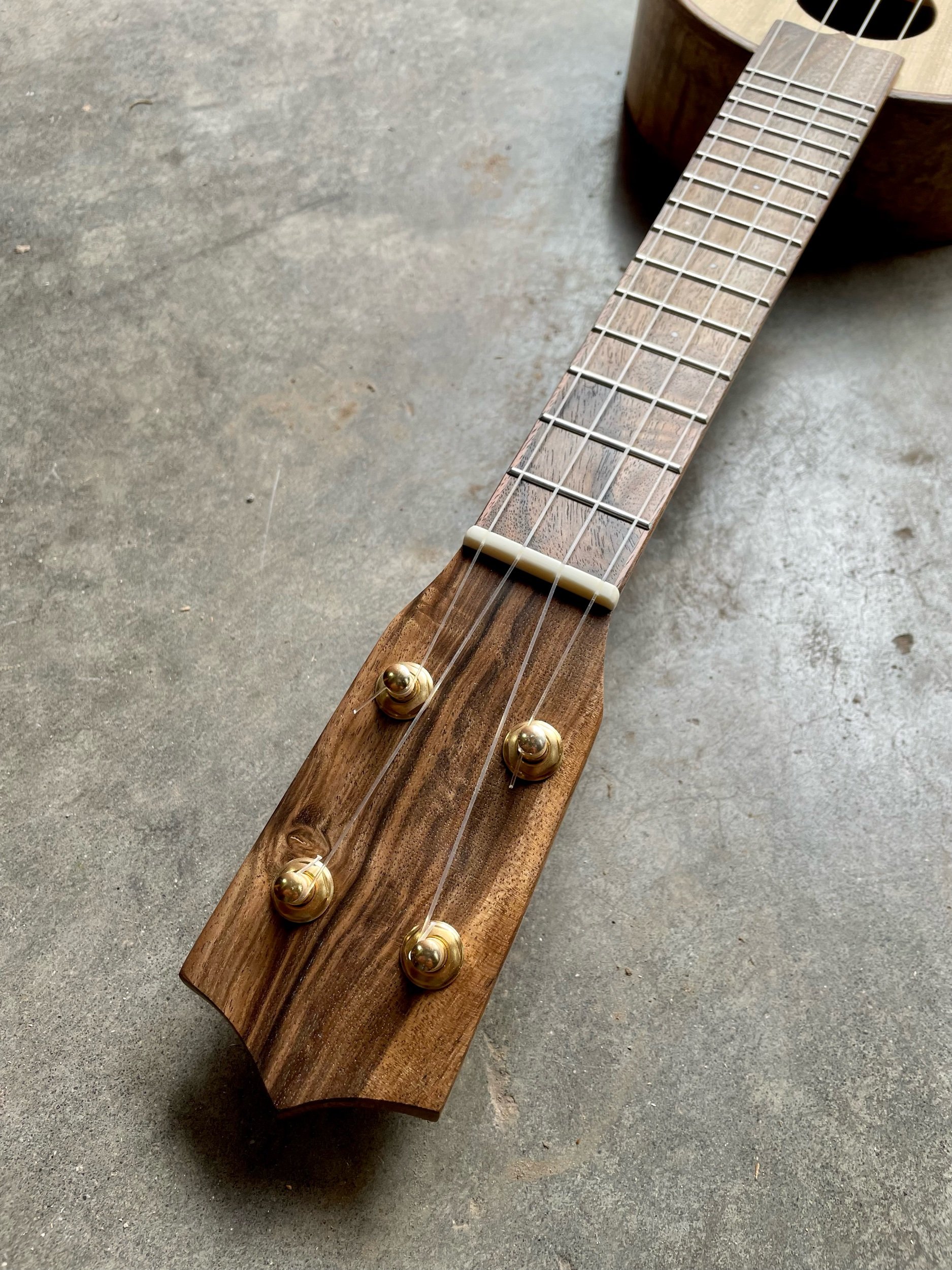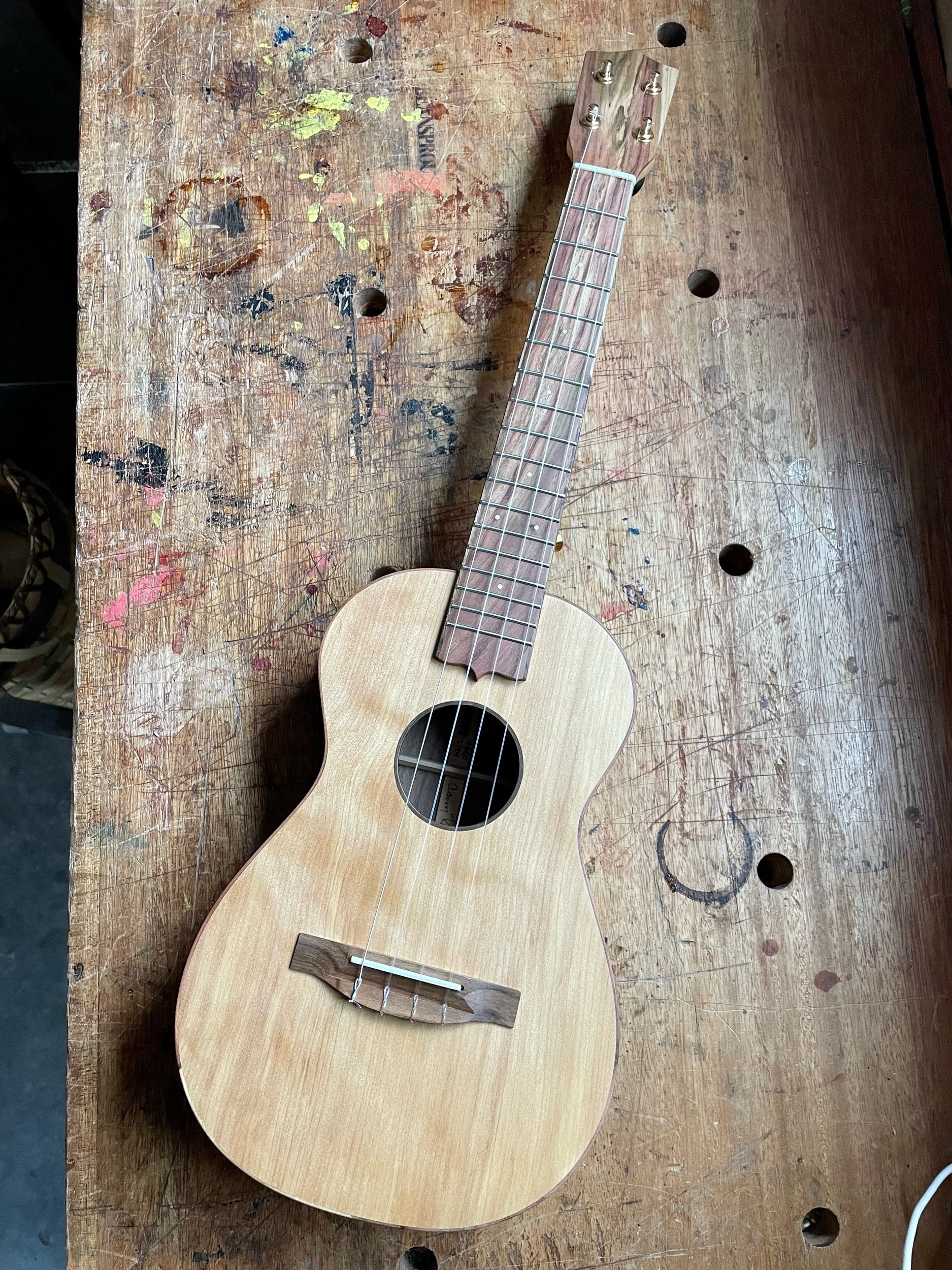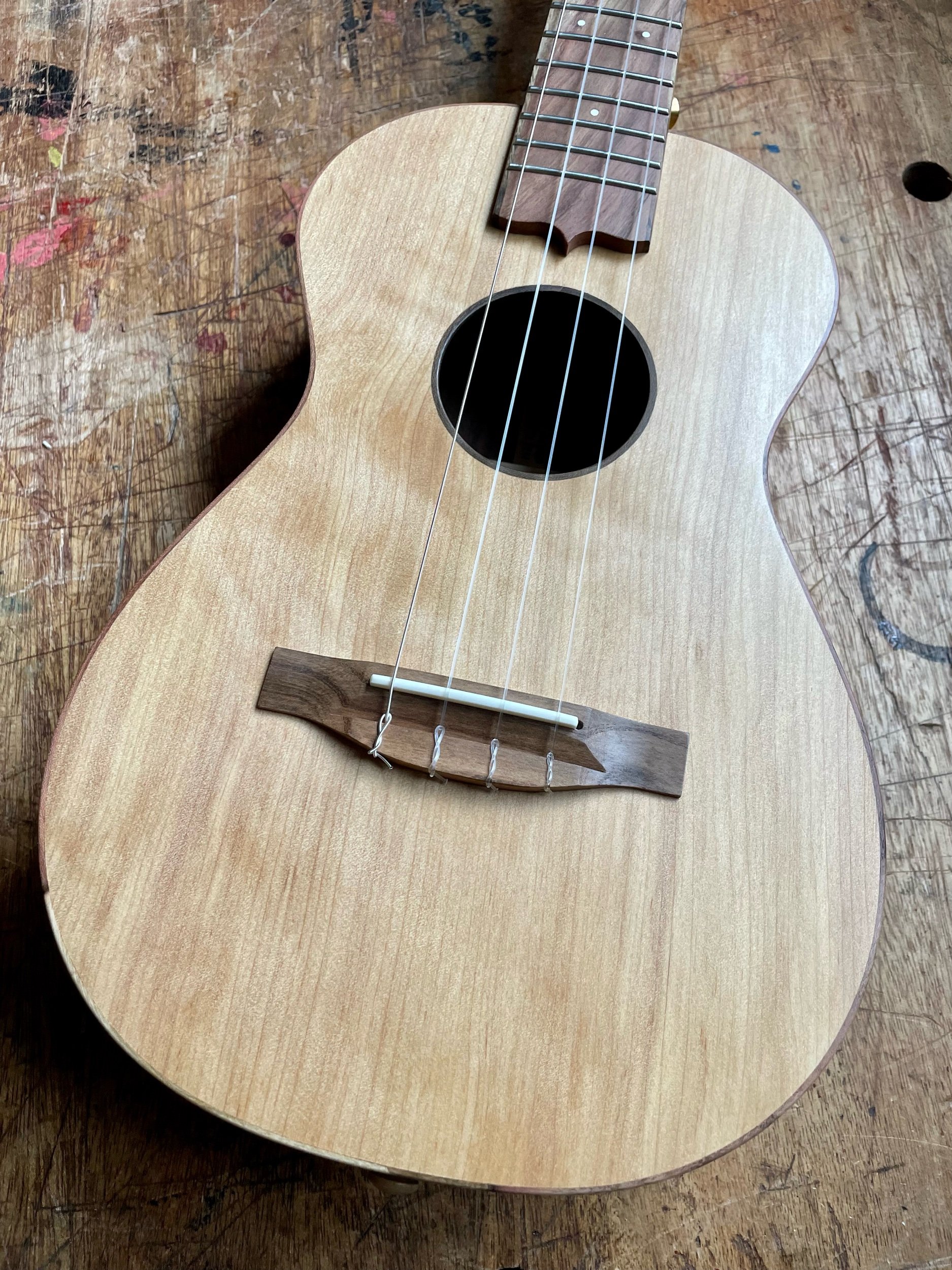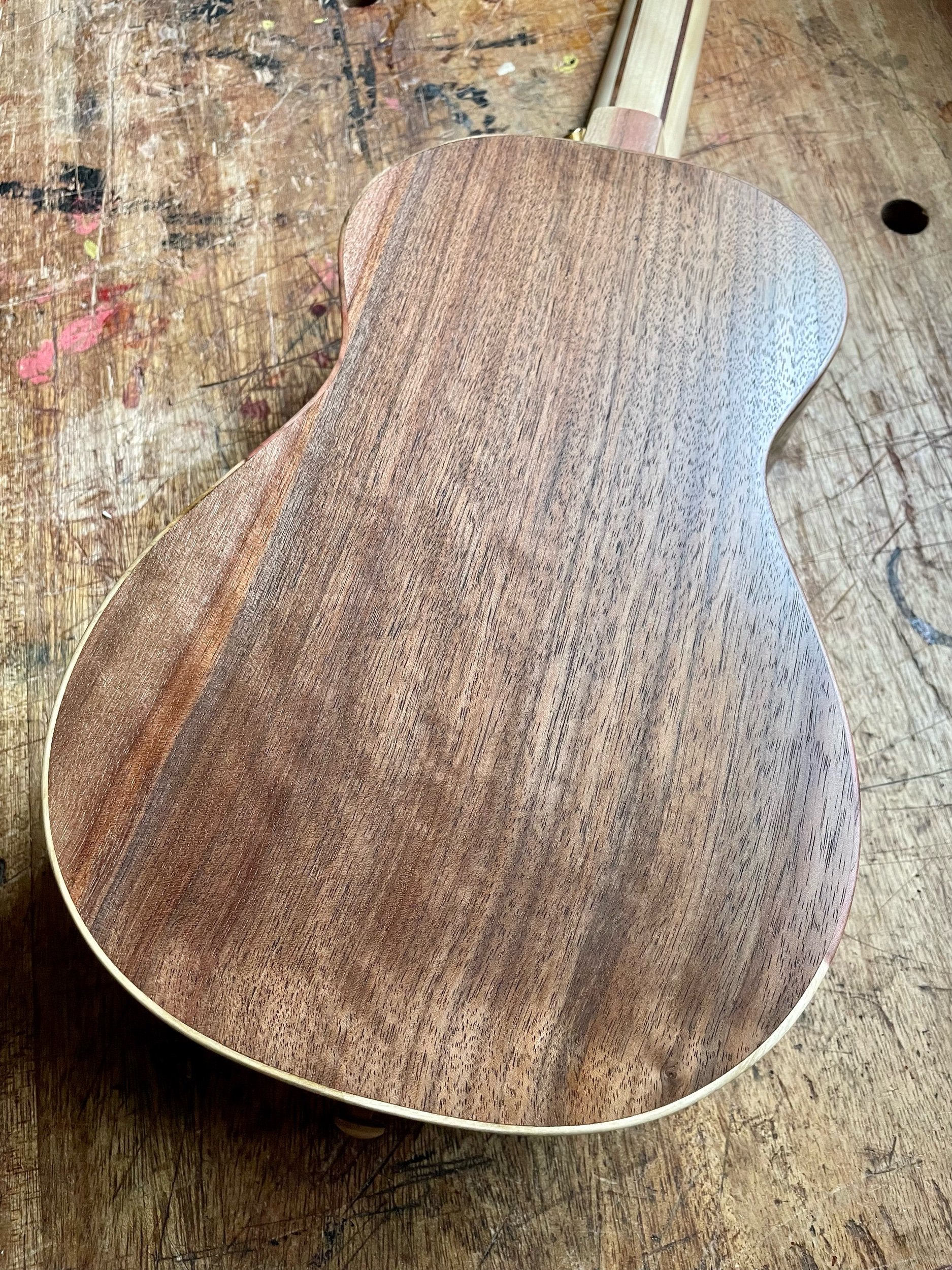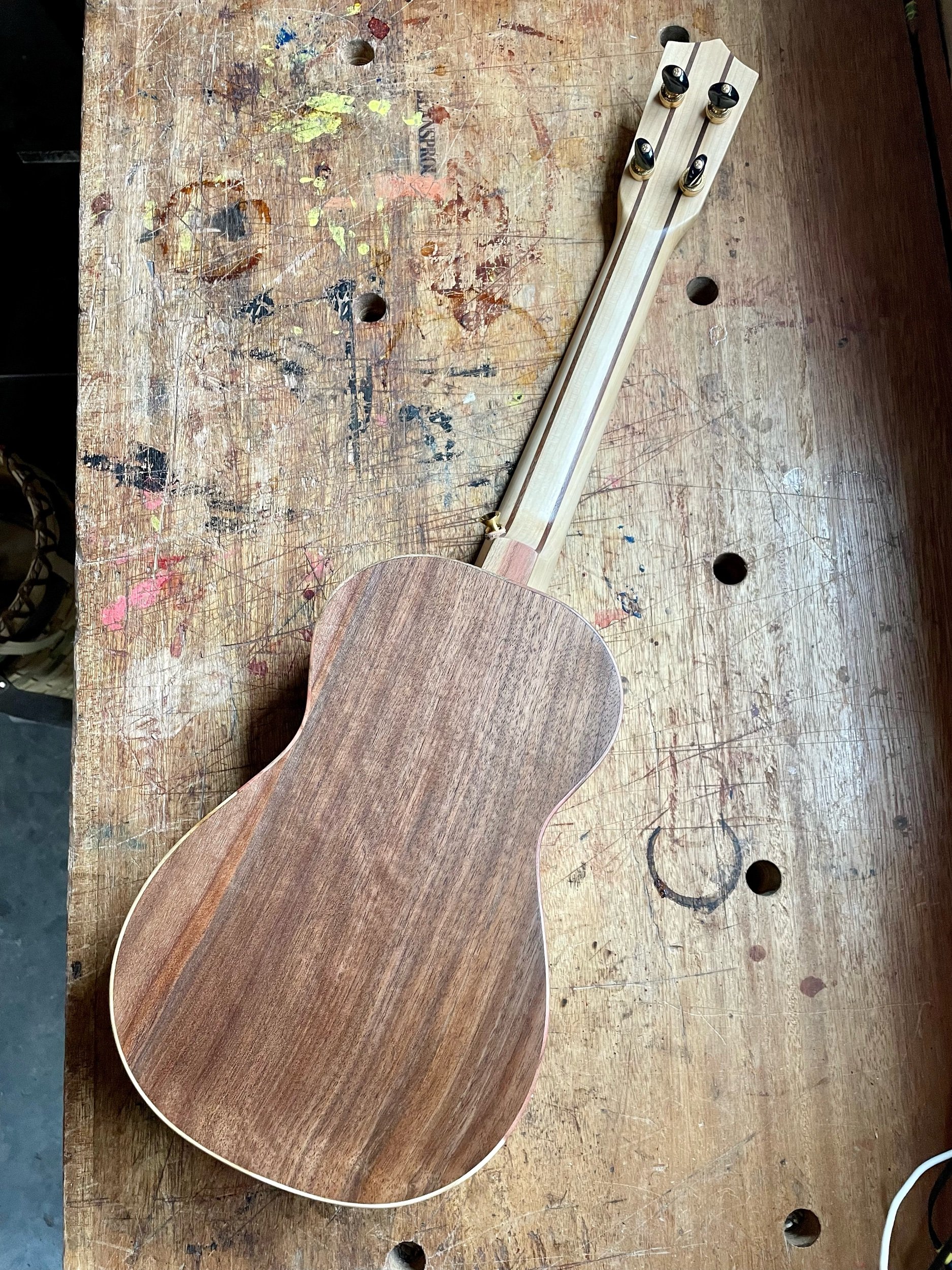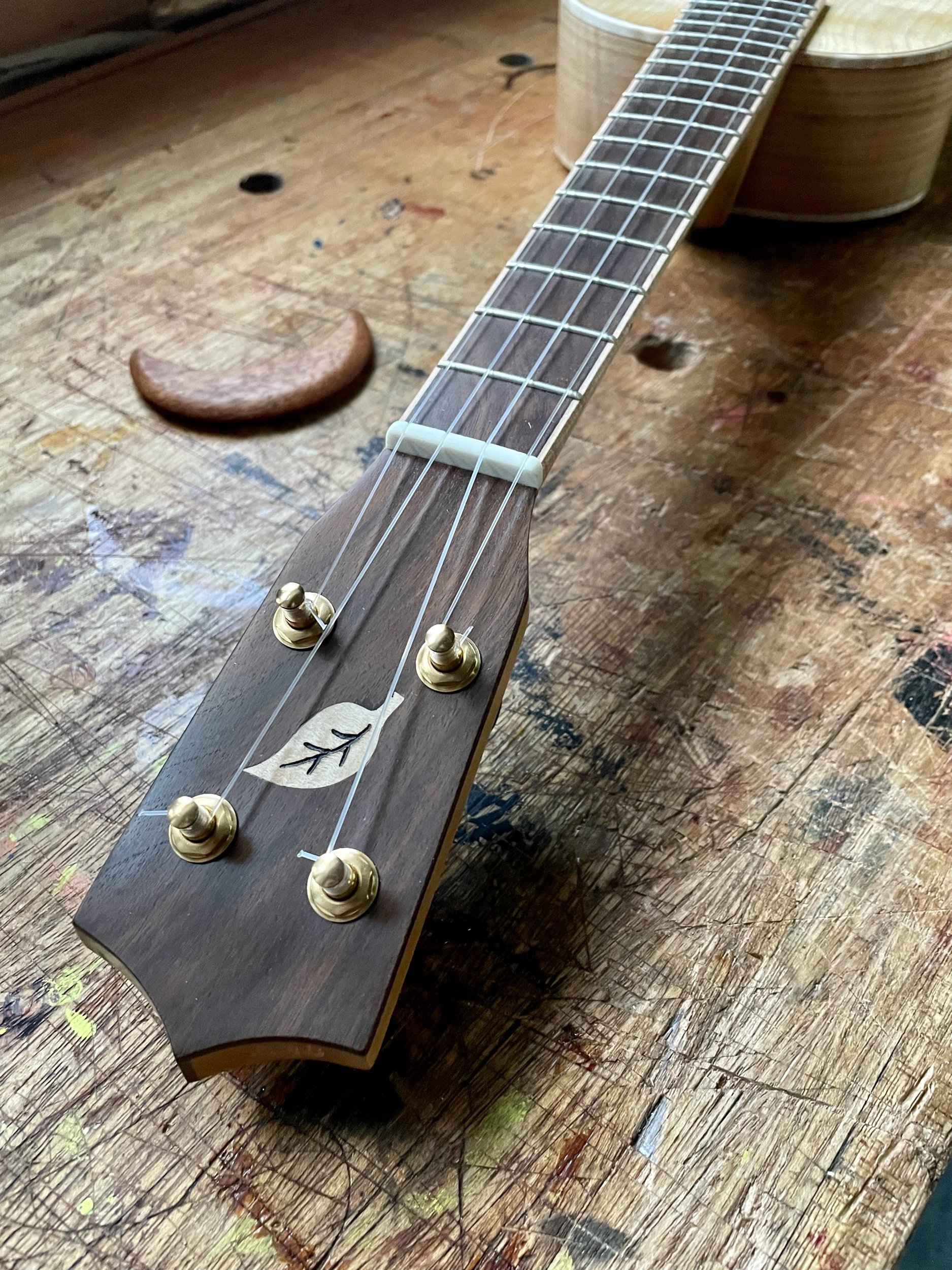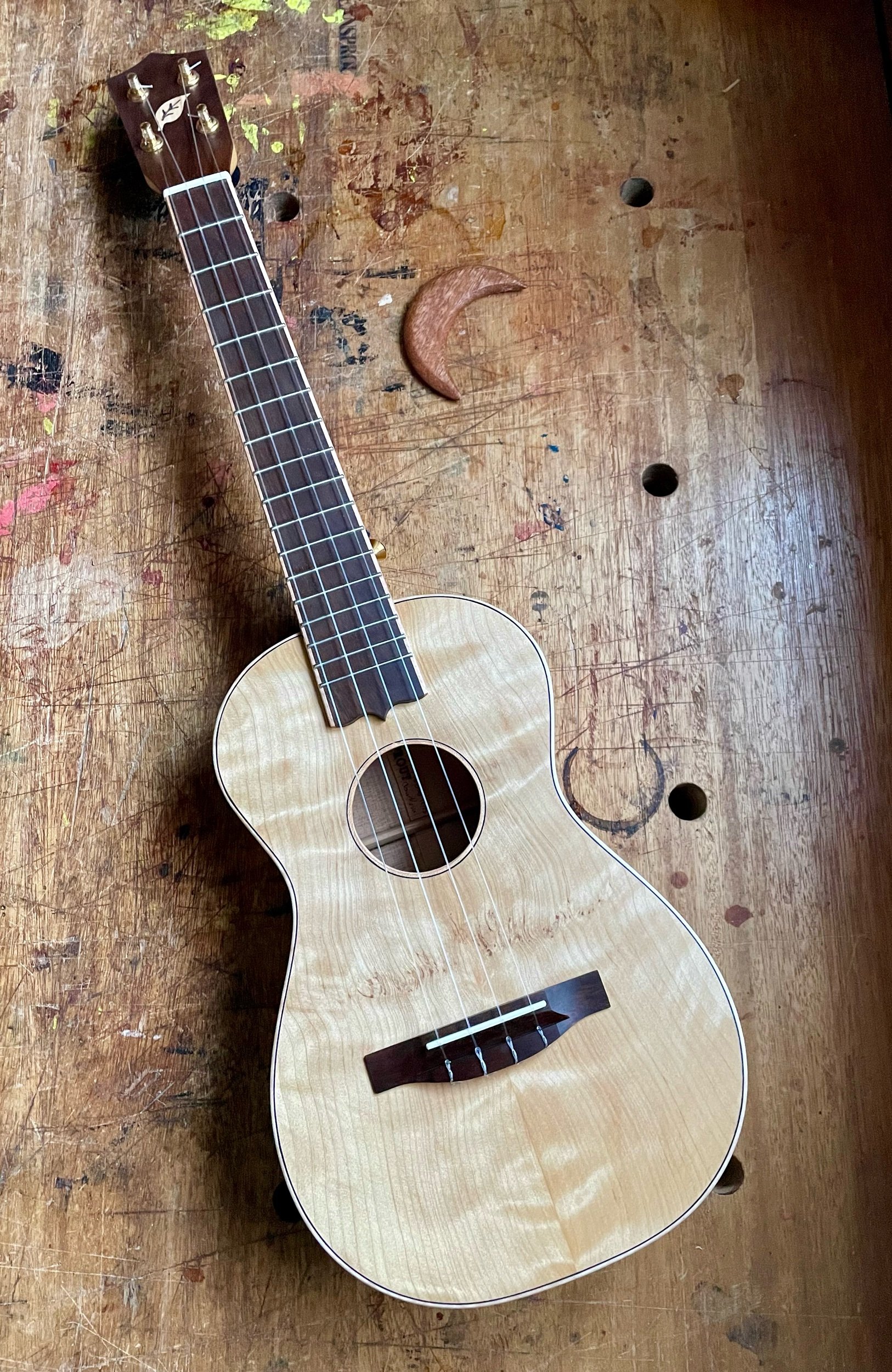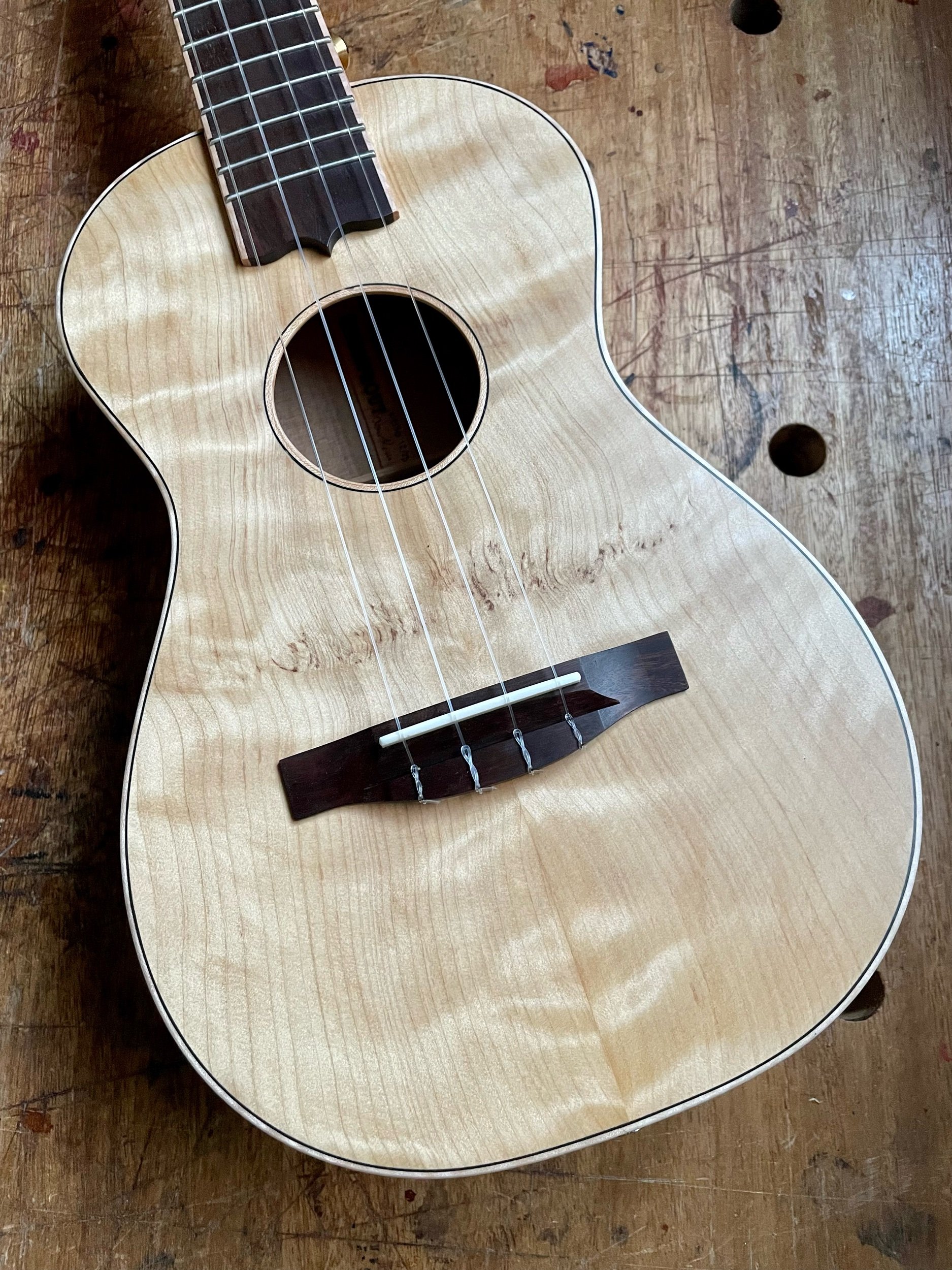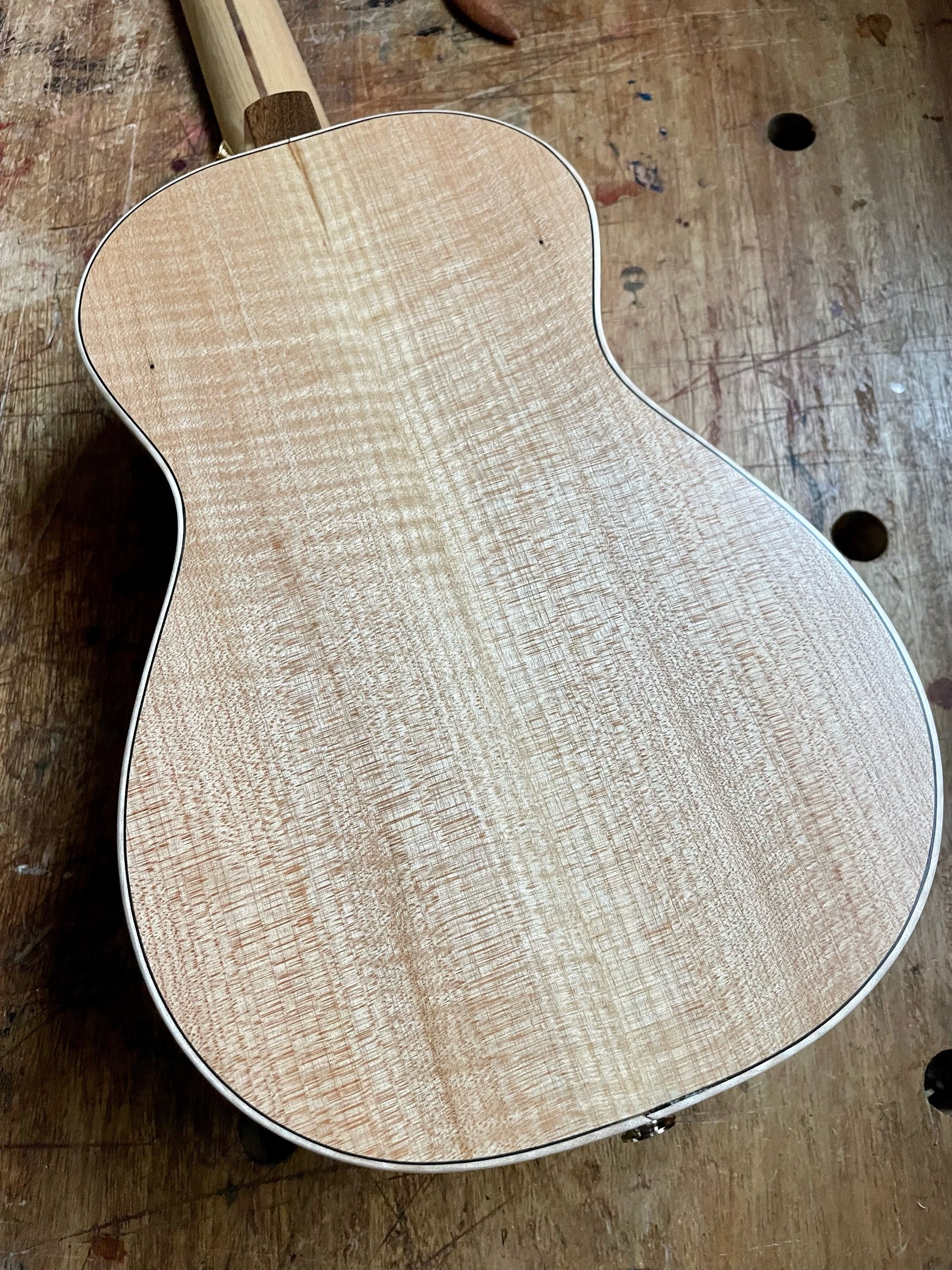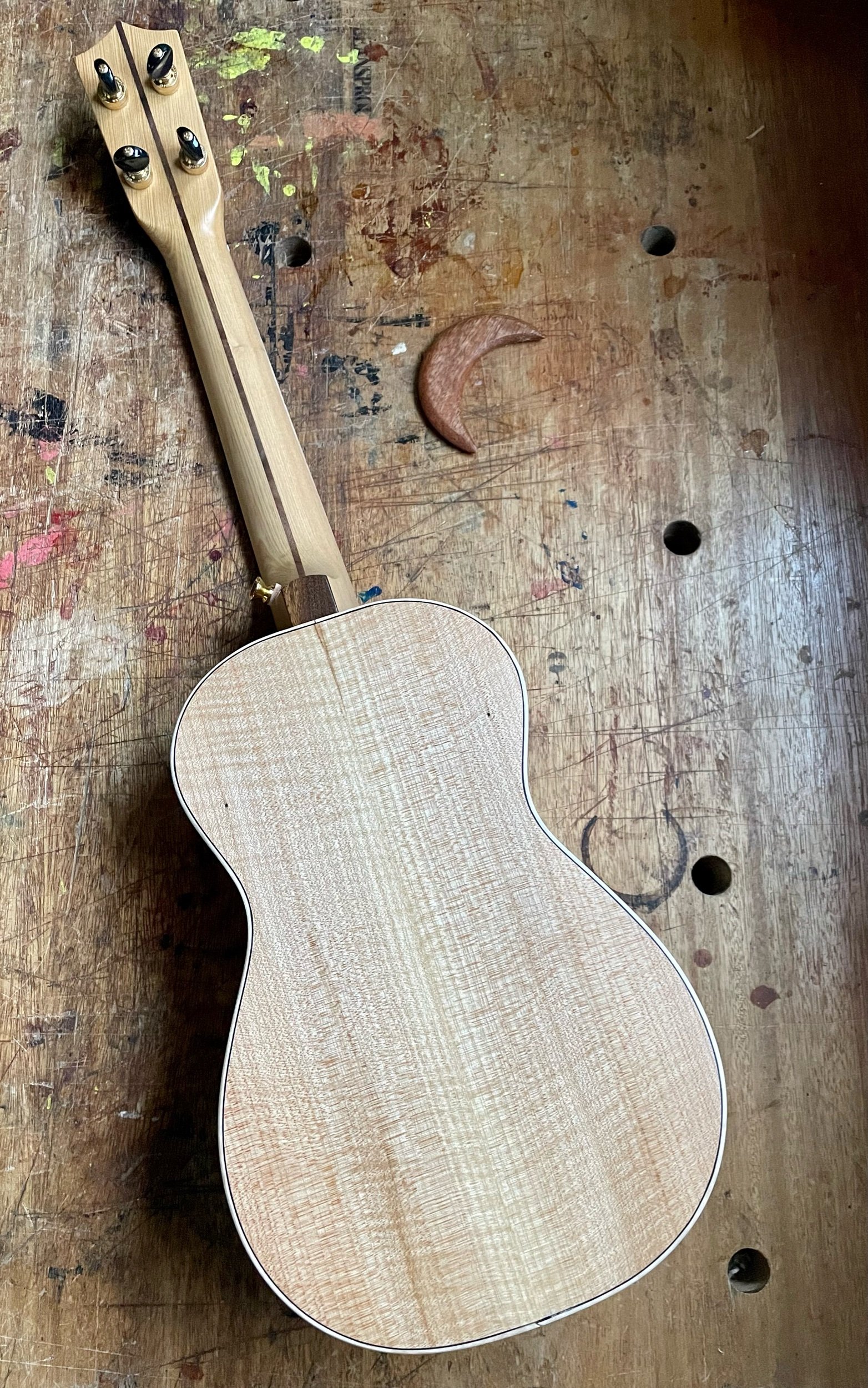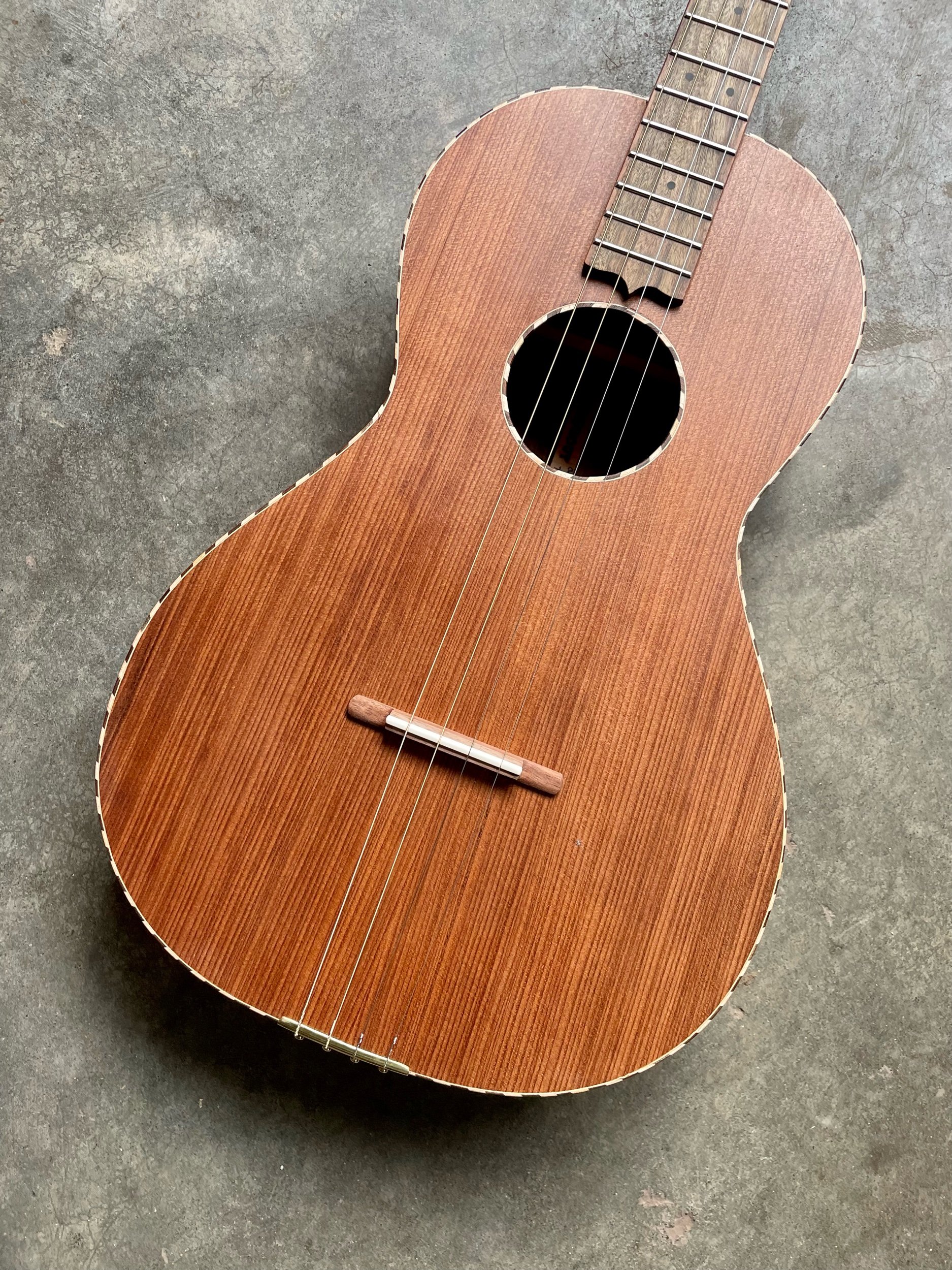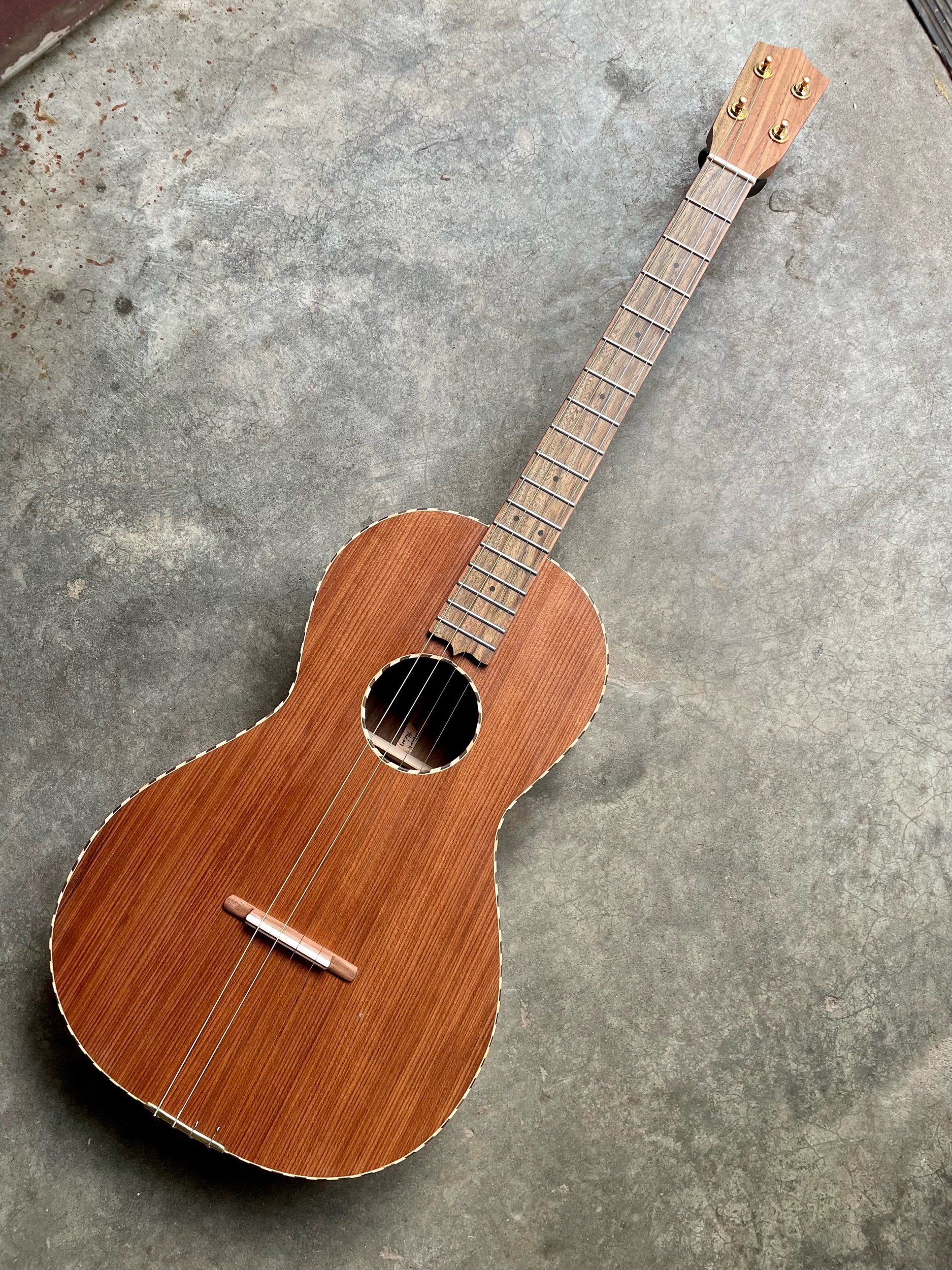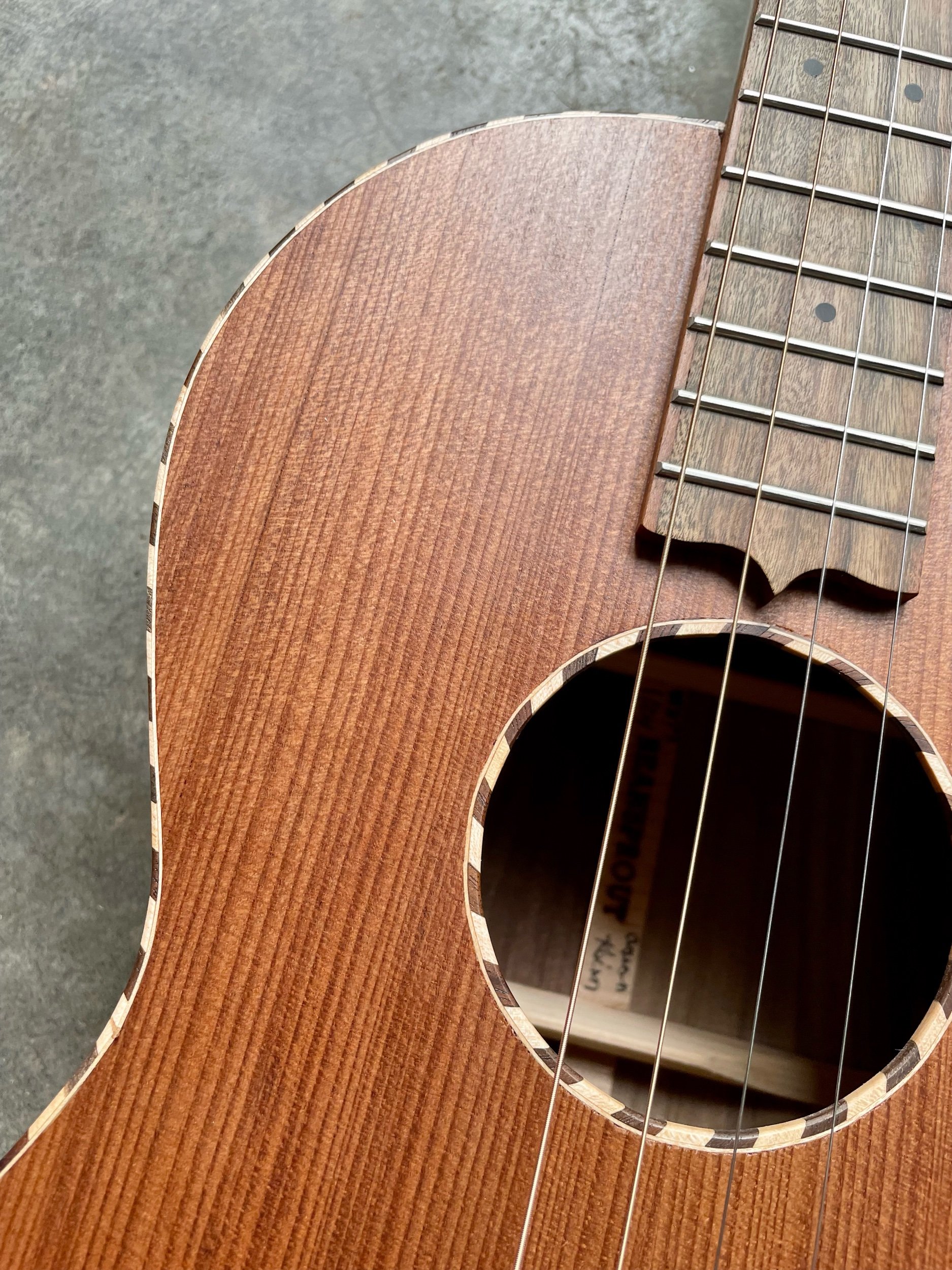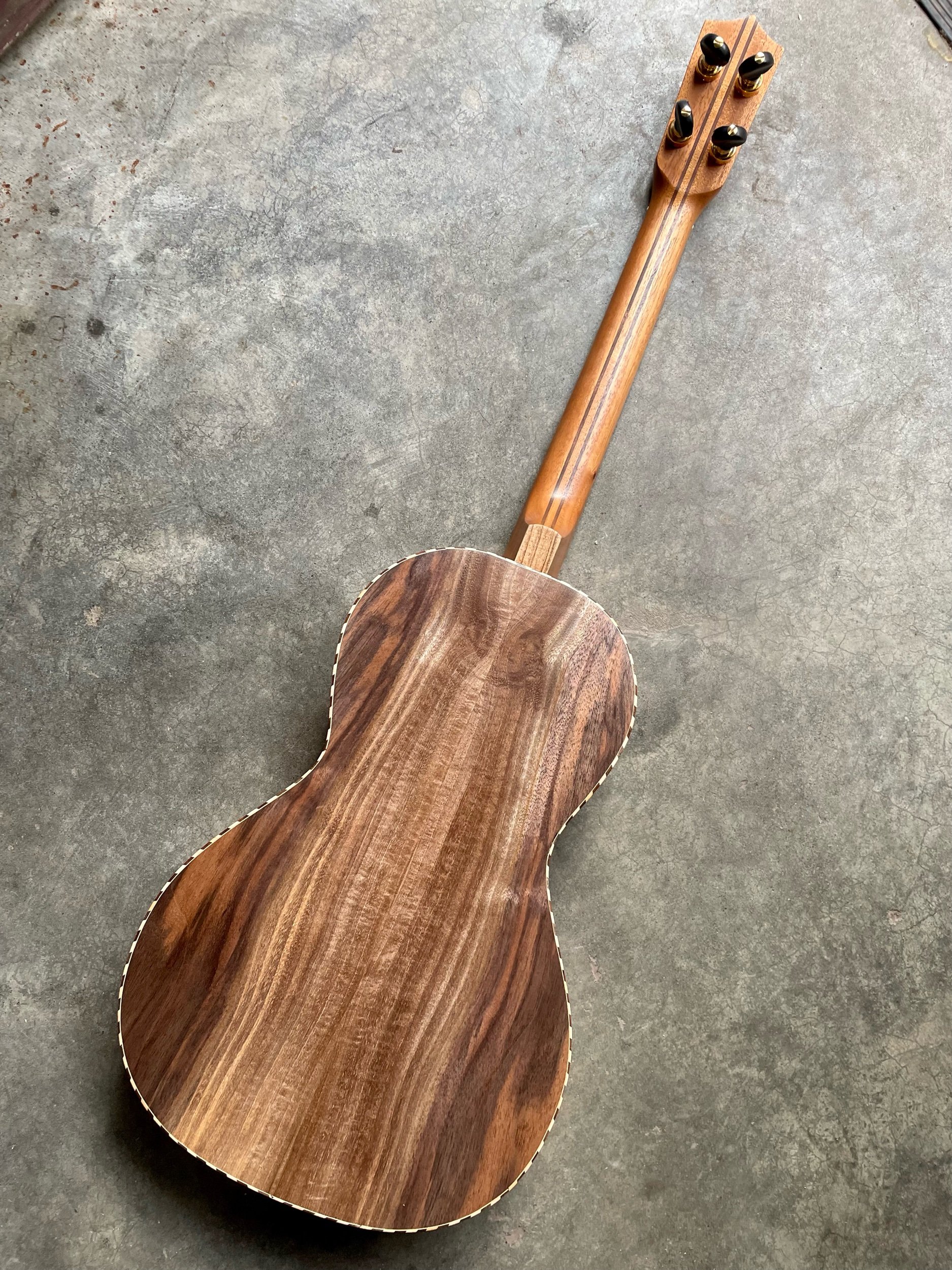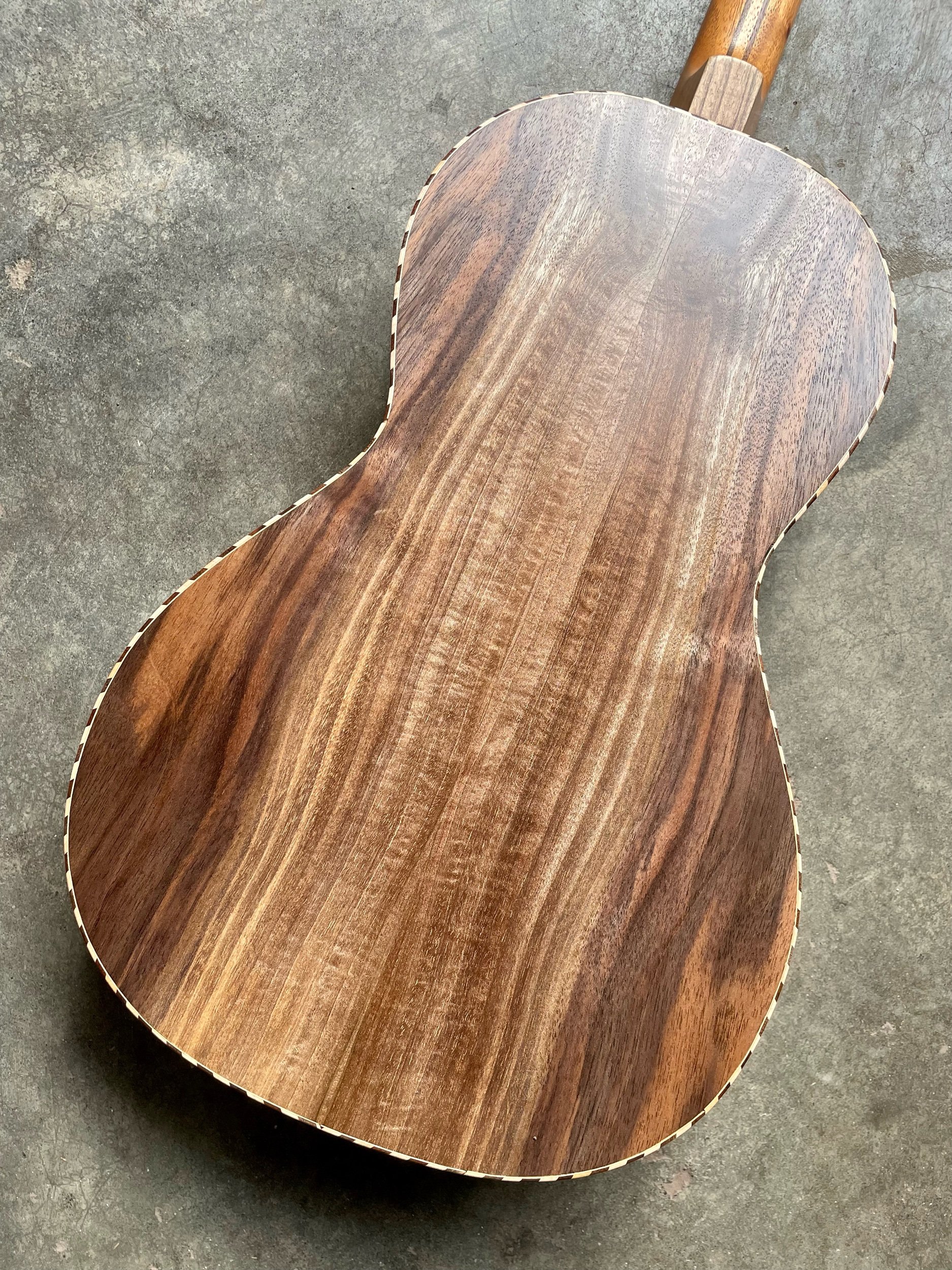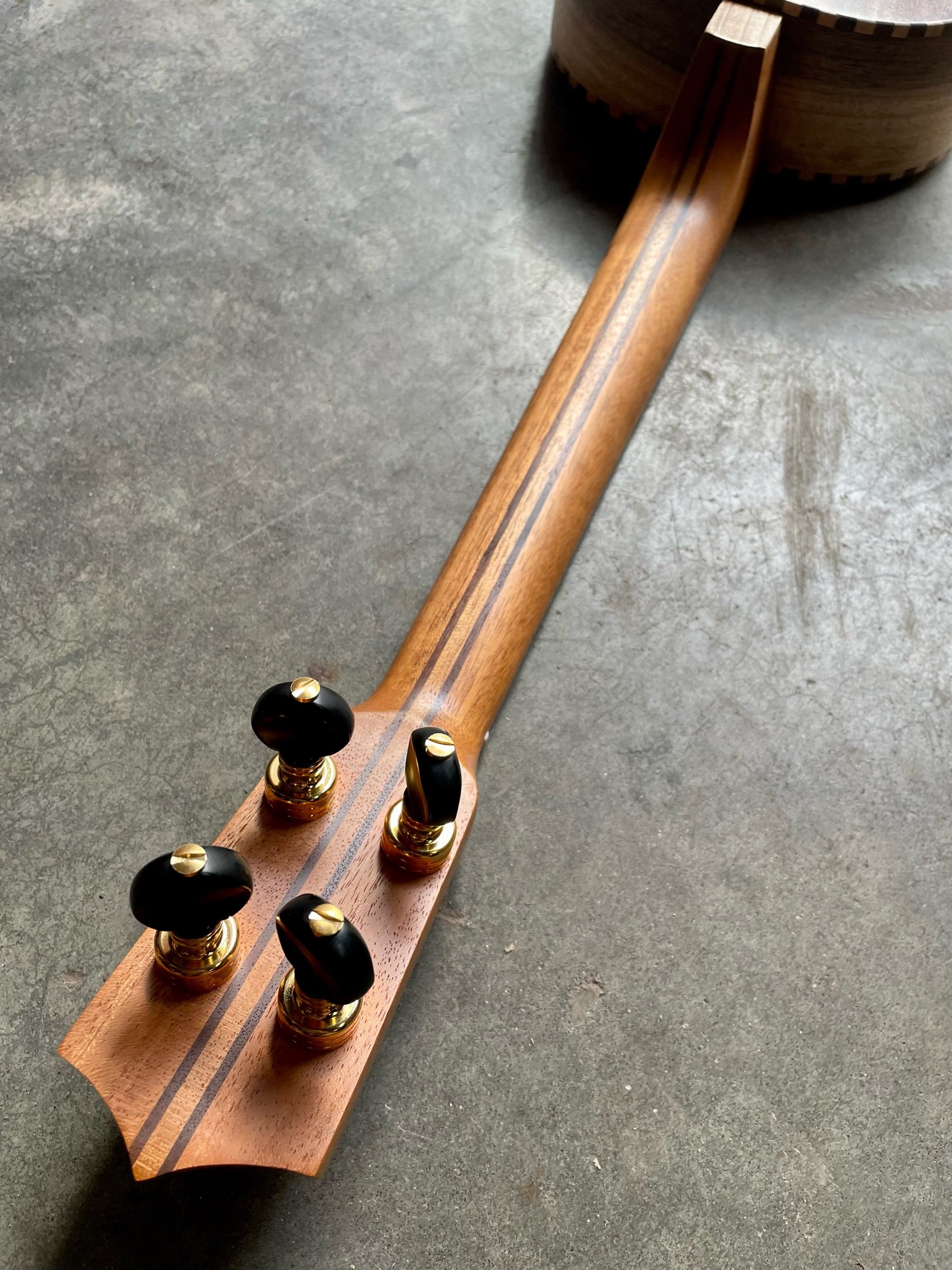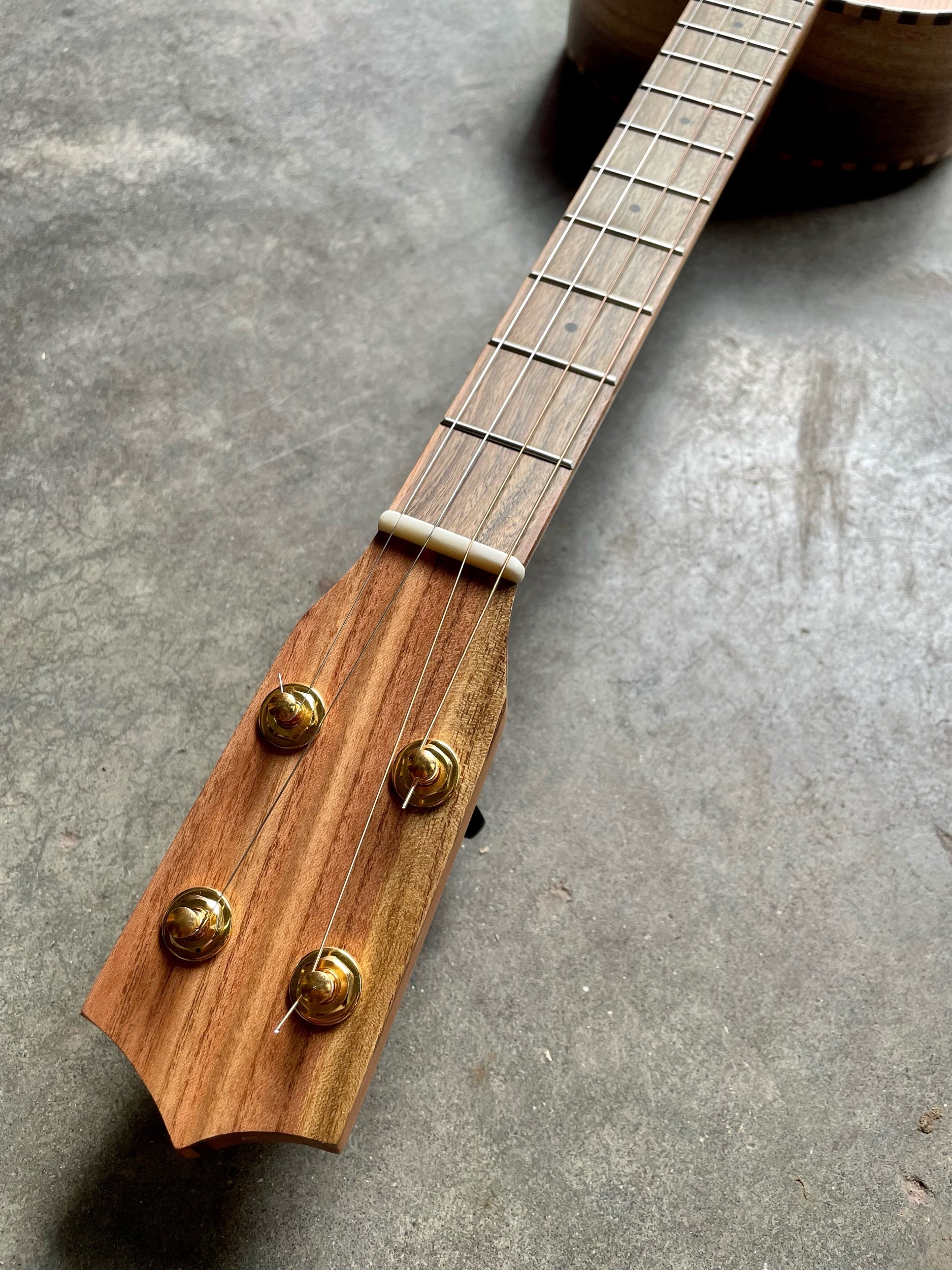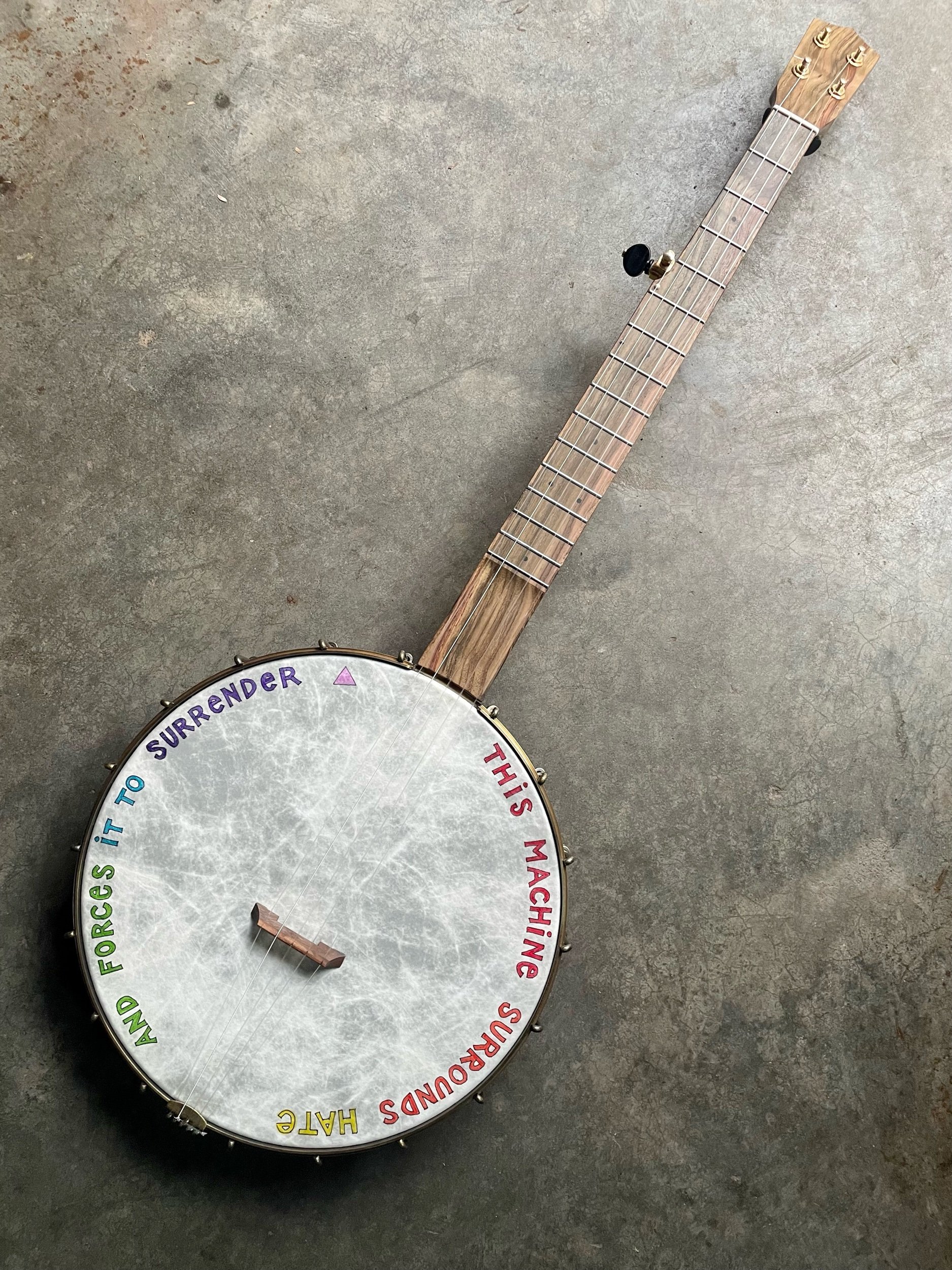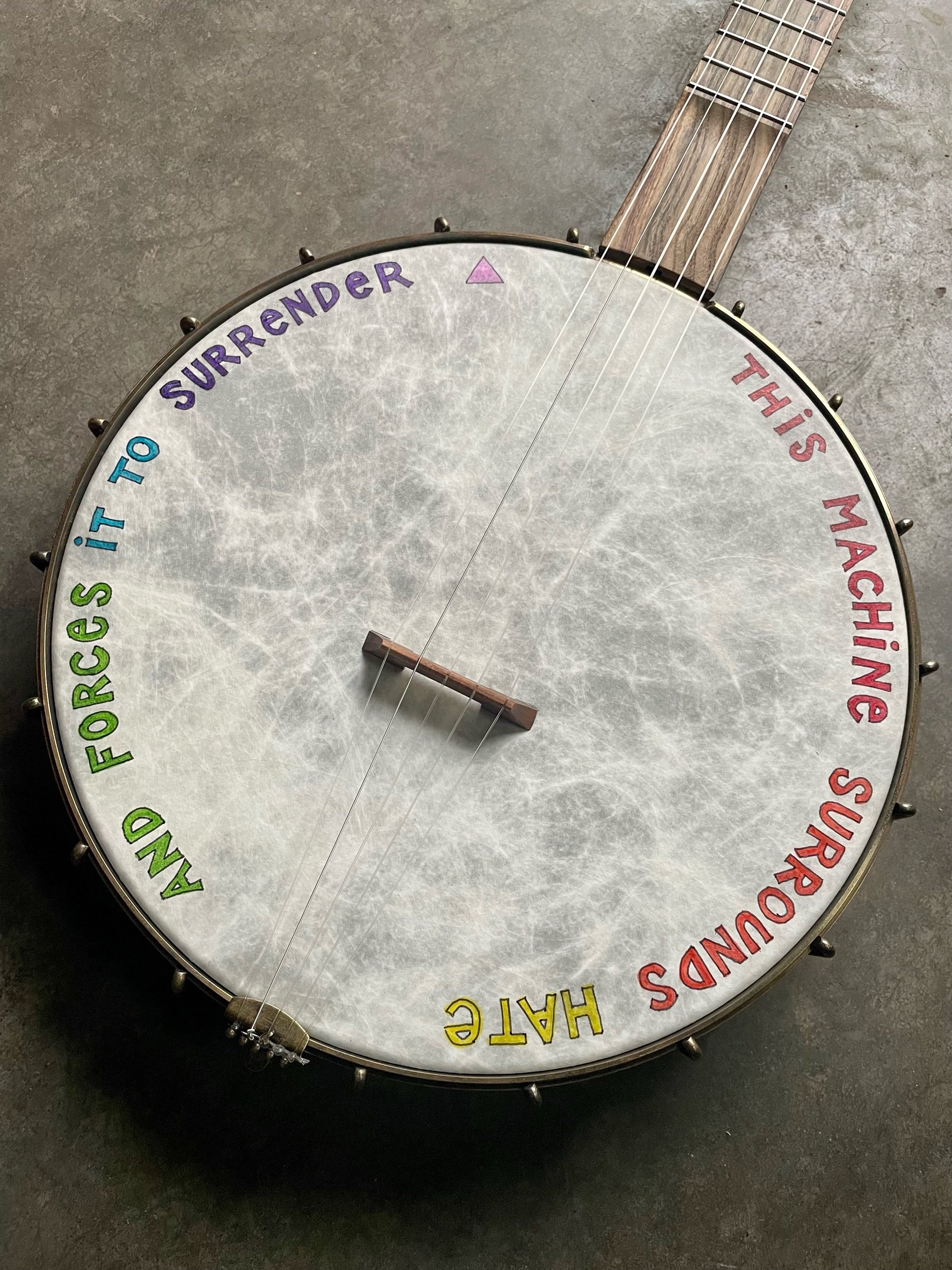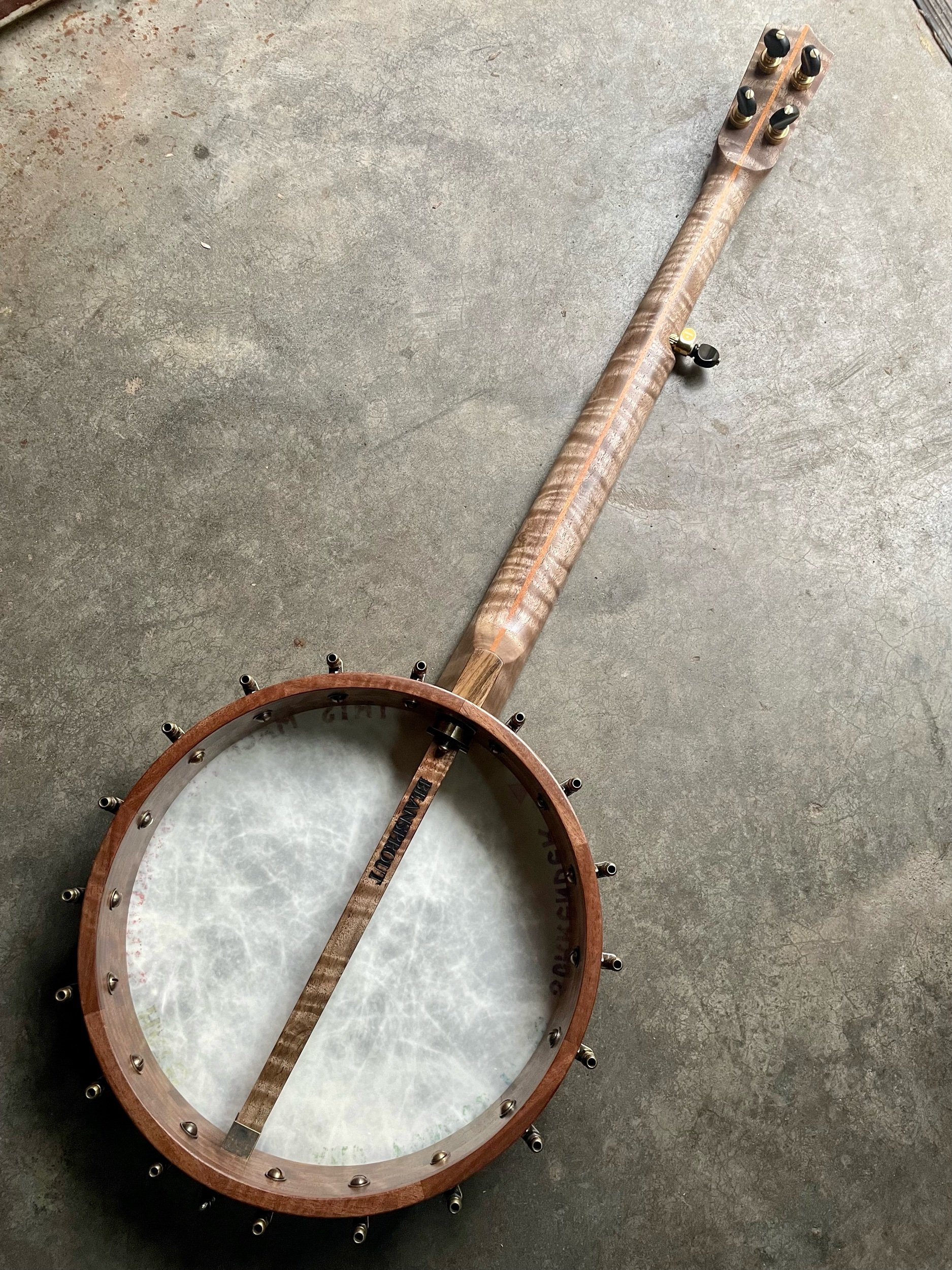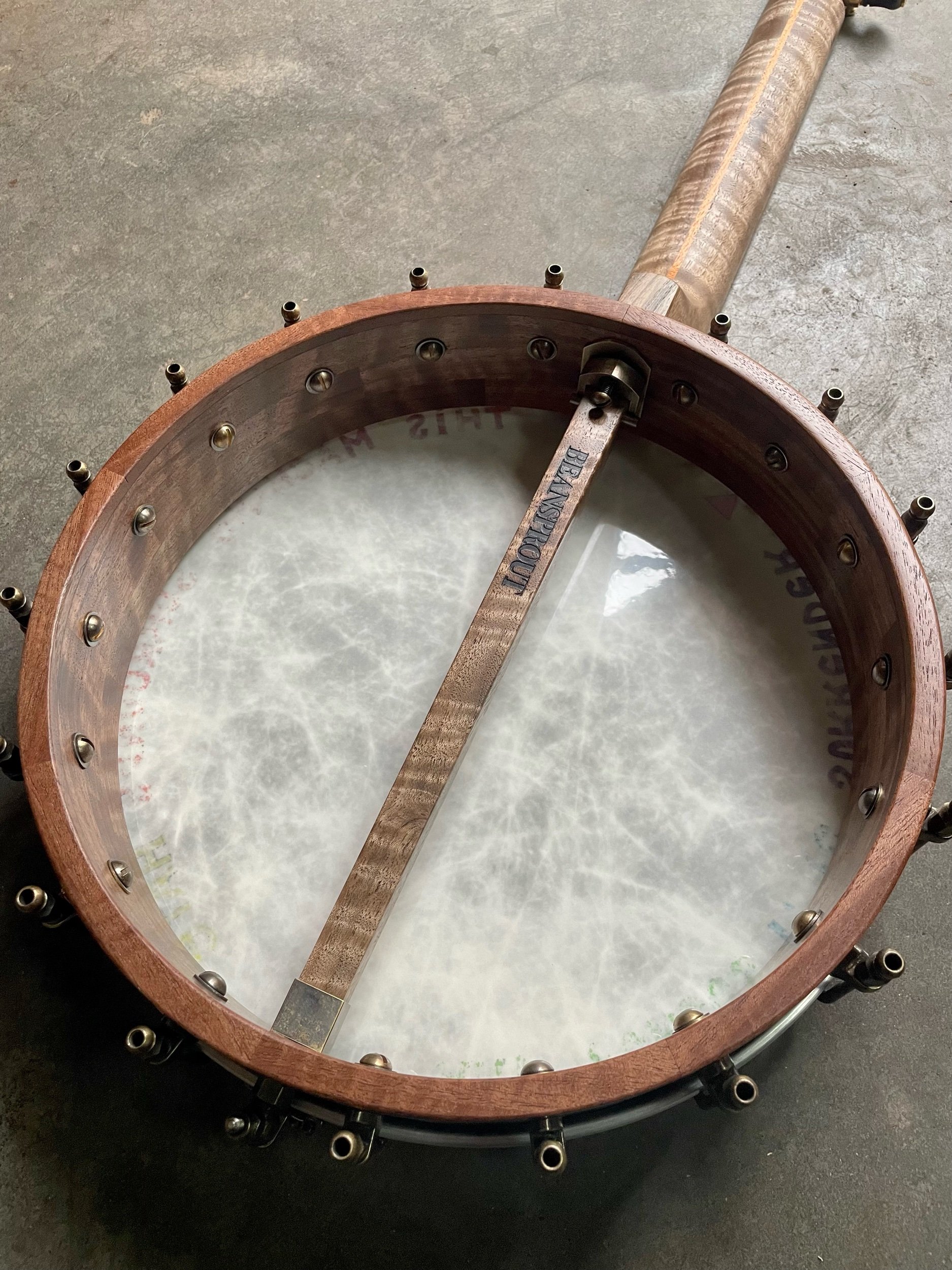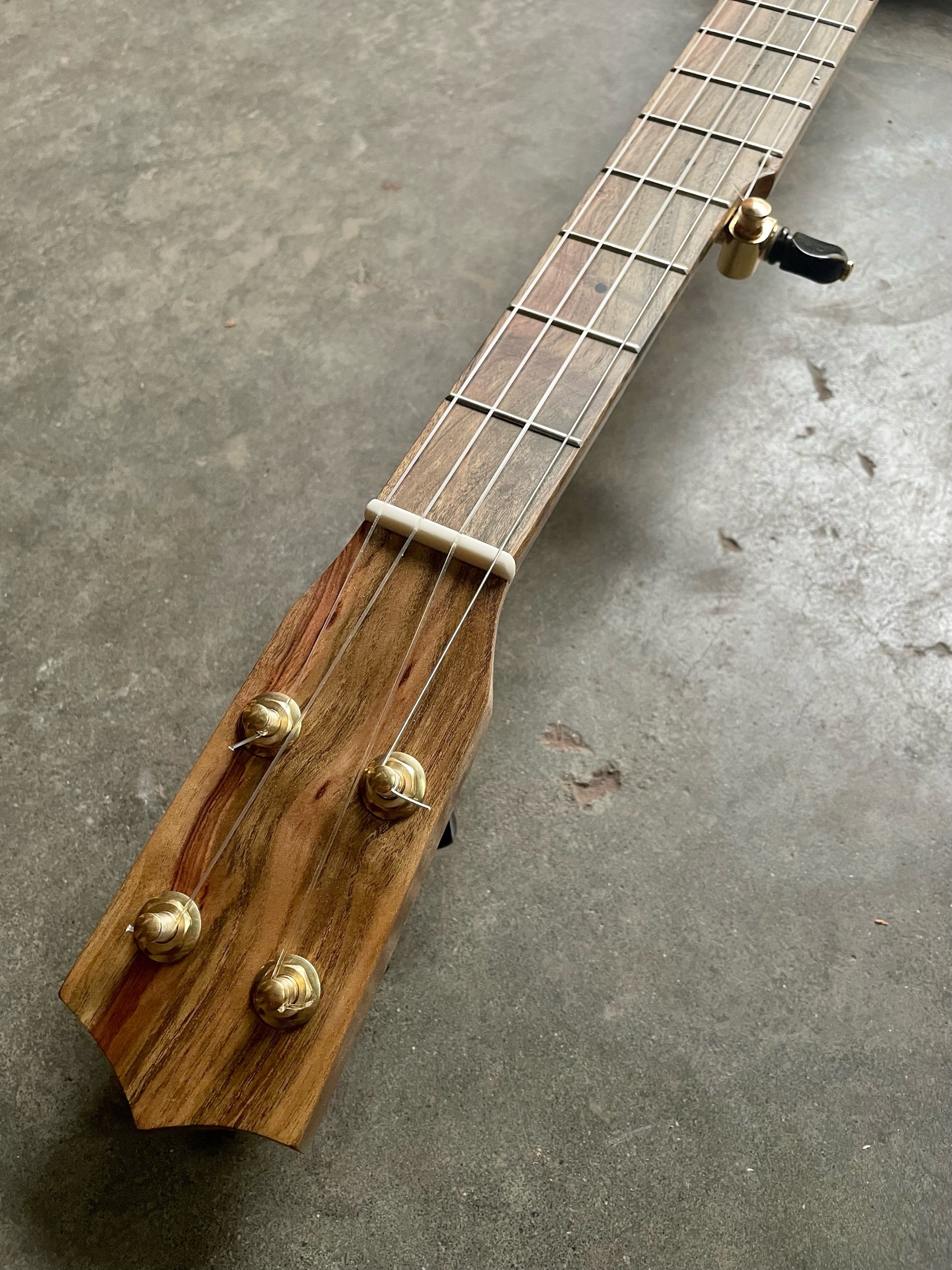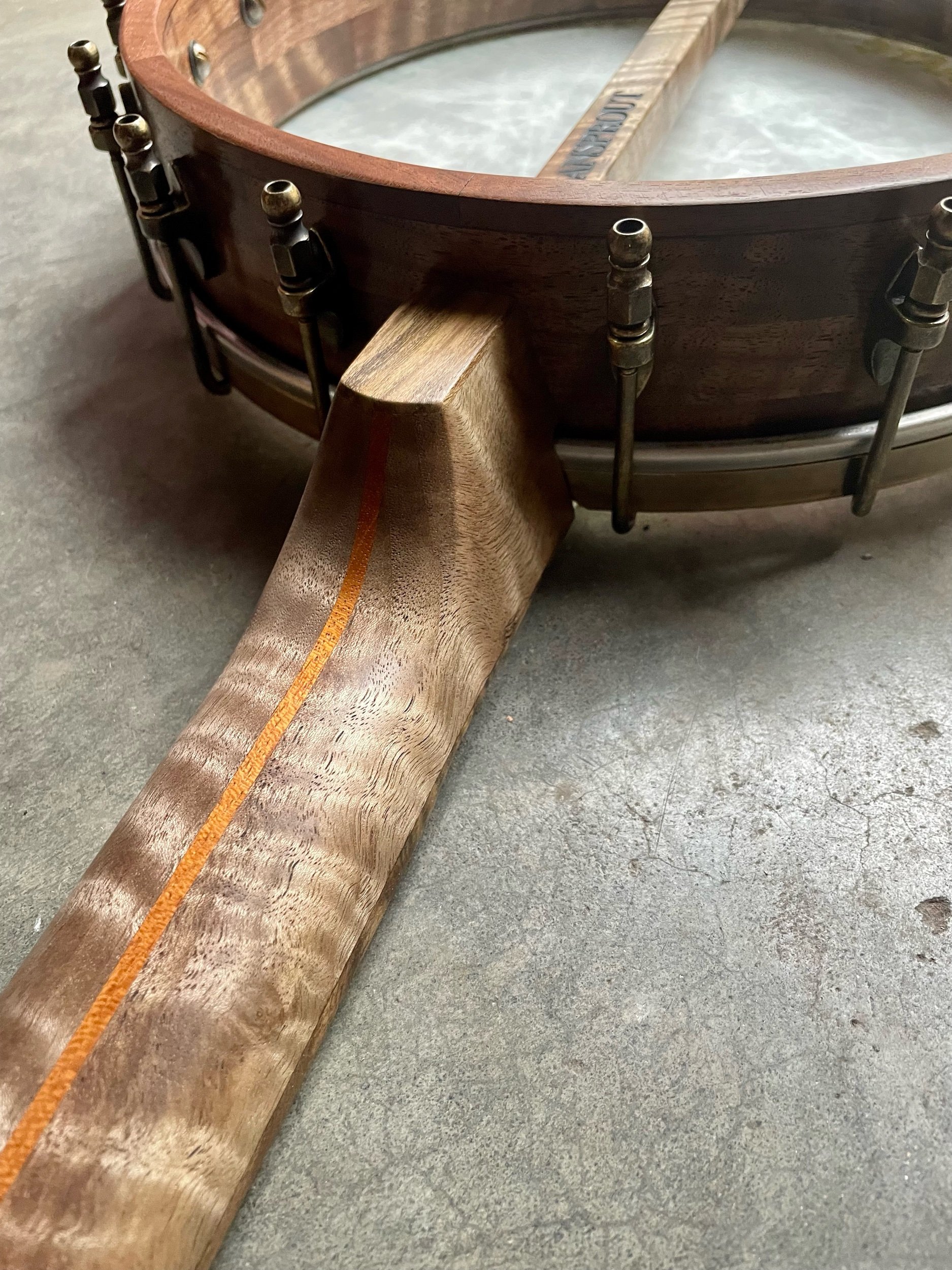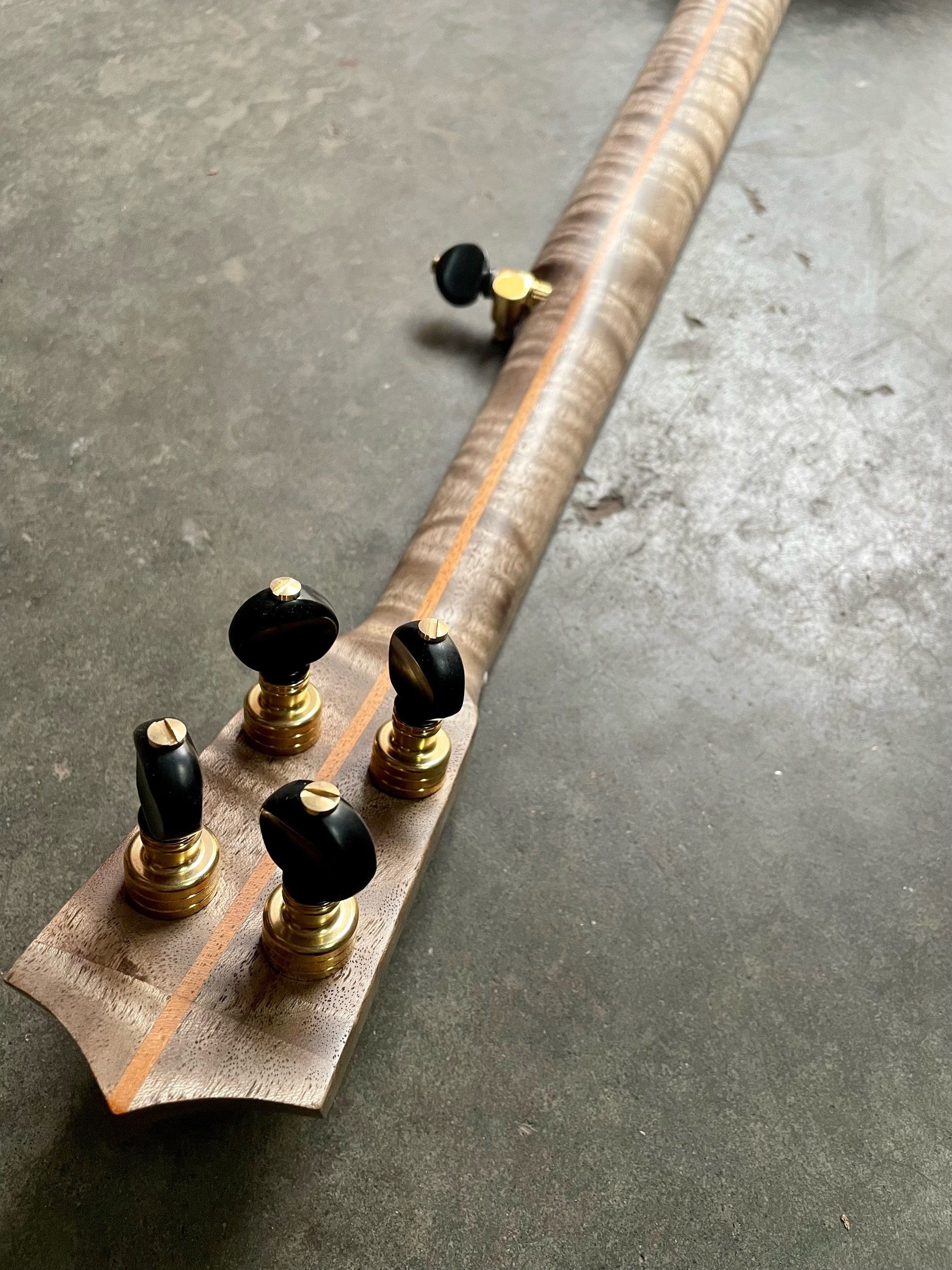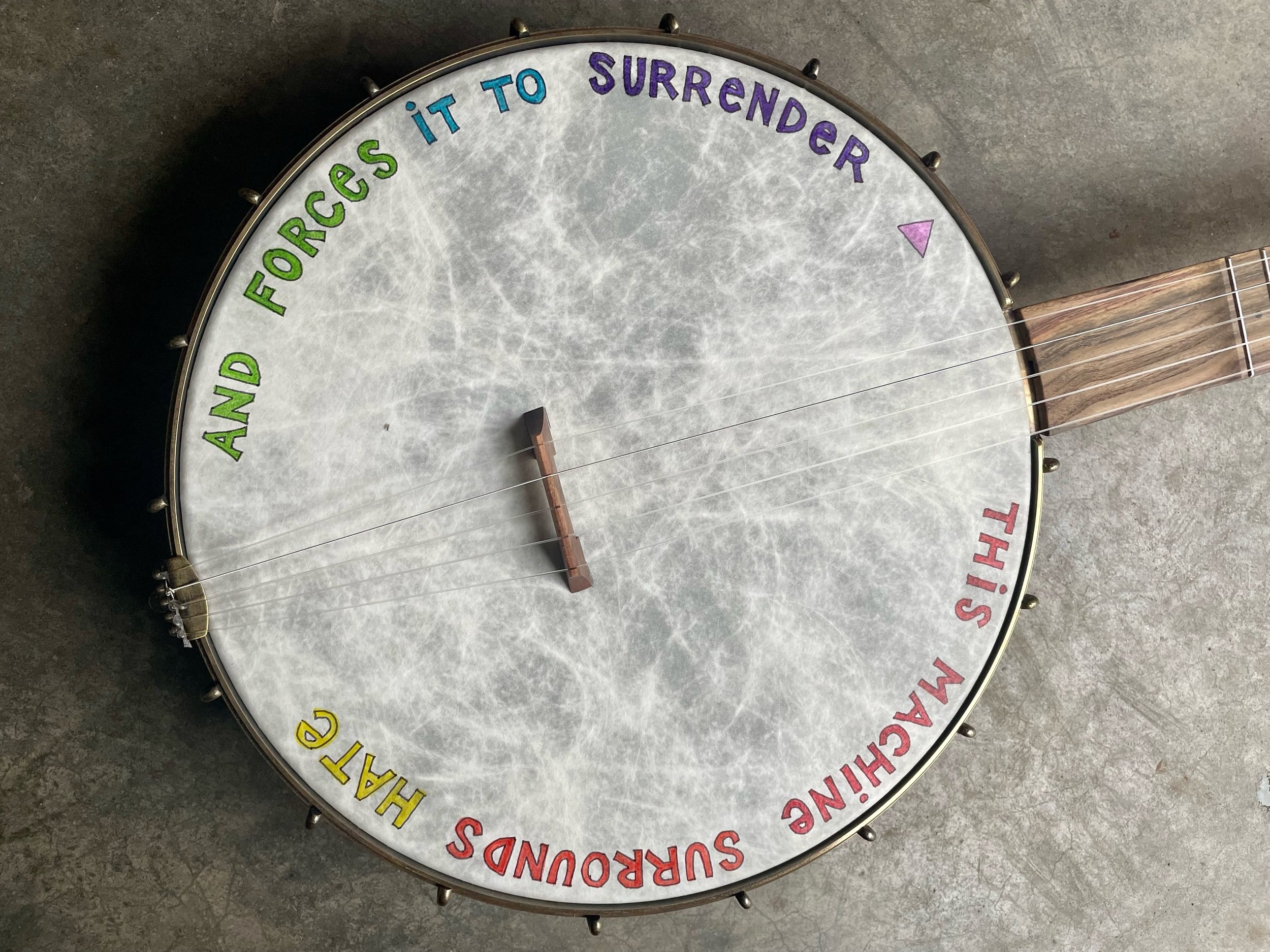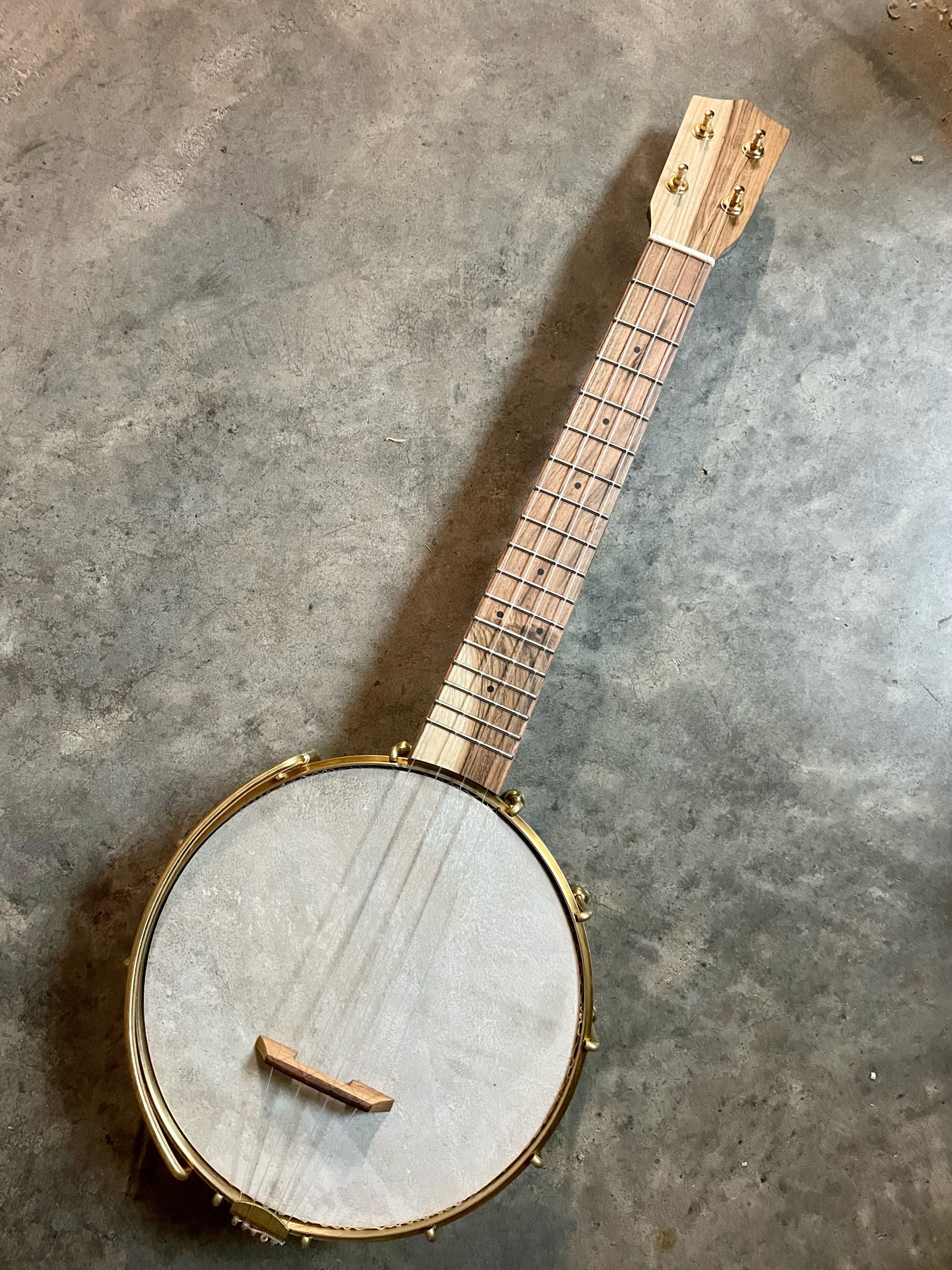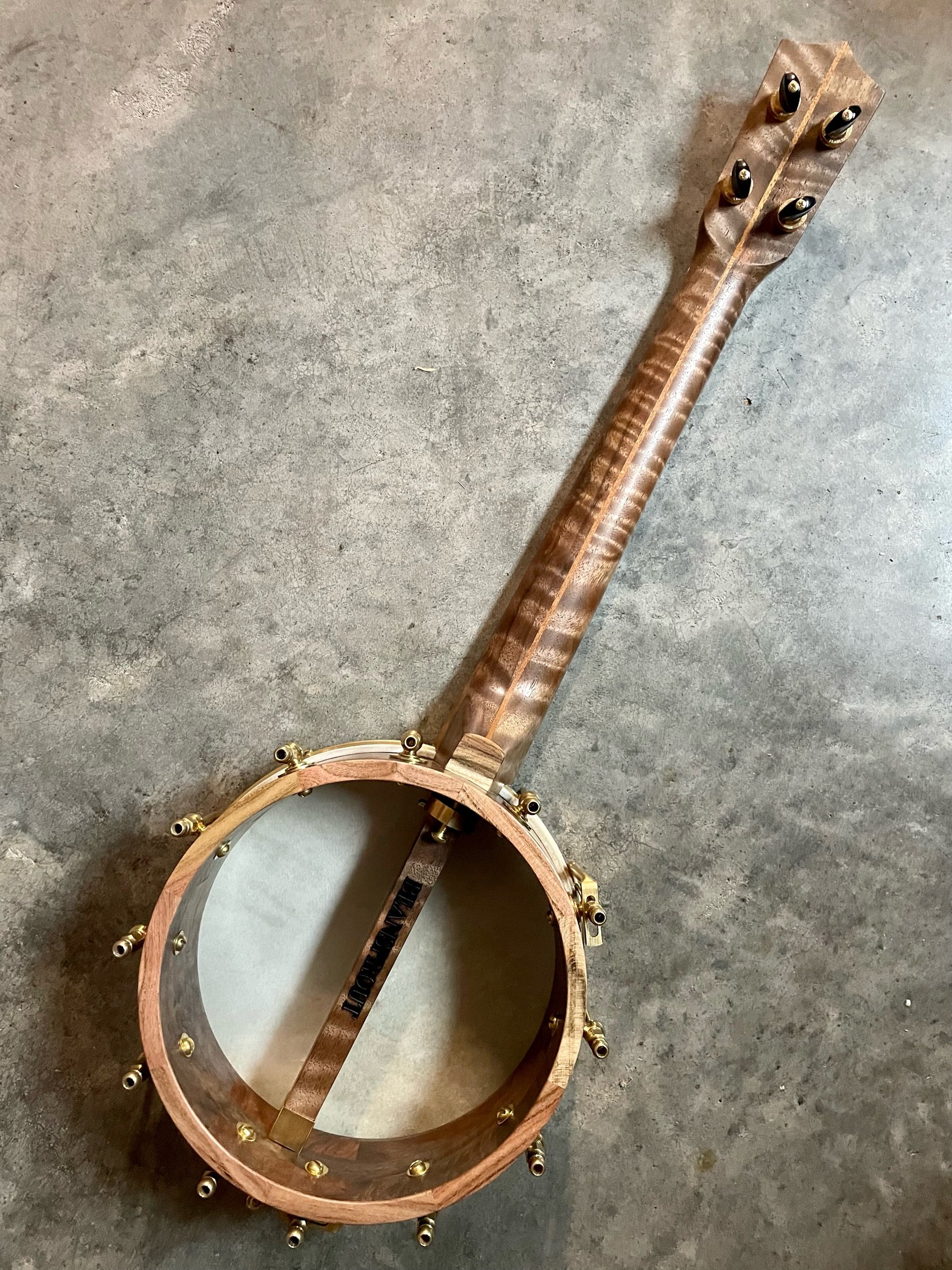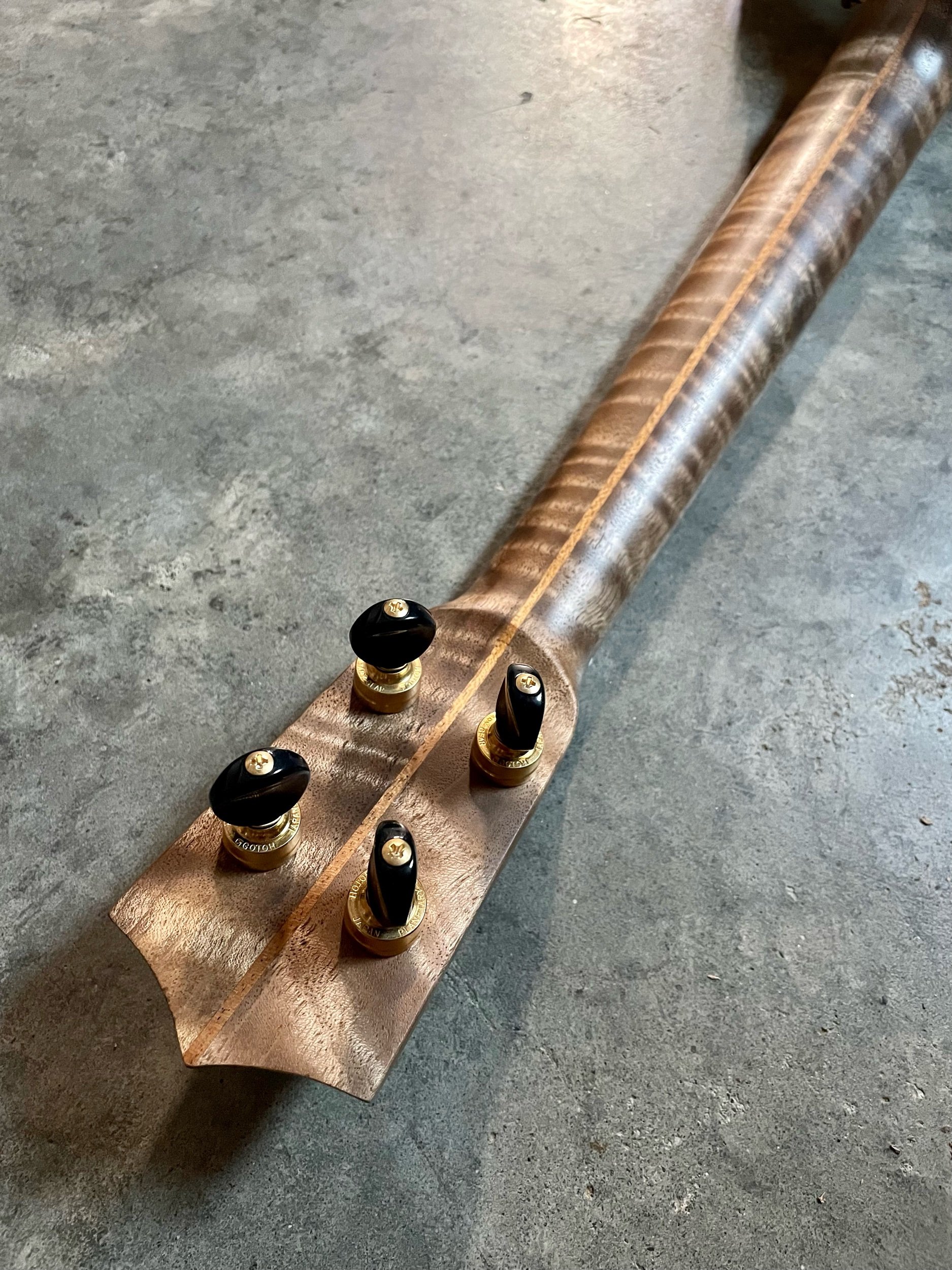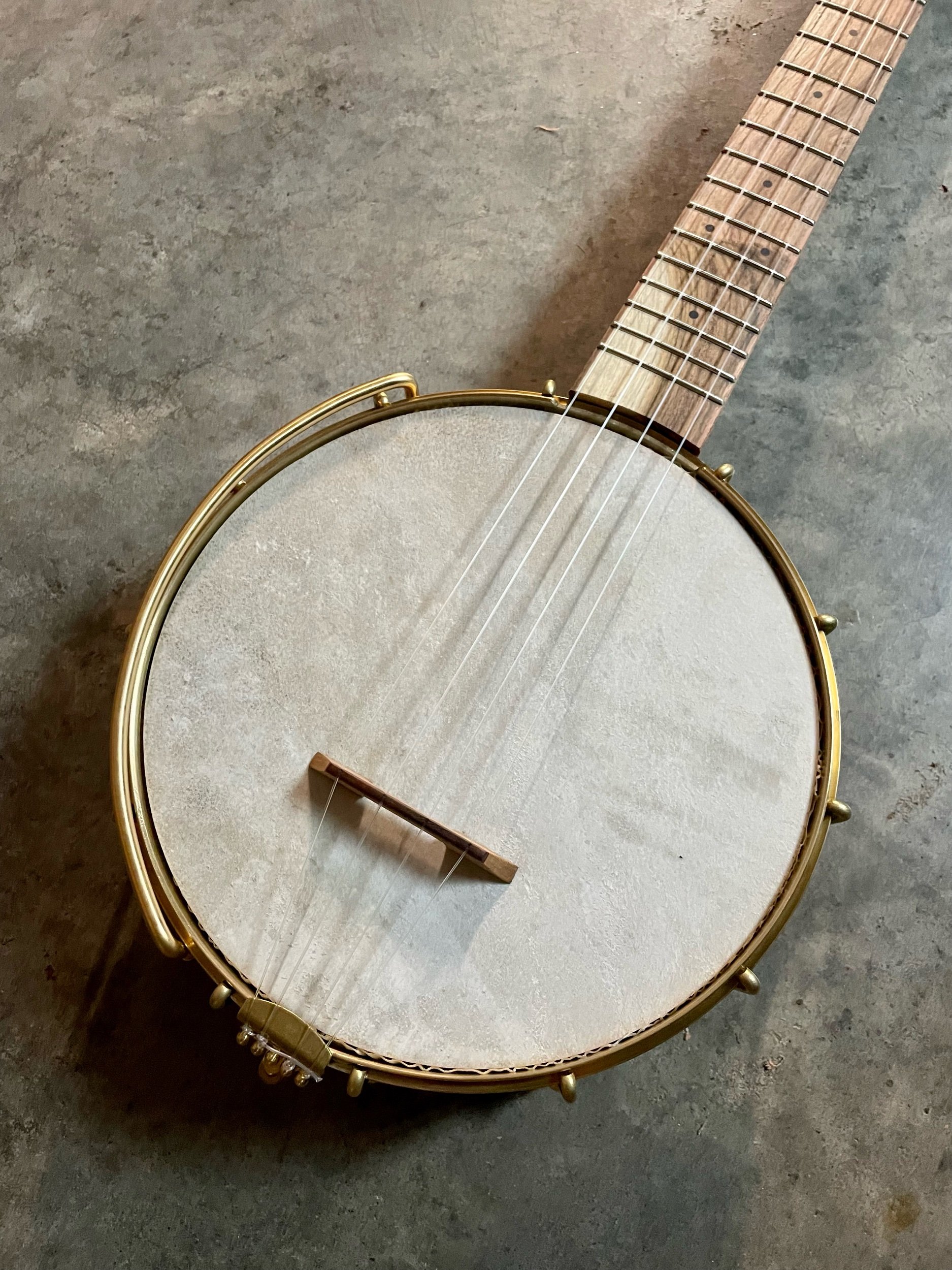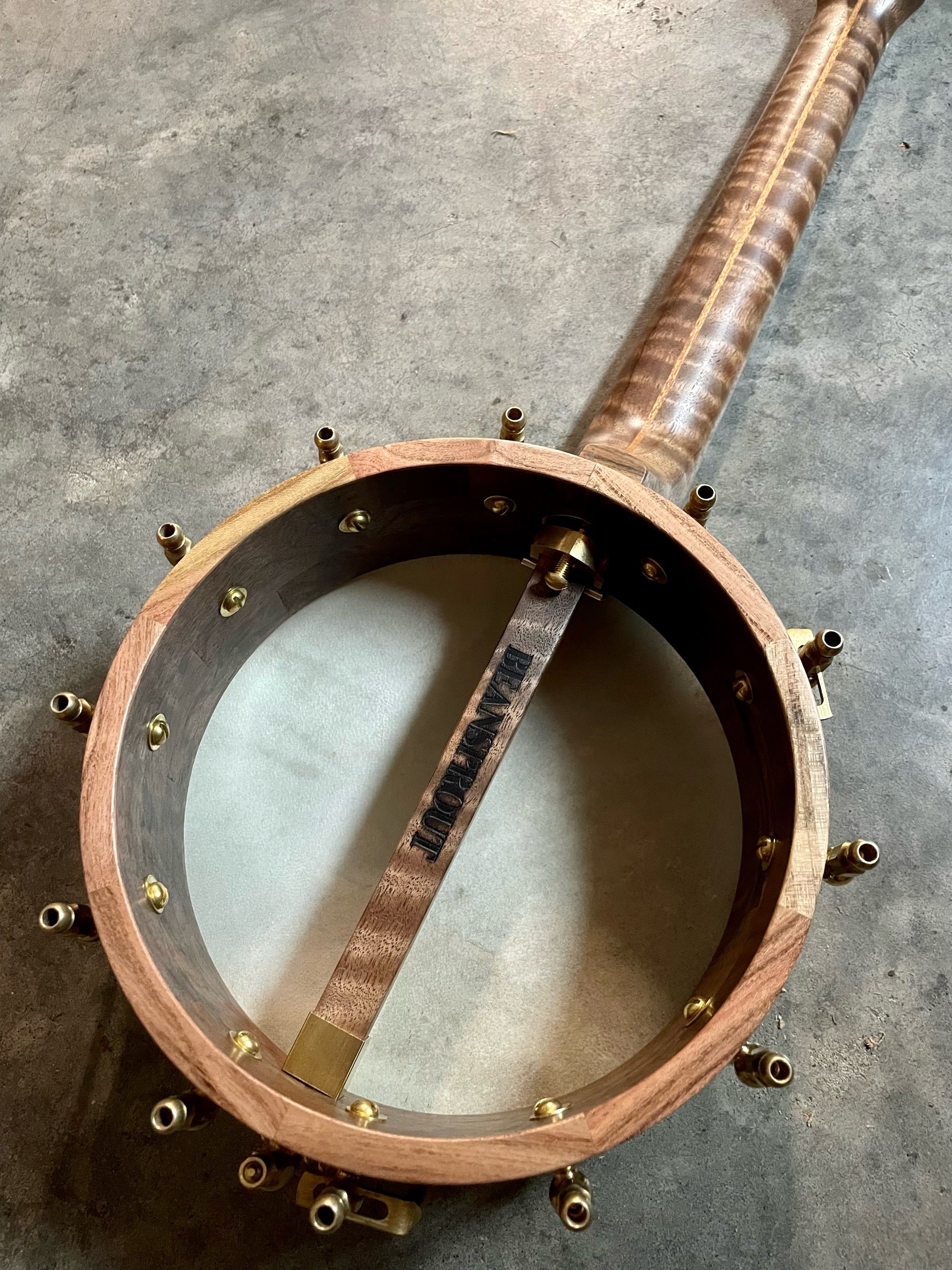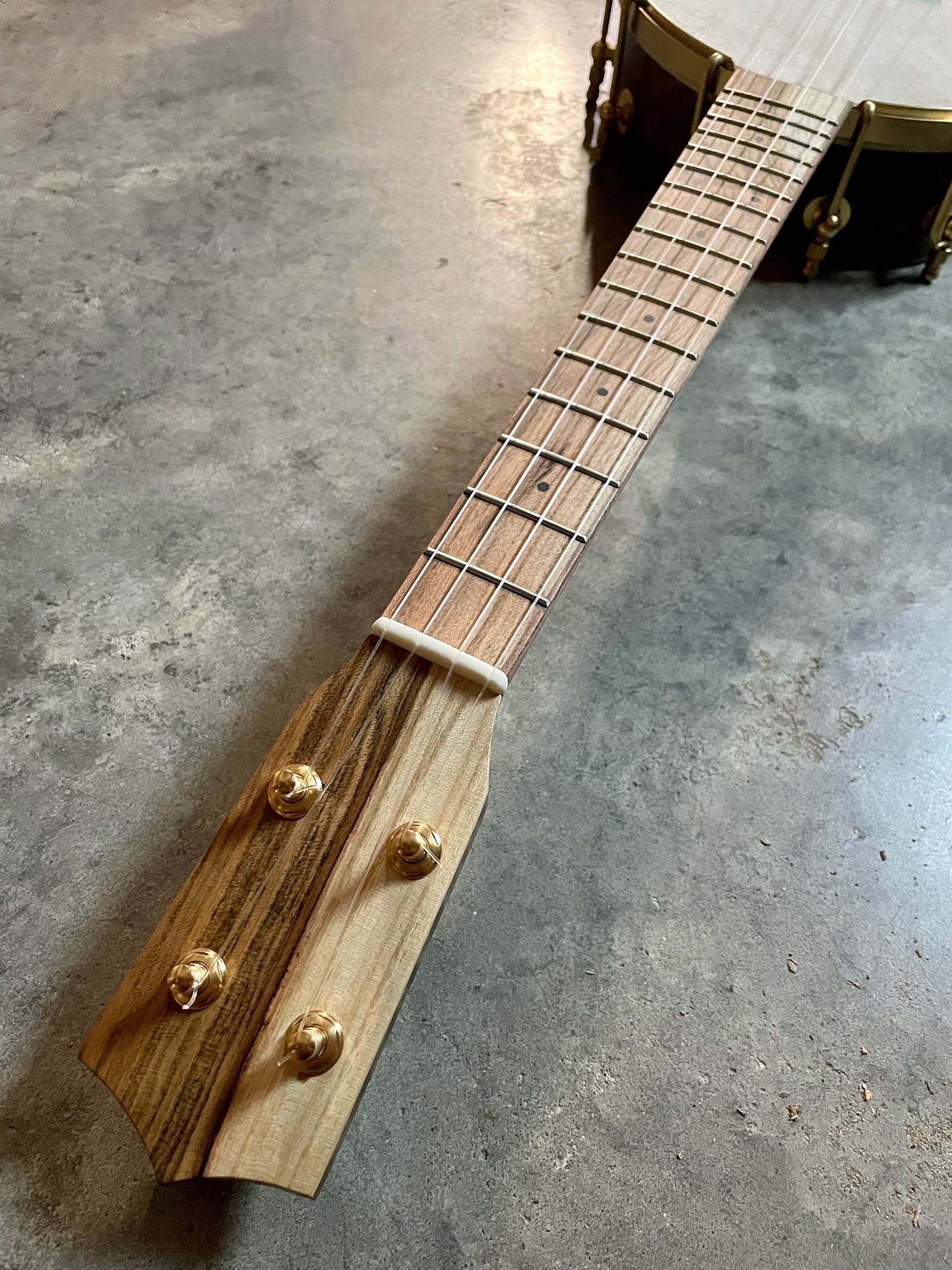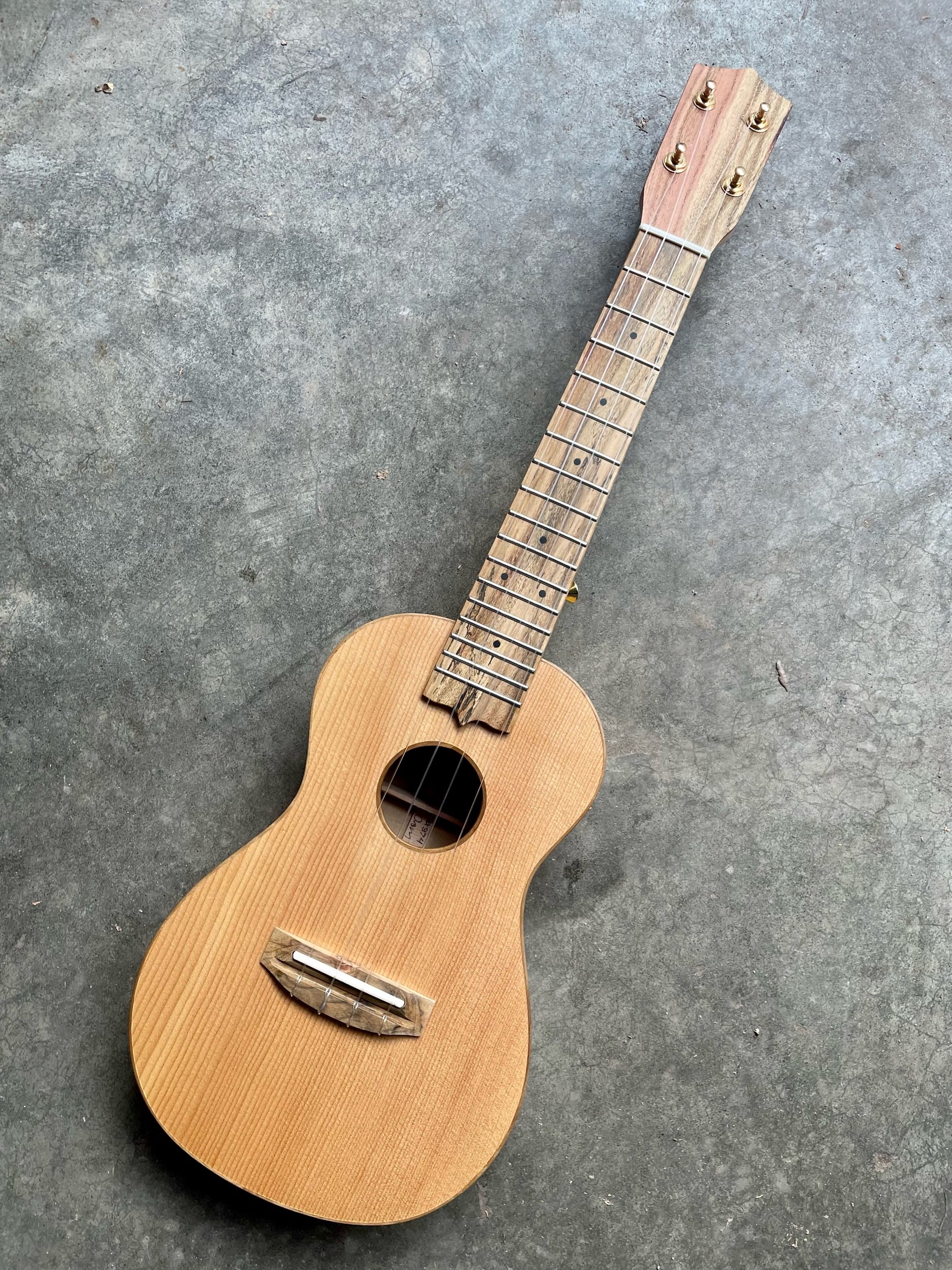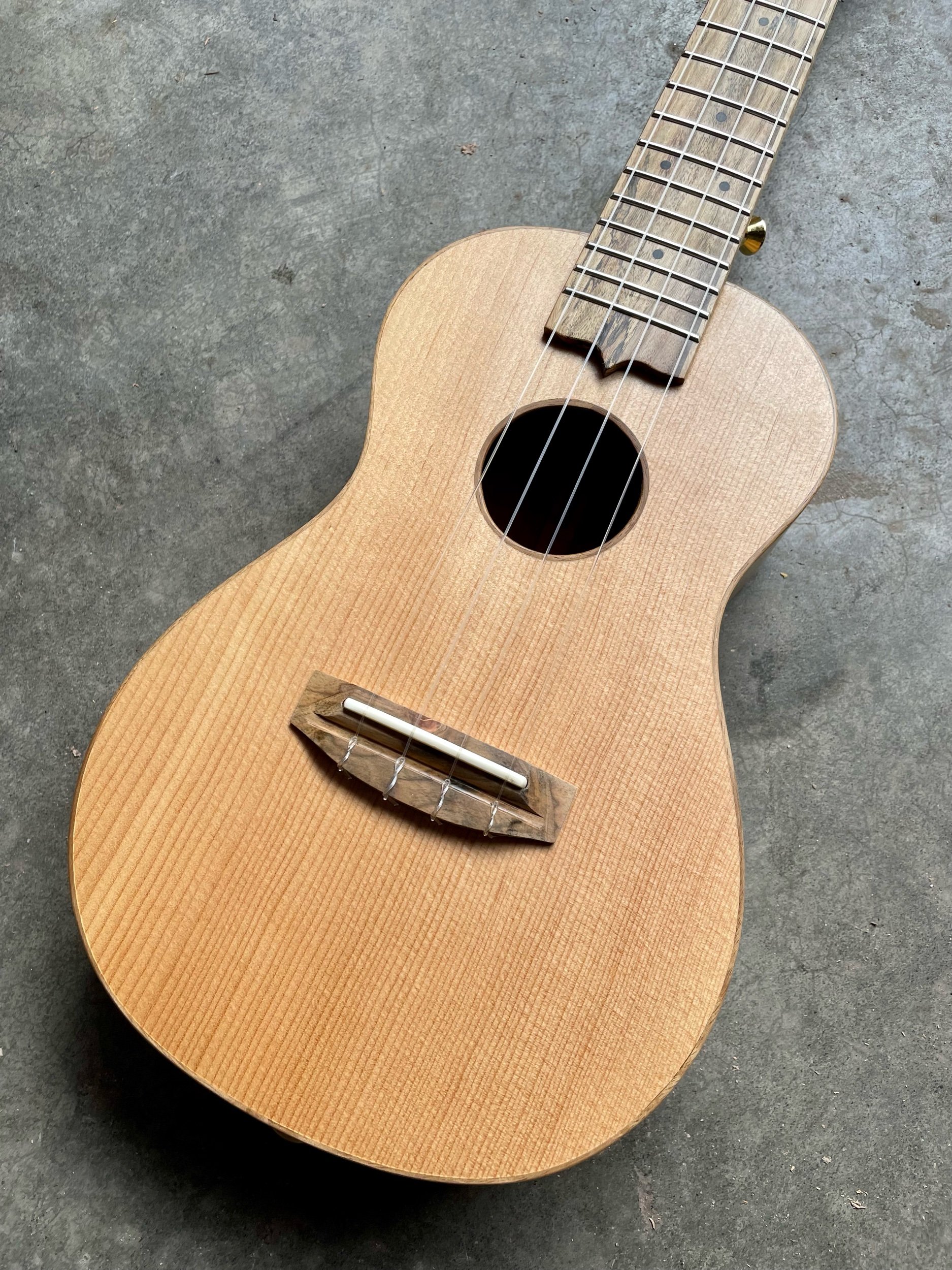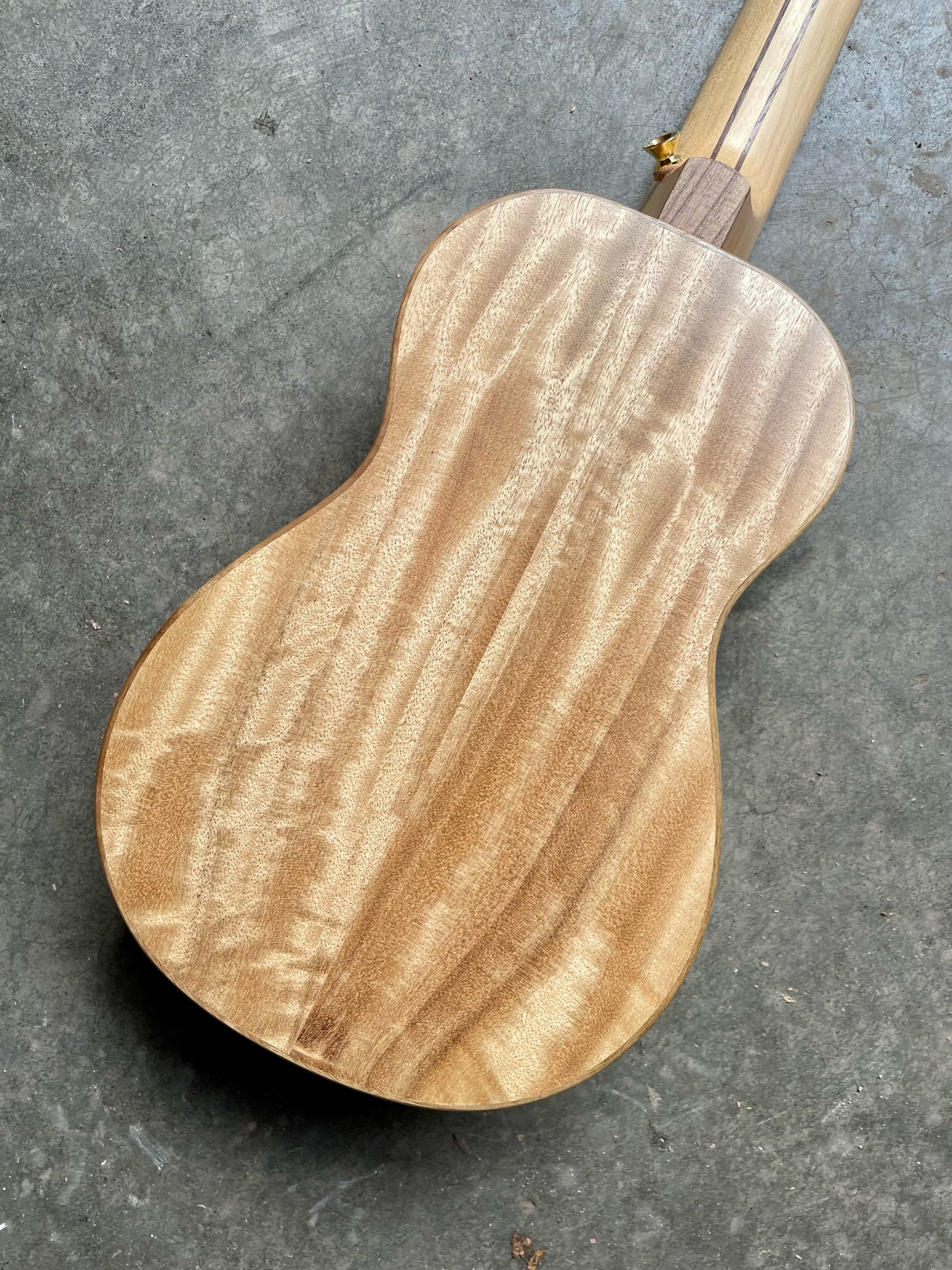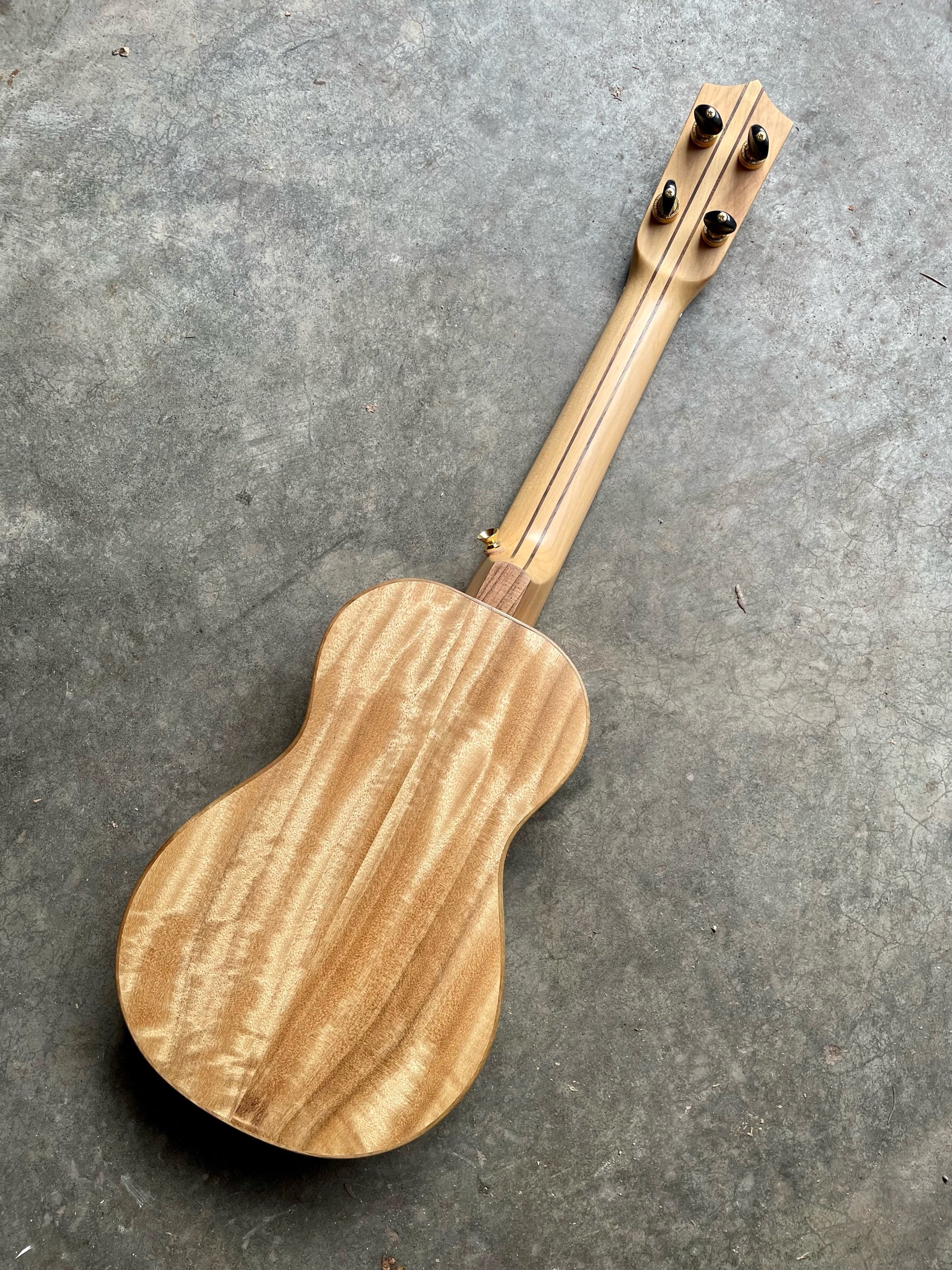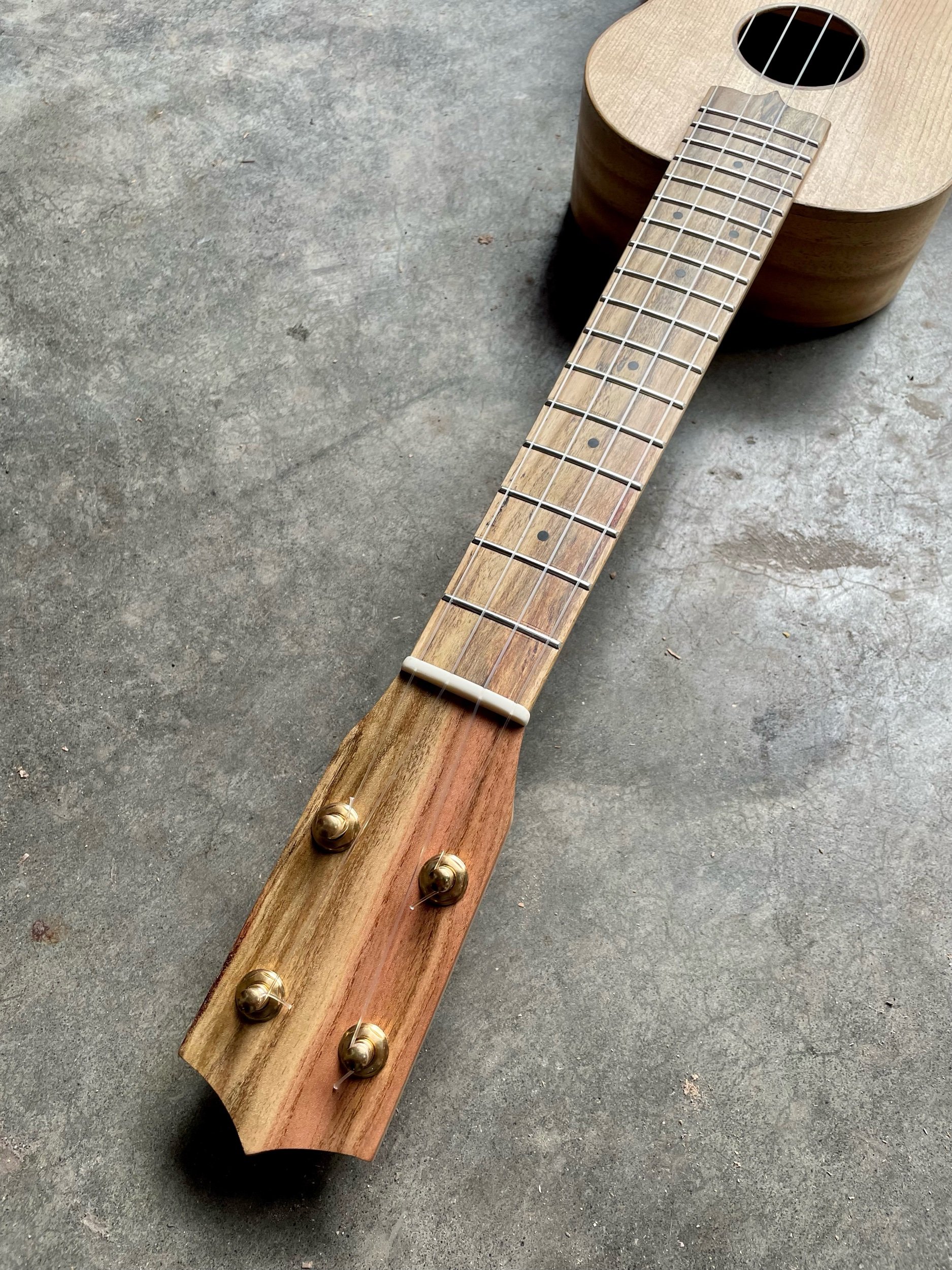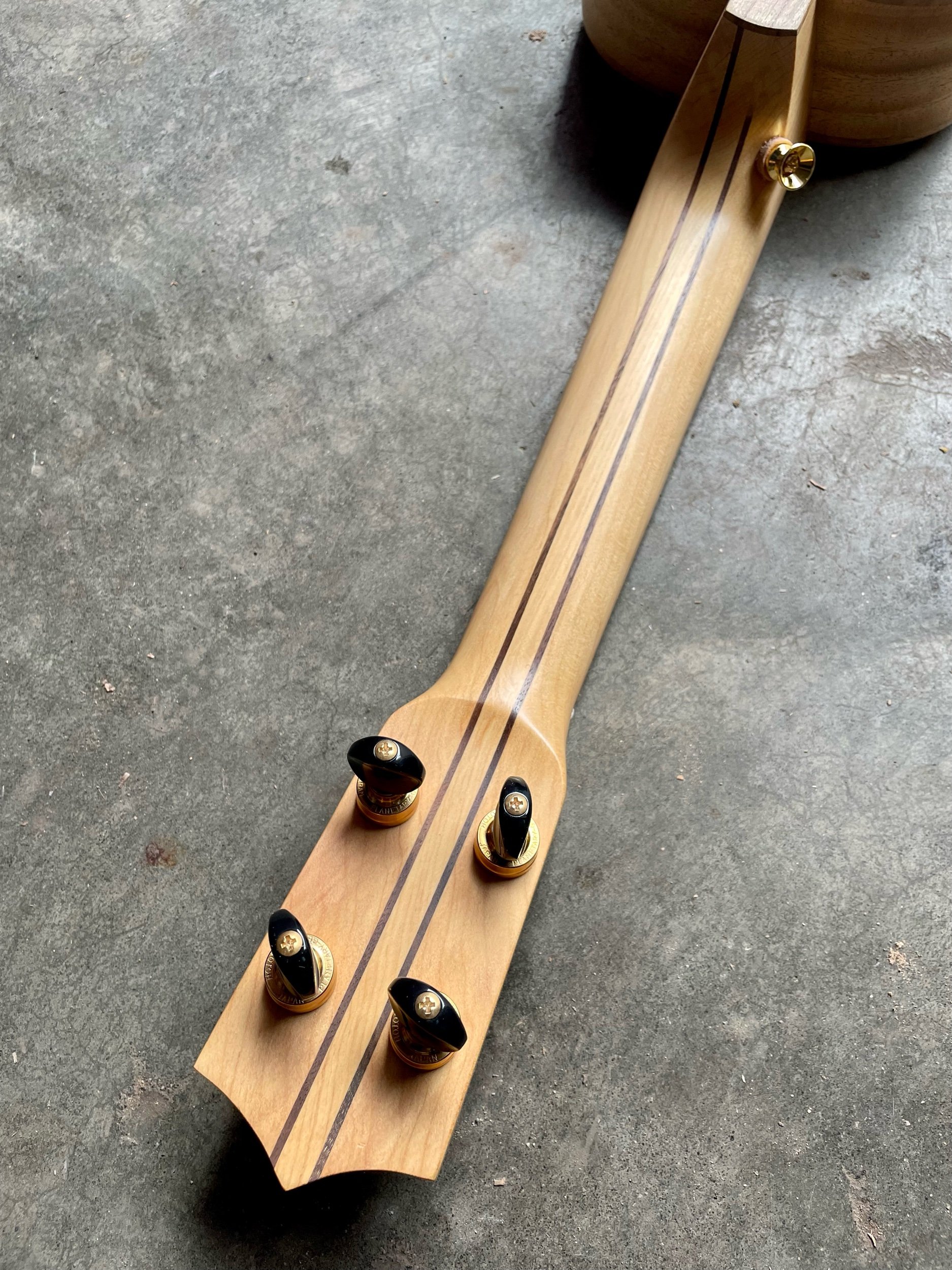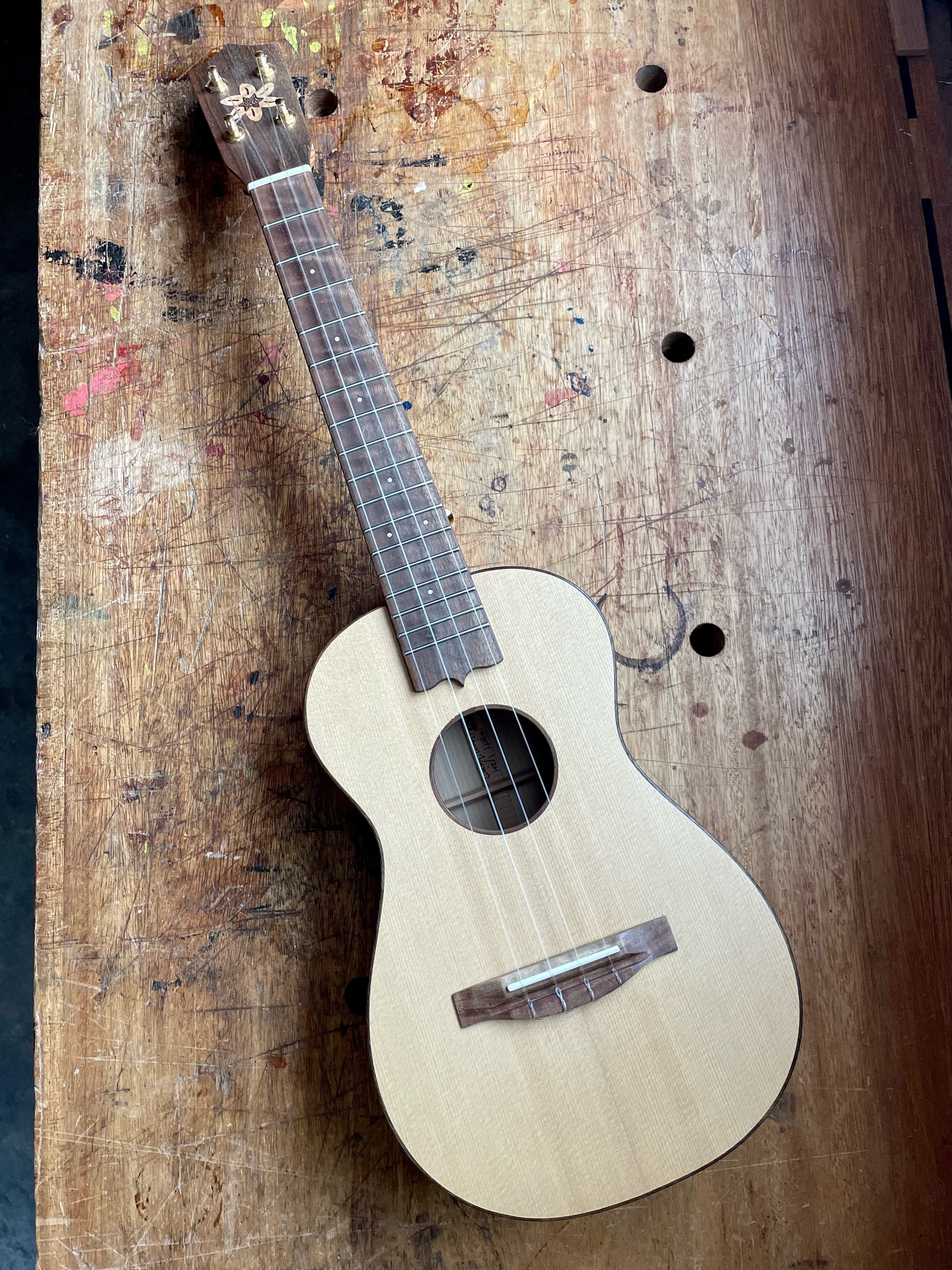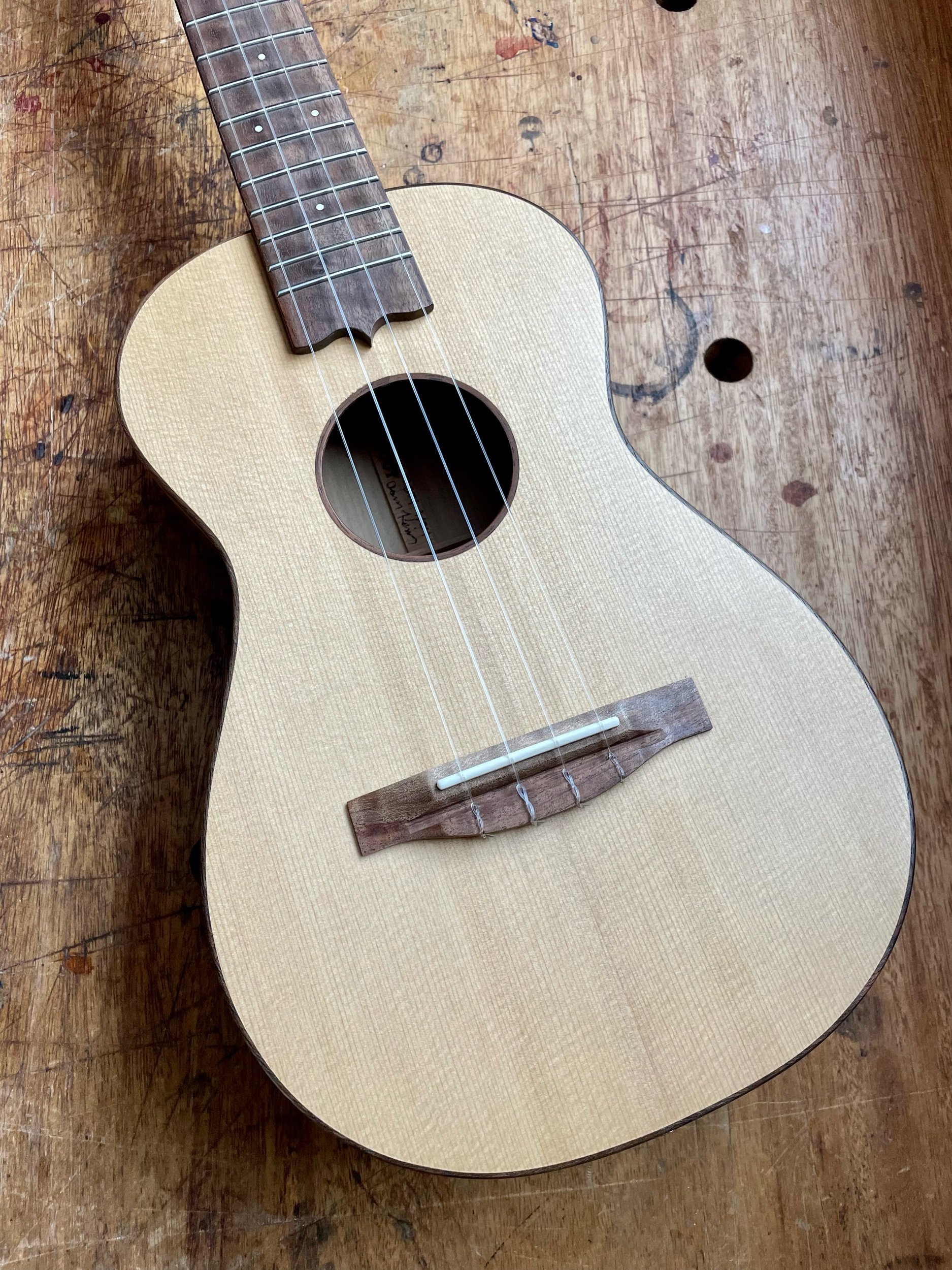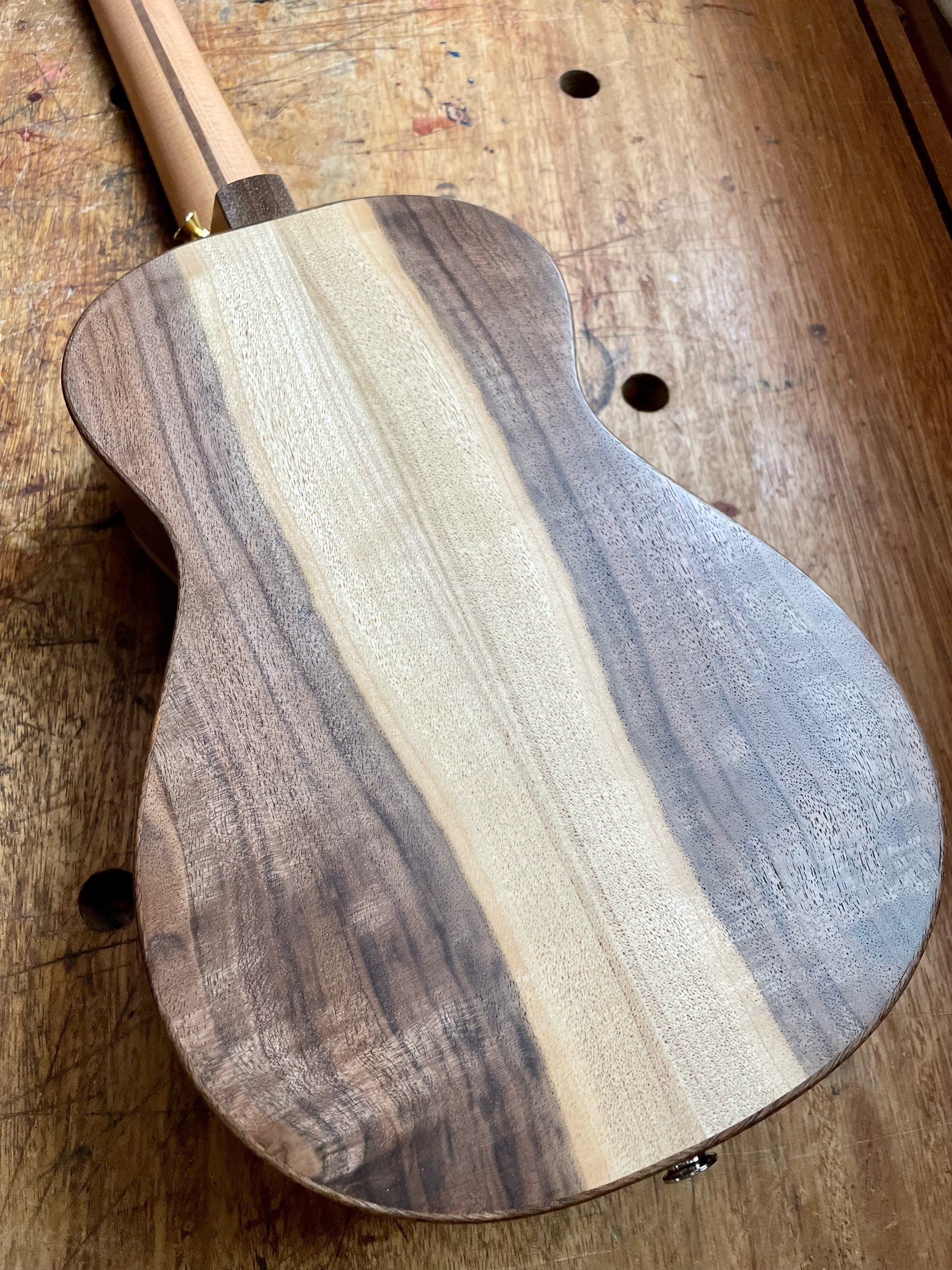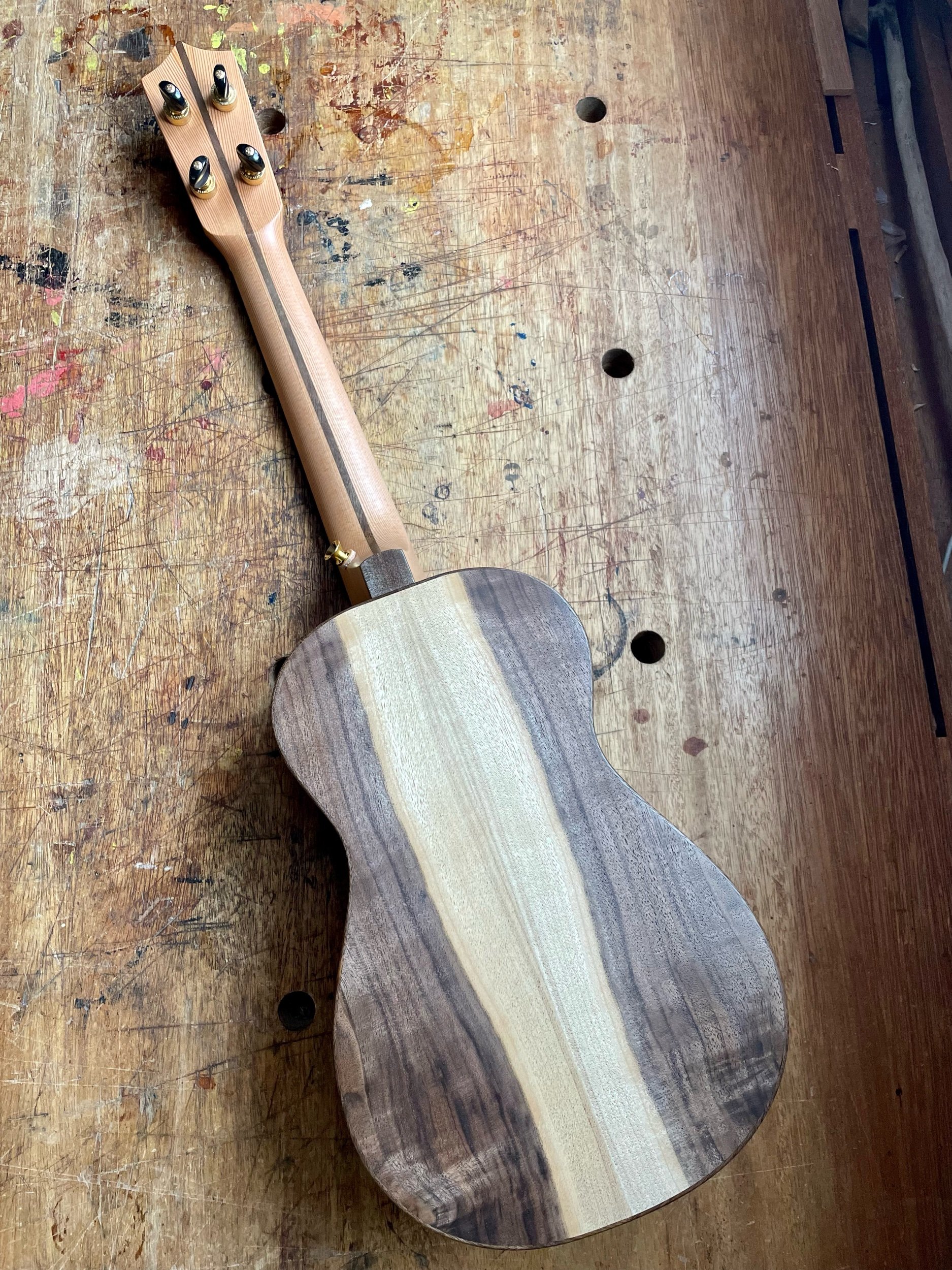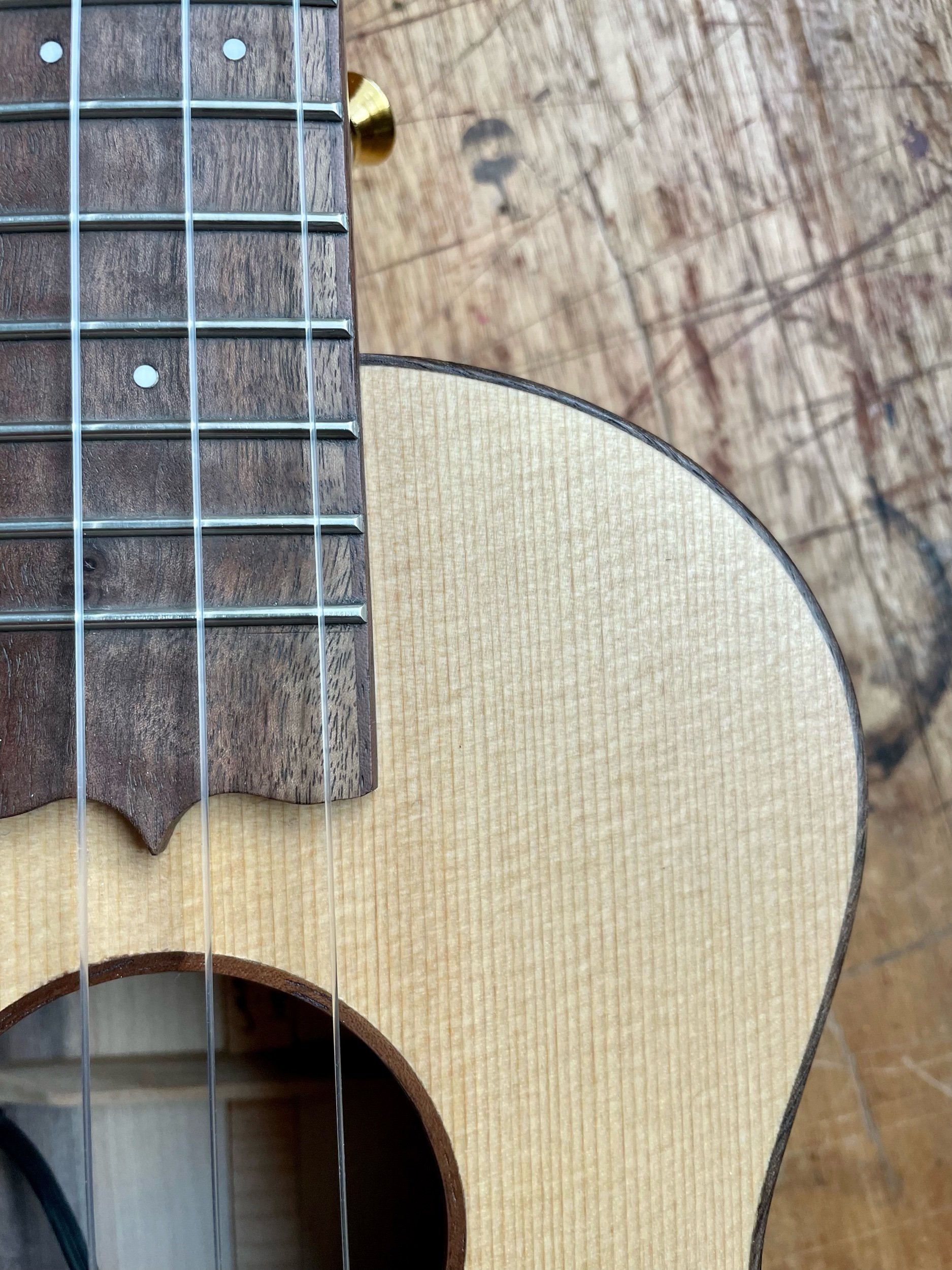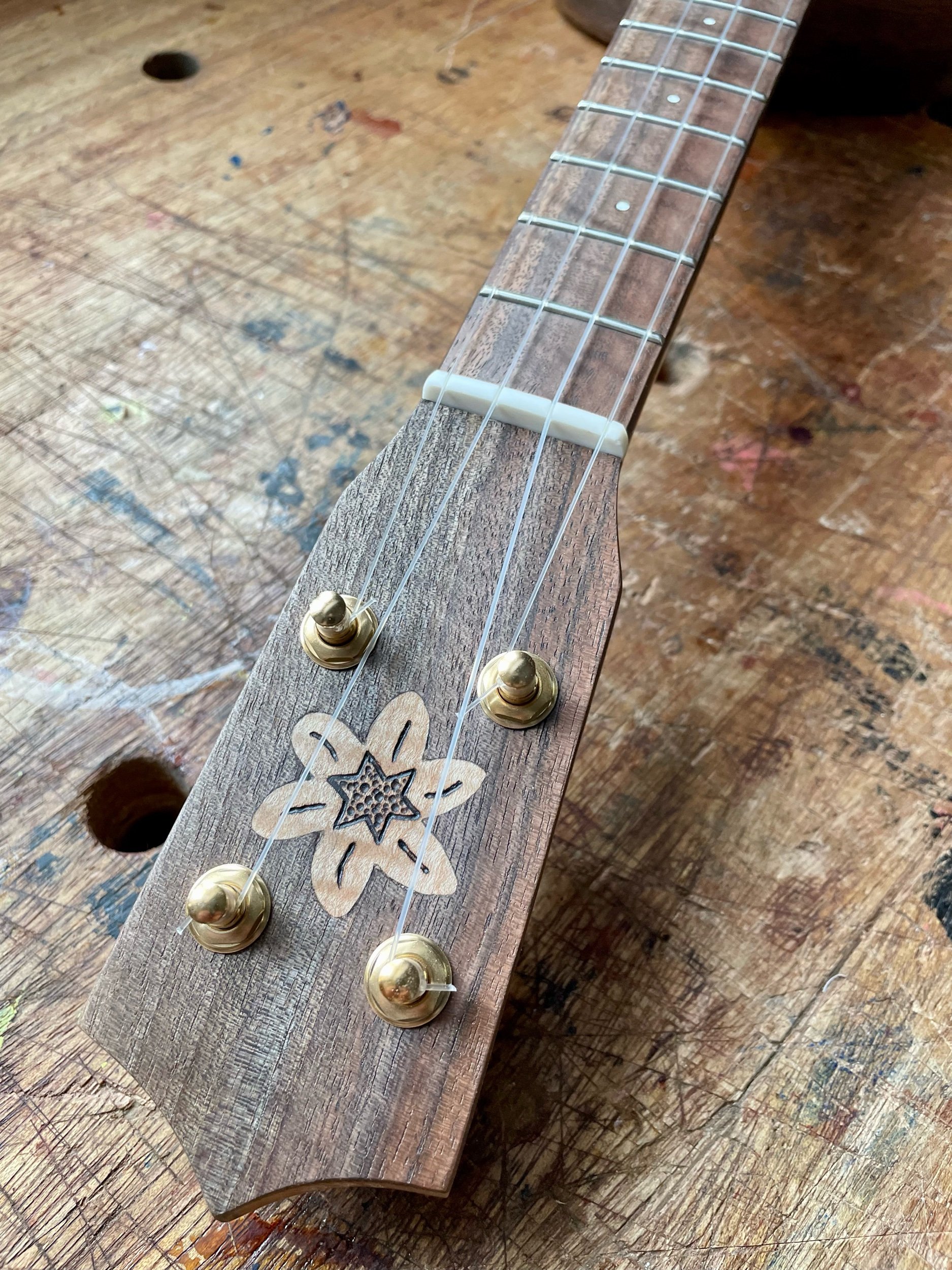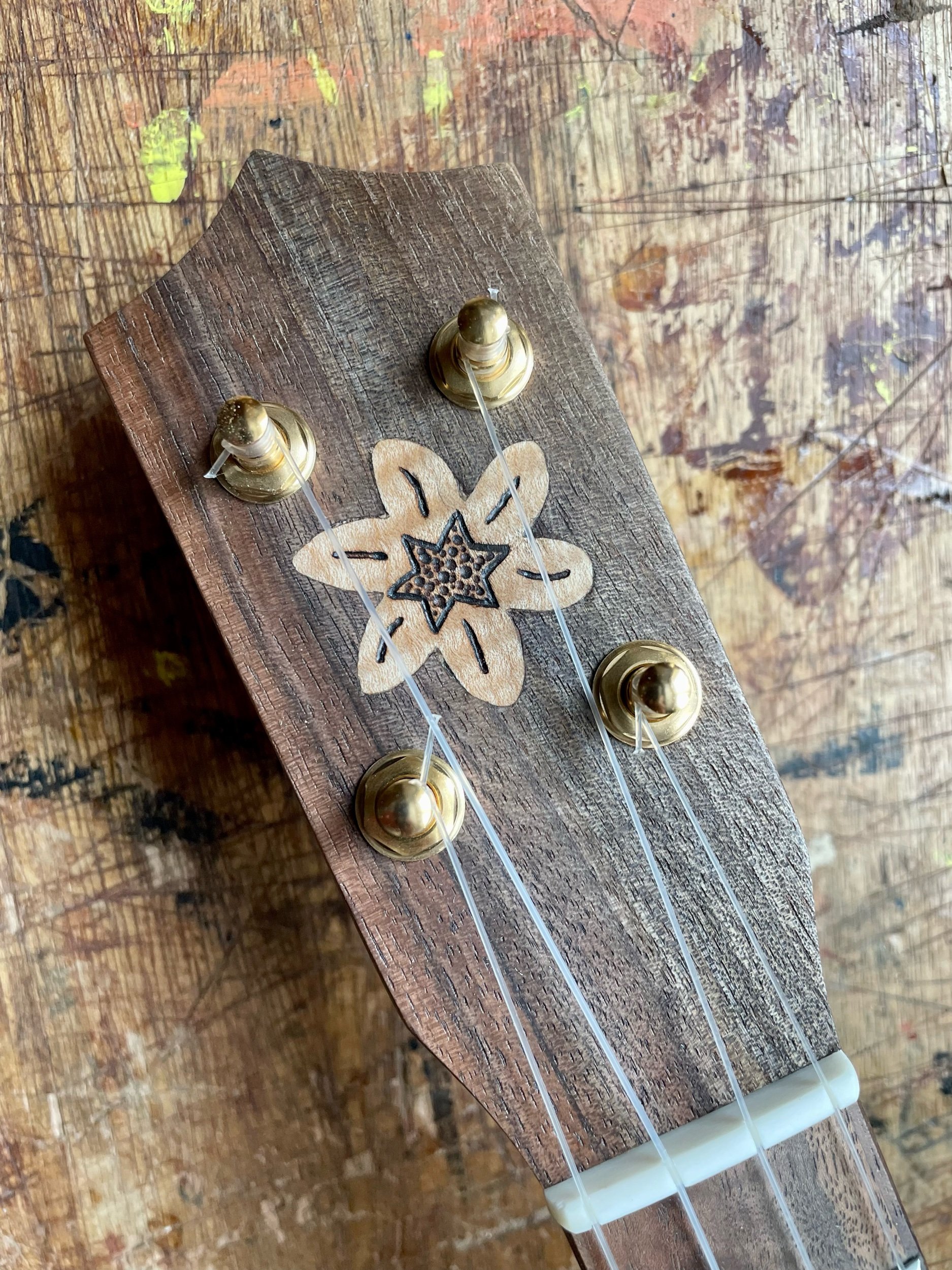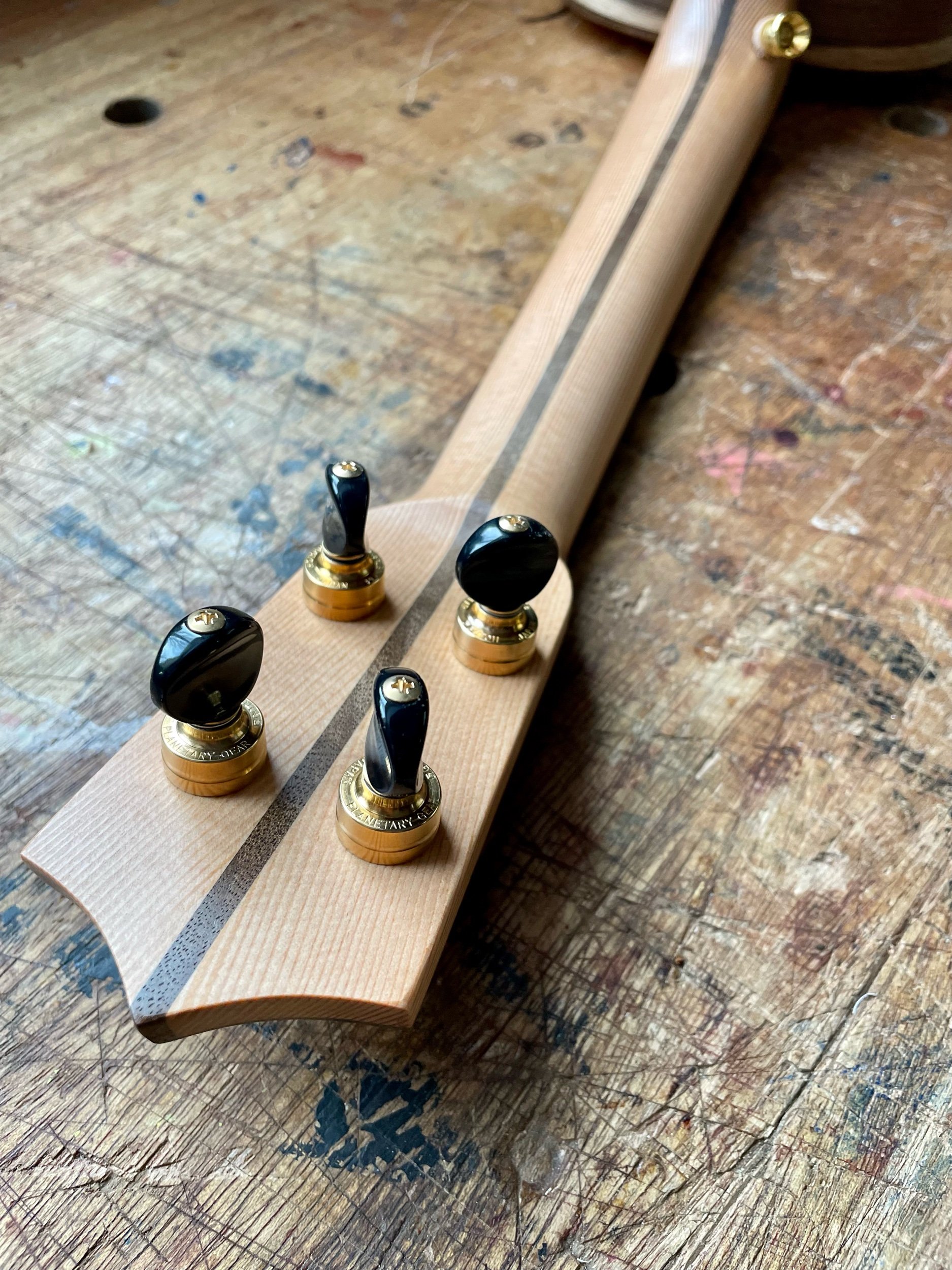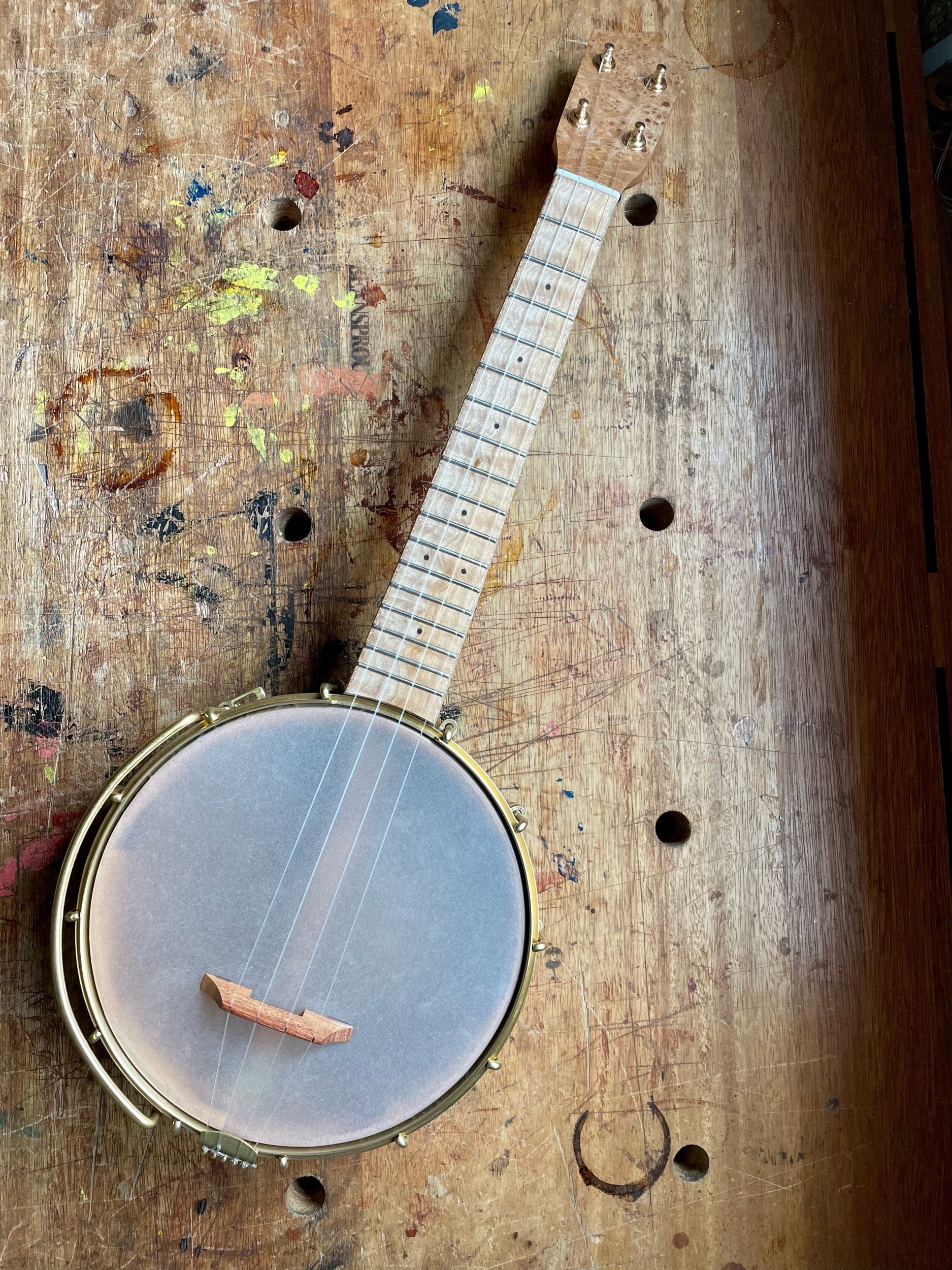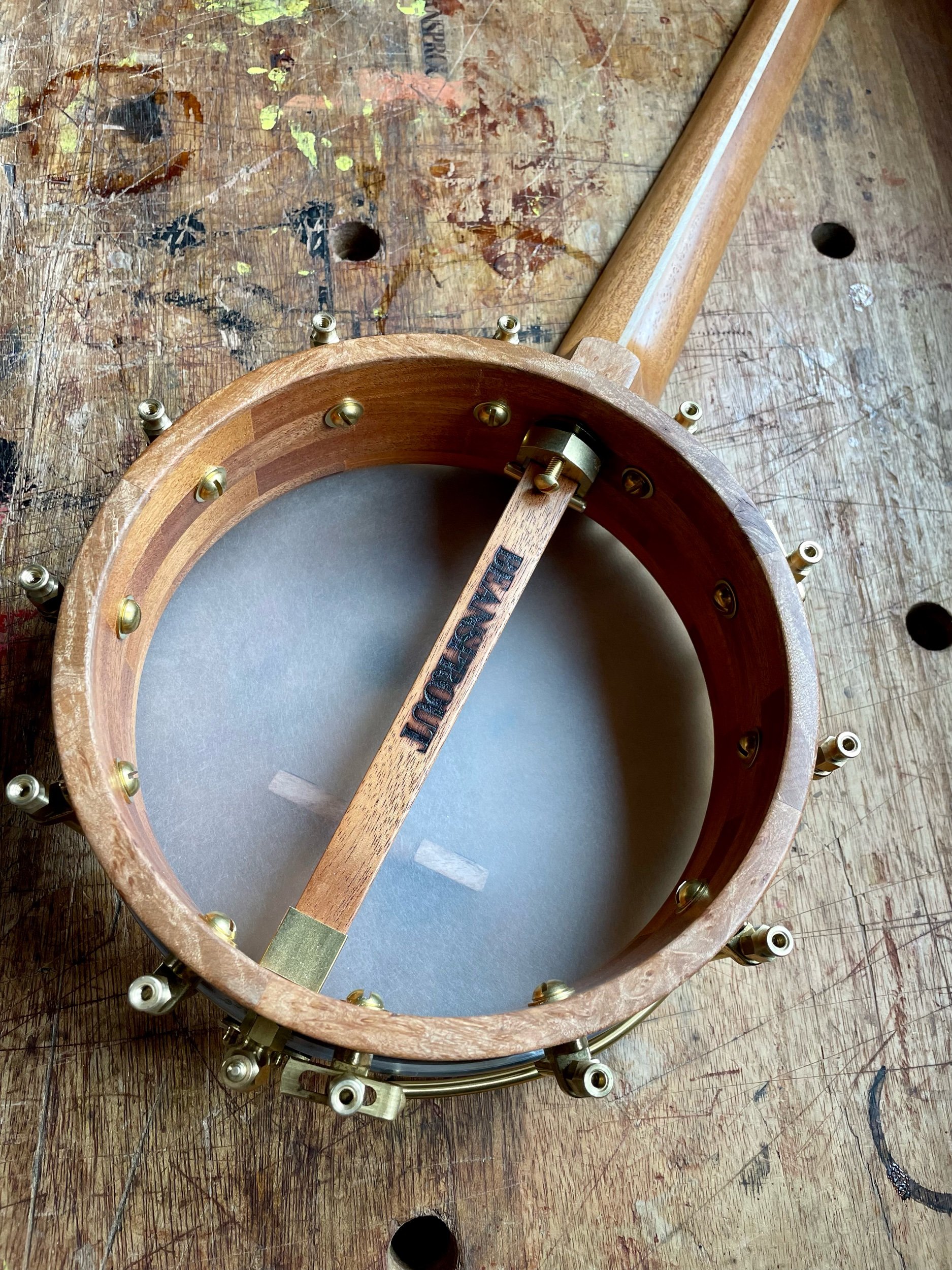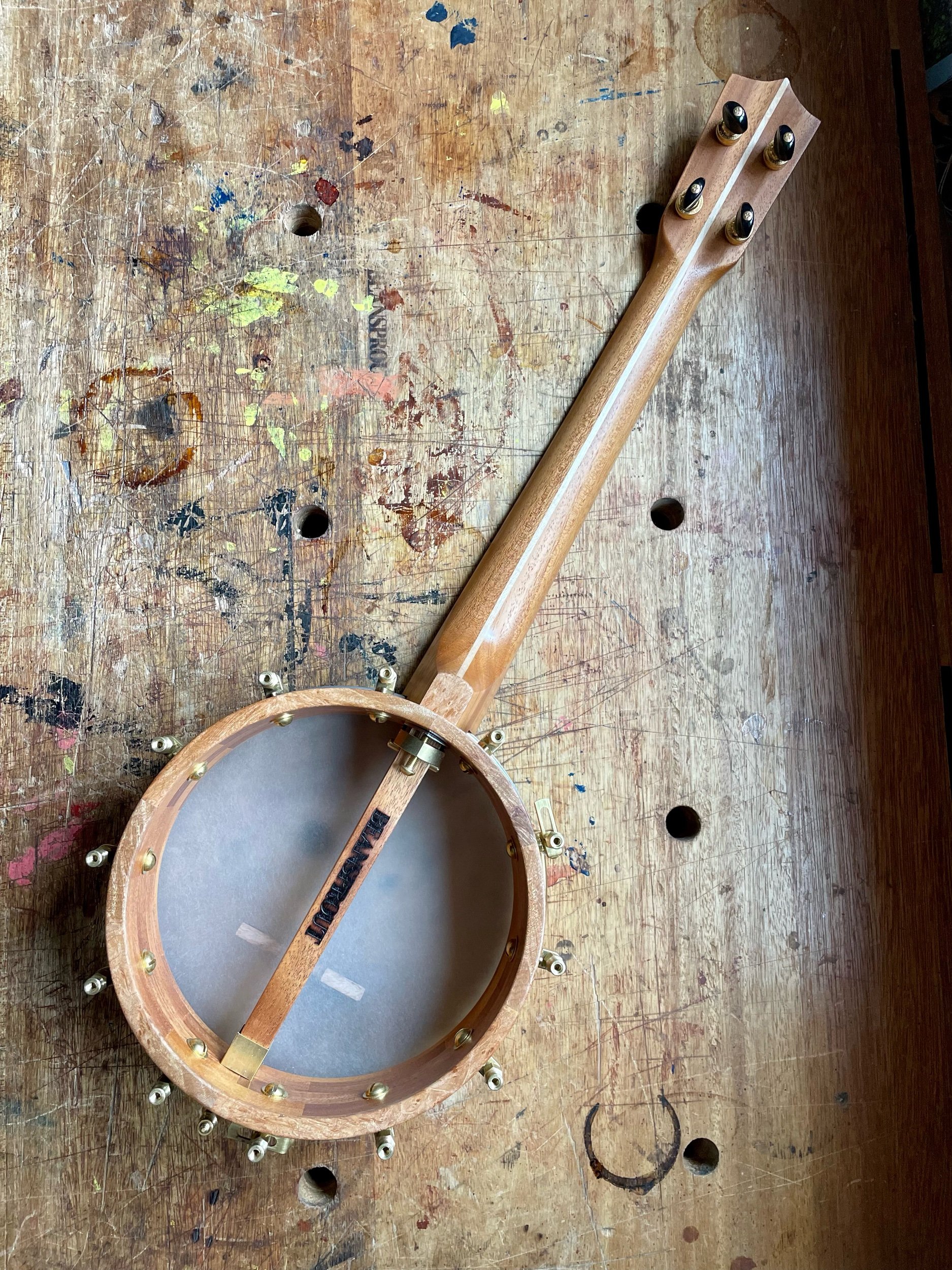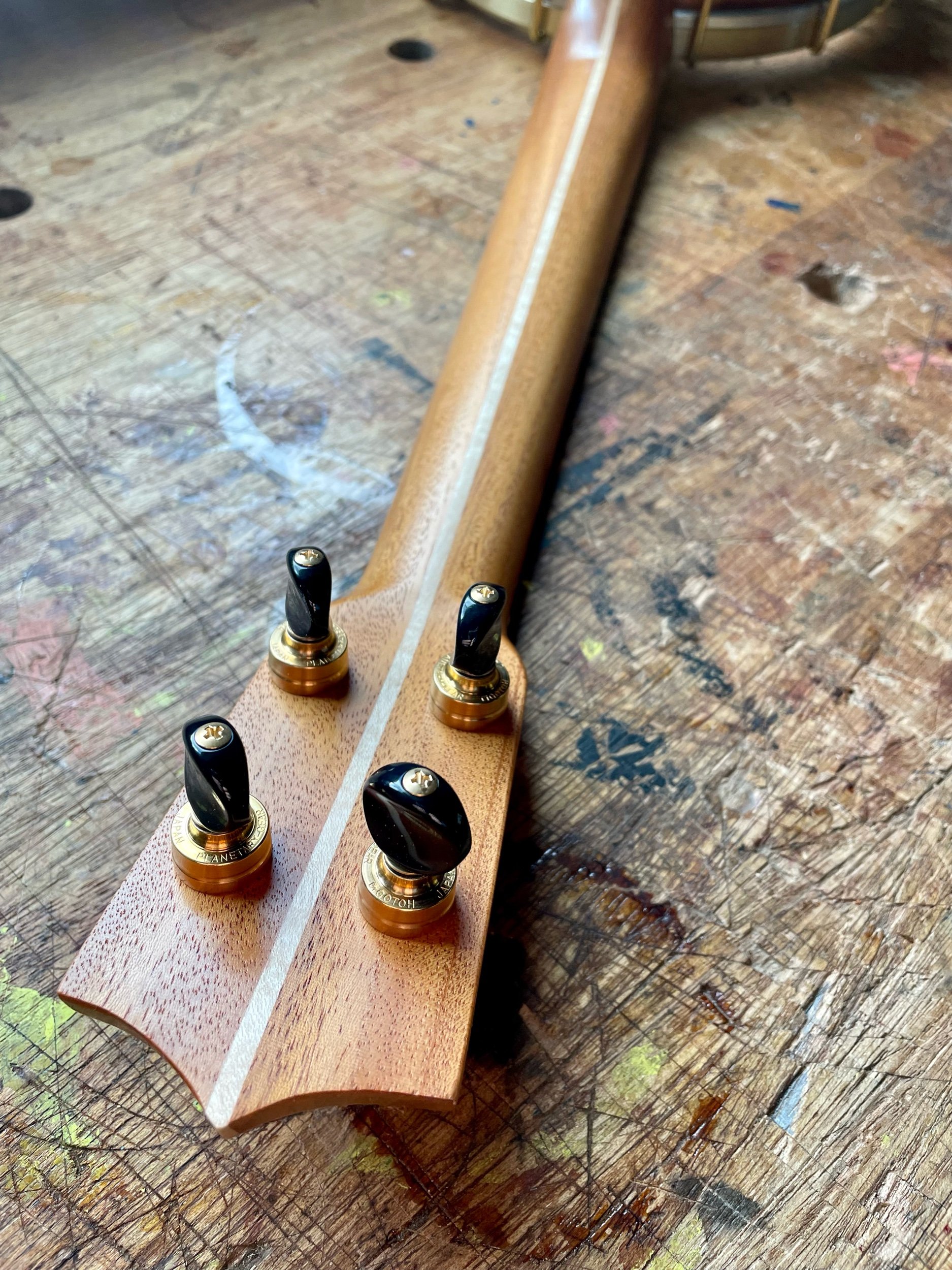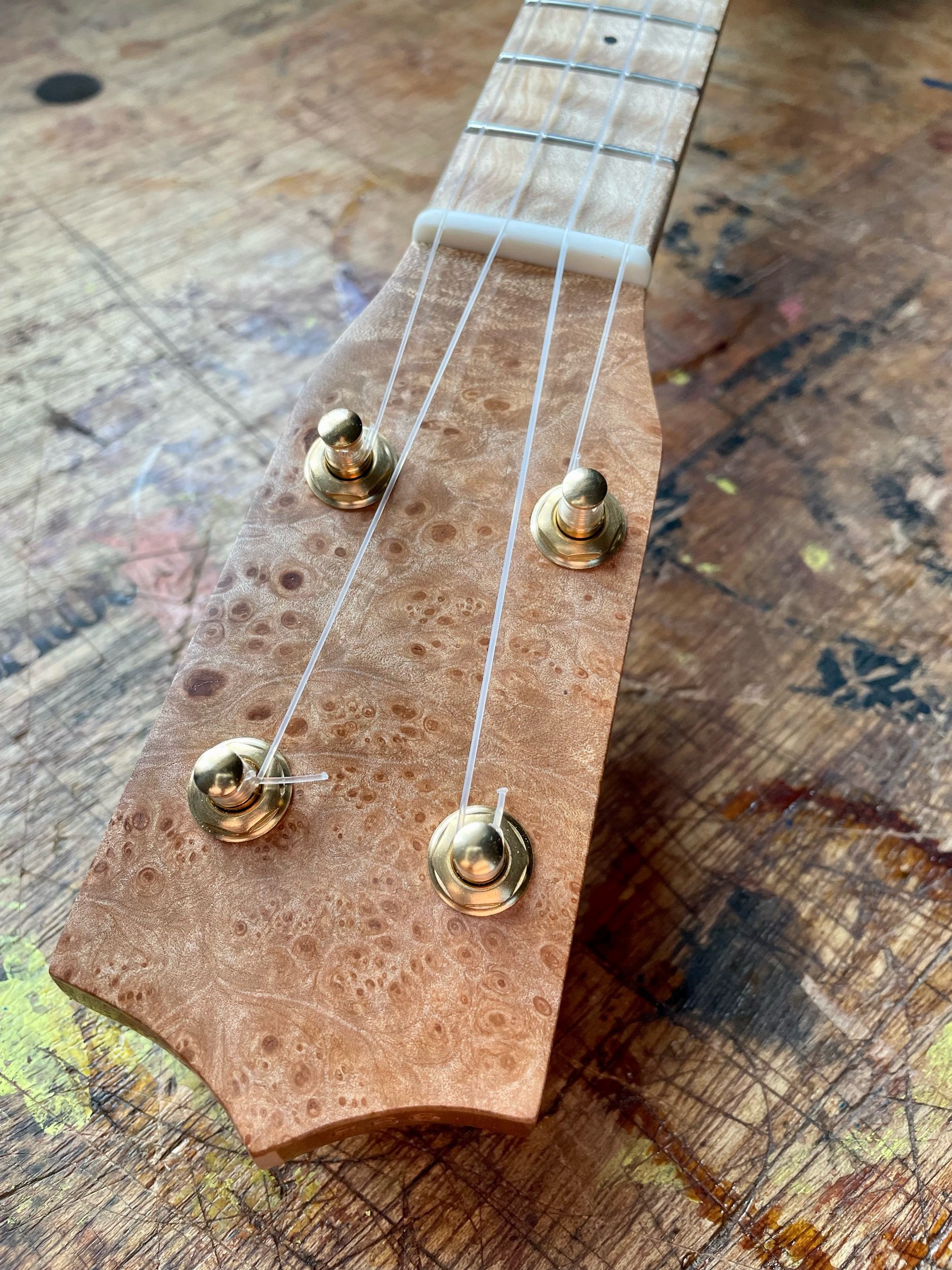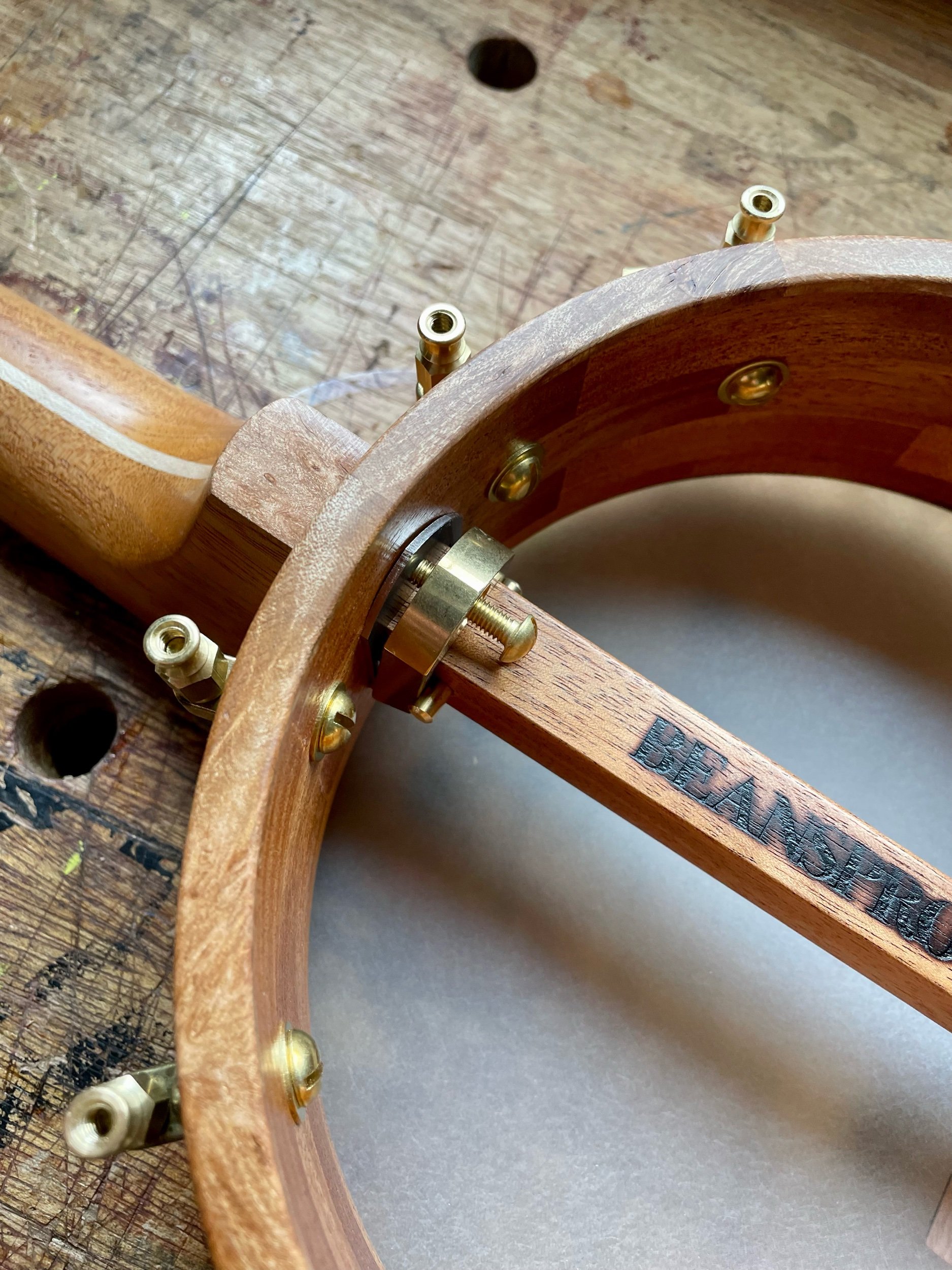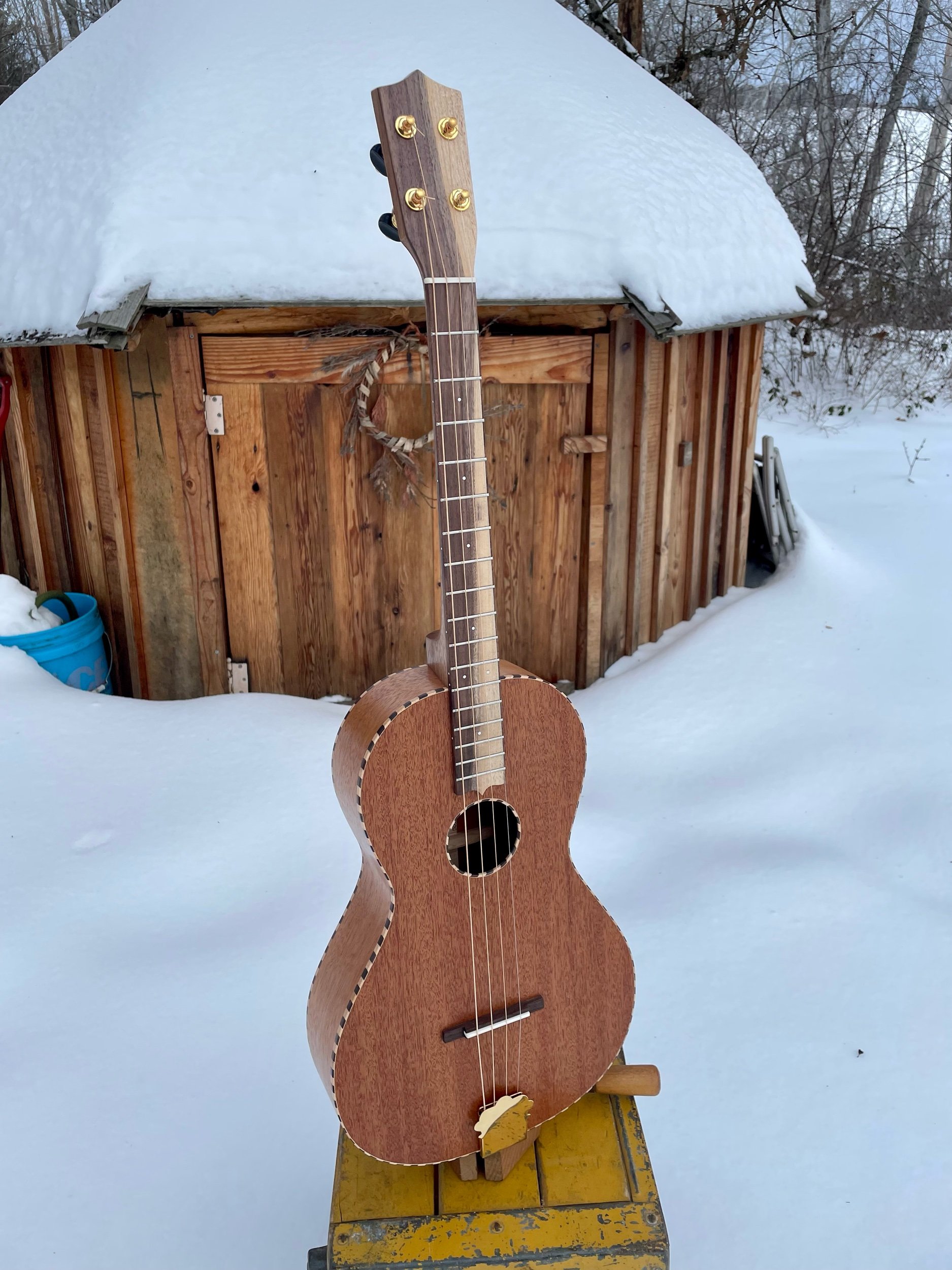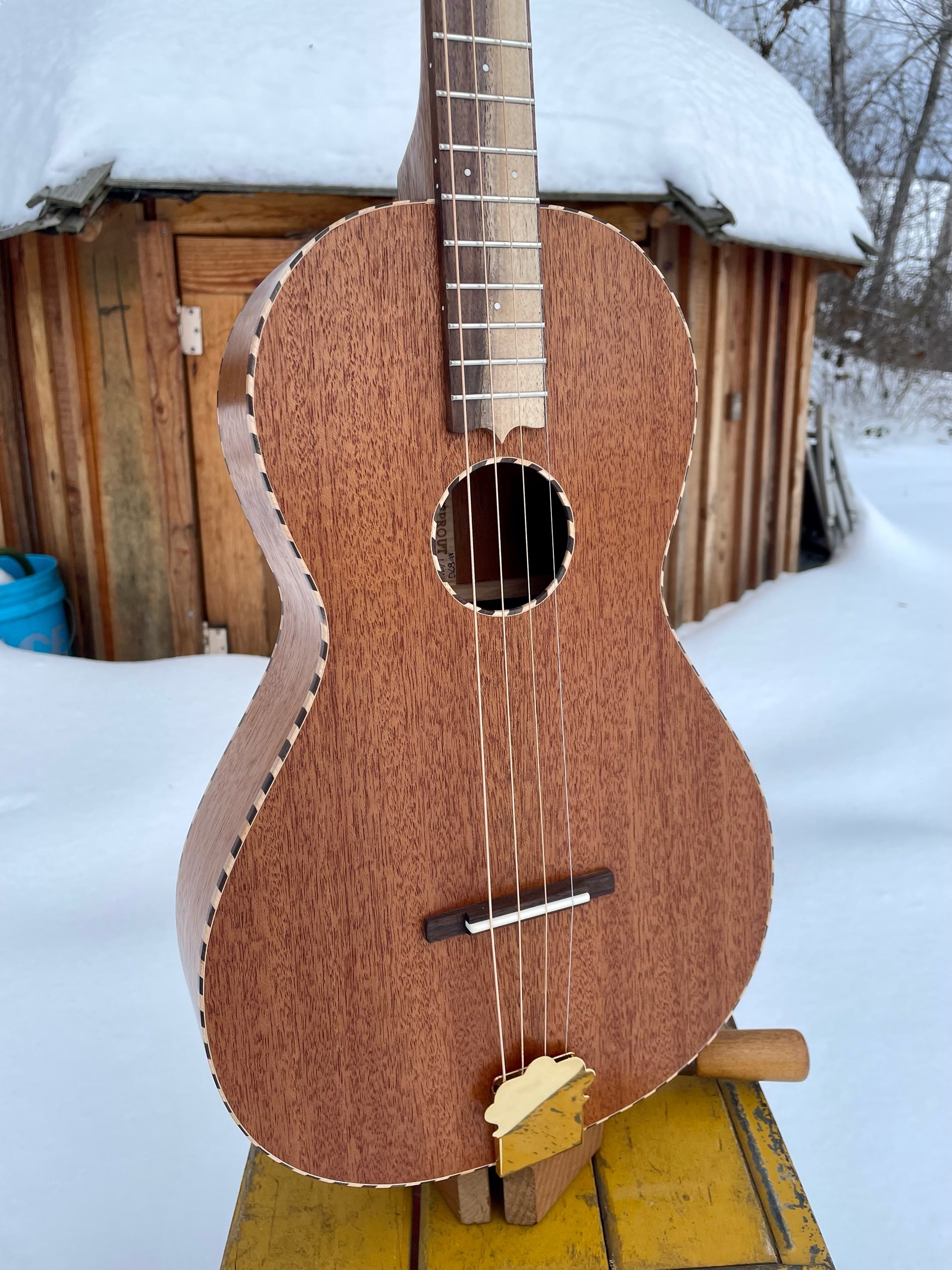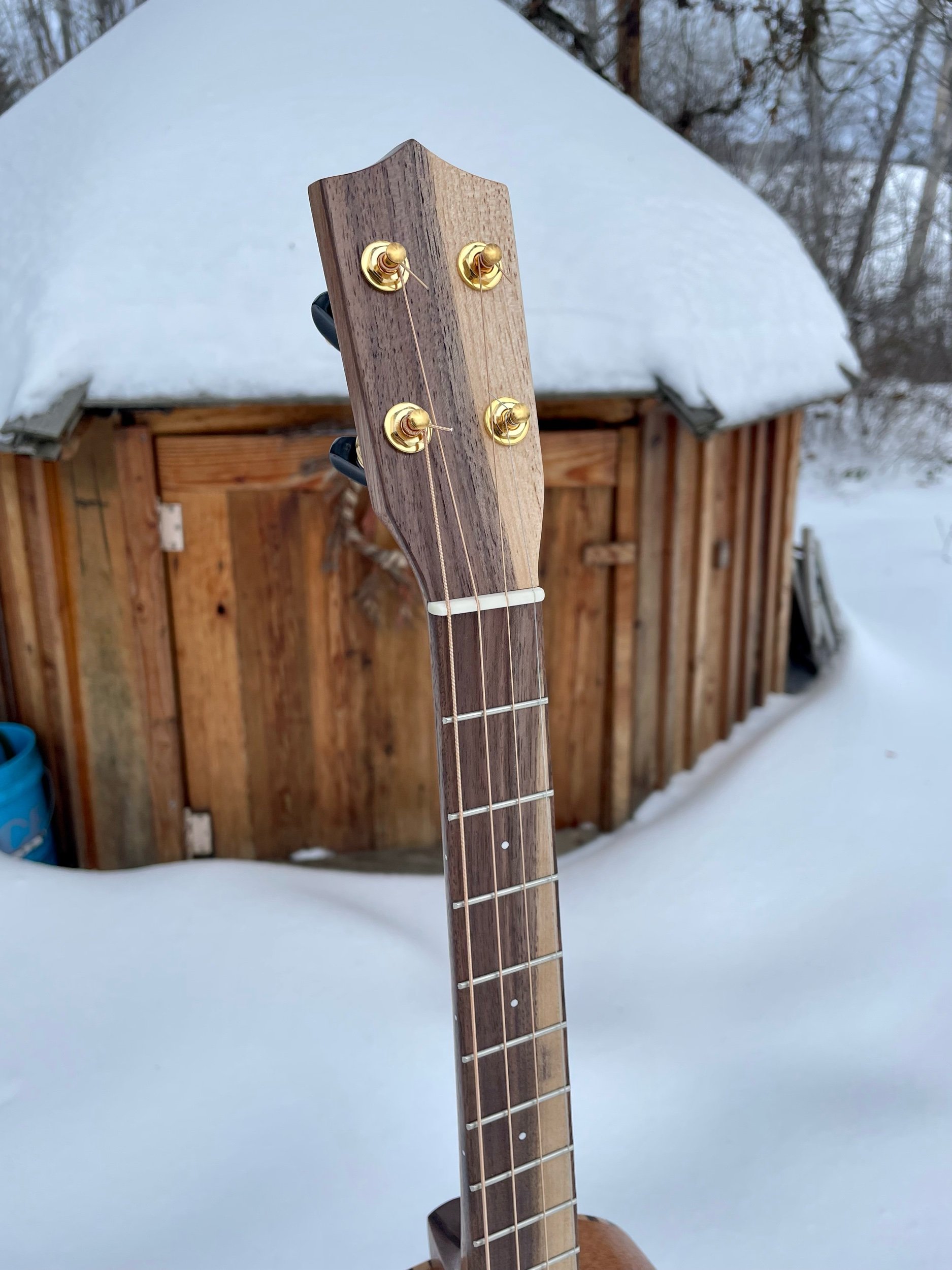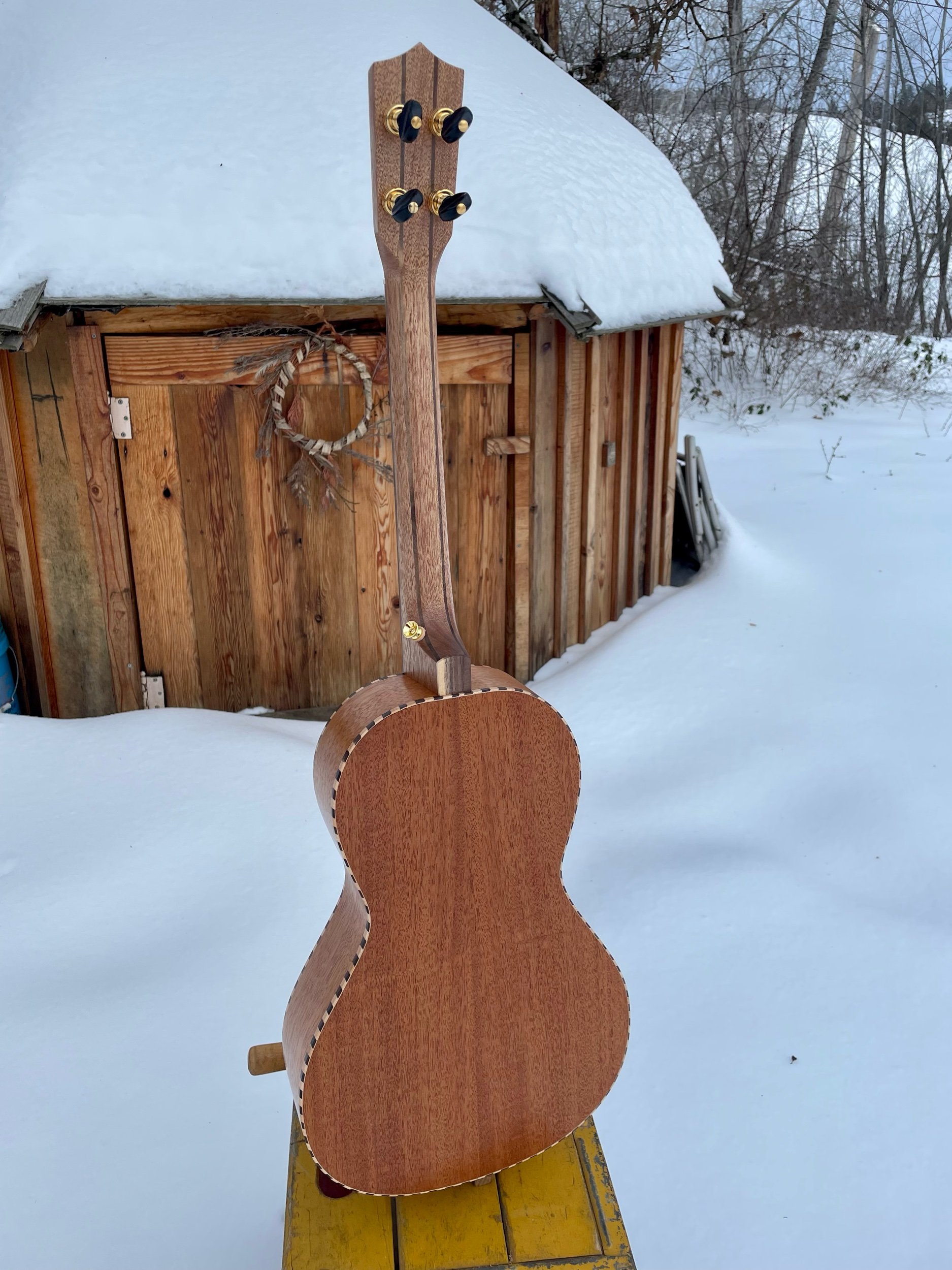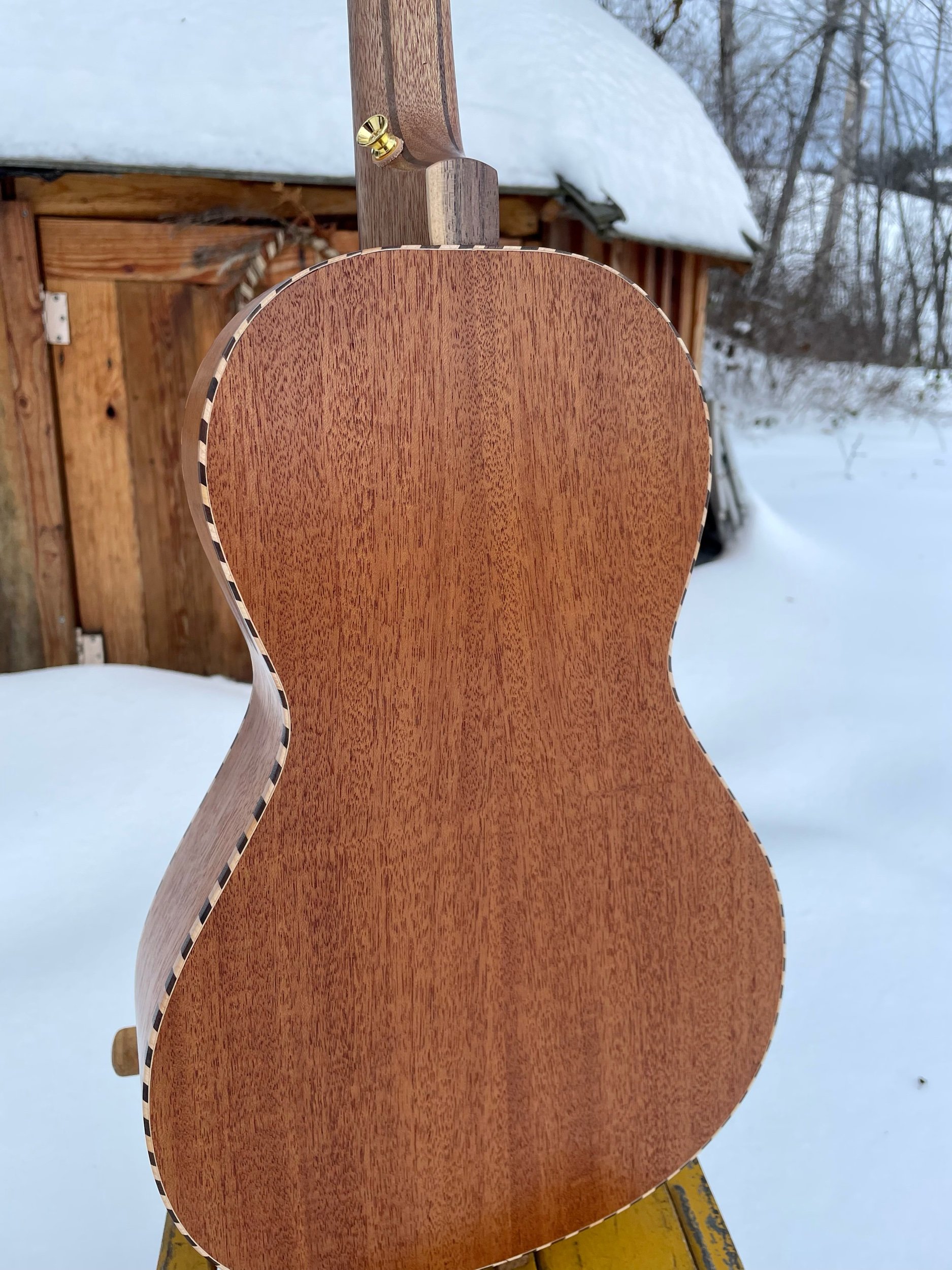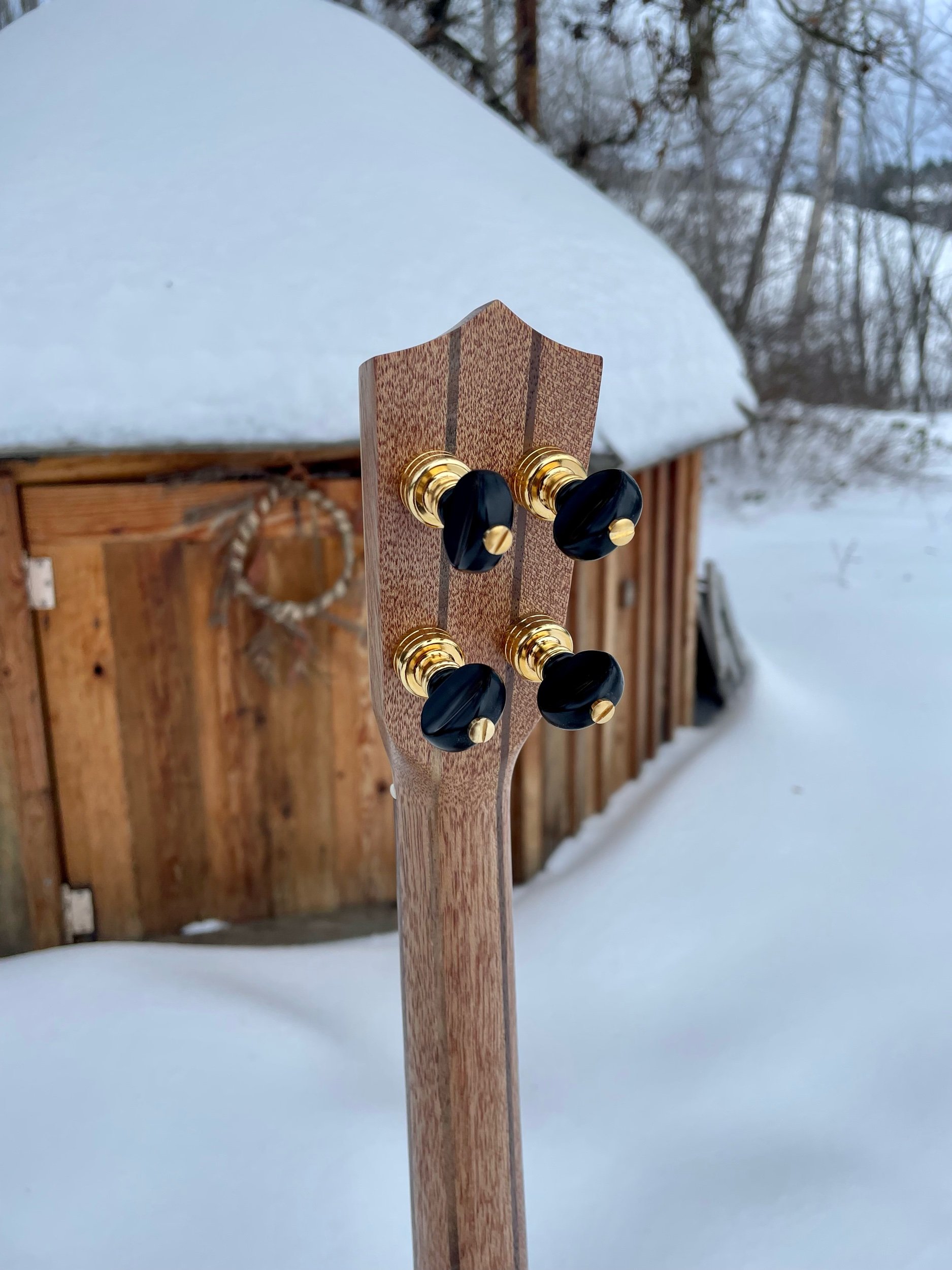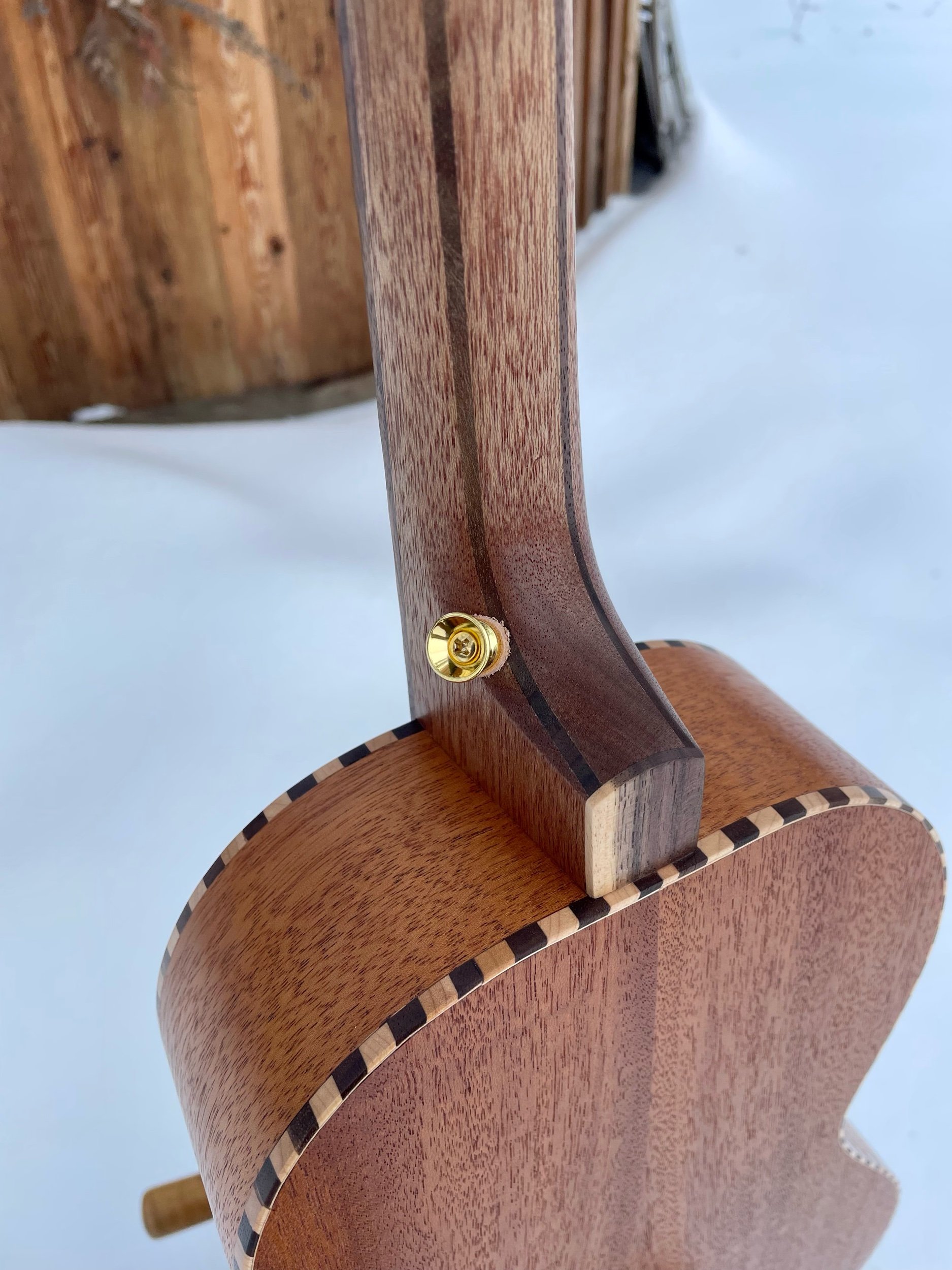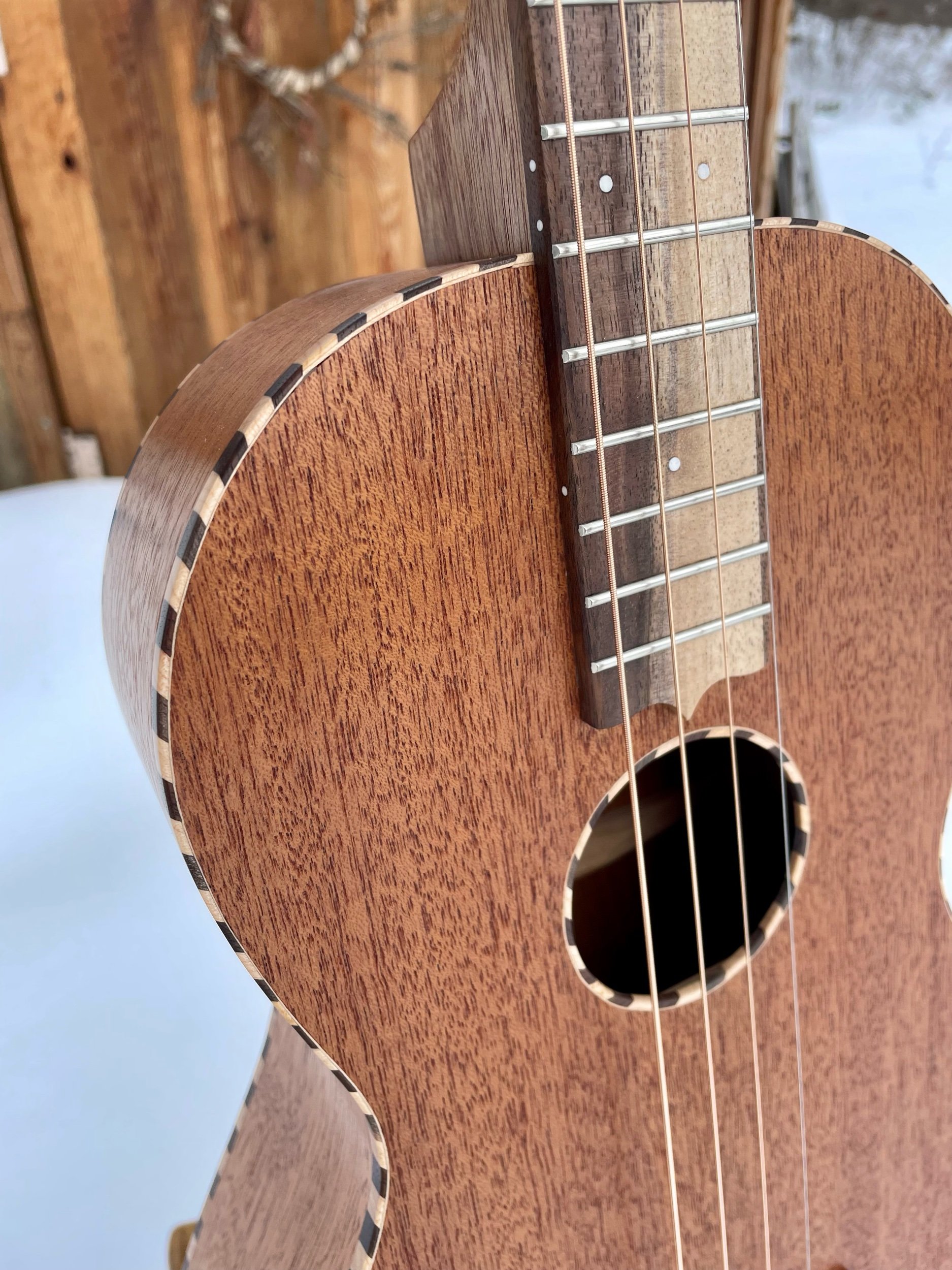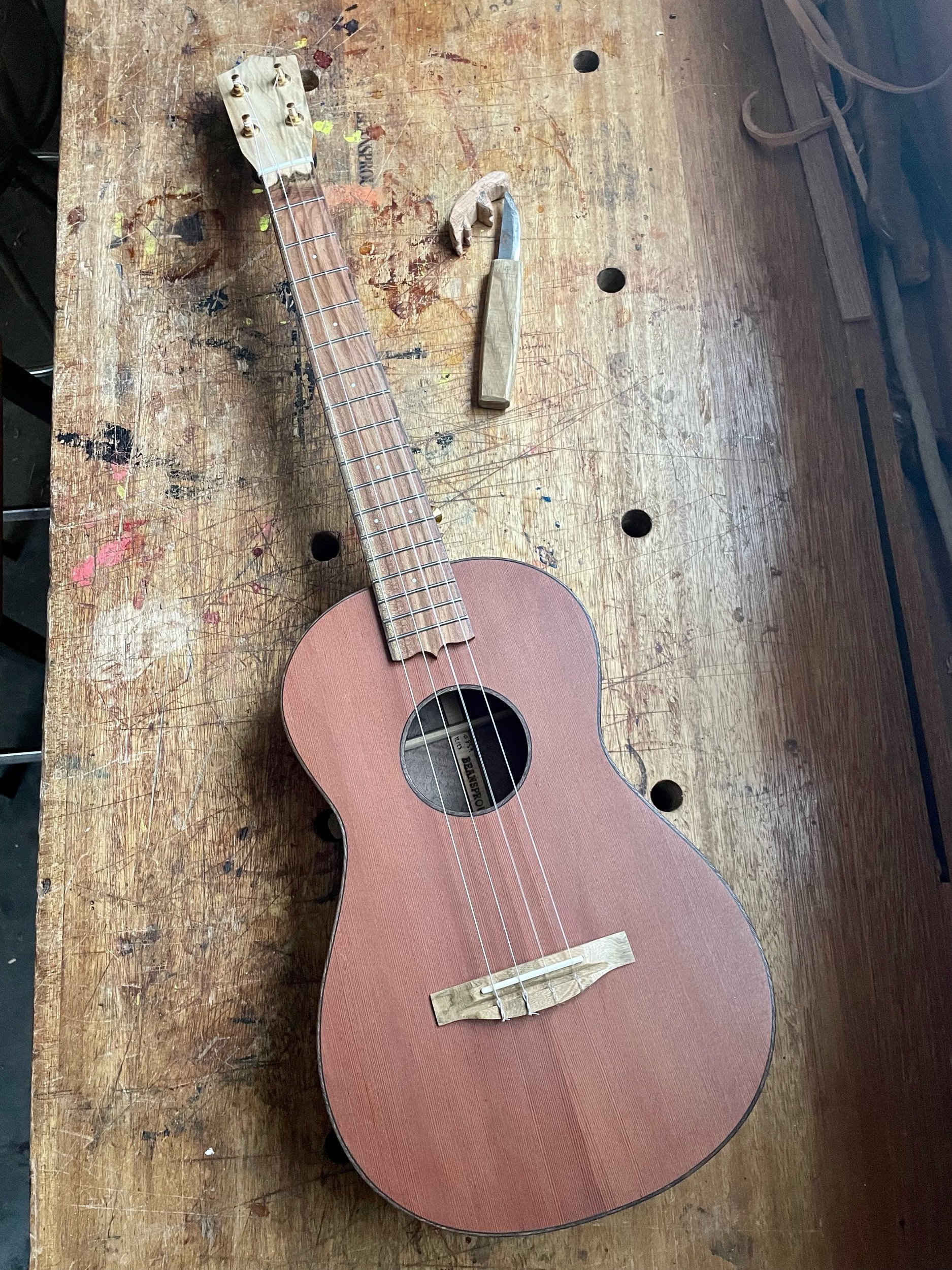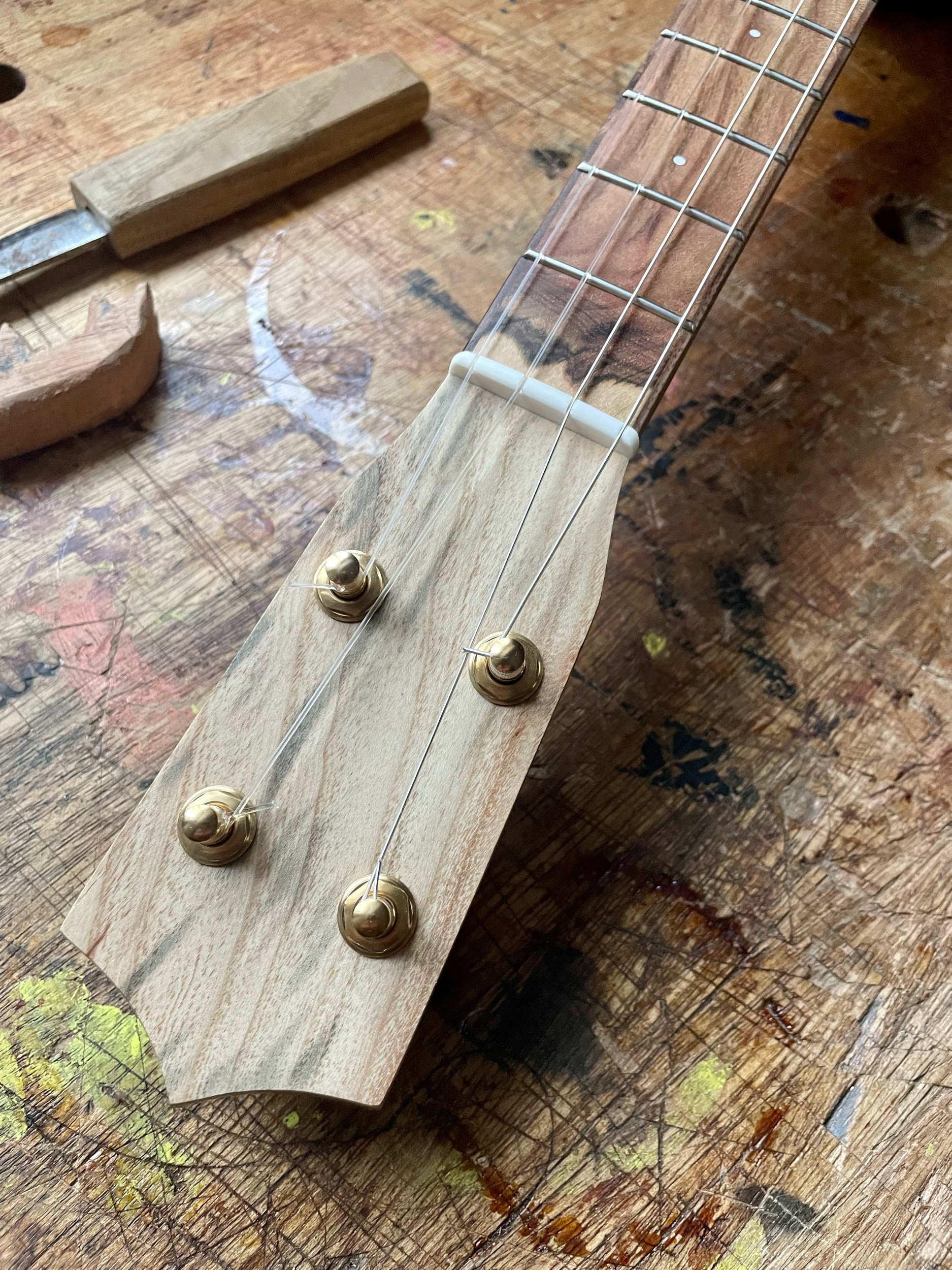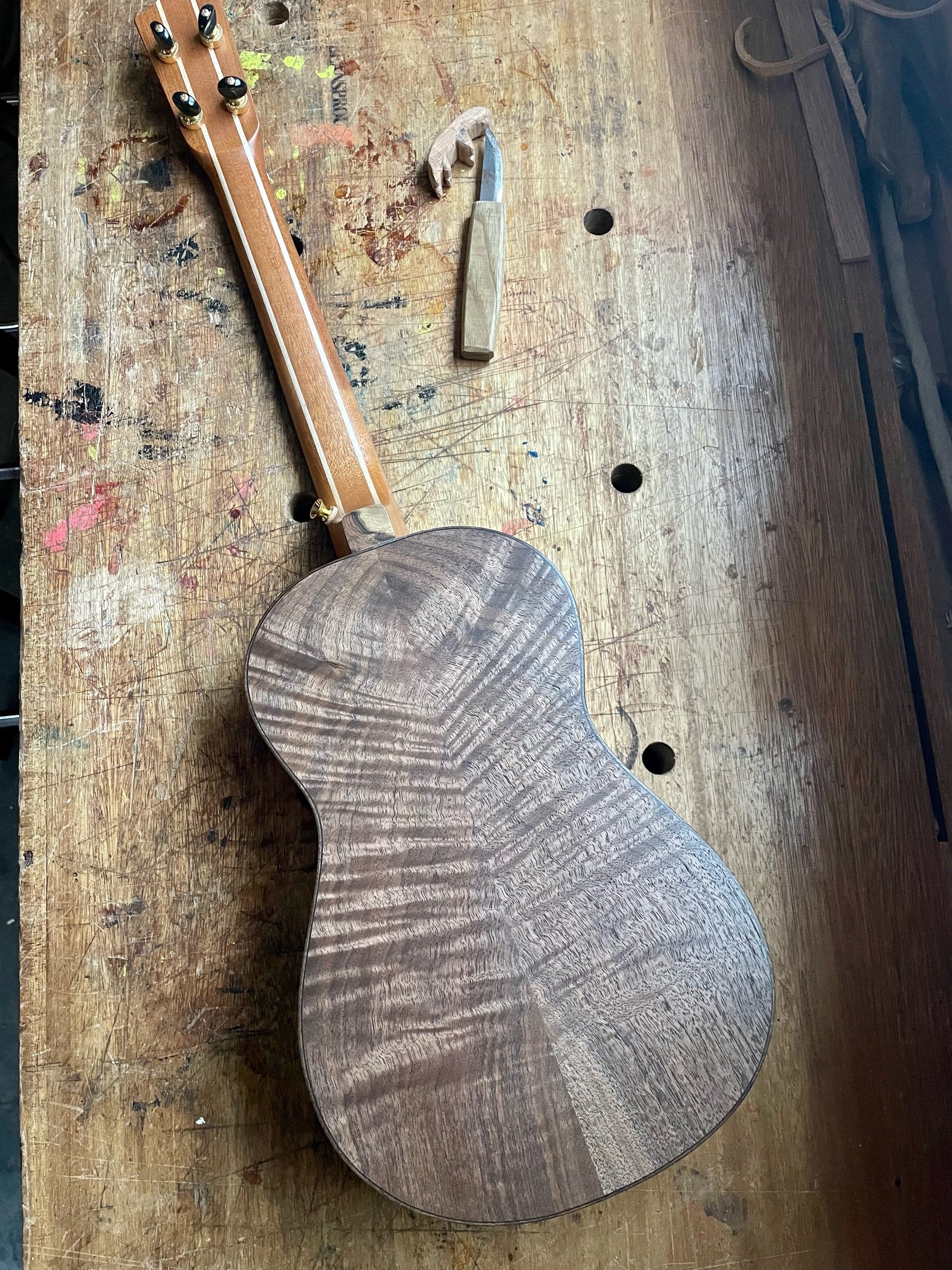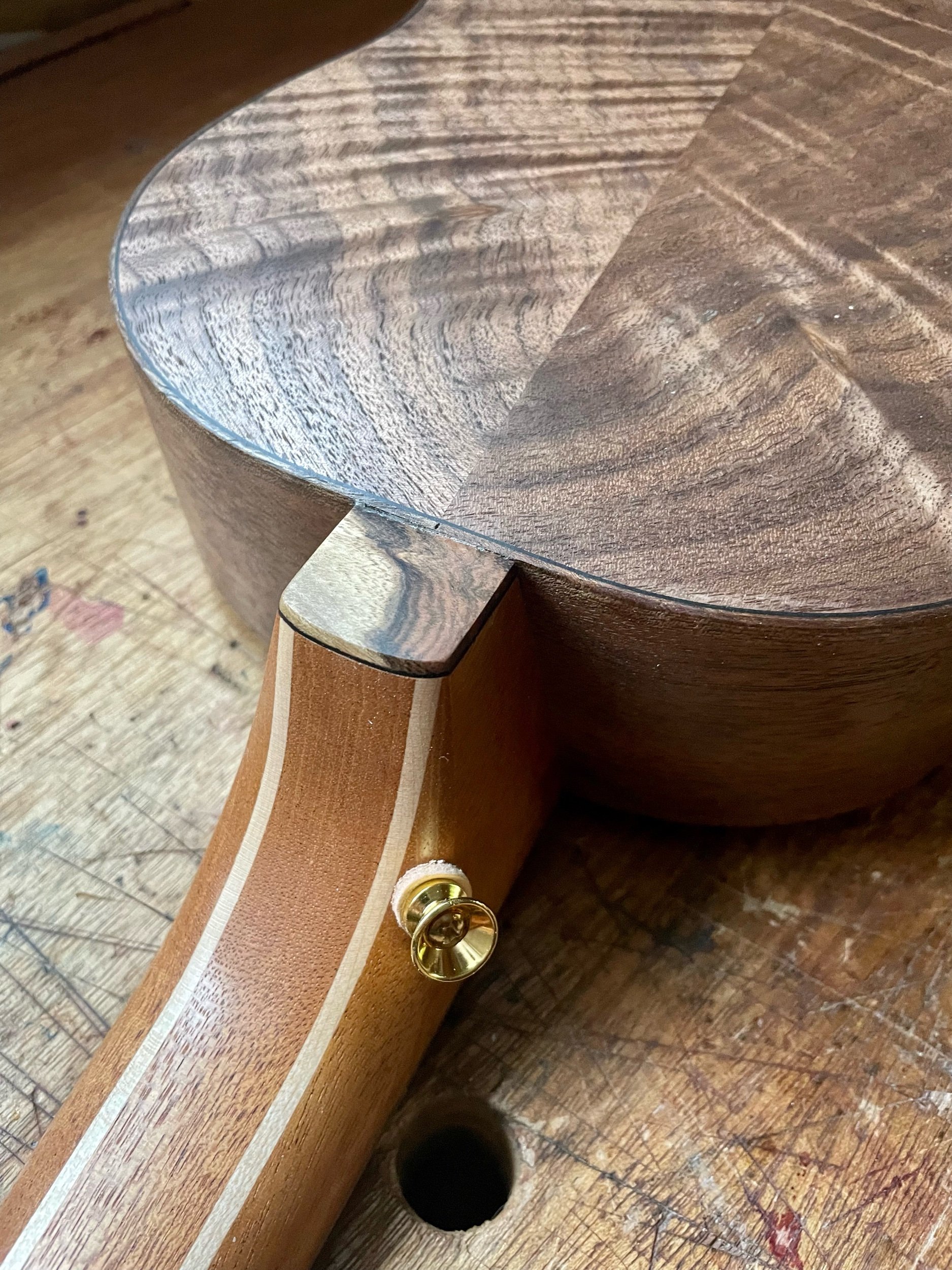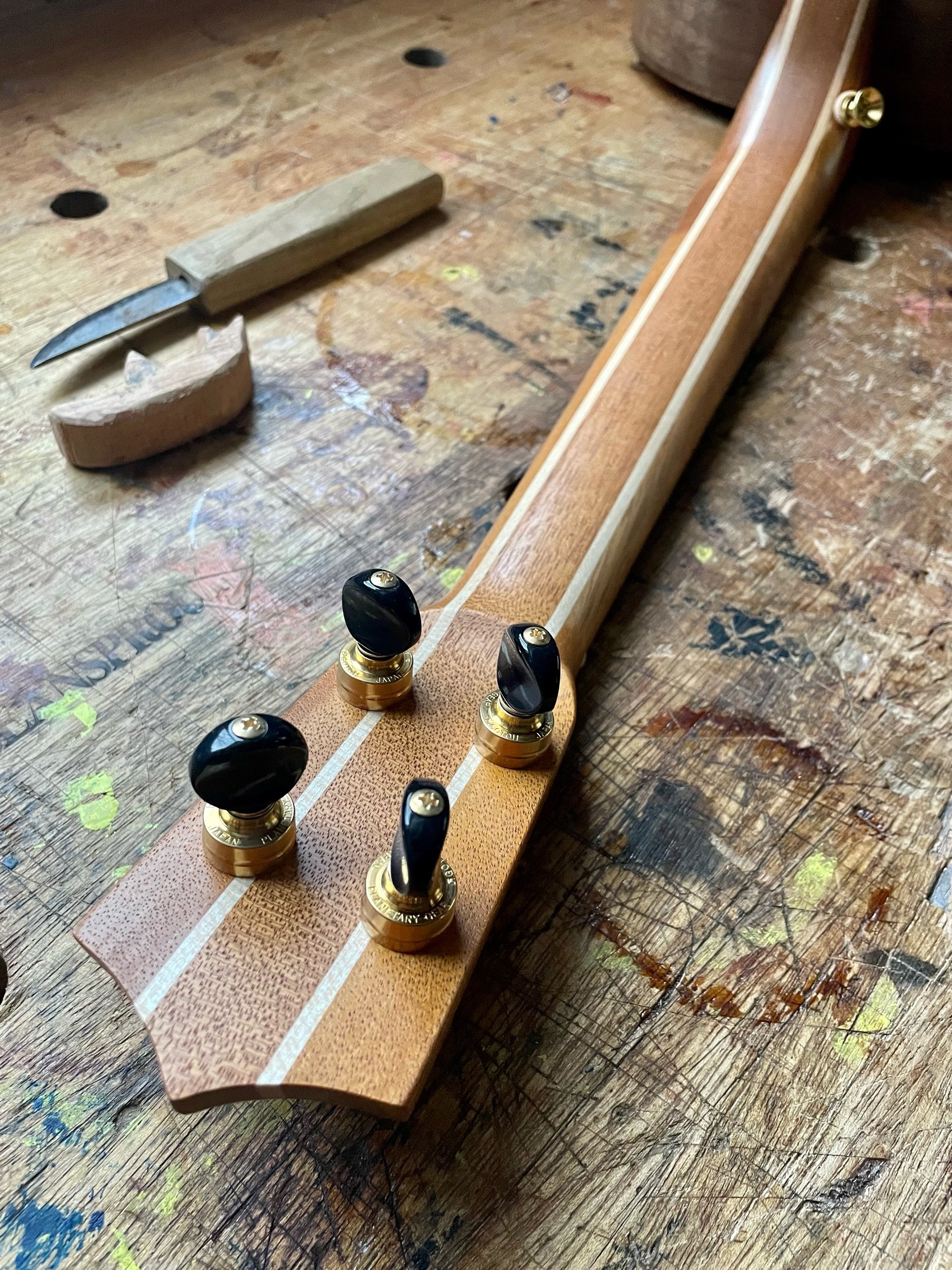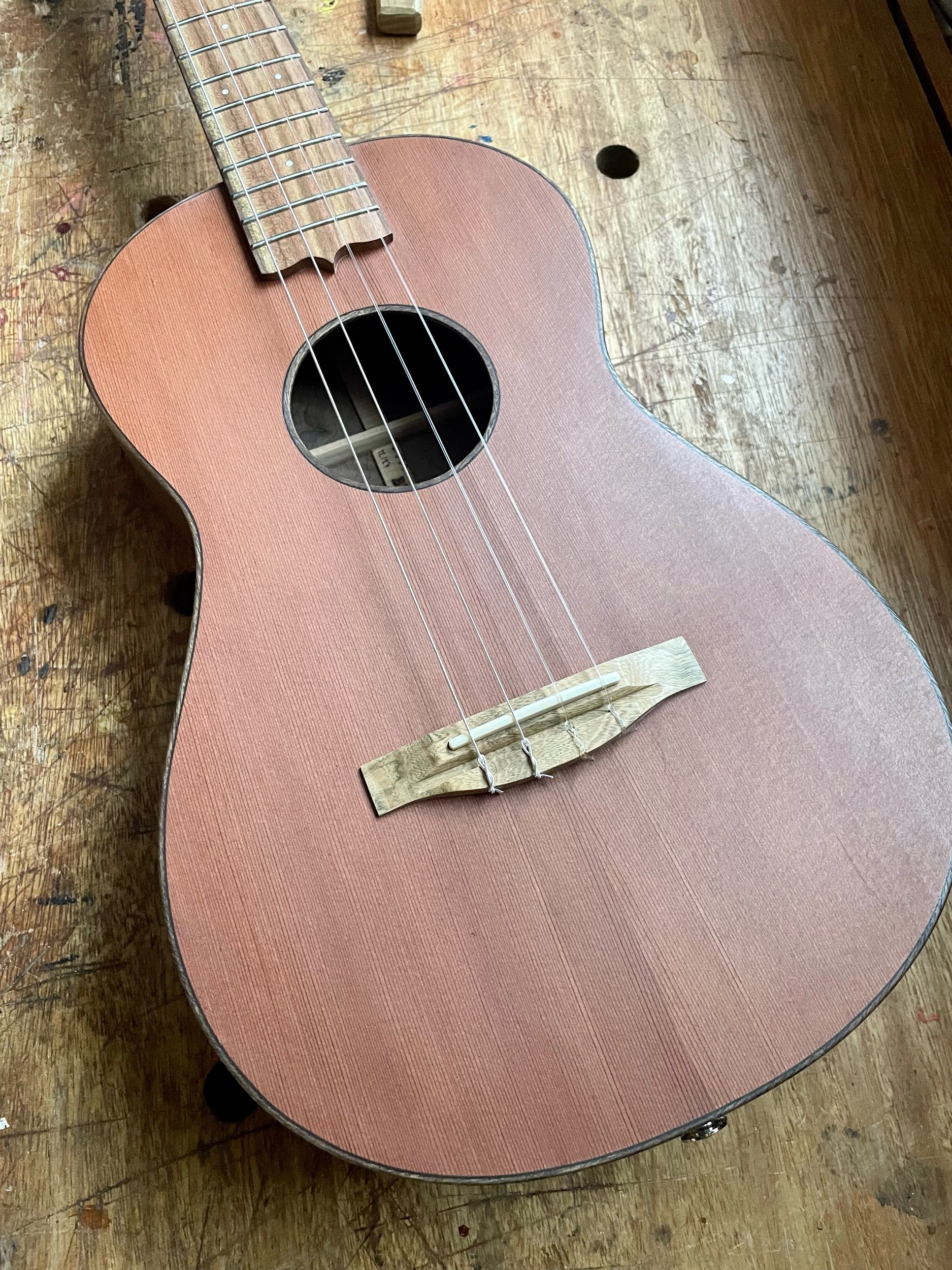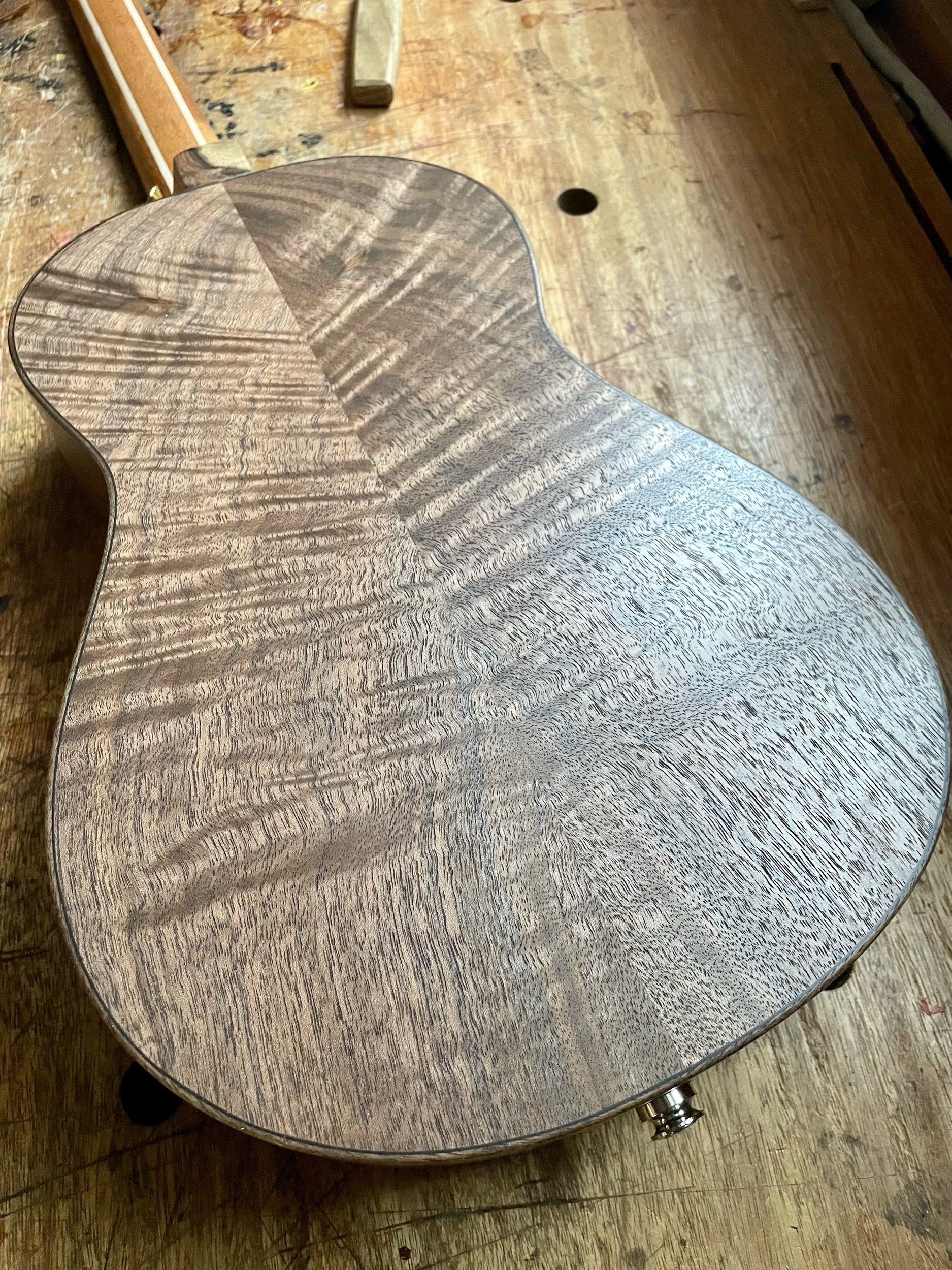This instrument was intended as a tribute to local materials. It started last summer when a friend of a friend took down a run of Willows by the creek. They were giving it all away as firewood, so Henry and I grabbed a truckload. Most of it went into the firewood shed, but I did make a few boards for projects. It seems to work like a soft maple, so I thought I would try it as a stock uke. I used it as the back and sides with a little amber stain to pop the grain. The top is Western Red Cedar salvaged from some old siding. It has a really nice texture and sounds great, as always. The neck is Alder, a very common tree around here, but not one I don’t see milled for lumber very often. I think this piece was a scrap from the Carpenter Ant stash in Portland. The fretboard/headplate/bridge is some local Walnut that I milled a few years ago. To tie it all together, I used curly maple binding and bird’s foot purfling around the top. This uke is coming to music camps with me this spring, if it is available after that we will announce it.
#887- Mastergrade Myrtle Tenor Ukulele
I think this is the fourth instrument I’ve made from this Myrtle tree, harvested near Portland by Epilogue. It has curl and some unique dark coloring that I love. It also has a balanced and vibrant sound, which suits the ukulele well. The neck is from some Alder scrap wood from the Carpenter Ant stash. I’m hoping to find some more Alder in the future, I think it feels great as a neck. The fretboard, headplate, bridge and binding are all Pistachio from California orchards.
#886- Western Red Cedar and Curly Walnut Tenor Guitar
Even though I originally based these tenor guitars off of the old Regal tenor guitars, it really seems like we are in a whole new place now. They have a long sustain, but the front edge of the notes has a banjo like attack. They go from sweet singing to a throaty growl easily, with lots of colors in between. I cant wait to make more. The Cedar for this one is salvaged from siding or paneling. The curly Walnut is from an estate clean out in The Dalles, OR. The Mahogany neck wood is from the Carpenter Ant Stash in Portland. It has steel strings tuned CGDA, geared tuners, bone nut and saddle and a mandolin style tailpiece.
#878- ‘Ulu Alto Ukulele
This instrument started a year ago when we visited luthier Dave Sigman in Hawaii. He sent us off with a set of ‘Ulu, which is also known as breadfruit. You know how much I like using woods that are the by product of feeding people, so I’ve been looking forward to this ever since. It works and looks like old Mahogany, but with a lighter color. It also sounds like Mahogany, but maybe a little more mellow. I made the neck out of Mahogany scraps and the fretboard/headplate/bridge from some Dogwood, both from the Carpenter Ant stash in Portland. We’ve made a donation to Hawaii Foodbank as a part of this sale.
#888- Yellow Cedar and Curly Walnut Baritone Ukulele
If I had to hold up one of my models against any other in the world, it would be the baritone. More than any other, they give me the chills when I string them up. Those first notes are just a hint at its true voice, but sometimes I can just tell when it’s an extra special one. In this case, the Yellow Cedar top is very responsive, with a big dynamic range and lots of detail. The warmth of the Walnut back and sides mellow it just enough. I also love all the multi colored Pistachio on it, which adds some visual interest. The Yellow Cedar is from a log we harvested off the beach at Camp Westwind, in Otis, OR. The back and sides are local to me, salvaged from an estate sale. The neck is Port Orford Cedar and Walnut, from my neighbor’s shop. The Pistachio is from California Orchards.
“I have been playing the uke literally all day. I can’t stop. I just can’t get over the resonance and rich, rich sound that it makes.
I like to hold it and just strum it and feel the note as it lingers and lingers in its body. It responds to both strumming where it can totally dominate a room and it also shines when picking out individual delicate notes. Also... the intonation is spot on. No worries about going up the neck for me!!
The look is to me aesthetically perfect - the curves are just right, and I love the slim depth of the body and the way it tapers slightly as it approaches the neck.
Thank you for making me this work of art.
- C. H. ”
#884- Spruce and Mahogany Tenor Ukulele
A classic design, with a few Beansprout touches, I’m really proud of this one. The customer asked for Englemann Spruce, which stays creamy white over time, compared to Sitka spruce that darkens a bit. The back and sides is African Mahogany from the Carpenter Ant stash in Portland, which is stiff and reflects sound from the Spruce top well. I chose a Spanish Cedar neck and grafted Pistachio fretboard to introduce some more color to the design. Lastly, the customer asked for some shop made rope binding, which is a random layout of 5 different woods. It is light but solid, with a sweet and loud sound.
#882- Curly Cherry and Pistachio Five String Banjo
I really like Cherry for banjos, it’s loud but not harsh, lighter than other hardwoods, has a nice growl to it but sings sweetly. This one has a 12” rim with brass tone ring, synthetic head and non steel strings. A brass arm rest and a K&K pickup are nice additions. The Cherry is from the Carpenter Ant stash in Portland, originally cut for clock cases. The grafted Pistachio is from California orchards. I have been working on a slightly lighter set of strings for these and I’m really pleased with it. Thanks for the order Daniel, happy picking!
#883- Western Red Cedar and Curly Red Oak Soprano Ukulele
I’ve been studying so many early Hawaiian instruments the past two years that my own designs started to look strange to me. It was time to reclaim my soprano in my own mind and Jerry was there with an order at the right time. The top is Western Red Cedar cut from a fence post in Otis, OR. The Oak back and sides are from the Carpenter Ant stash in Portland, originally milled for clock cases. I have plenty of it and I love how it looks and sounds. The Fir neck is salvaged from an old building, full of nail holes and a big knot. Everything else is local Walnut. It’s lightweight, loud and old sounding. It is full of different textures, visually, sonically and to the touch.
#881- Port Orford Cedar and Curly Walnut Tenor Ukulele
Check out that curly Walnut! It’s from a local tree that my friend Chris milled and it looks and sounds fantastic. I paired it with a striped Port Orford Cedar top from the Oregon coast and lots of fancy Pistachio from California orchards. It has a full, loud and balanced sound, suitable for any style.
“Hello Aaron & Nicole,
I received my tenor ukulele late this afternoon, and I’m thrilled to pieces with it. It’s so beautiful and I love the sound. Looks like I’ll be up pretty late bonding with it into the wee hours .
I’ll be looking forward to my baritone next, and know it’ll be an awesome instrument as well.
-C. S. ”
#877- Port Orford Cedar and Curly Myrtle Scout Ukulele
Yeah! Another scout ukulele! Crafted from the scrap bin and ready to make music. Port Orford Cedar top, curly Myrtle back and sides, Cedar neck and Walnut everything else. It has some bird’s foot purfling on the top to dress it up a bit. It’s off to the Scout email list right now.
“Thank you so much for sending me the scout. I love the birdsfoot purfling and this little uke has such a nice warm sound! The backpack case is nearly as impressive as the ukulele! I’m so happy with this purchase!
- W. B. ”
#880- Port Orford Cedar and Walnut Tenor Ukulele
One of my flagship wood combos, Port Orford Cedar and Walnut always sounds great. Bright, rich and deep with plenty of volume. The POC is from my neighbor, a retired flute maker. The walnut is from a local tree, milled by Chris from the Dee Mill. The multi colored pistachio is from California orchards. It’s off to a wonderful customer here in Oregon!
“Hi Nicole and Aaron!
I LOVE her. She sounds so lovely, she looks so beautiful, and she inspires me to be a better musician! It’s going to be the quest of a lifetime to become a worthy custodian of this work of art and craftsmanship. (Her name is Juliet)
I am thoroughly satisfied and wondering how long it’ll take me to save up for my next one.
Best,
M.P.”
This is also the debut season for my new tenor ukulele from @beansproutmusicalinstruments which I could NOT be happier with, and of which I hope to one day be worthy! She's #880, and I love her.
#836- Curly Port Orford Cedar and Curly Maple Tenor Ukulele
This started off as a stock instrument, mainly as an excuse to use this beautiful Port Orford Cedar top. It came from my neighbor, who retired from flute making and sold me some amazing Port Orford Cedar boards. This board includes some strange dark marks that I love but am not able to explain what caused them. Trees have their own agendas, I just get to celebrate what I find. The back and sides are curly maple from a standing dead tree that Ben Bonham harvested and shared with me. It had ants living in the tree, which I think created the black tunnel marks on the back. I decided to contrast the light colored woods with Texas Ebony fretboard/headplate/bridge, including a simple leaf inlay with some wood burning from Nicole. It sounds bright, full, resonant and detailed, ready to make music.
#873- Redwood and Walnut Tenor Guitar
So far I have been pretty conservative about what woods I would use for a tenor guitar. When I work on a new design I like to limit the materials a bit so that the feedback process is more controlled. This allows me to learn faster as I stay focused on a handful of woods. After three years, this is my first step towards a wider tonewood spectrum, with an amazing Redwood top and Walnut back and sides. It really is something else, cheerful, dusty, resonant and responsive. It seems to play louder when I pick softer, which is the opposite of Spruce. The Redwood is an old sinker log from my friend Ben Bonham. The Walnut is a local tree that I milled. The neck is Mahogany and Walnut cabinet maker’s scraps. The Pistachio fretboard is from California orchards.
#872- Curly Walnut Five String Banjo
A Walnut and Pistachio banjo with a 12” rim has become pretty standard around here and I’m proud of it. Not too loud, not too bright, lots of depth, rich sustain and easy to play. We chose curly Walnut from Southern Oregon and Pistachio from California orchards for this build, all from woodfromthewest.com. The customer requested a tribute to Pete Seeger’s famous banjo head, so Nicole hand lettered and colored it. We will be donating to Pete’s Hudson River charity as part of this tribute and I encourage you to click the link and learn more about it. Let’s all “Surround Hate and Force it to Surrender.”
#875- Curly Walnut and Pistachio Tenor Banjo Ukulele
Today, I am feeling very grateful that folks are still asking me to make them things after all this time. The humble banjo uke is what started this journey for me and I’m happy to be still at it. The curly Walnut for this one is from around Medford, OR and the Pistachio for this is from California orchards, both via woodfromthewest.com. I think they pair well together for looks and for tone, with the goat skin head and arm rest completing the design. There is a lot of music hiding in this little friend, go find it!
#874- Spruce and Curly Myrtle Alto Ukulele
The Alto is my all around small ukulele. It is sized in between a soprano and concert, designed to give the best of both worlds for tone and playability. The Spruce for this one is from British Columbia and is one asymmetrical piece. The curly Myrtle back and sides is from the Oregon coast. I used some spalted and multi colored Pistachio for fretboard/headplate/bridge from California orchards. The neck is a lamination of Port Orford Cedar and Walnut. I’m really pleased with the overall color palette and aesthetic of this instrument, it seems organic and peaceful to me. I also like the tone, plenty bright but with long sustain.
“
Hi Aaron -
Oh my gosh - what a sweet uke!! I love the sound - it’s so perky - and has so much personality!!! When I opened it up I could smell the lovely woods you used. It’s visually beautiful as well.
Thank you for being a master uke builder. I will play it - and all 3 of the ukes I have purchased from you - to the best of my ability. They all bring me joy!!
I’m so glad that 2 of my 5 grandchildren (currently ages 11 & 14) both play uke. They will inherit these beautiful instruments when I’m done with them.
All best. Thank you! I’m in love with my sweet alto!
- R. P. ”
Love my Beansprouts!!! All 3 of them!!
#871- Port Orford Cedar and Walnut Tenor Ukulele
This ukulele is for Iwalani, who lives in Washington but grew up in Hawaii. We had the pleasure of meeting her and her daughter when they came to the shop to select wood, and we immediately felt connected! Iwalani has a really nice instrument from Hawaii, but wanted a local instrument built just for her. She asked for a rich and deep sound that was still loud enough to be heard in a group and while teaching. I think Port Orford Cedar and Walnut was a good choice. She wanted to pay tribute to her daughters with an inlay, so we used a Tahitian Gardenia with a star in the middle of it. I cut out the maple inlay and Nicole wood burned the details. The POC is from the Oregon coast, the Walnut is from a local tree and the Fir neck is salvaged from an old floor joist.
#866- Mahogany and Maple Tenor Banjo Ukulele
“Thank you!
I really like what you two are doing with Beansprout. I’ve followed Aaron’s builds for many years now and looked forward to the day a ukulele from you all would arrive at my door. I’ve been playing a lot of clawhammer lately and that gave me the excuse I needed to finally reach out regarding an instrument. It was a thrill to be involved in planning the build and a ton of fun today to open the case on a beautiful instrument with a great sound and perfect craftsmanship.
All the very best!
- J. D. ”
#870- Mahogany Tenor Guitar
Making things is a hard business. You have to follow your heart/brain/body as it leads you to design. Next you have to stick to the plan as you try to make it. When it’s ready you have to confidently try to market it. You also have to be ready to tweak it to follow what customers need, even if you didn’t imagine it that way.
That happened to me with the mini five string banjo, with 90% of the customers asking for a tuning/stringing that I didn’t think would work. I was wrong about that, but quickly pivoted when I figured it out. This little tenor guitar design has also proven to be more versatile than I imagined, sounding great in a wide range of tunings. In this case, it is gdae, an octave below mandolin. It rumbles and purrs but remains sweet and shimmery. I love how it sounds and feels.
The Mahogany was rescued from a Tacoma boat shop. The Walnut fretboard/headplate/bridge is from a local tree. The maple/walnut rope binding was made by me. The brass hardware is a classy touch, I think. This is off to our friend Sharon in Eastern Oregon.
“I love my new tenor guitar from Aaron. The sound is much louder than I imagined and I am heard across the room in a jam session which surprised me and others. With a shoulder replacement I am able to reach across the lower bout which I cannot do with my Martin and Harmony tenors. I am a bass player who, during medical difficulties, was replaced in jams and a band. Totally bereft, I got Aaron to build me a tenor guitar and I am so happy he helped me find a way to enjoy music again! Thanks, Aaron.
- S. P. ”
#859- Redwood and Curly Walnut Baritone Ukulele
Nicole reminded me today that our baritone model might be our best design. They just always sound good. I don’t want to disparage anything else we make, but the baritones are nice. This combination of redwood and walnut has been popular lately and I can see why. It’s dark and rich but also detailed and articulate. This some very old sinker Redwood that our friend Ben Bonham brought over to resaw. The curly Wanut back and sides were sourced from a builder’s estate sale in The Dalles. The Mahogany for the neck came from the Carpenter Ant stash in Portland. I picked some grafted Pistachio from California orchards to finish it off.

